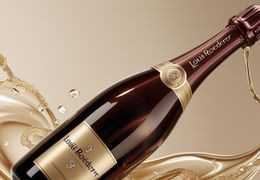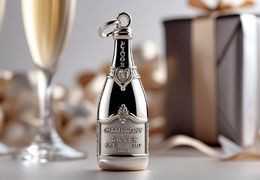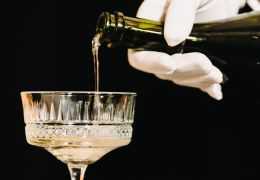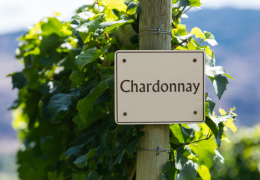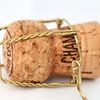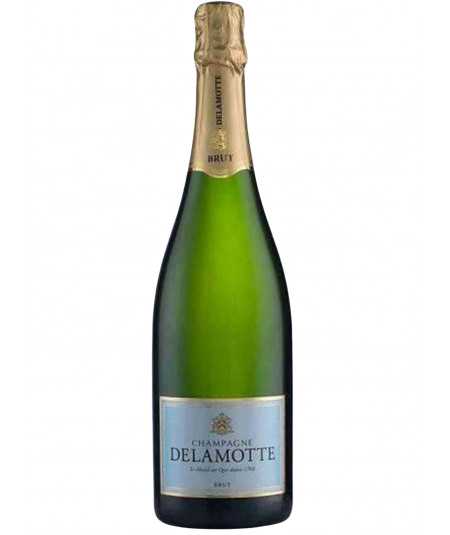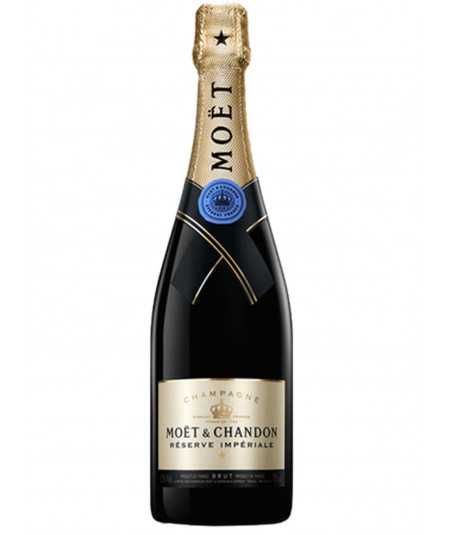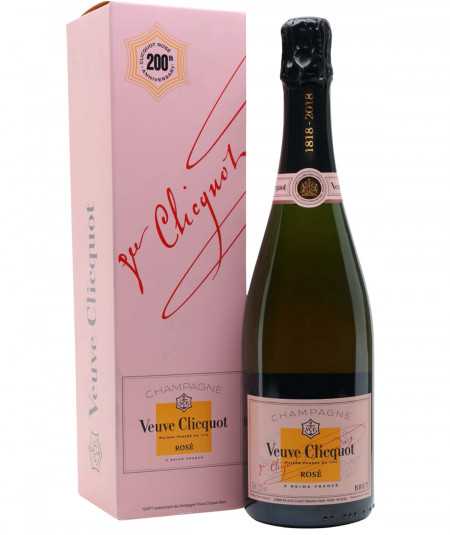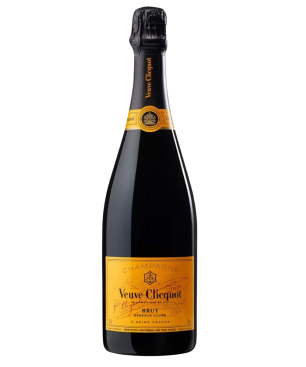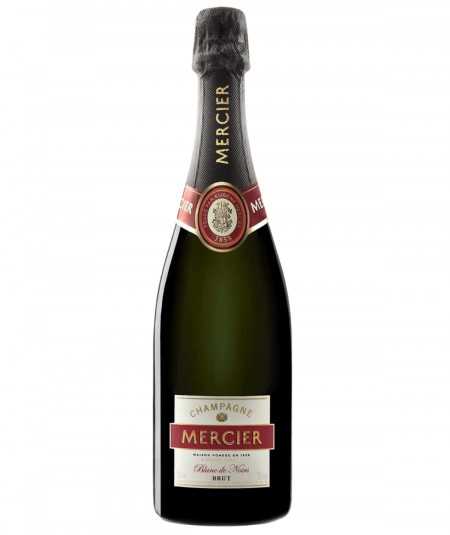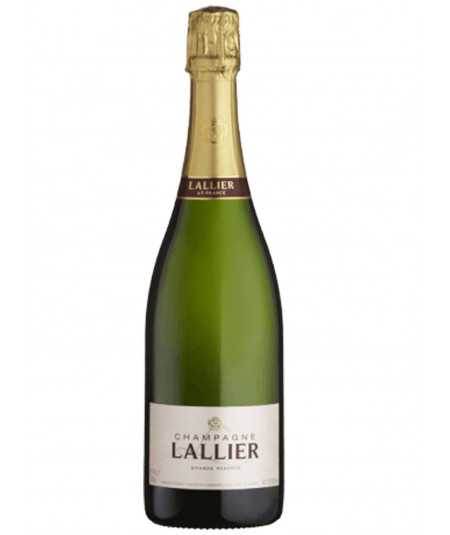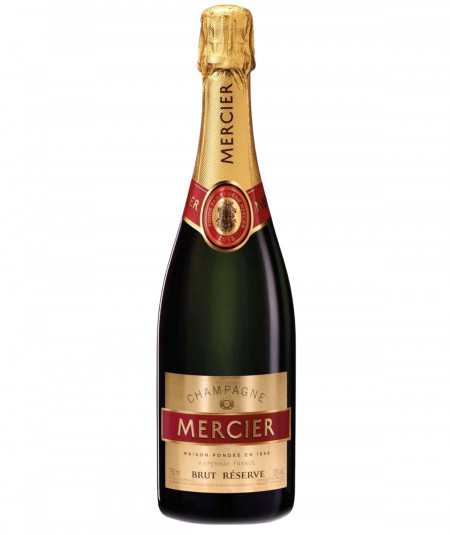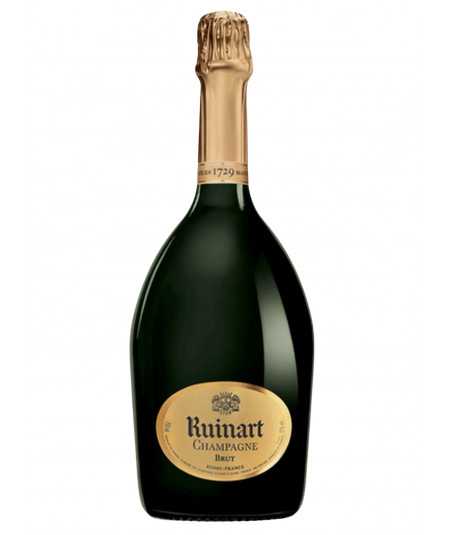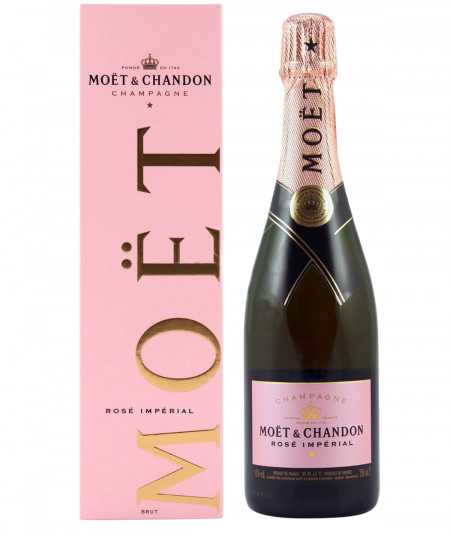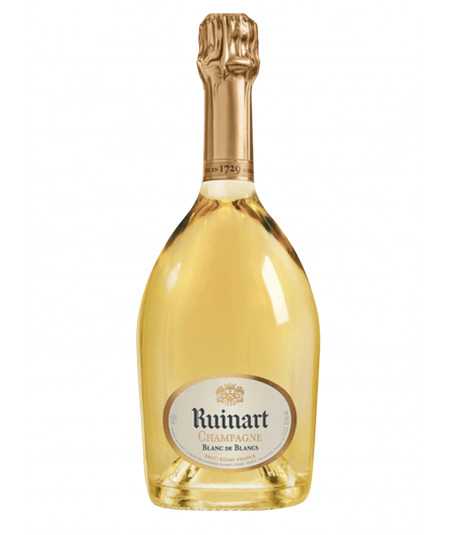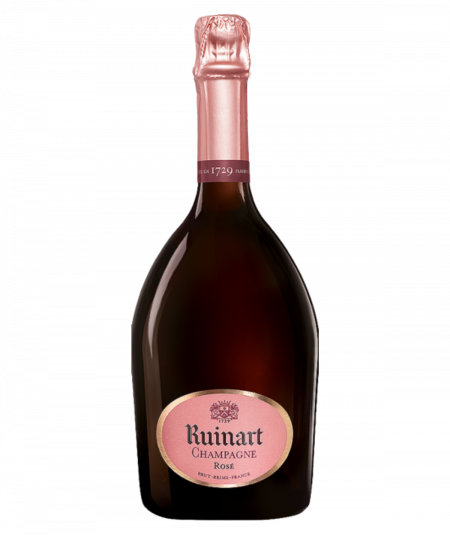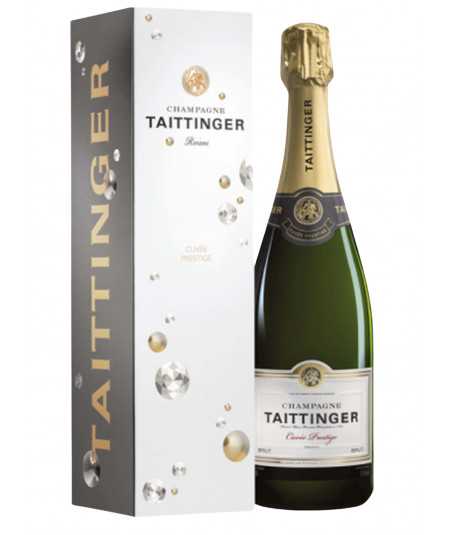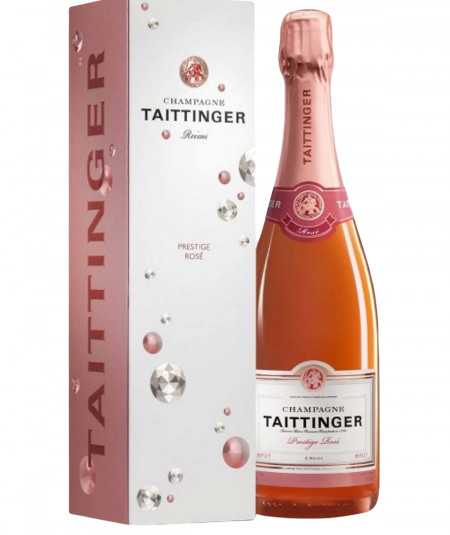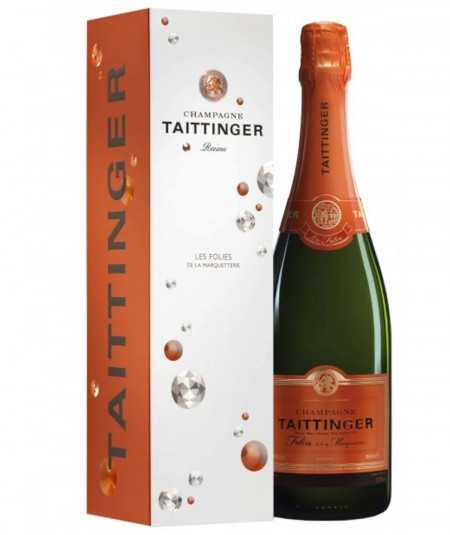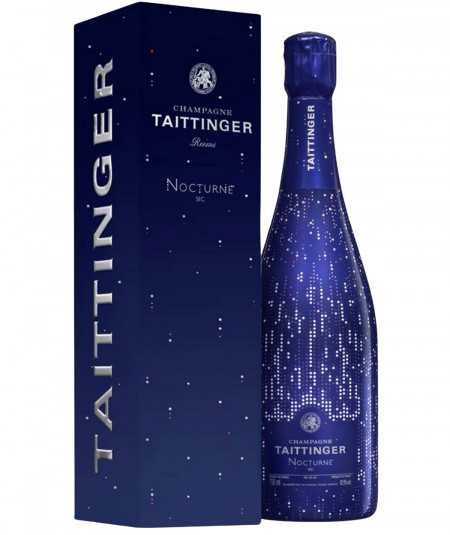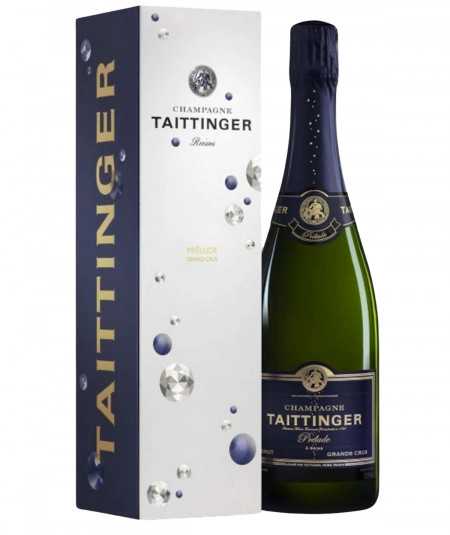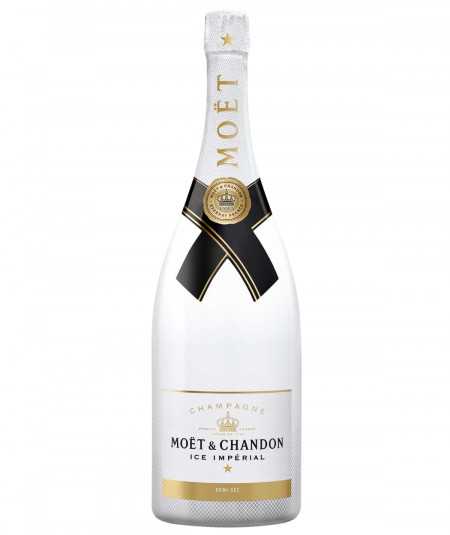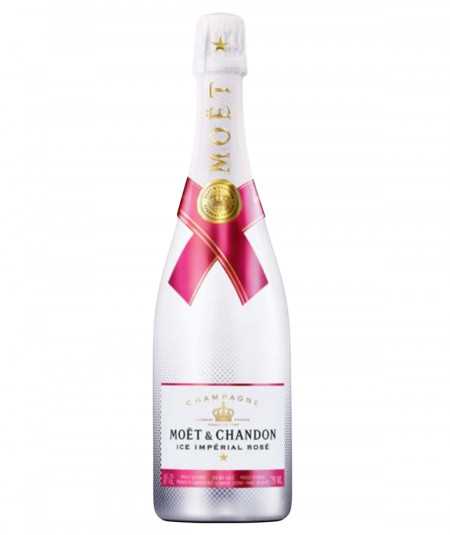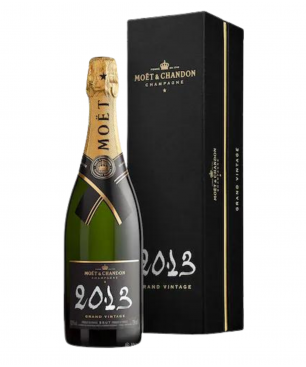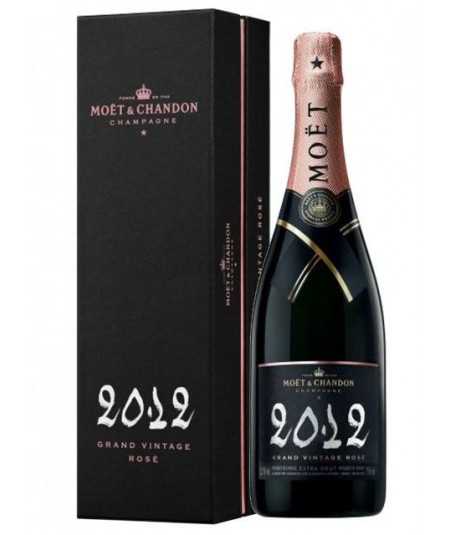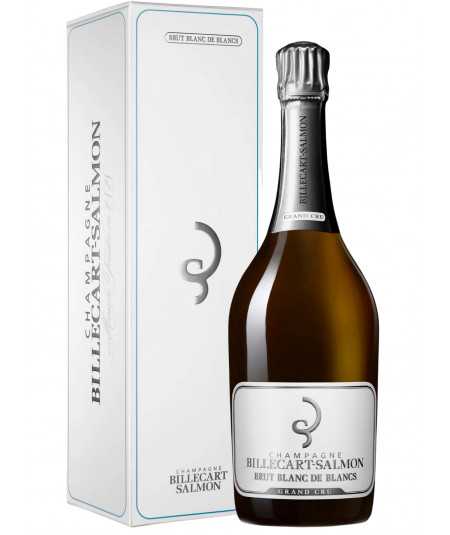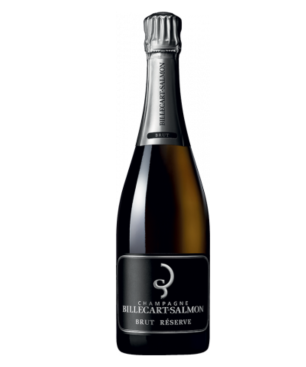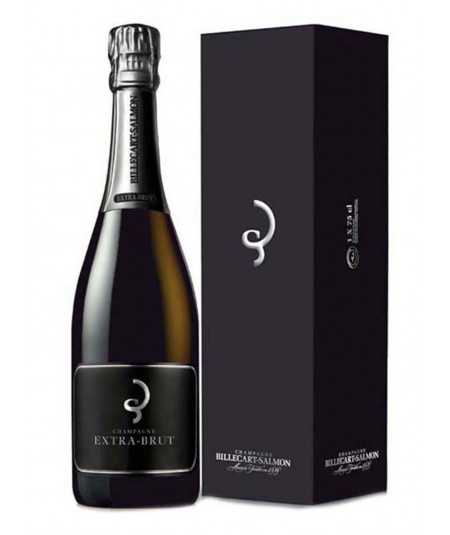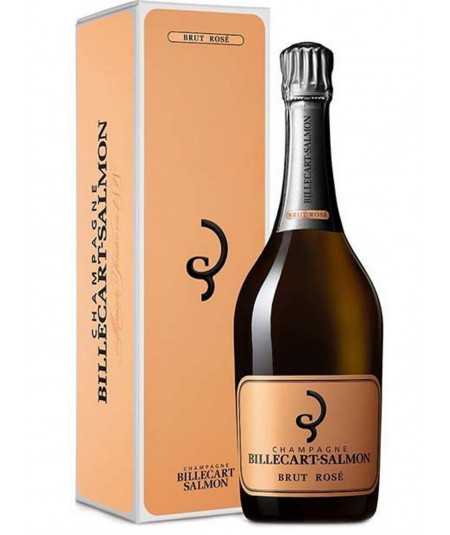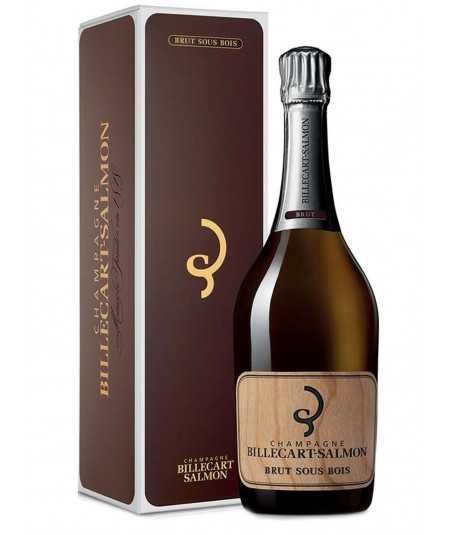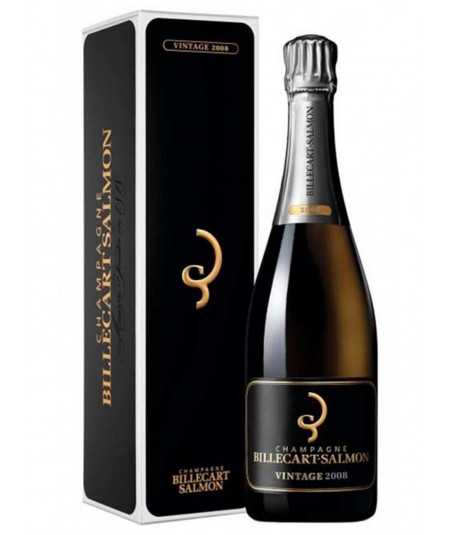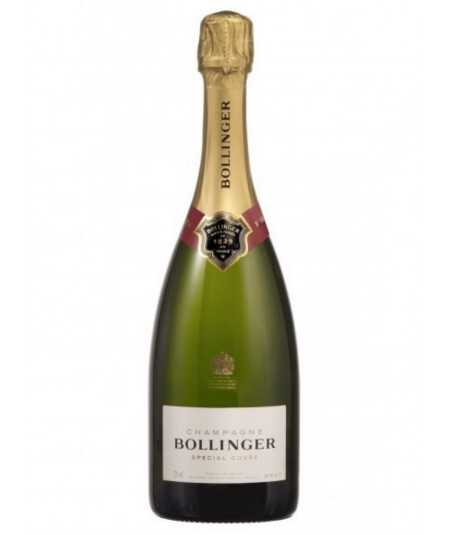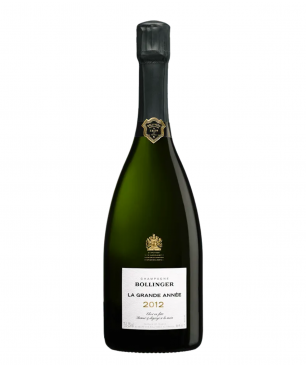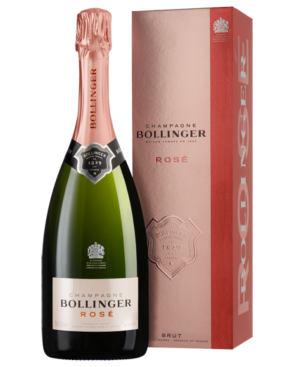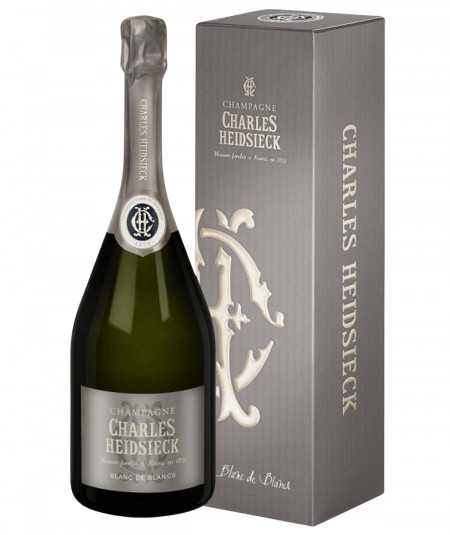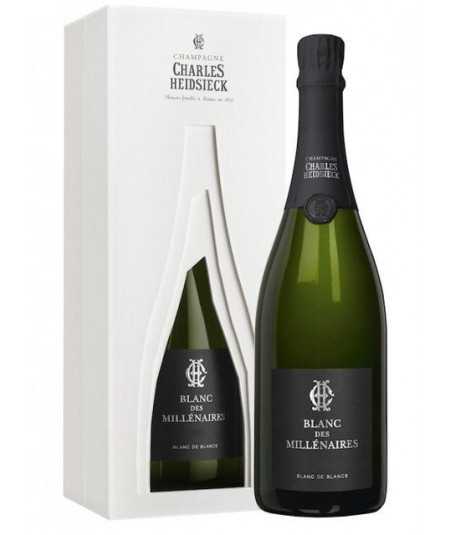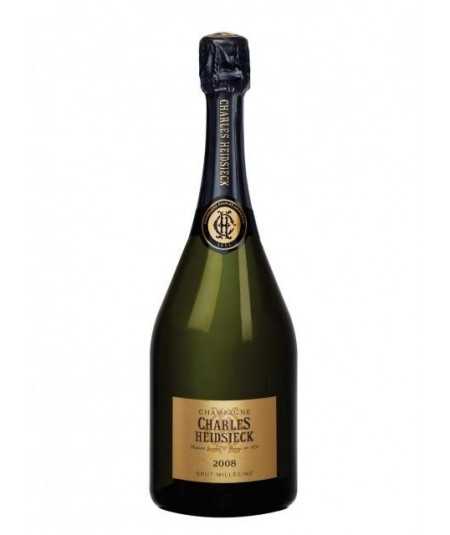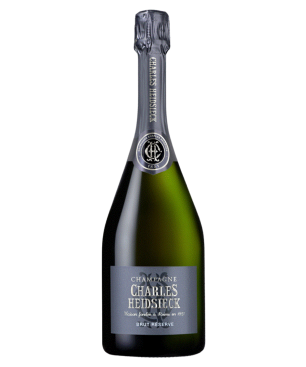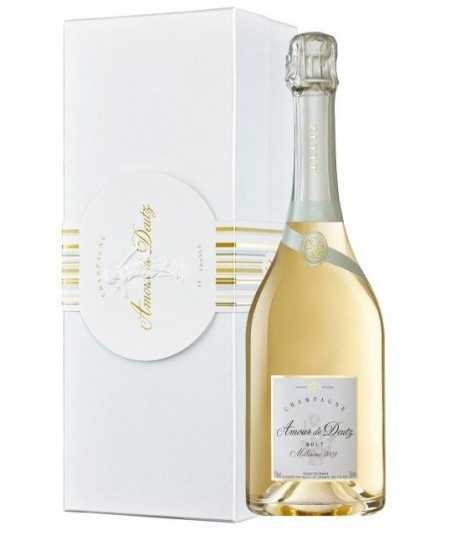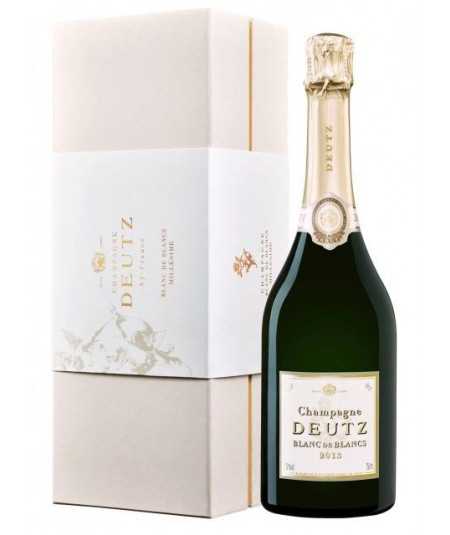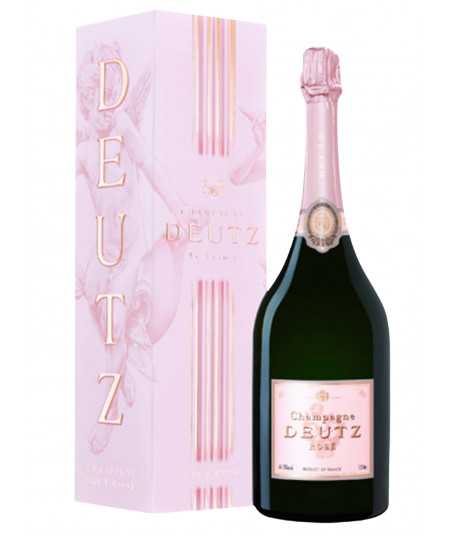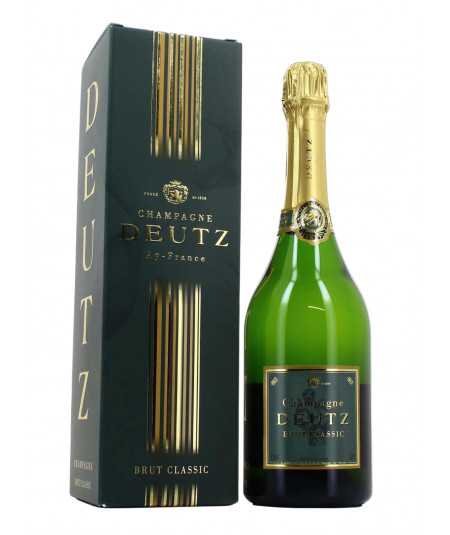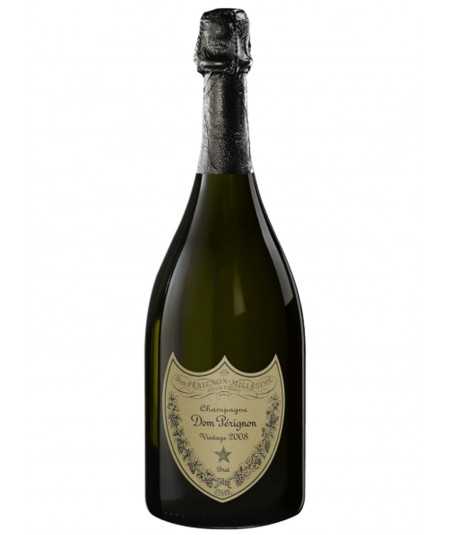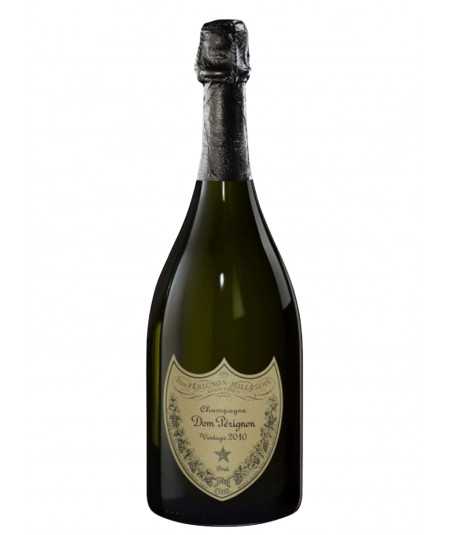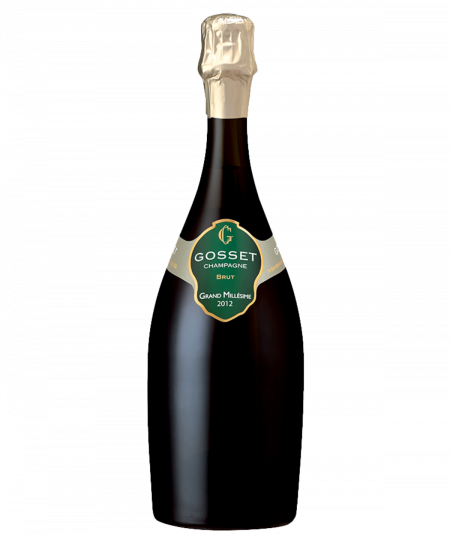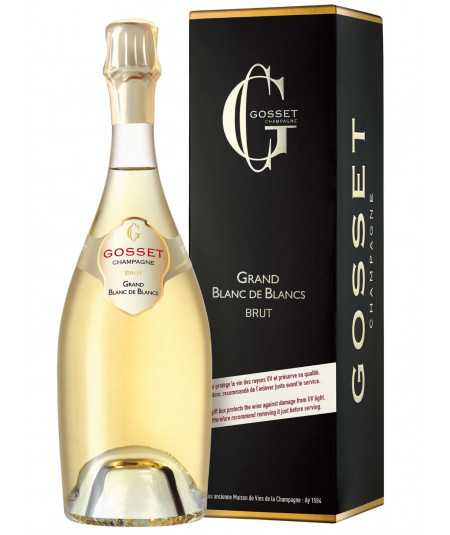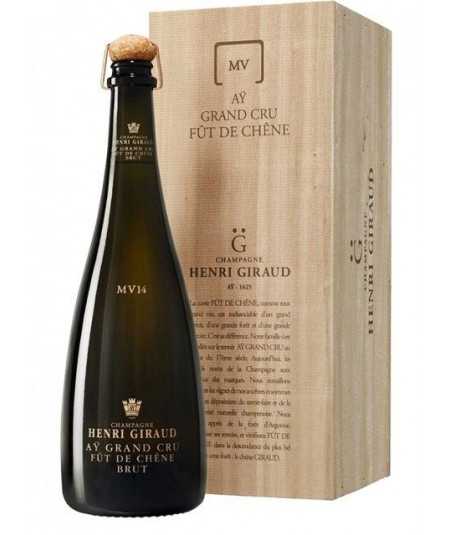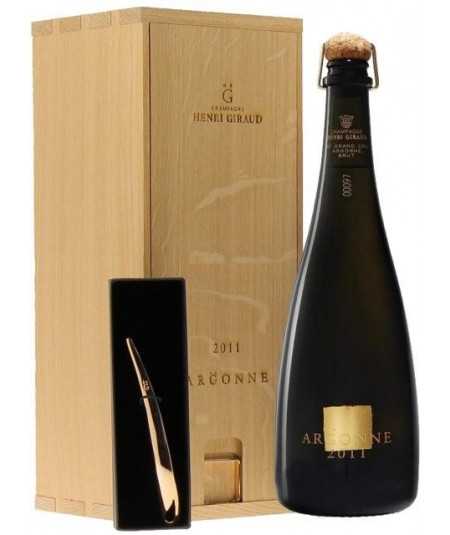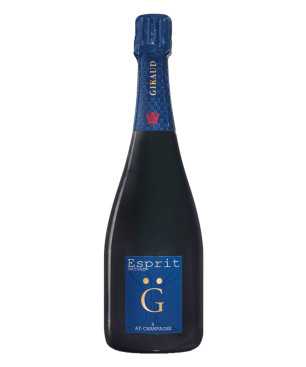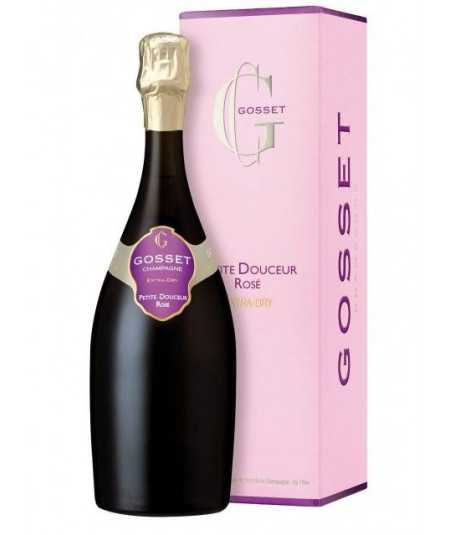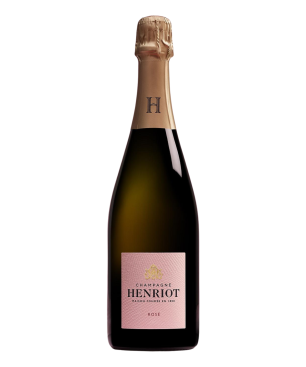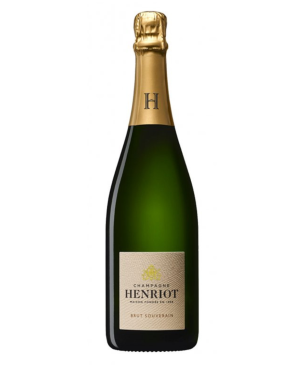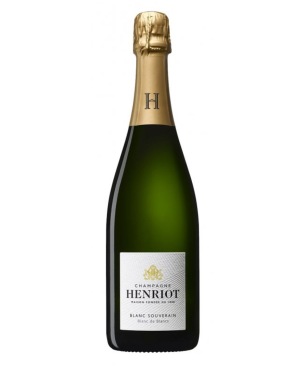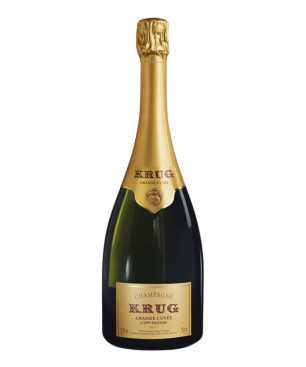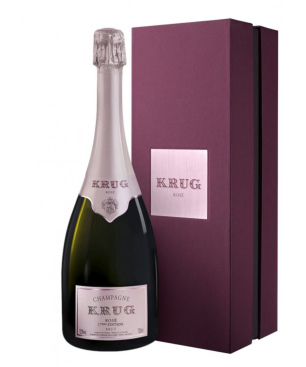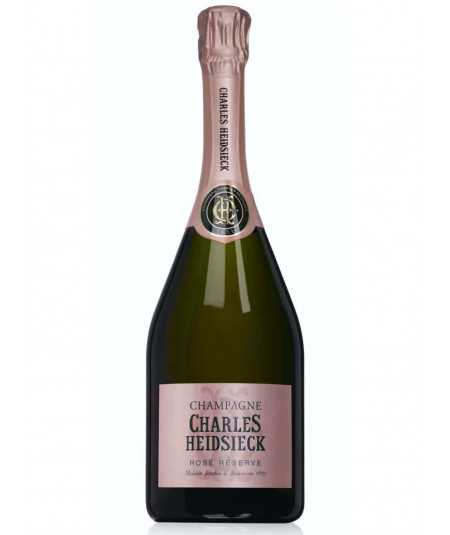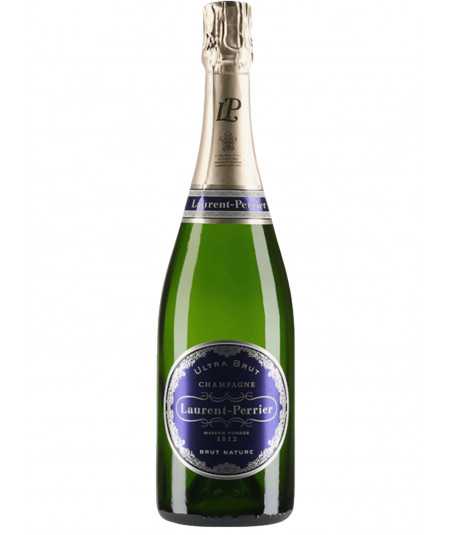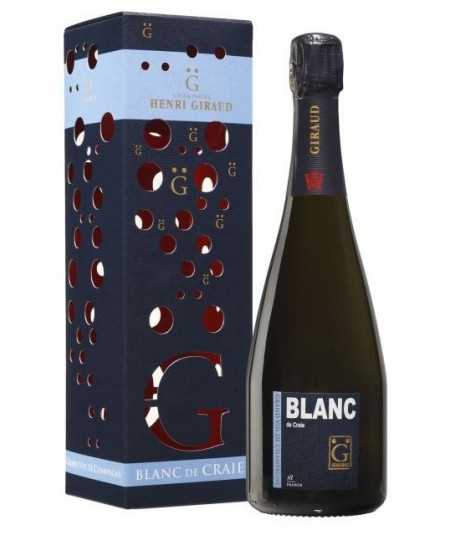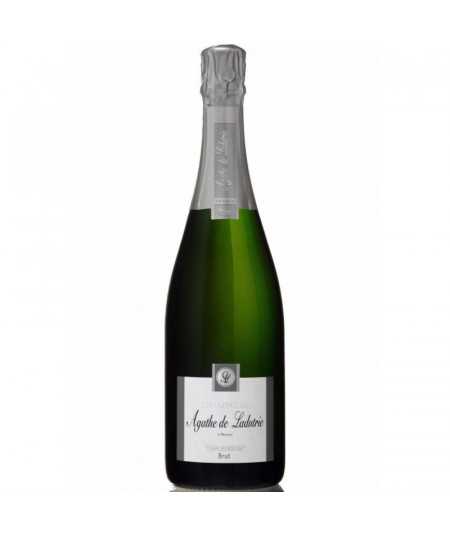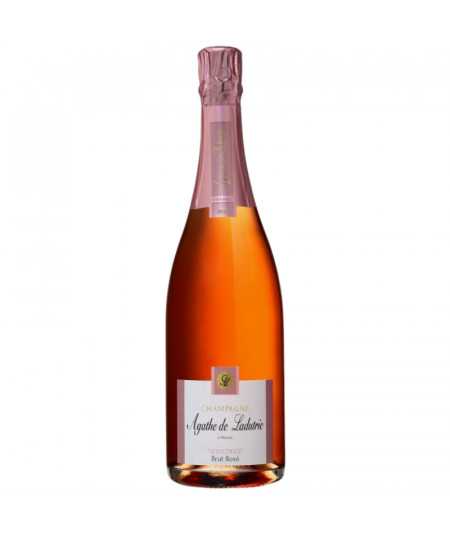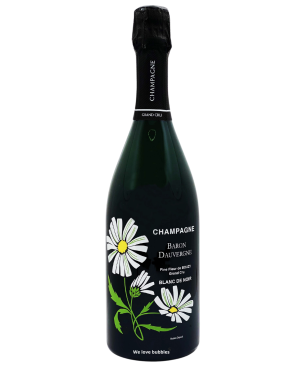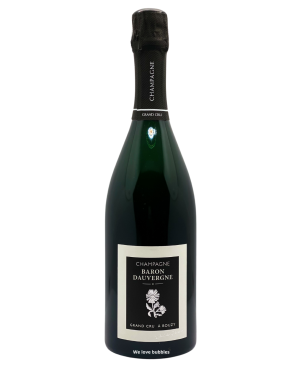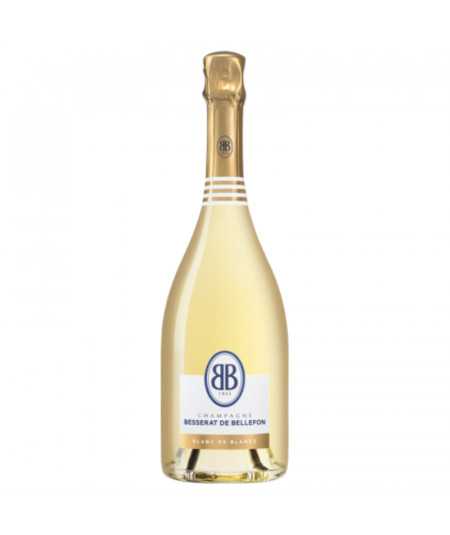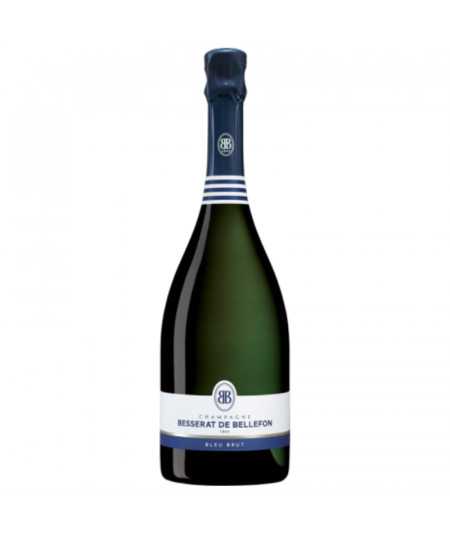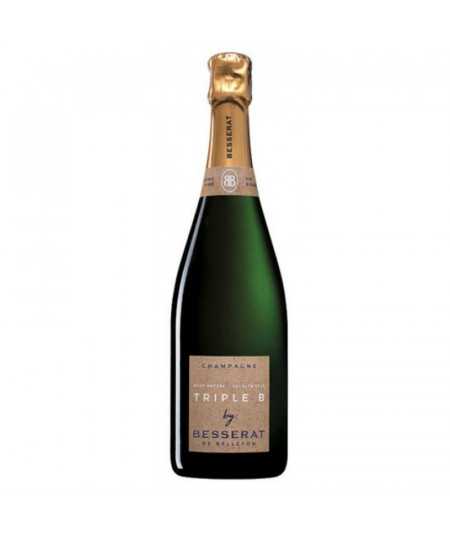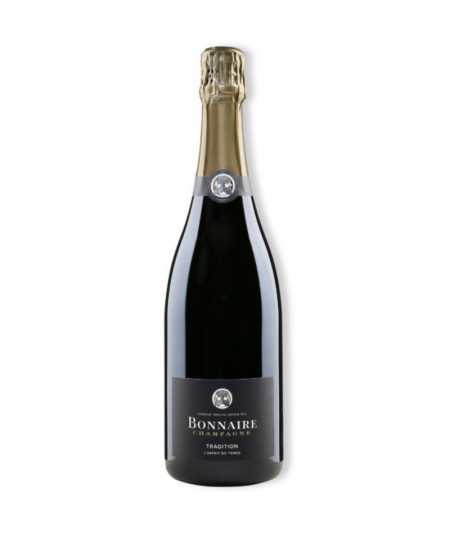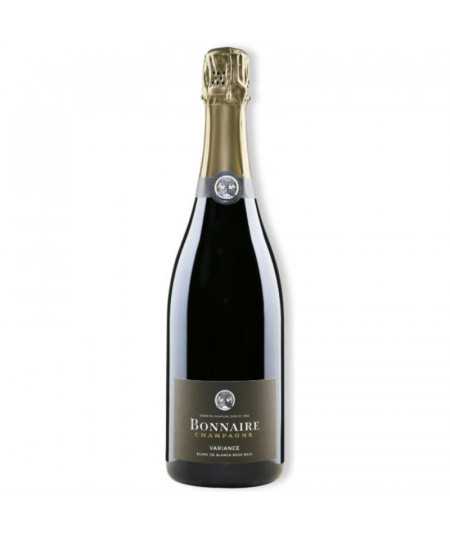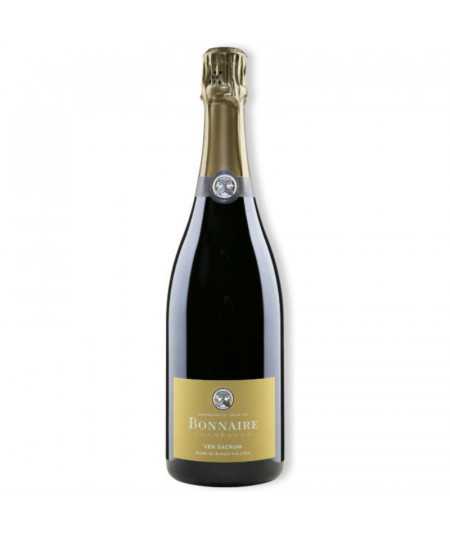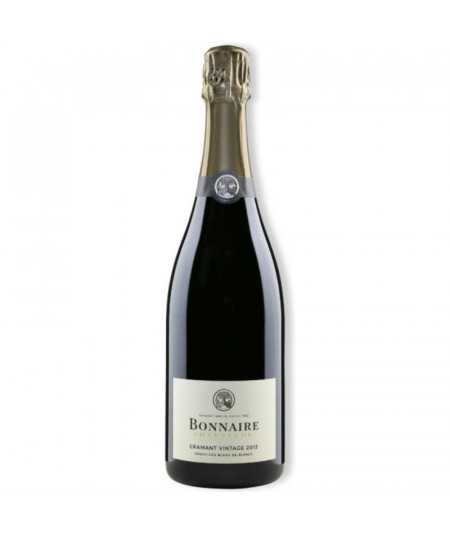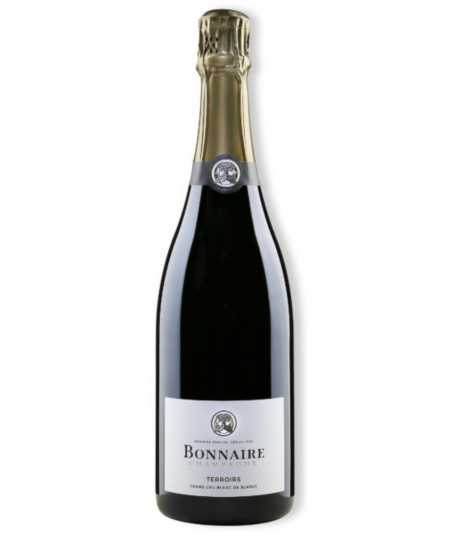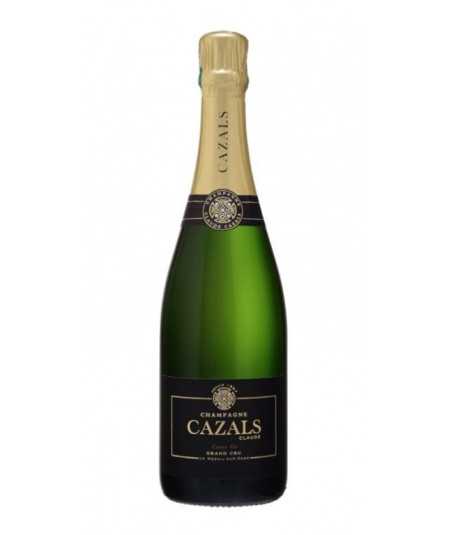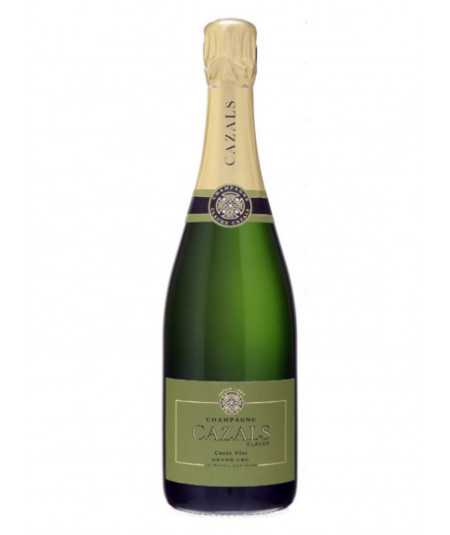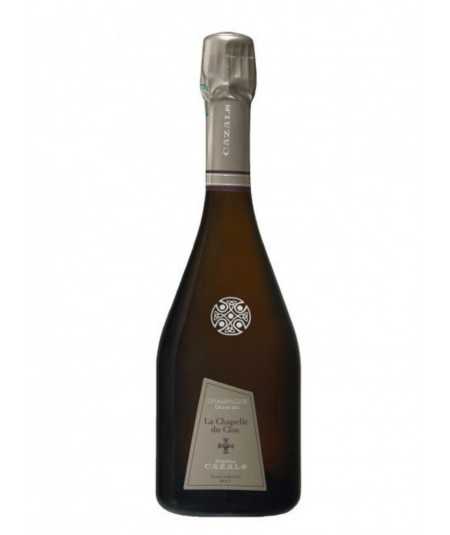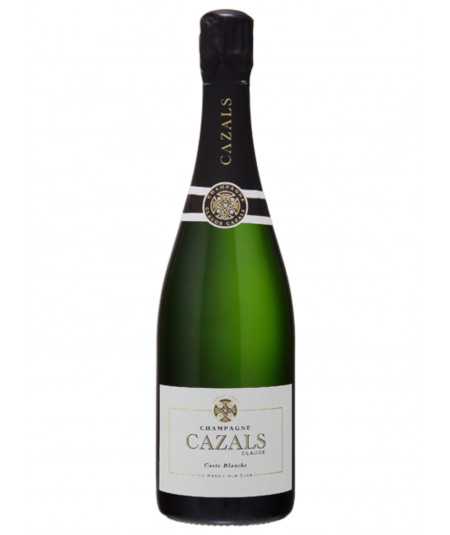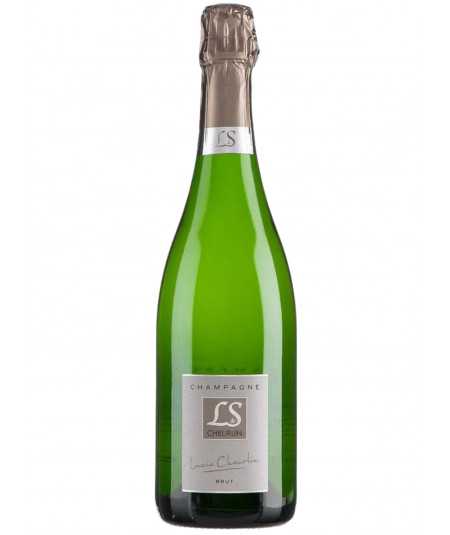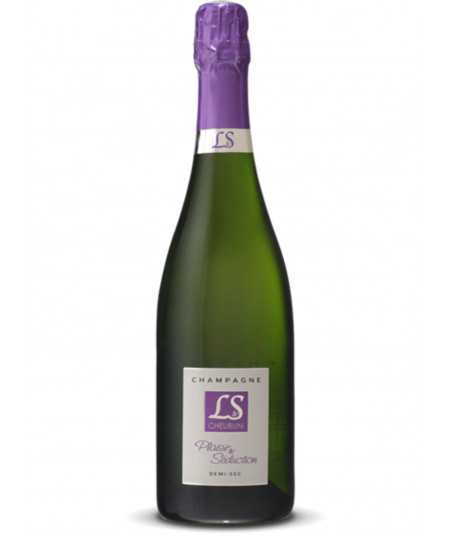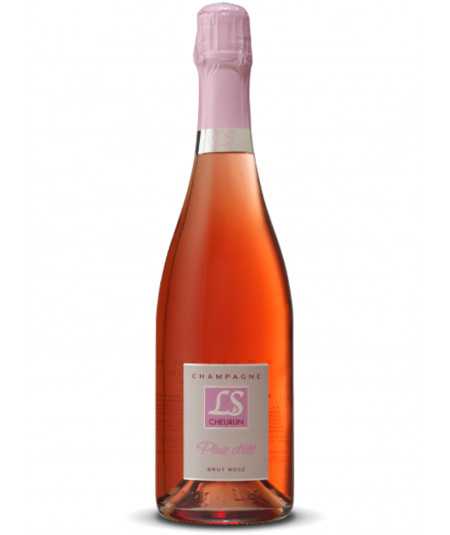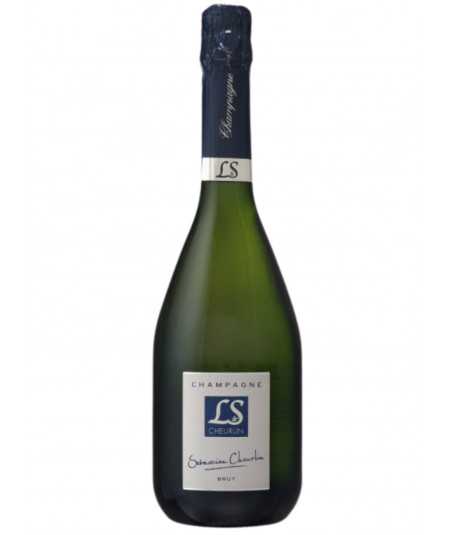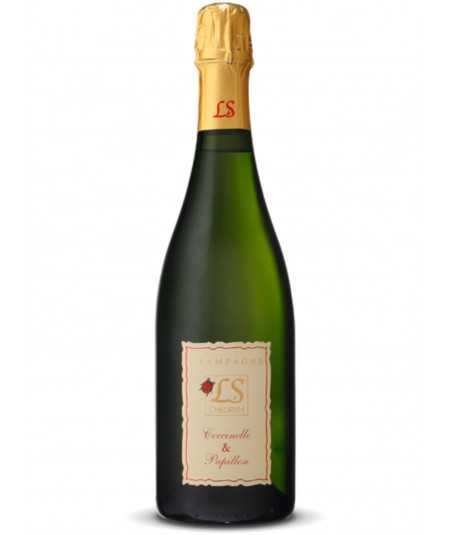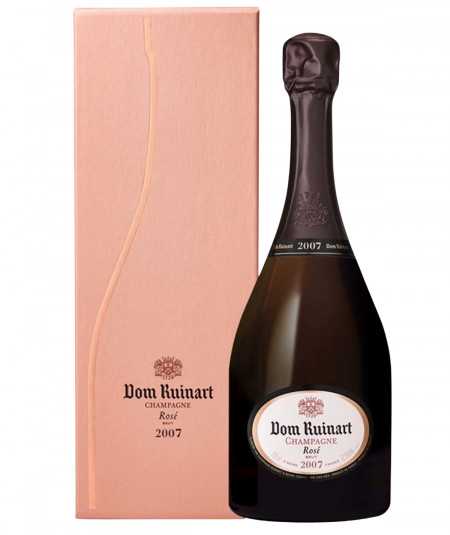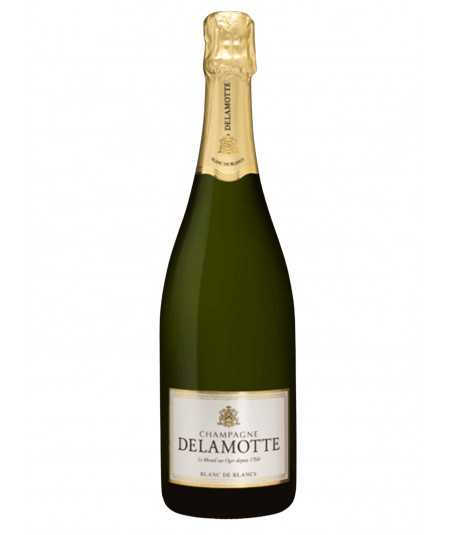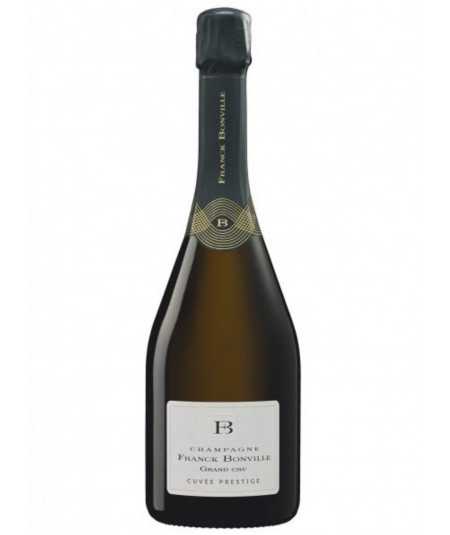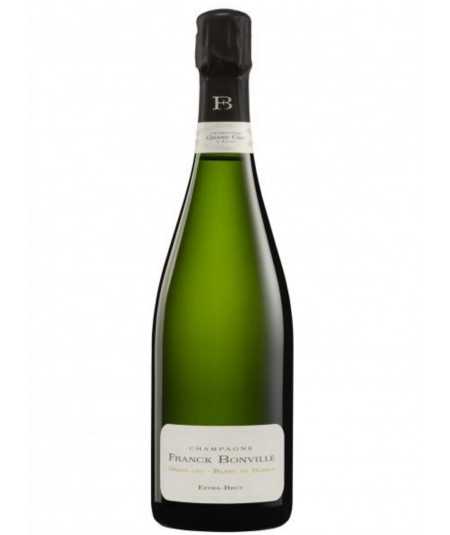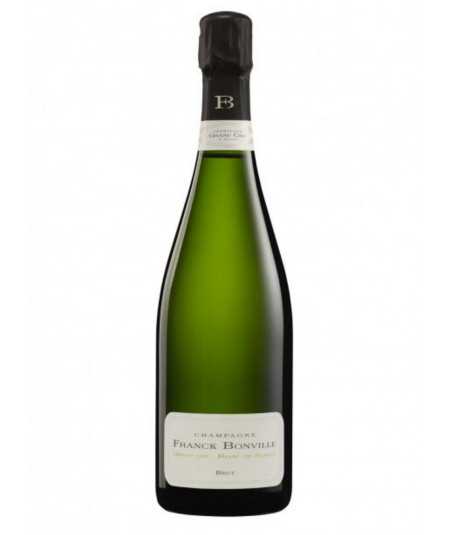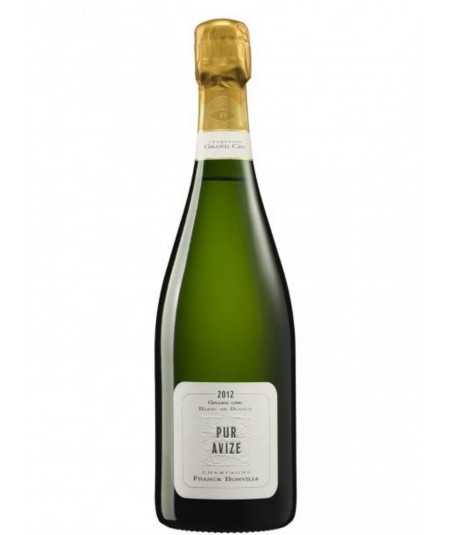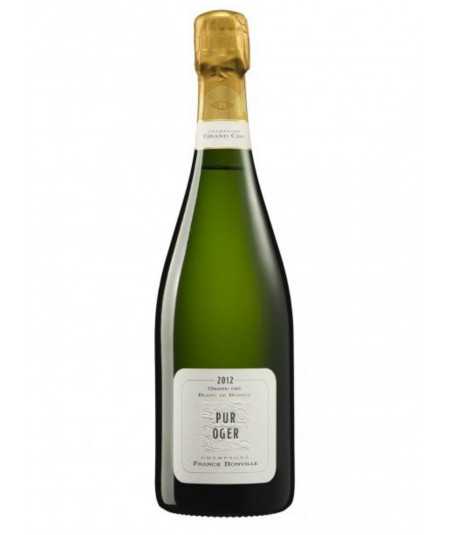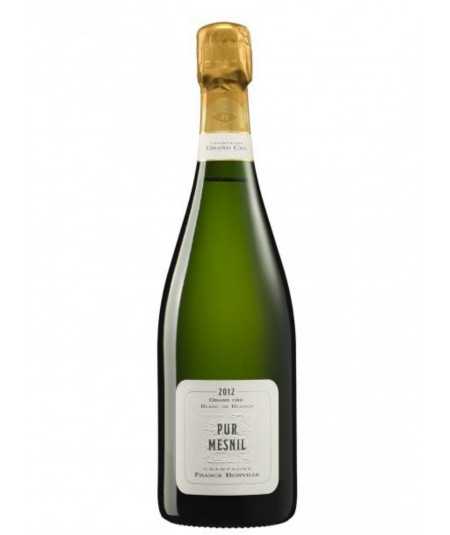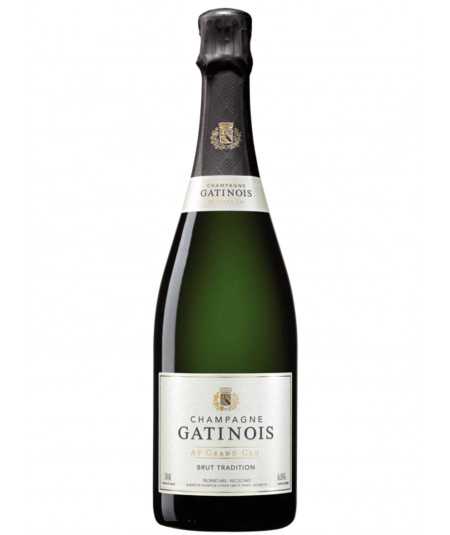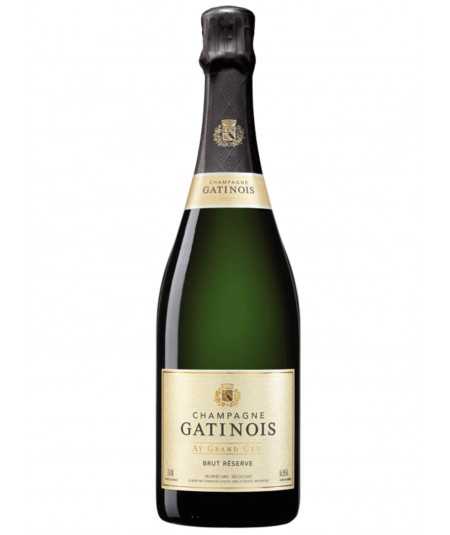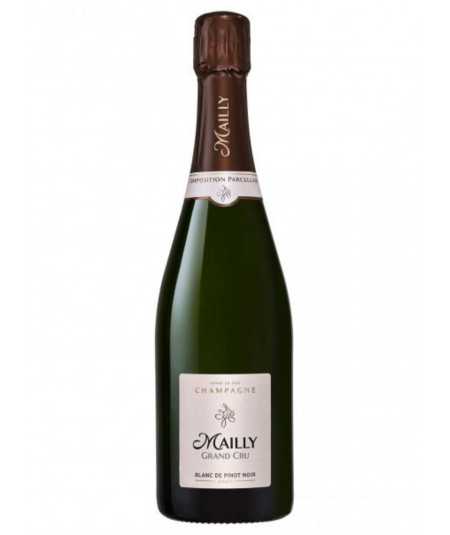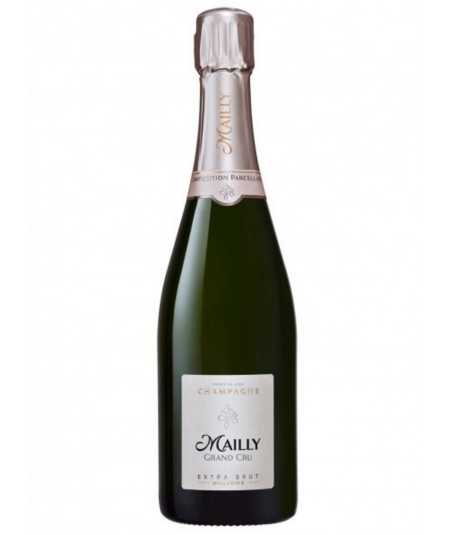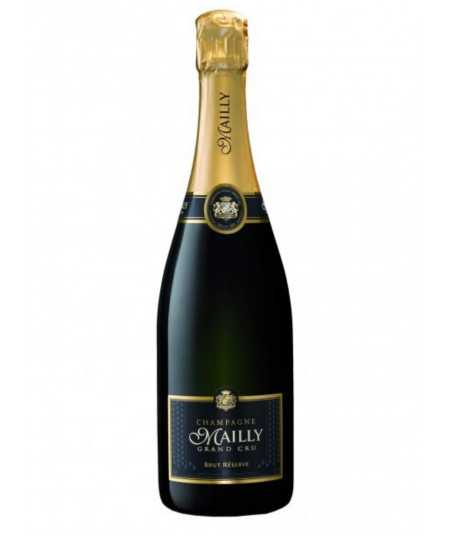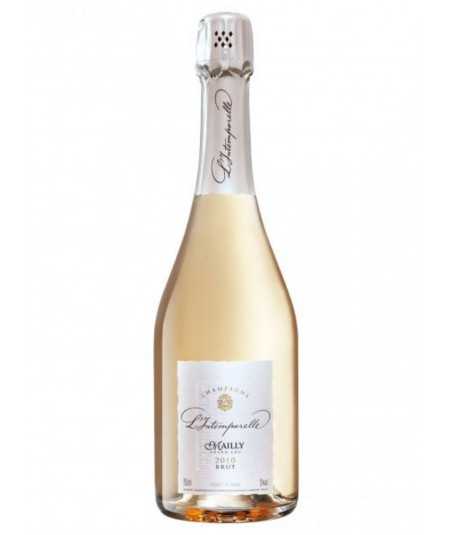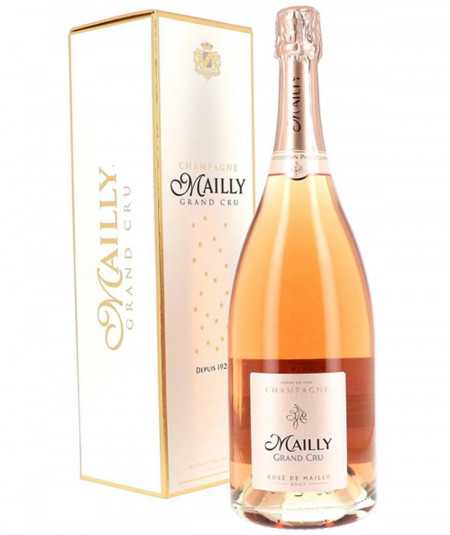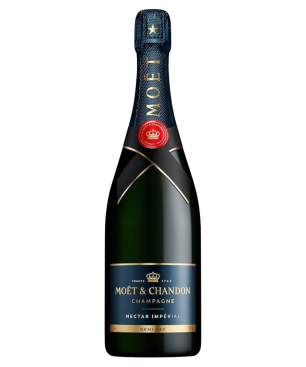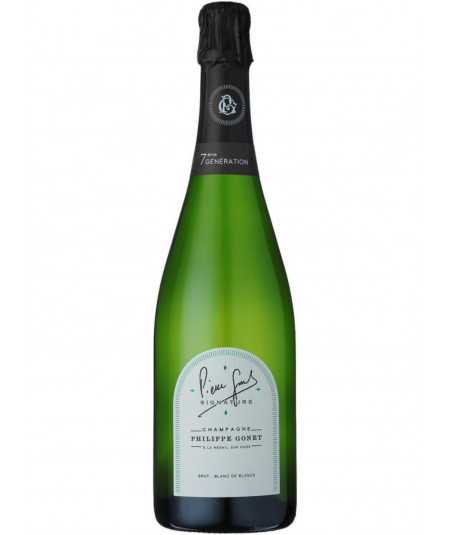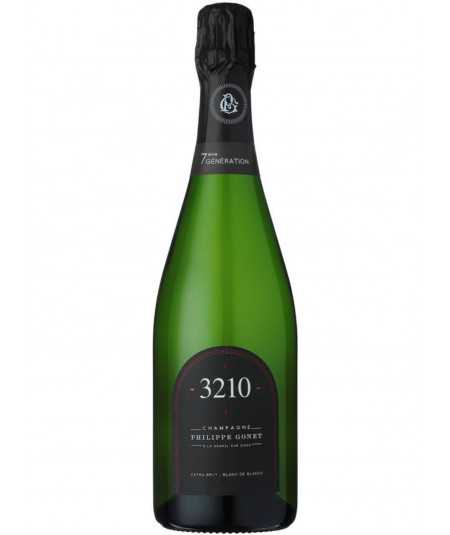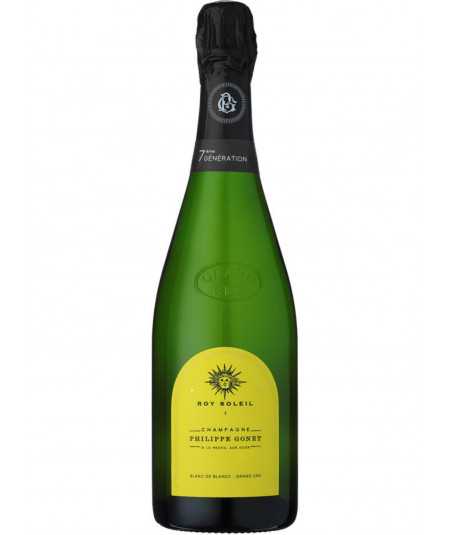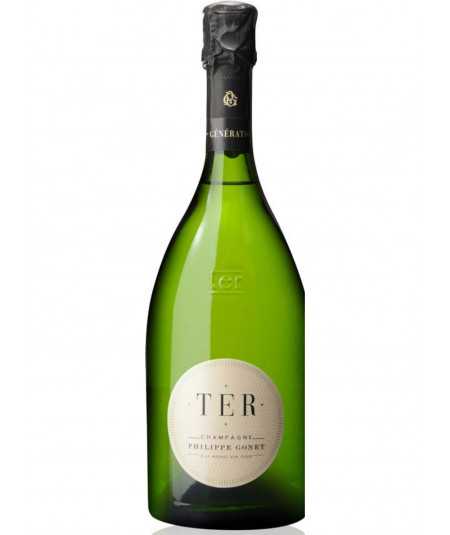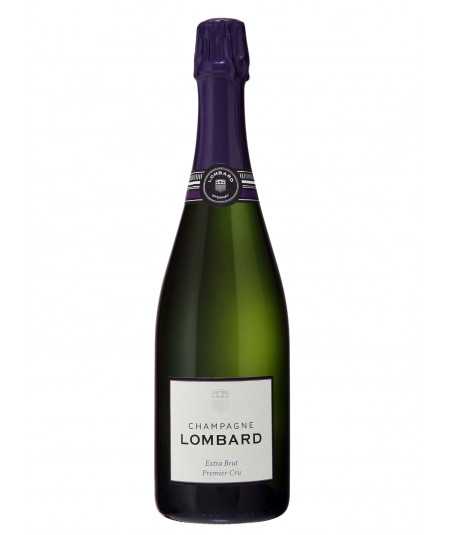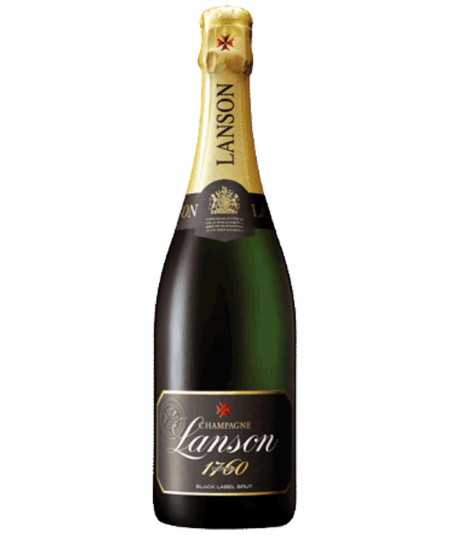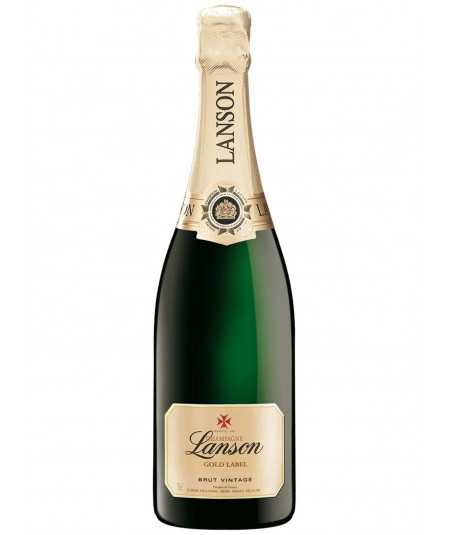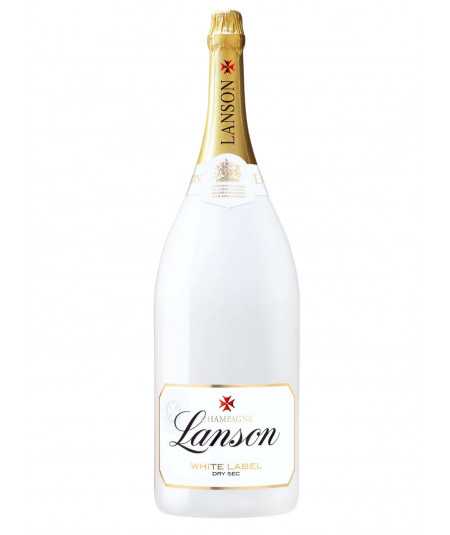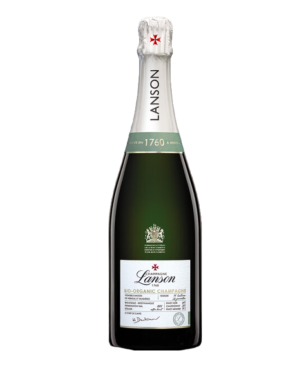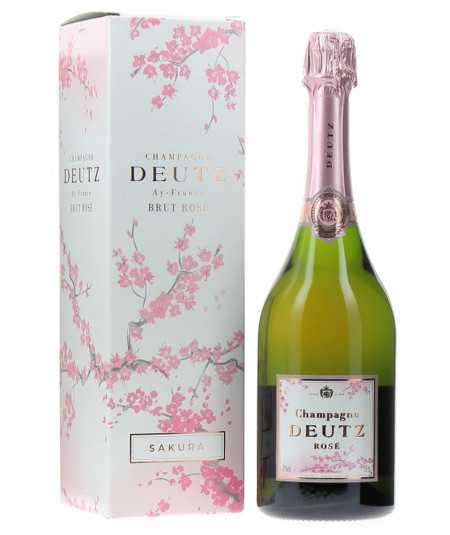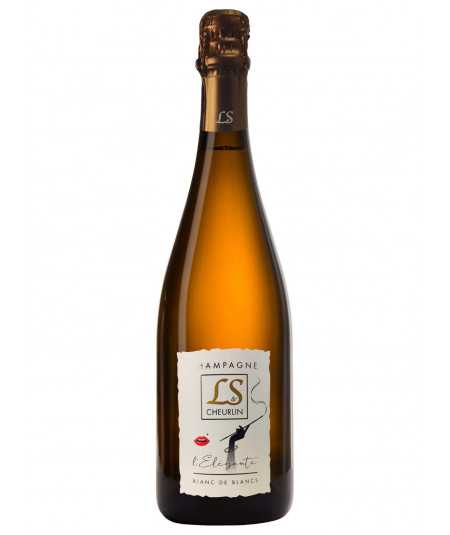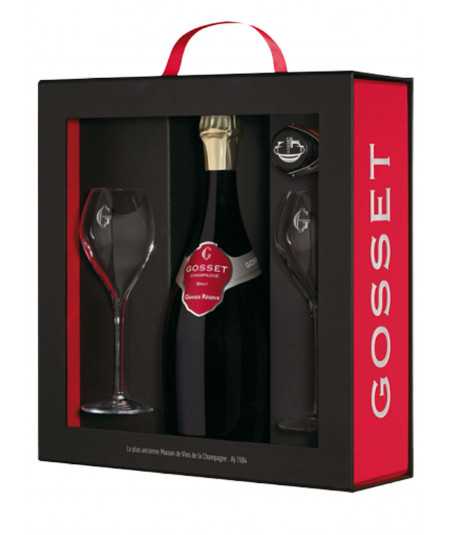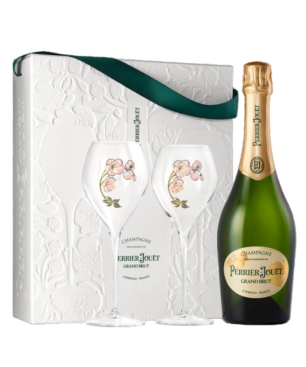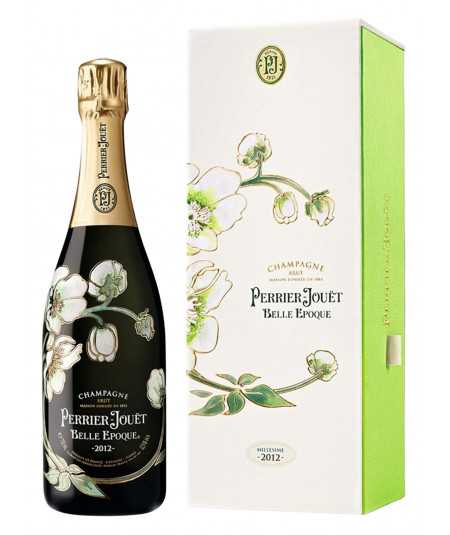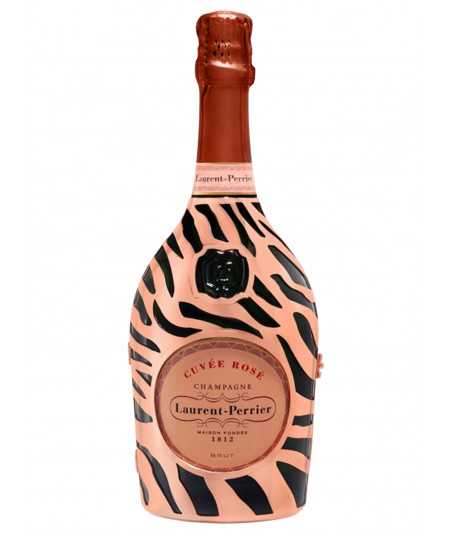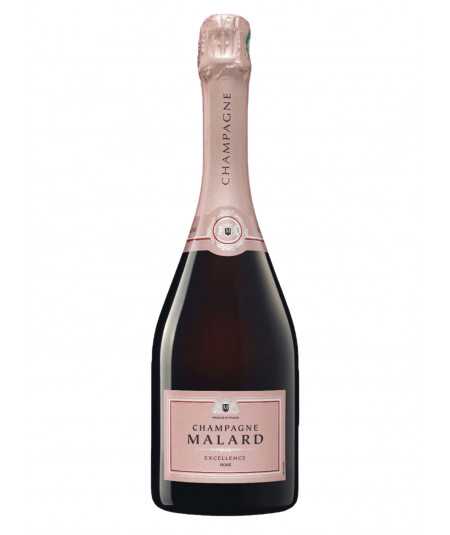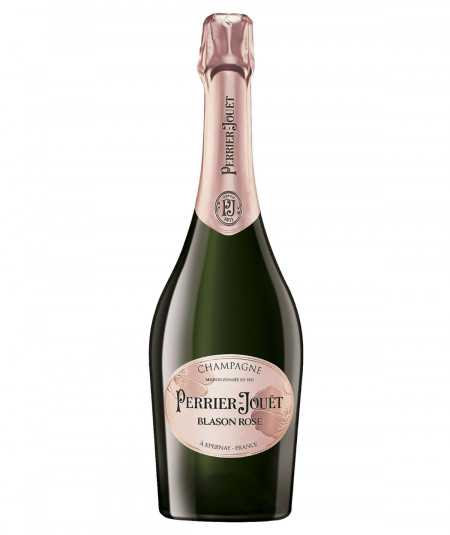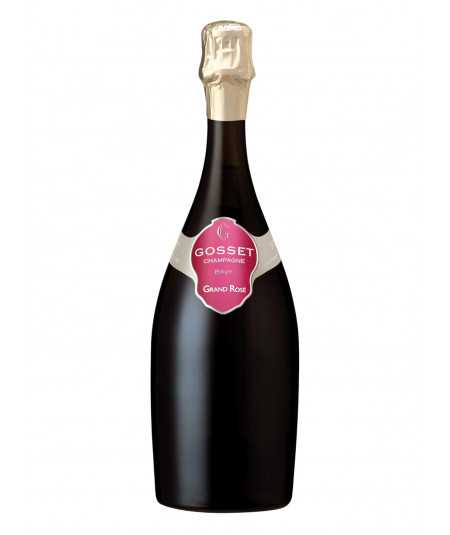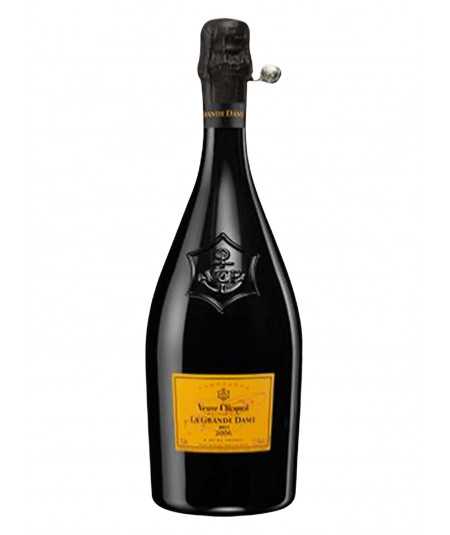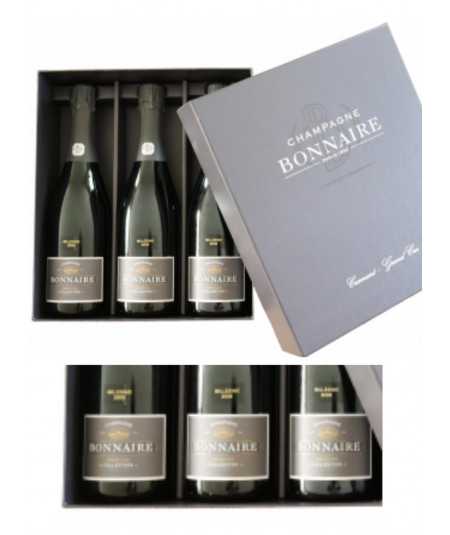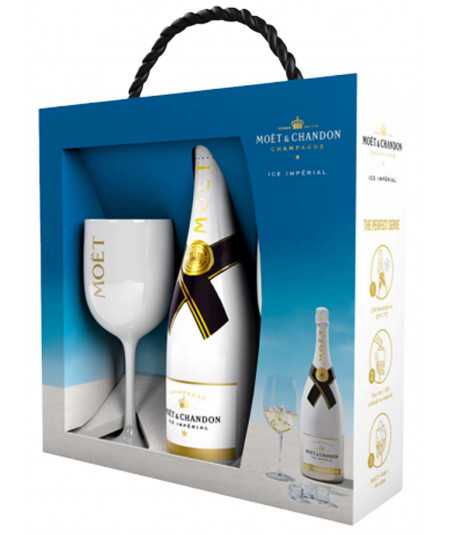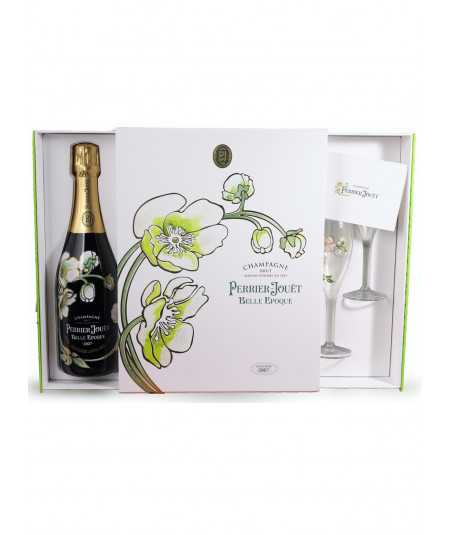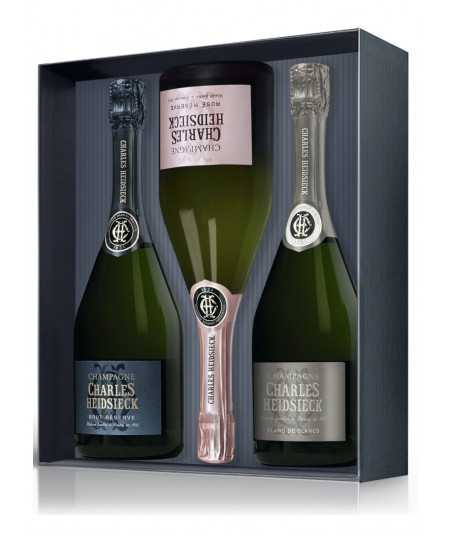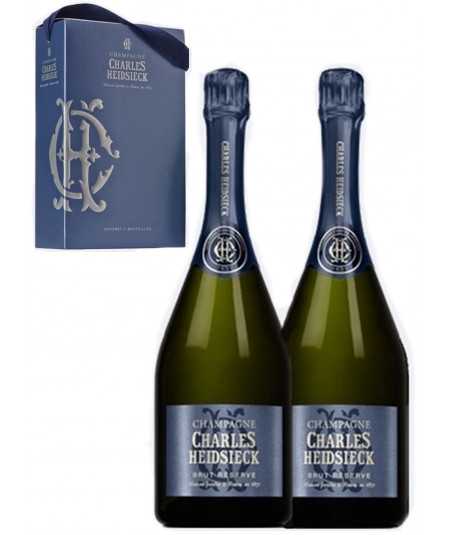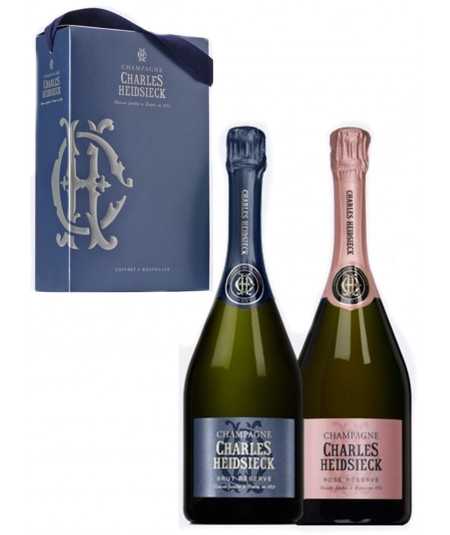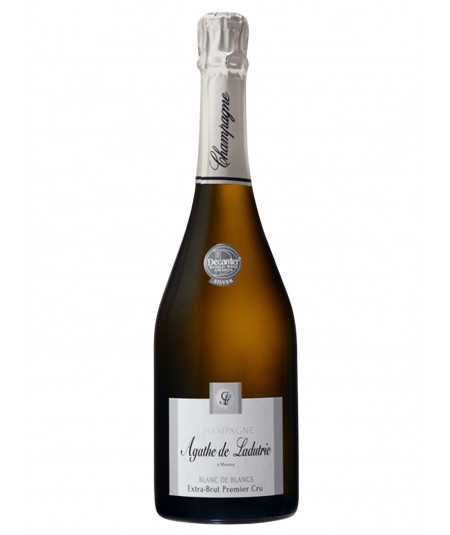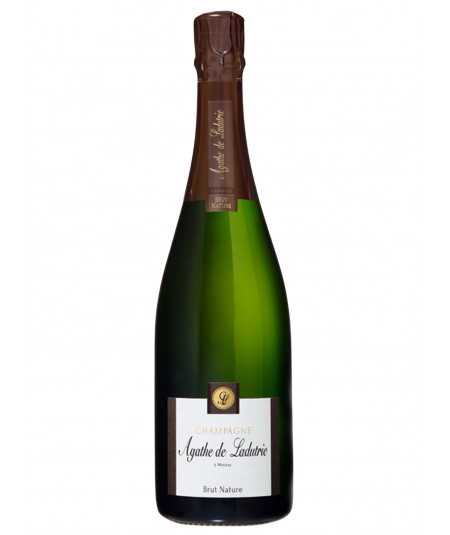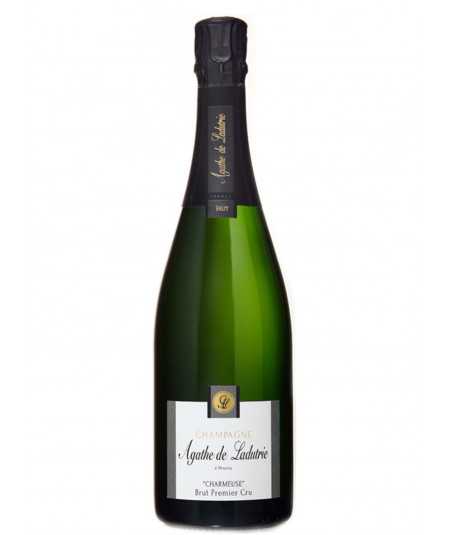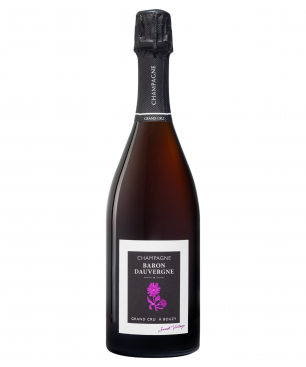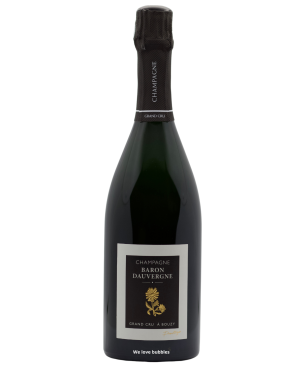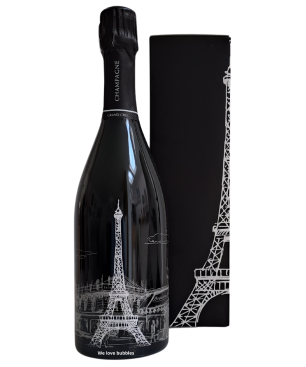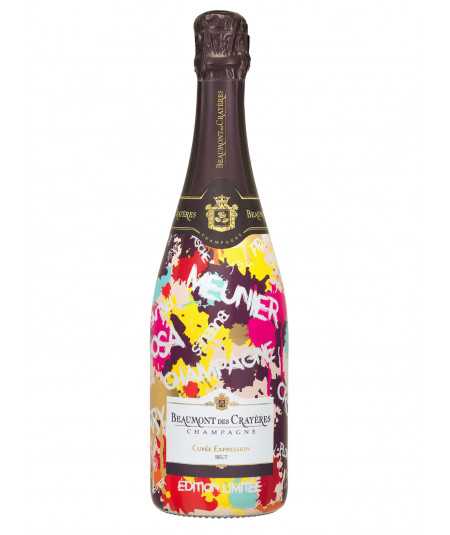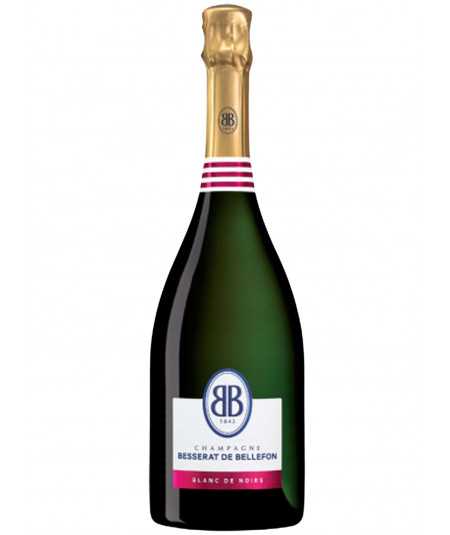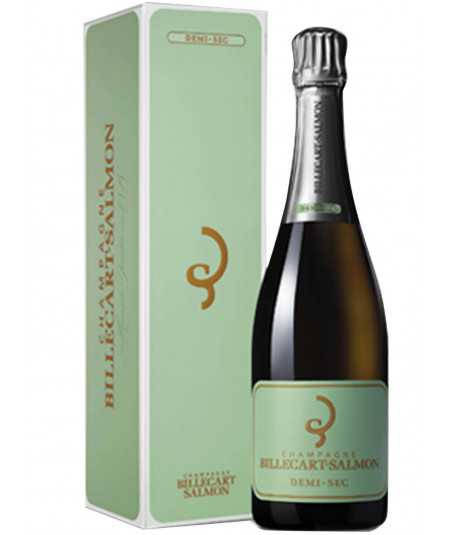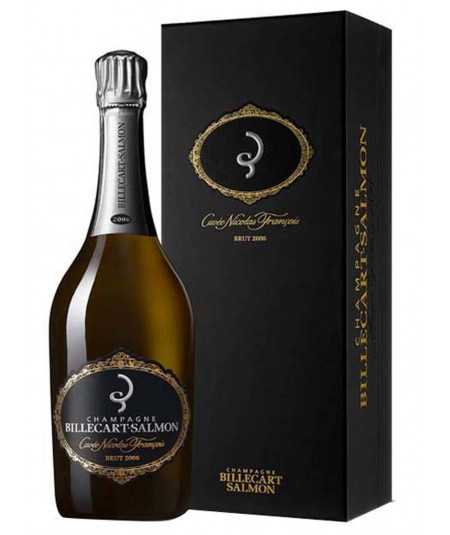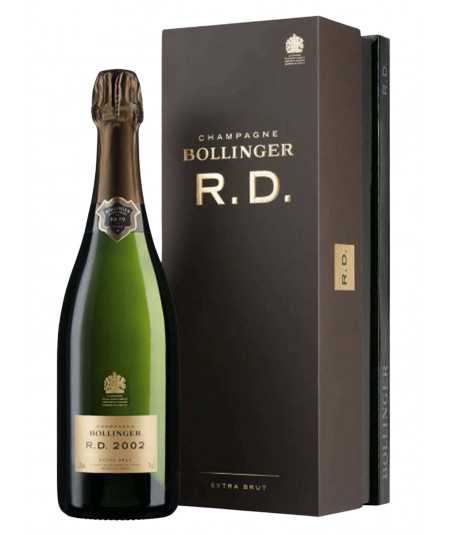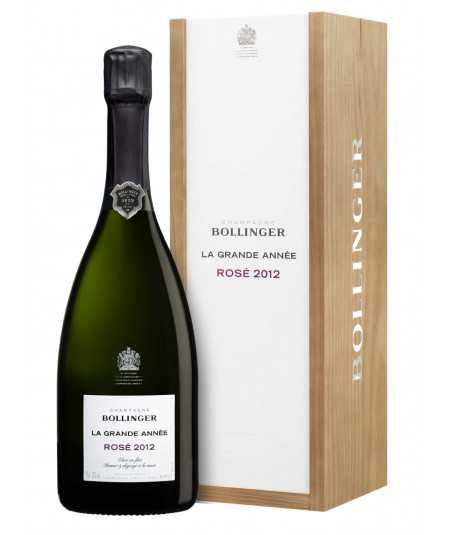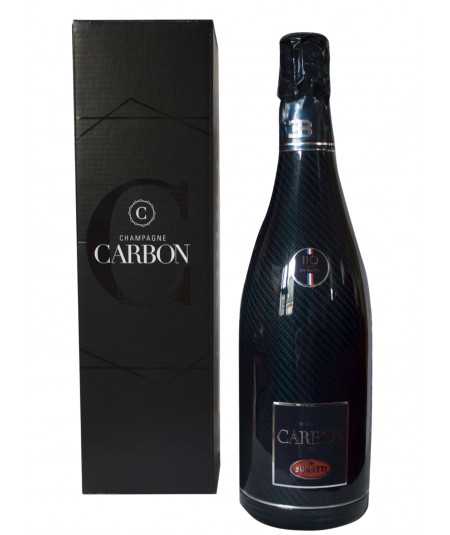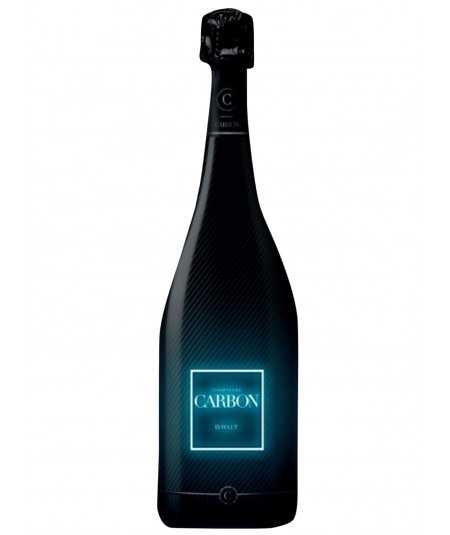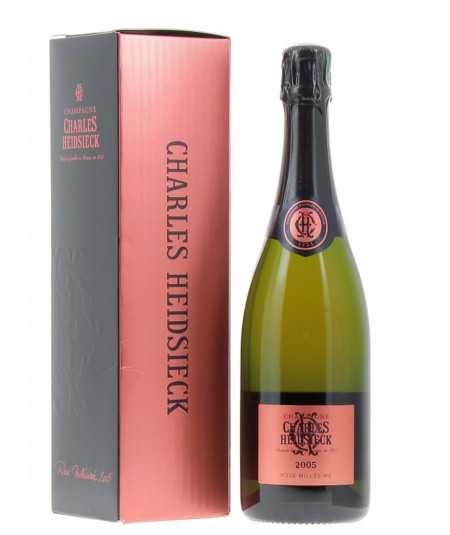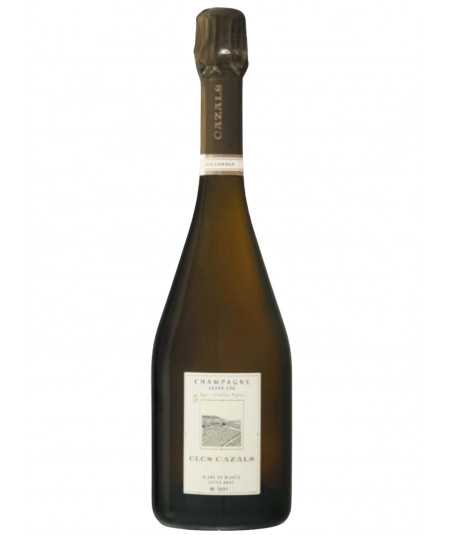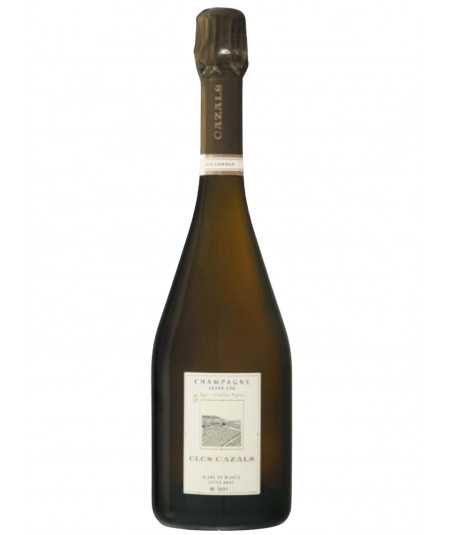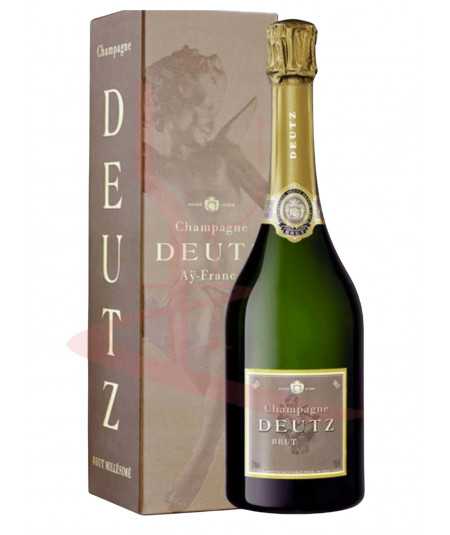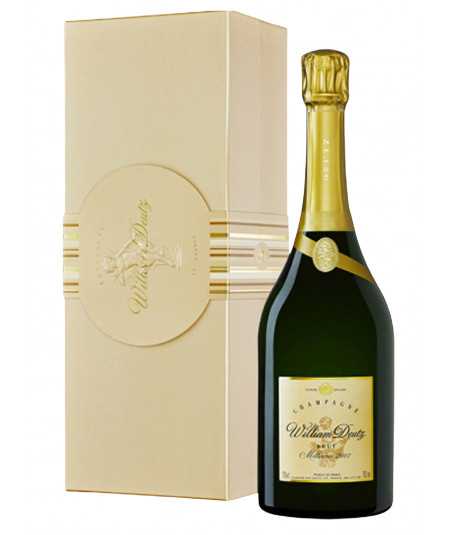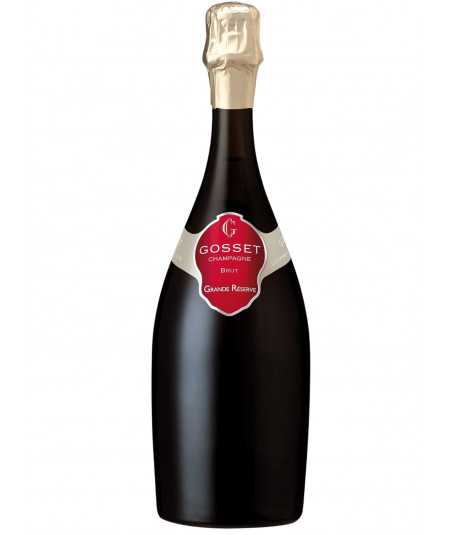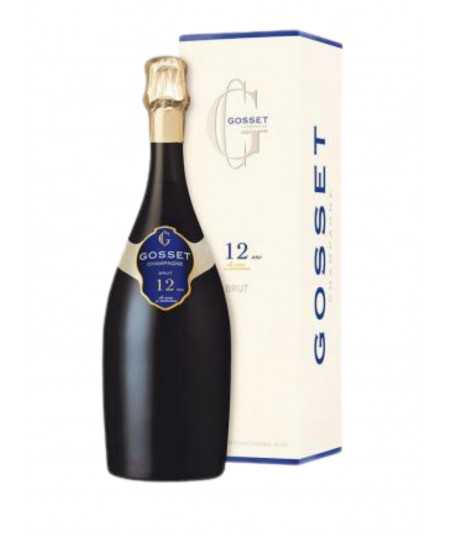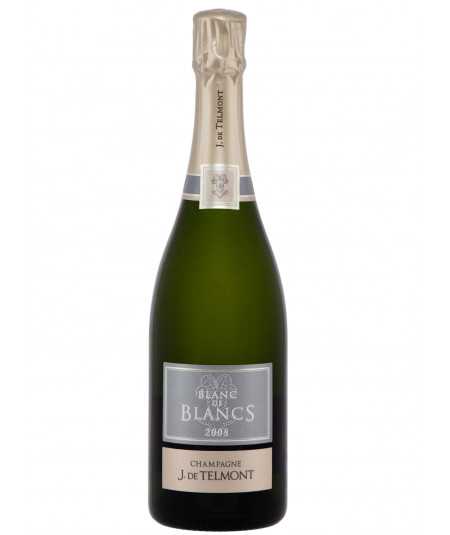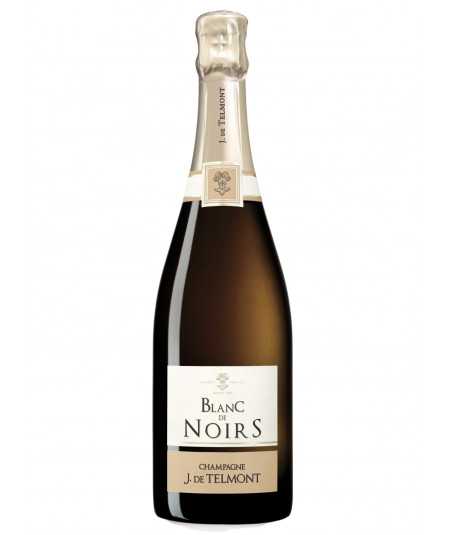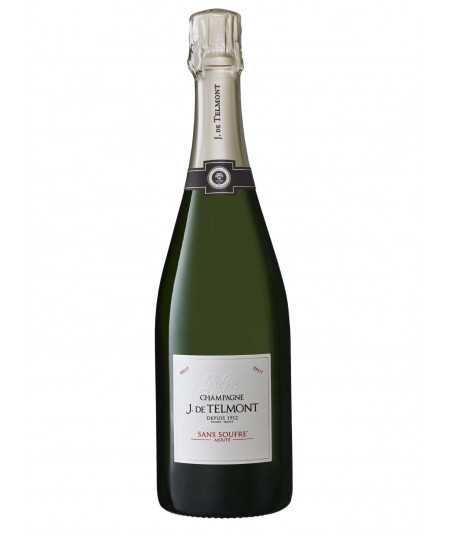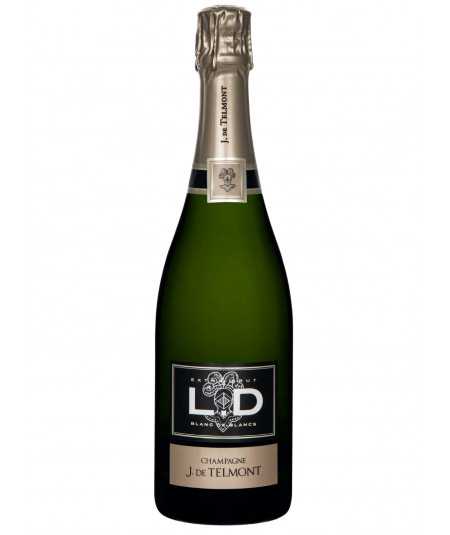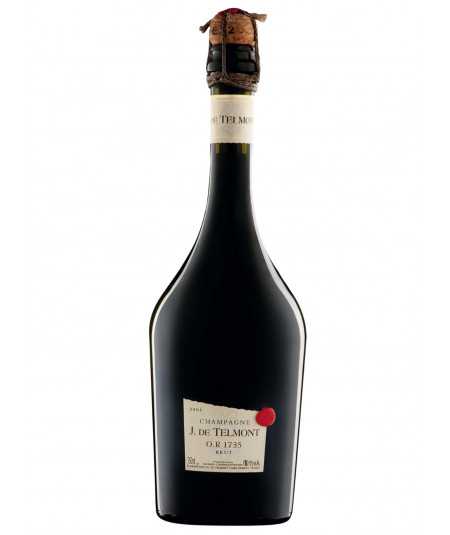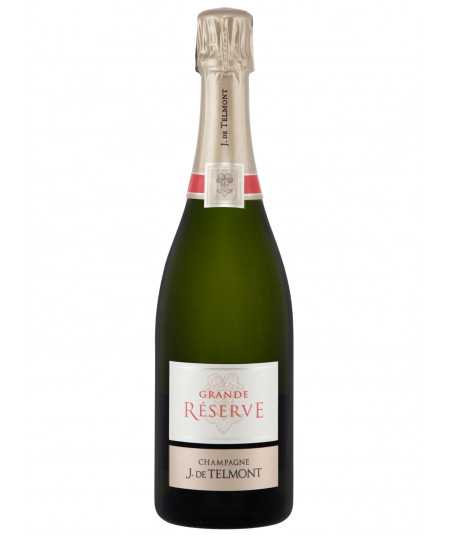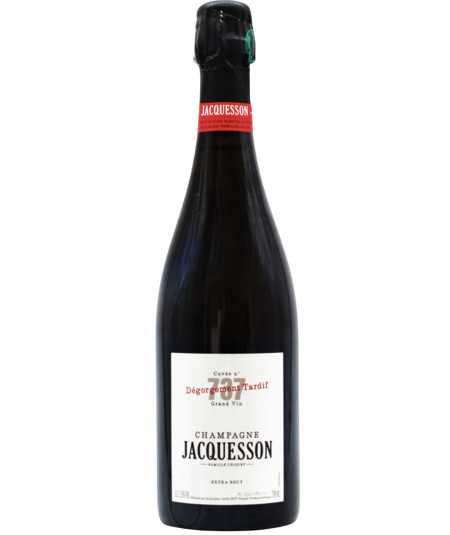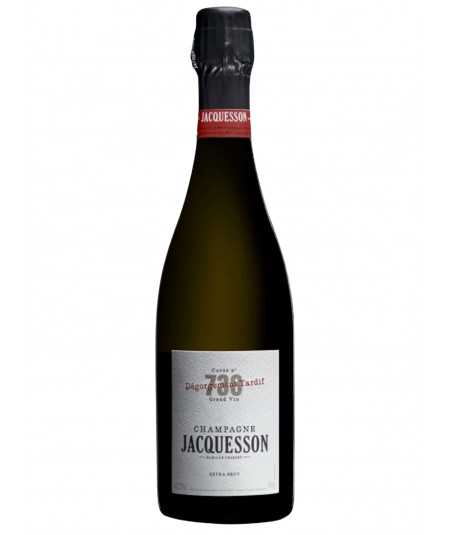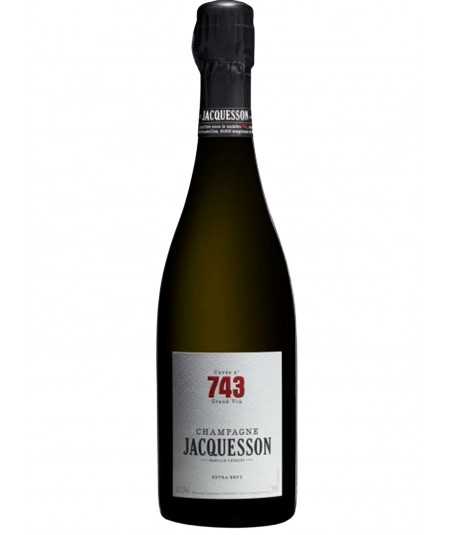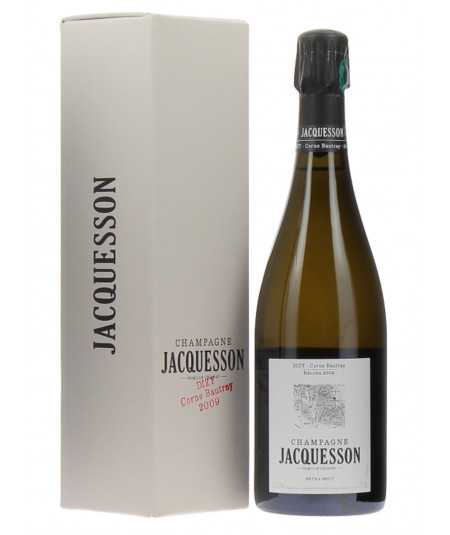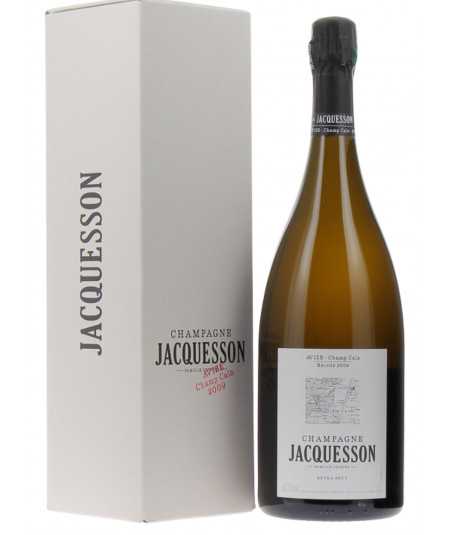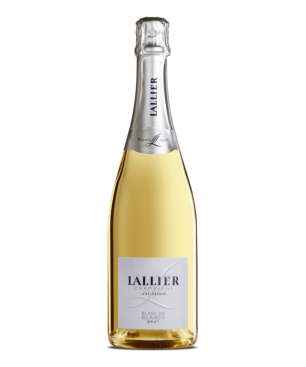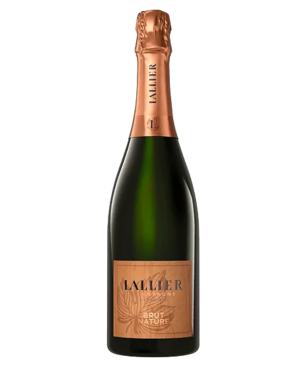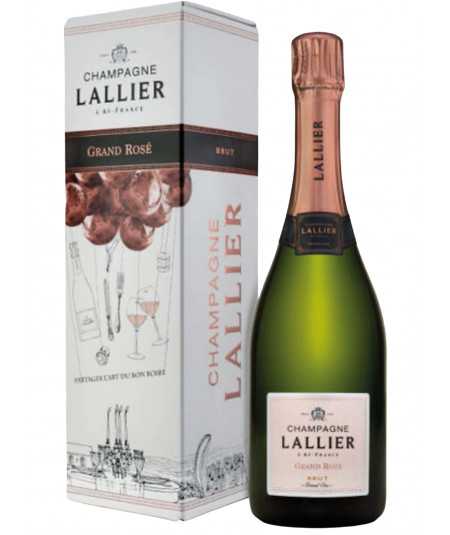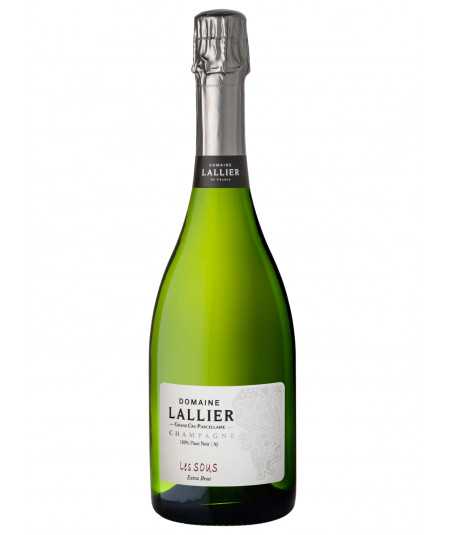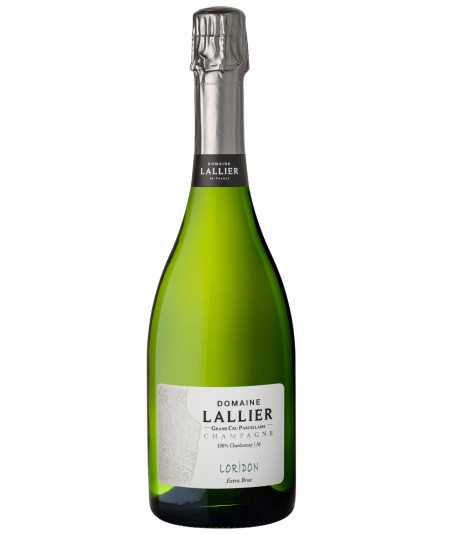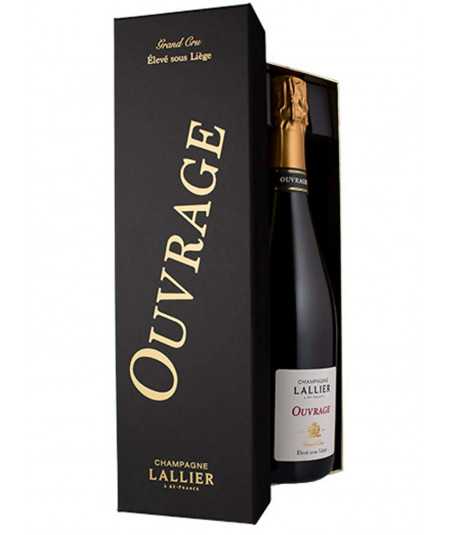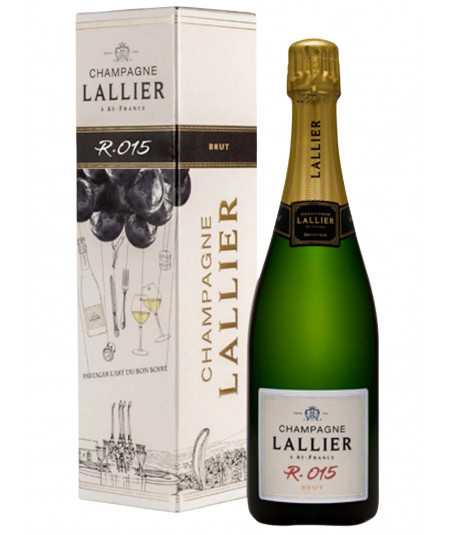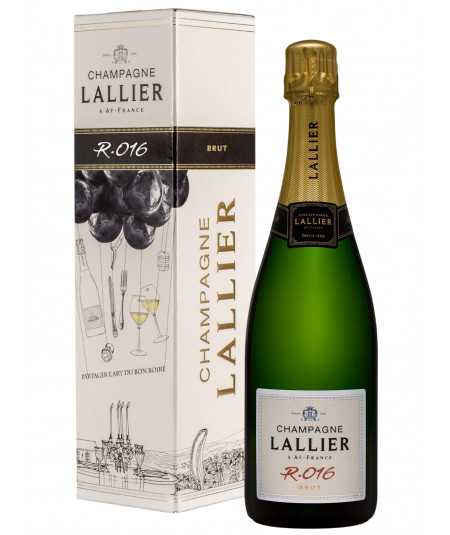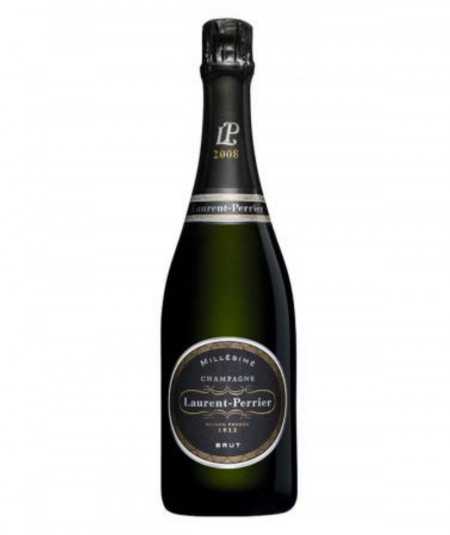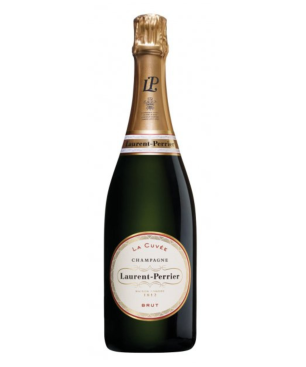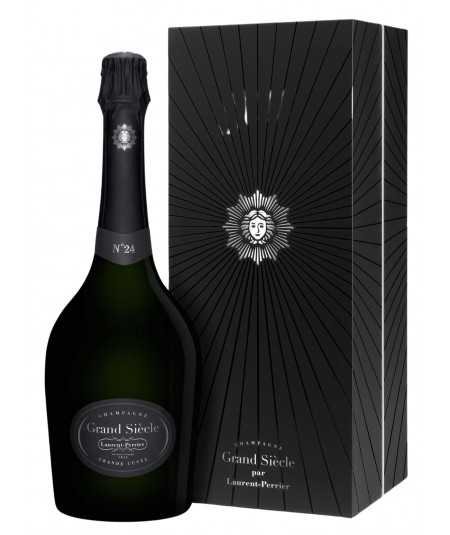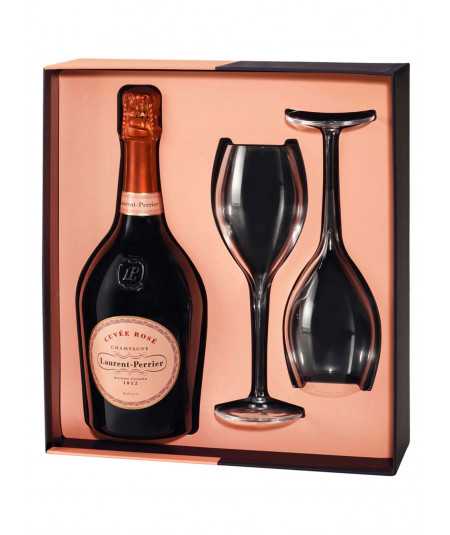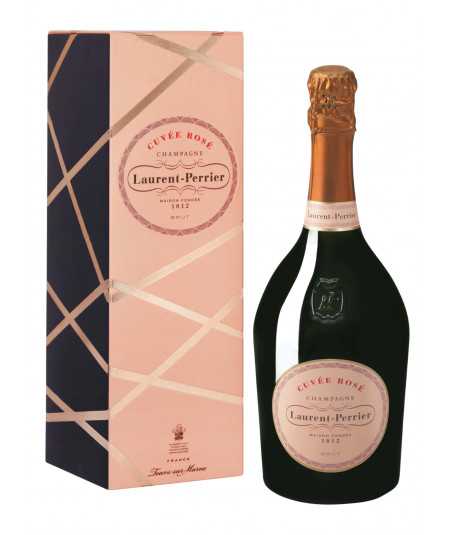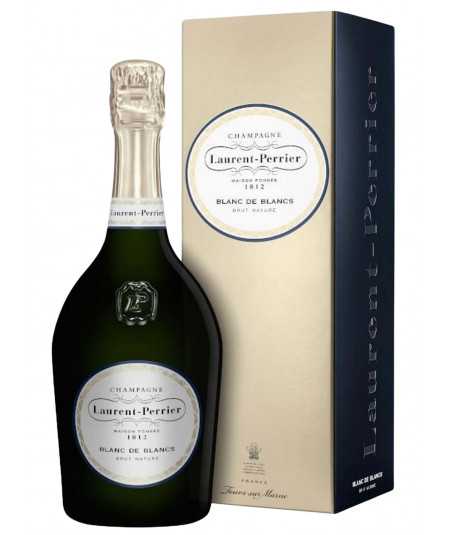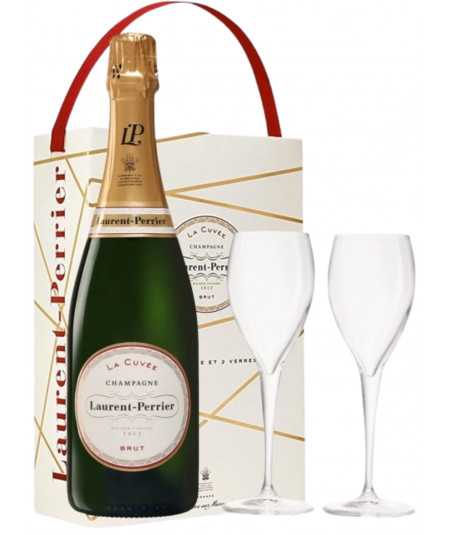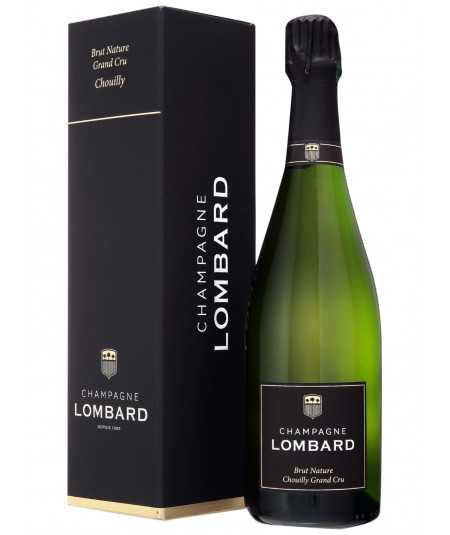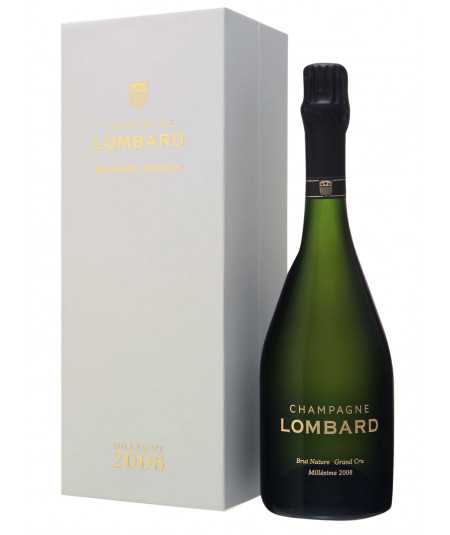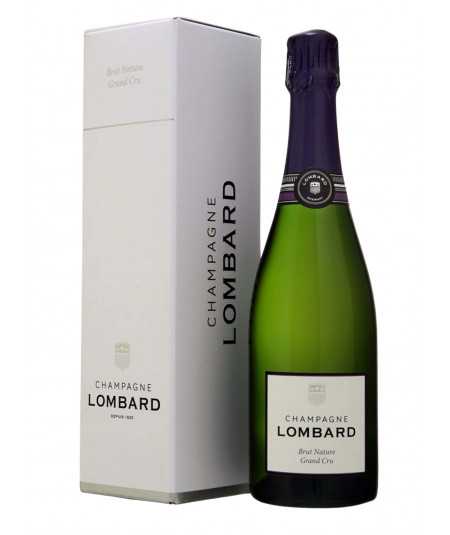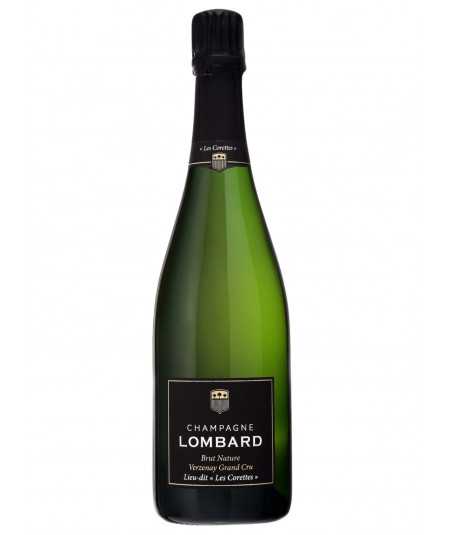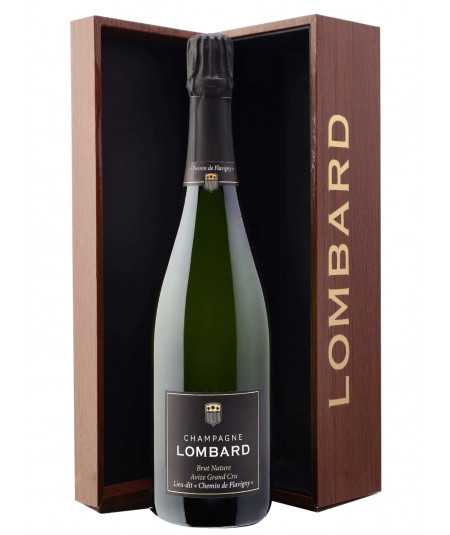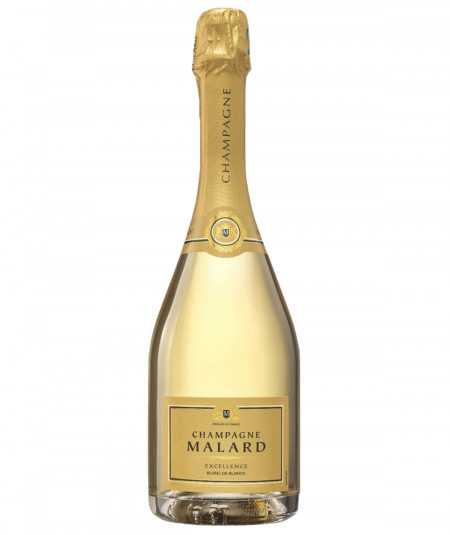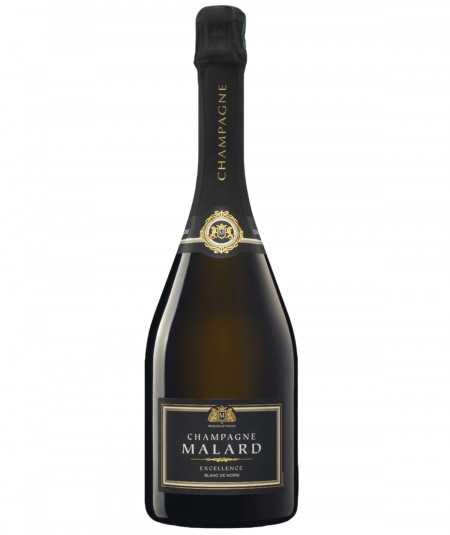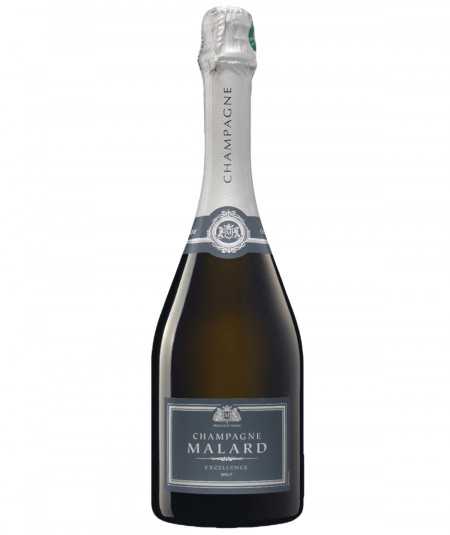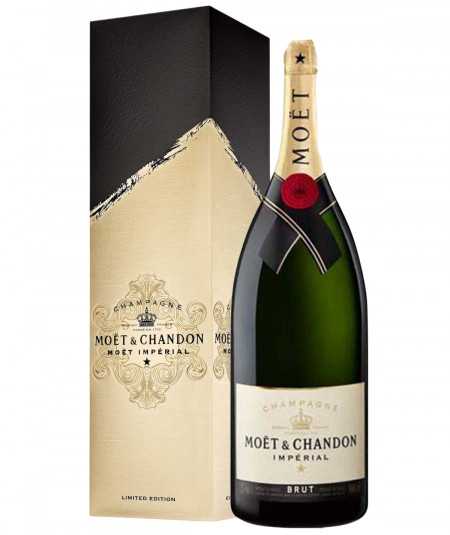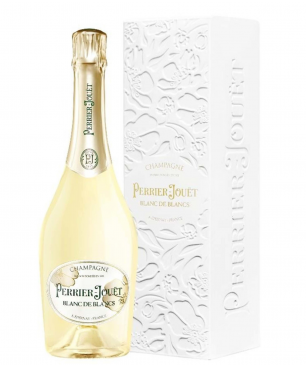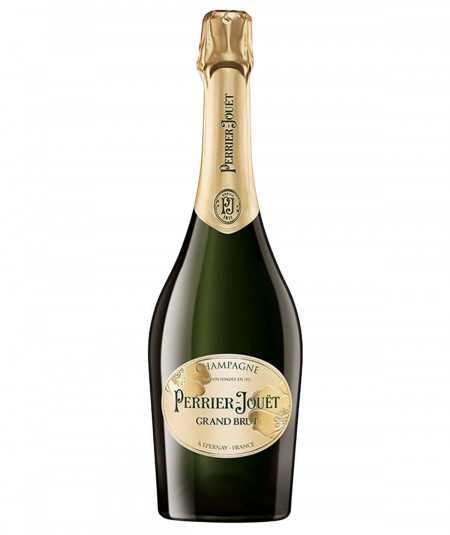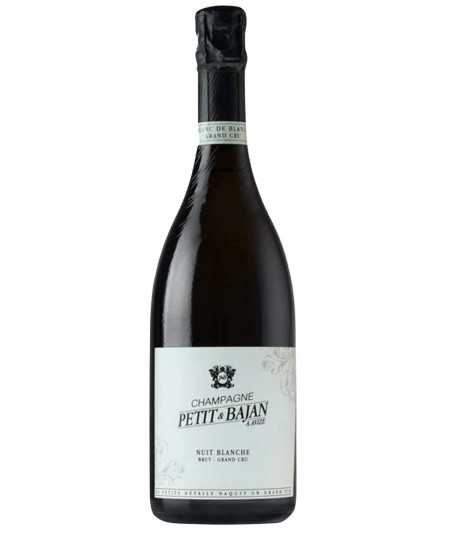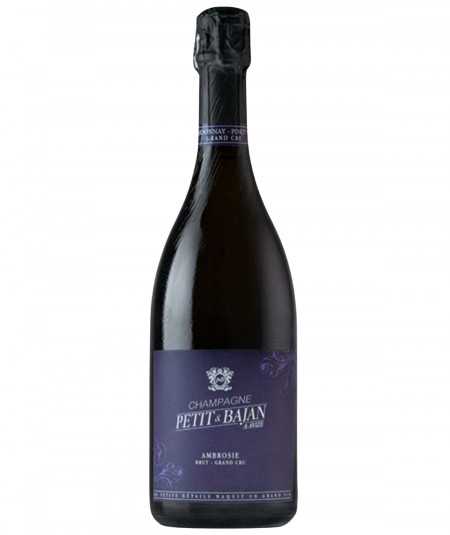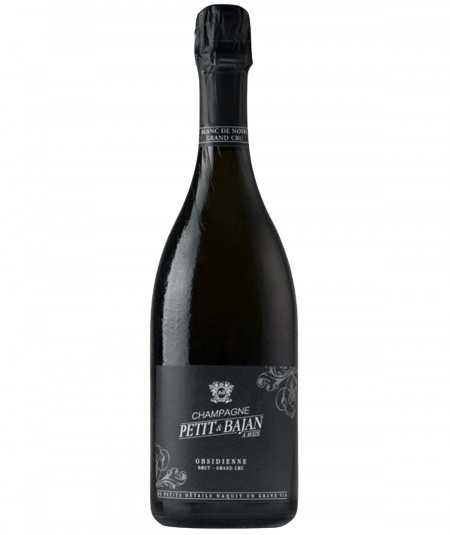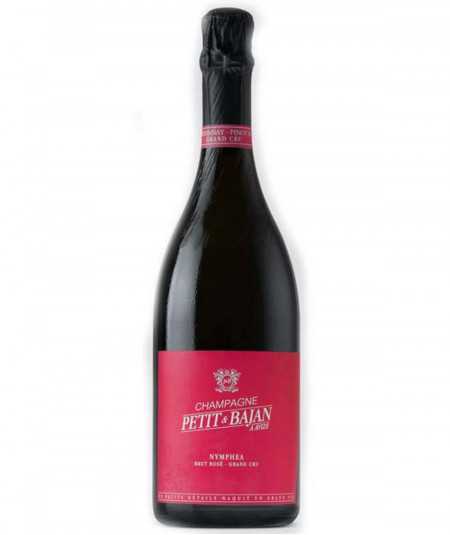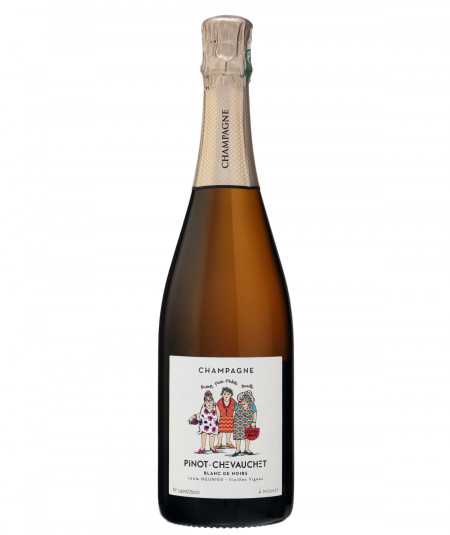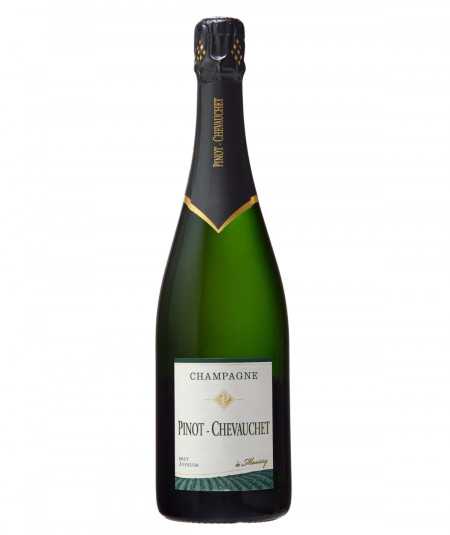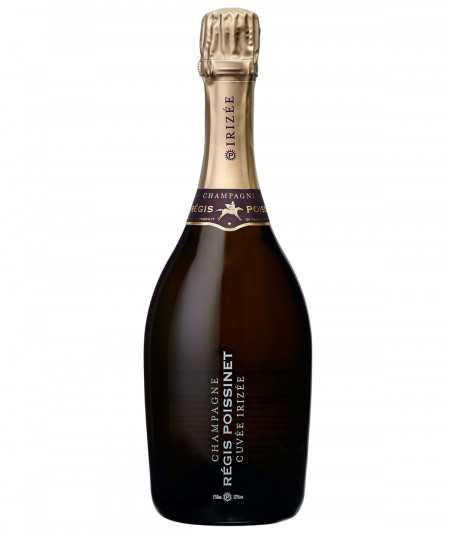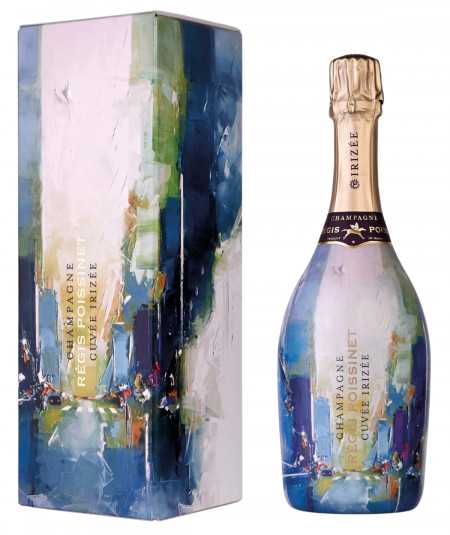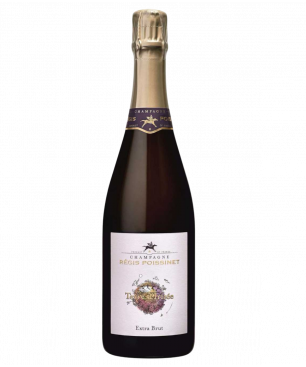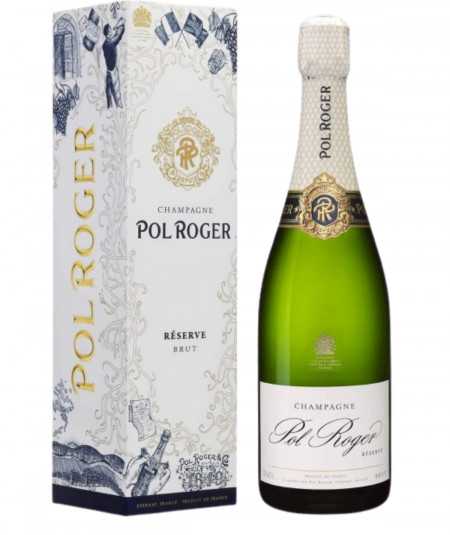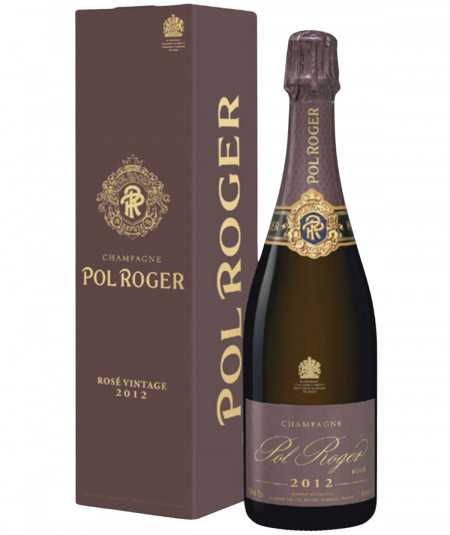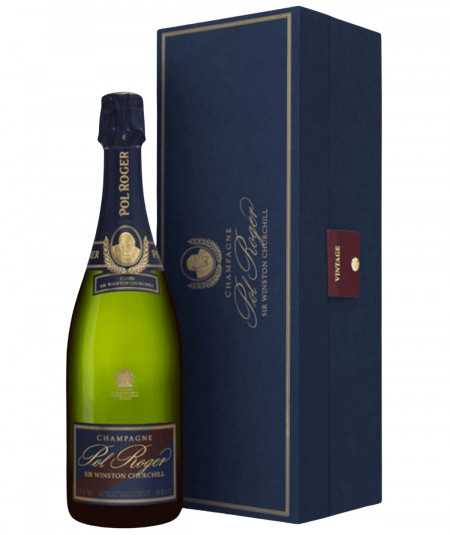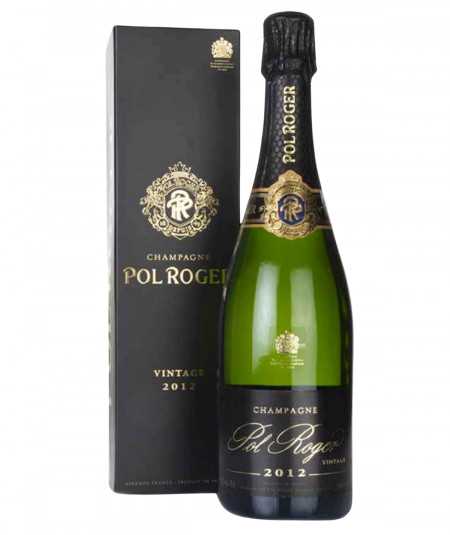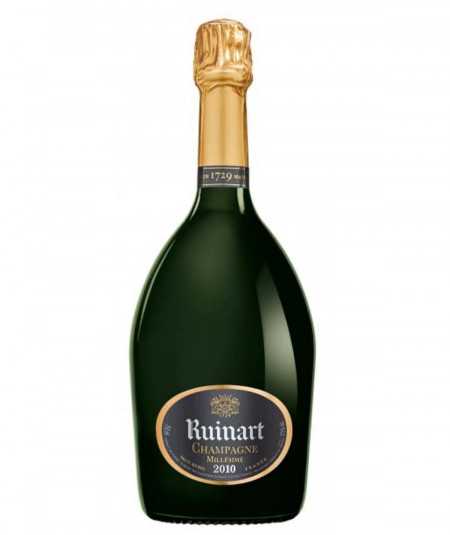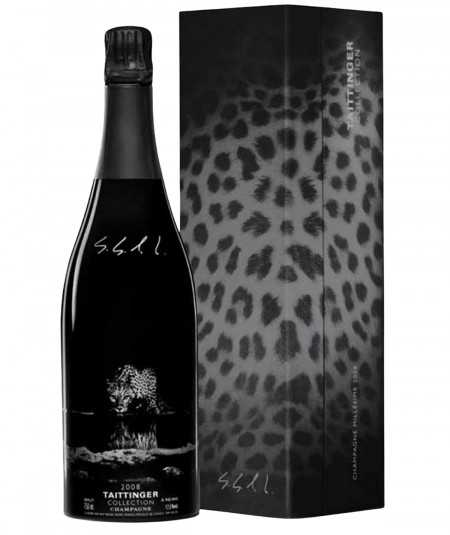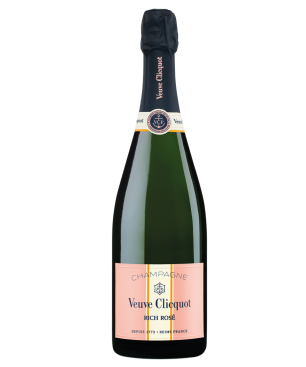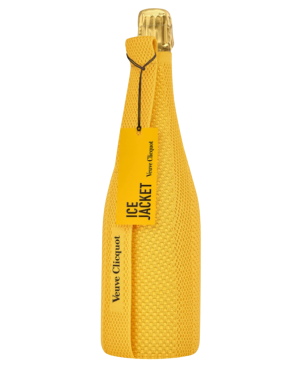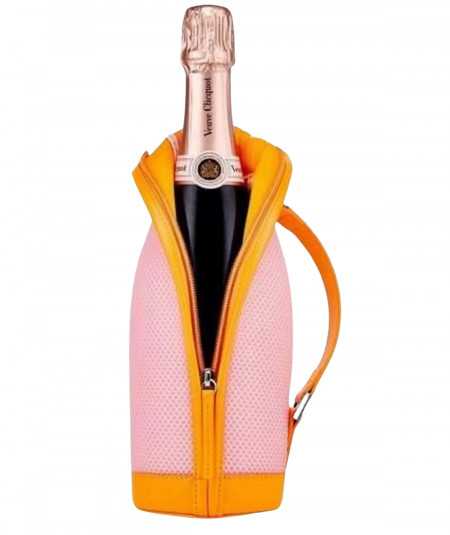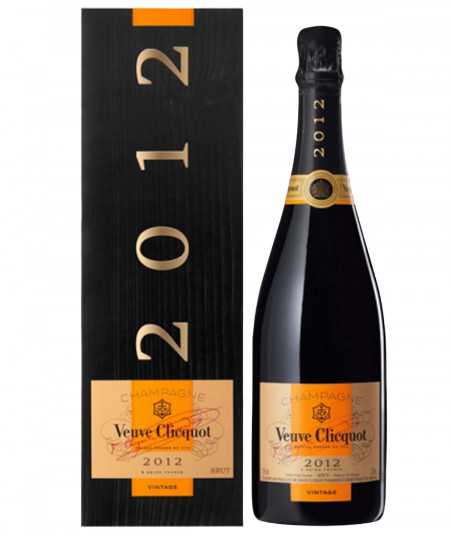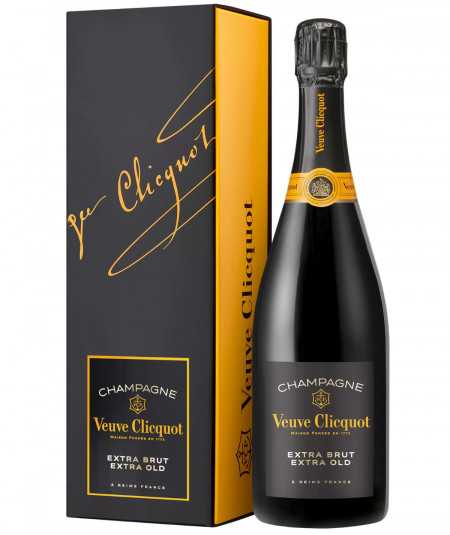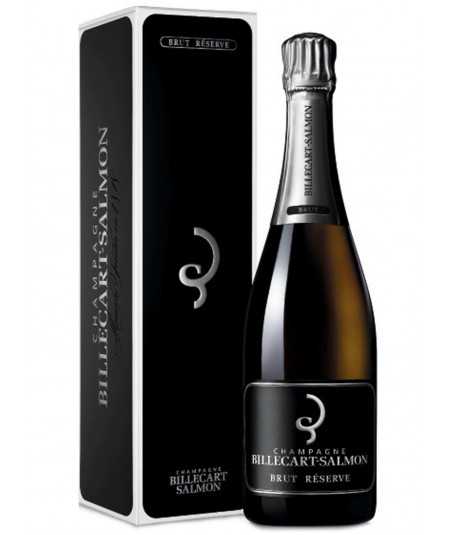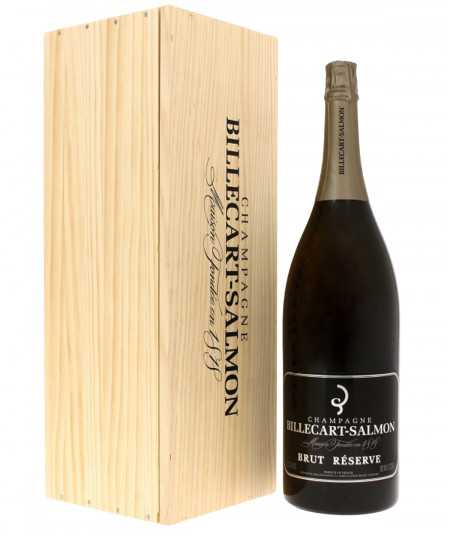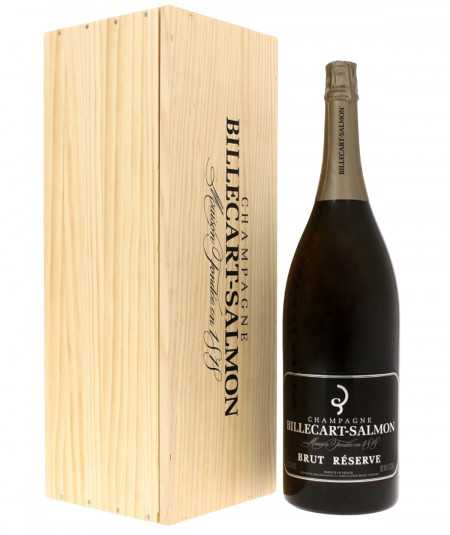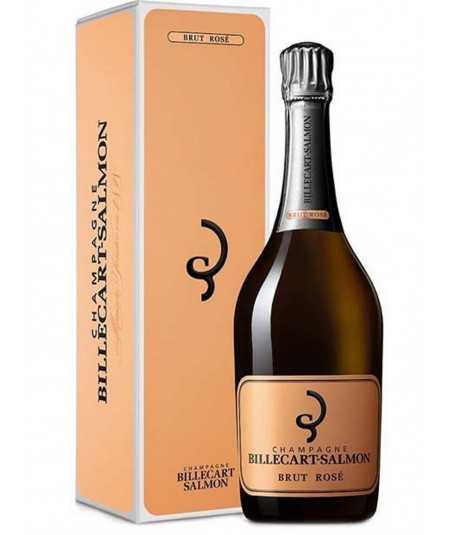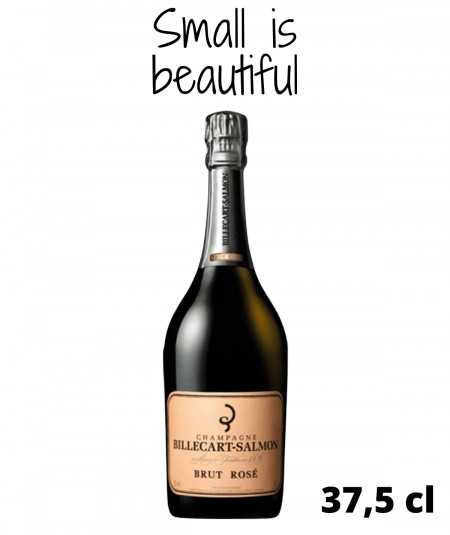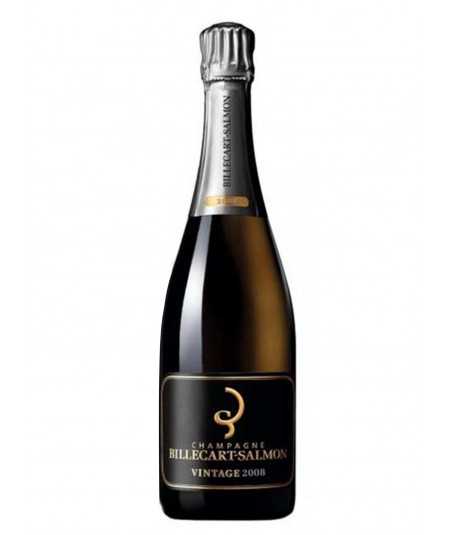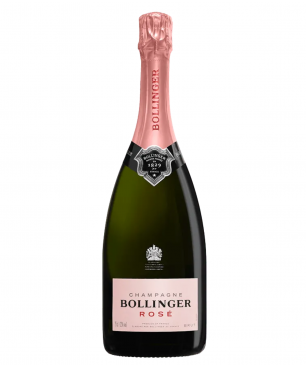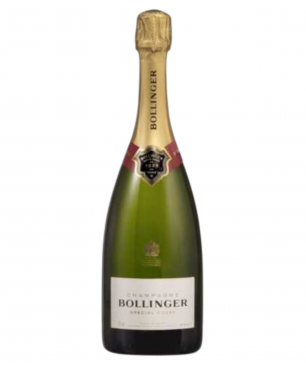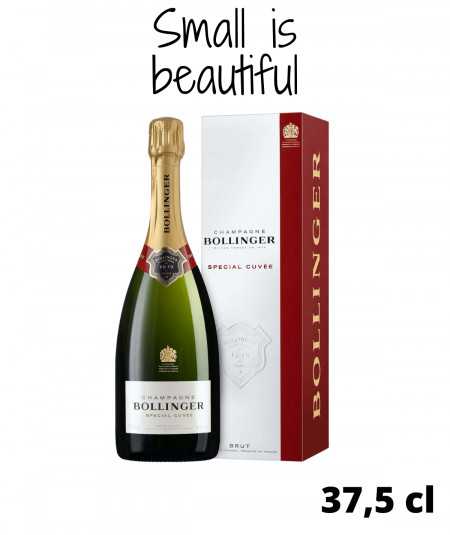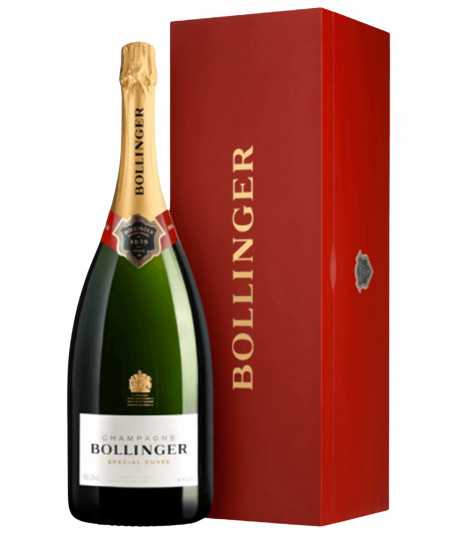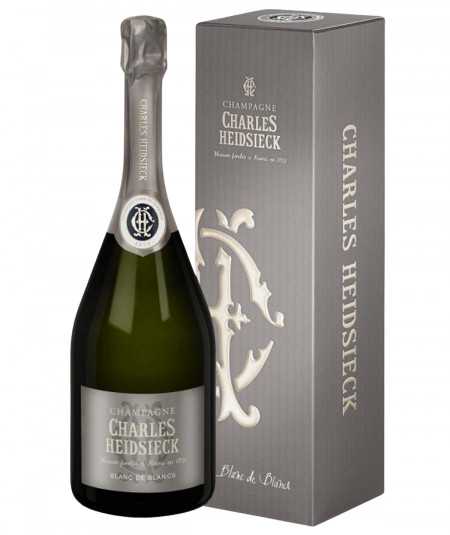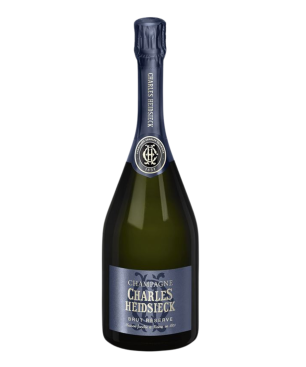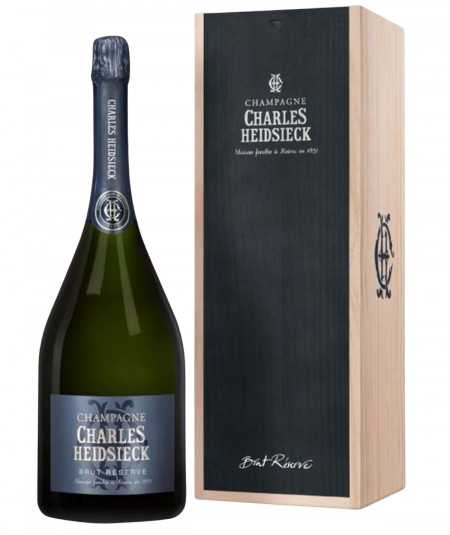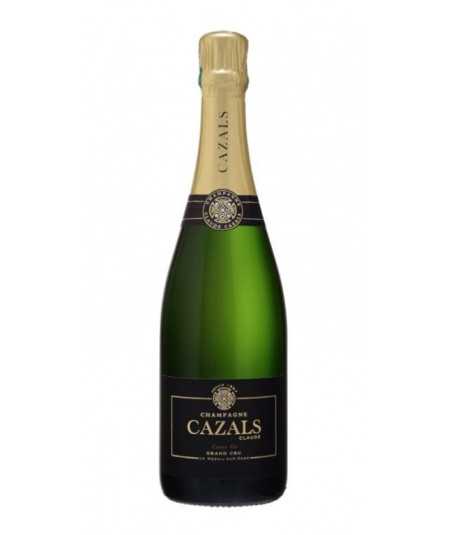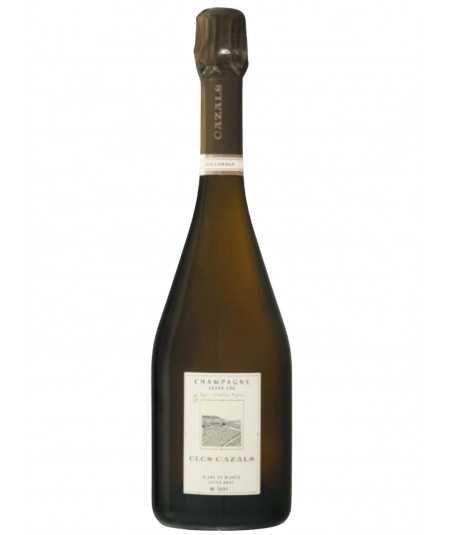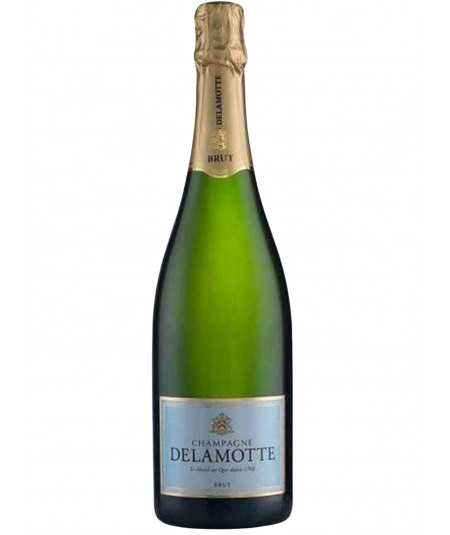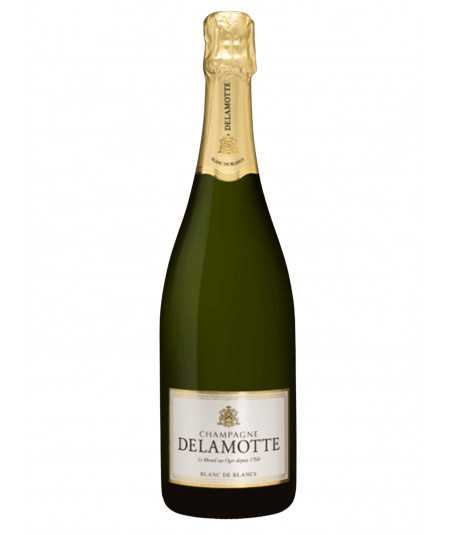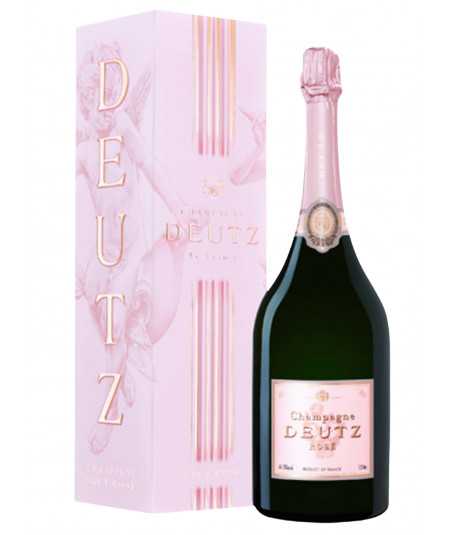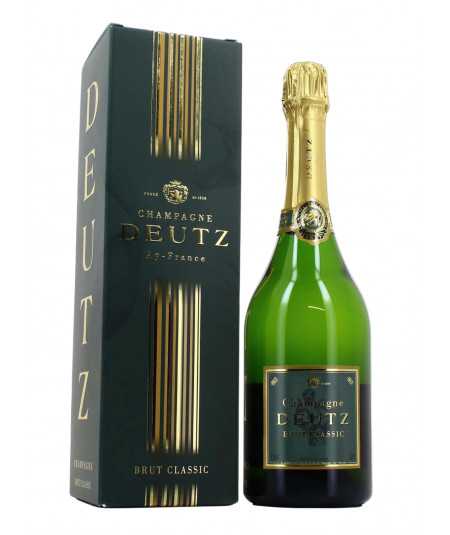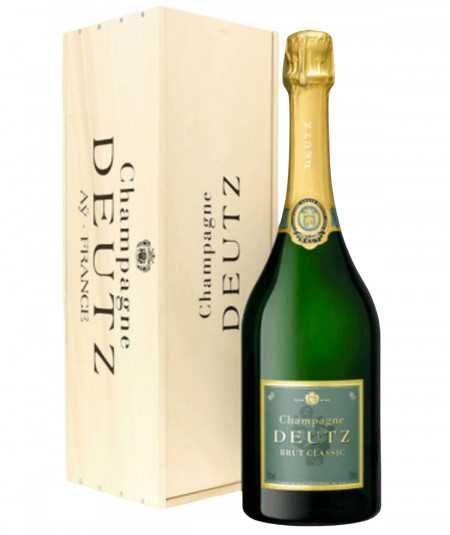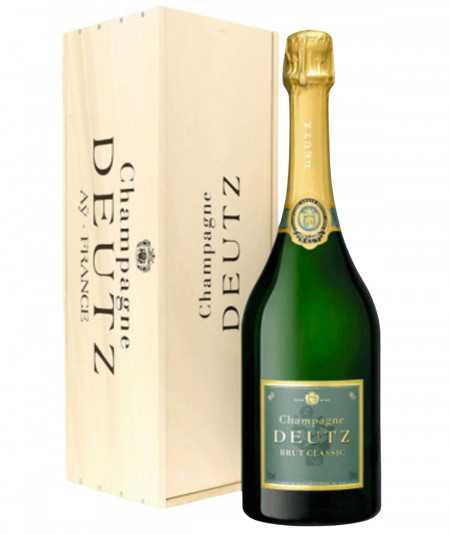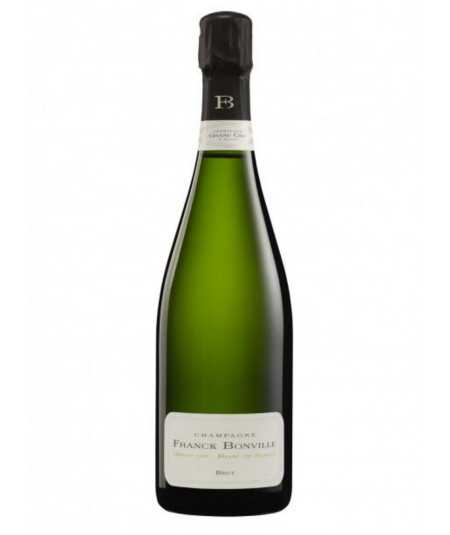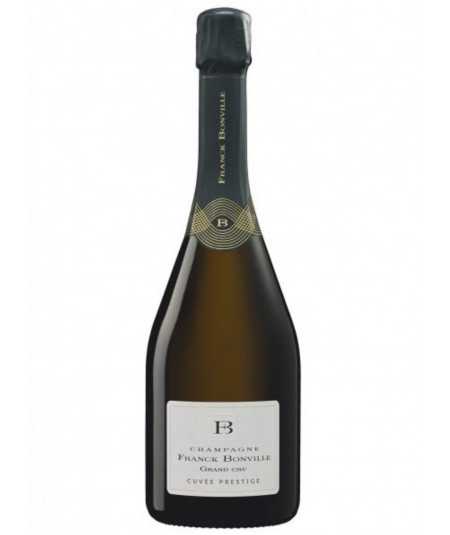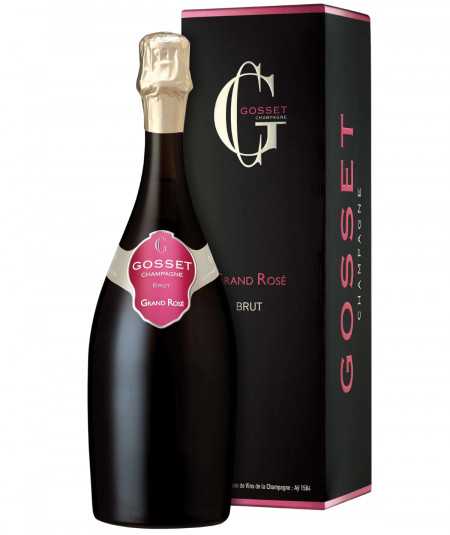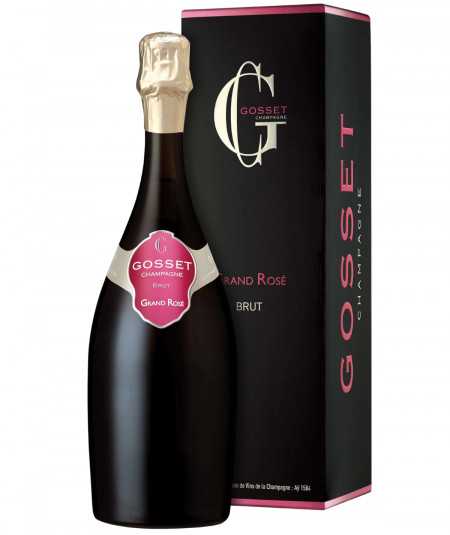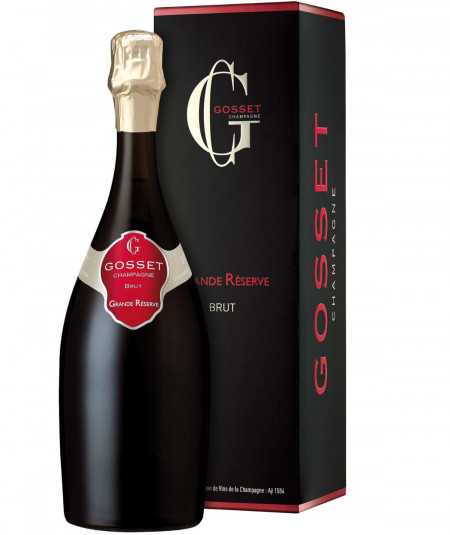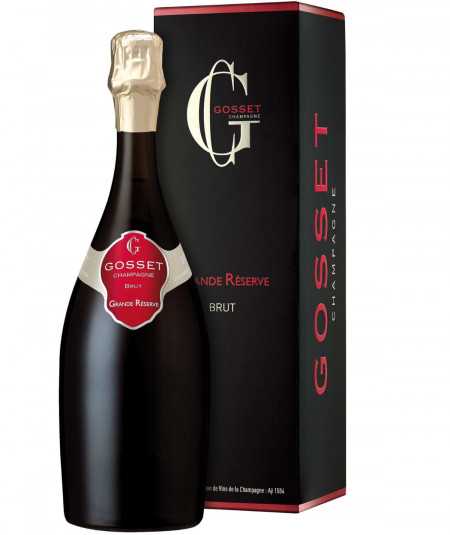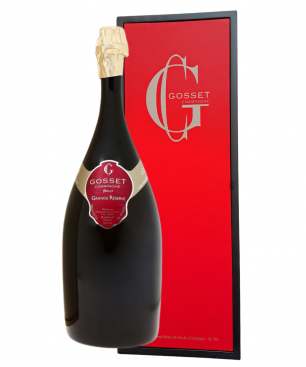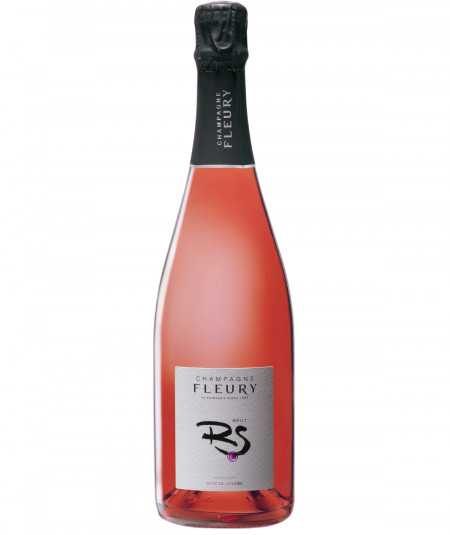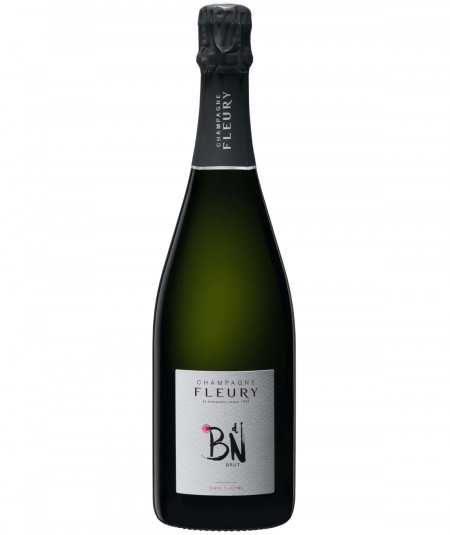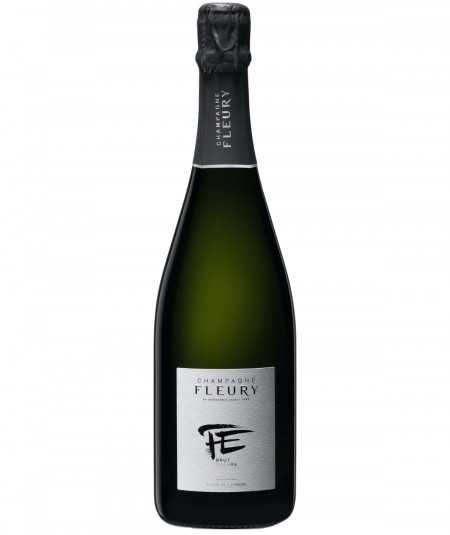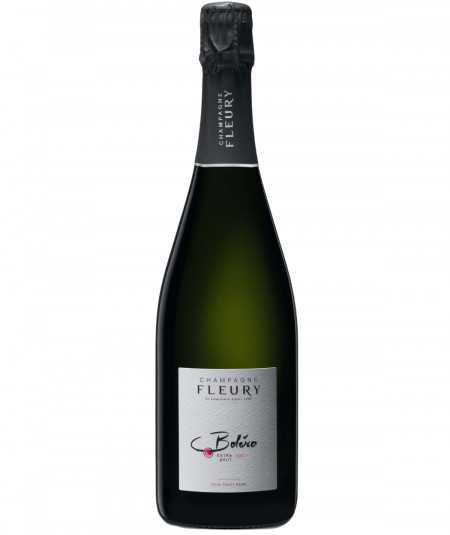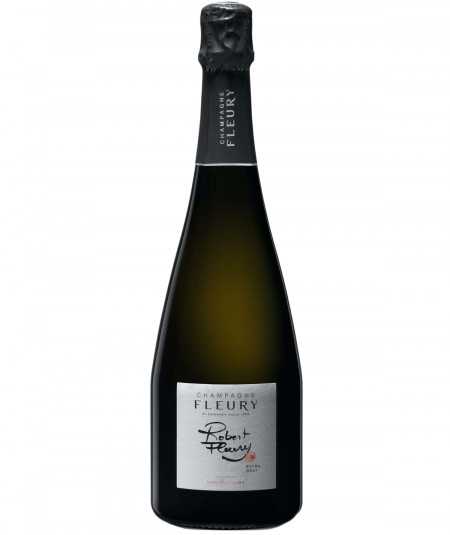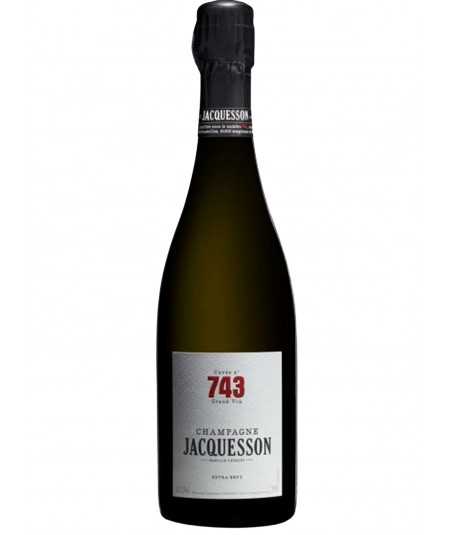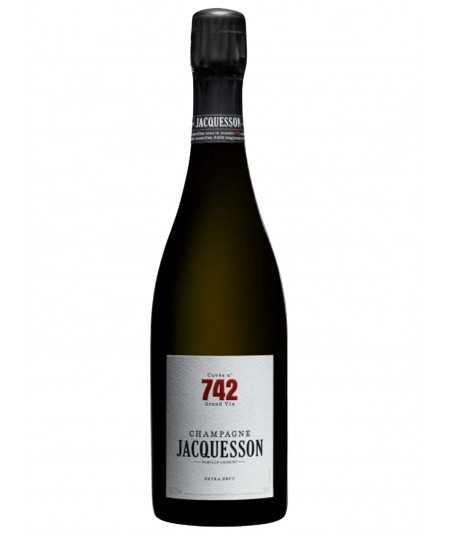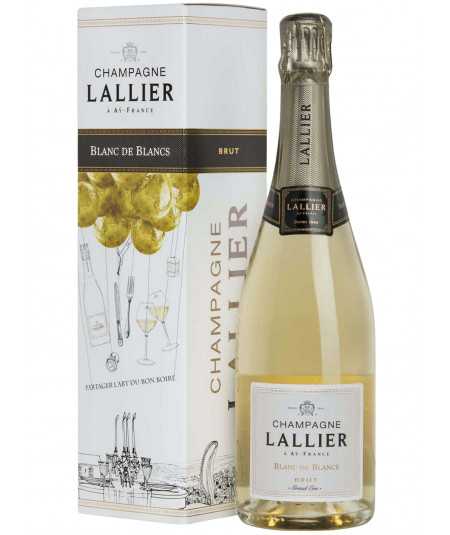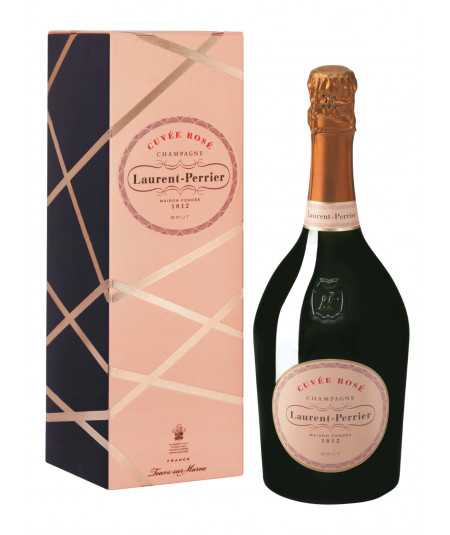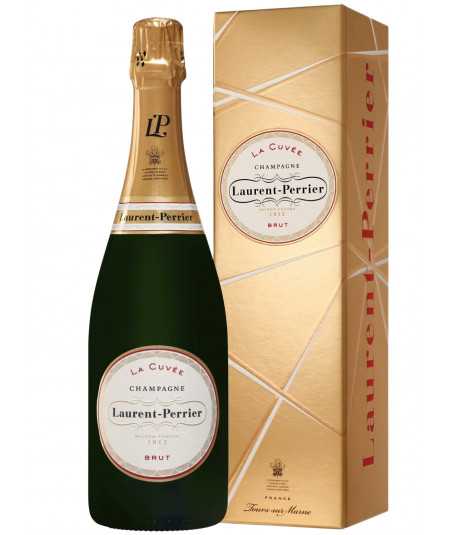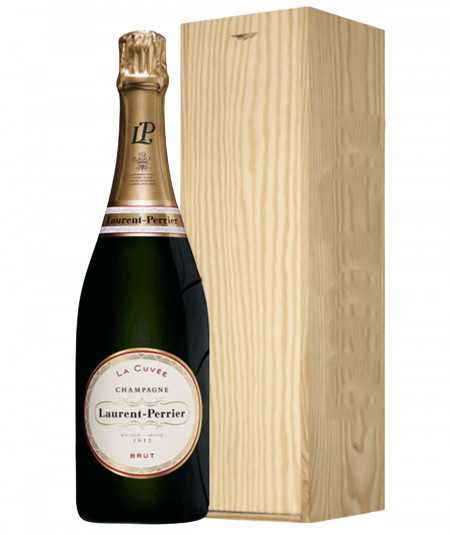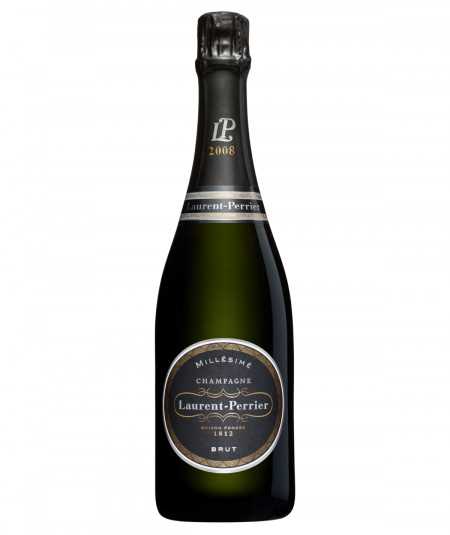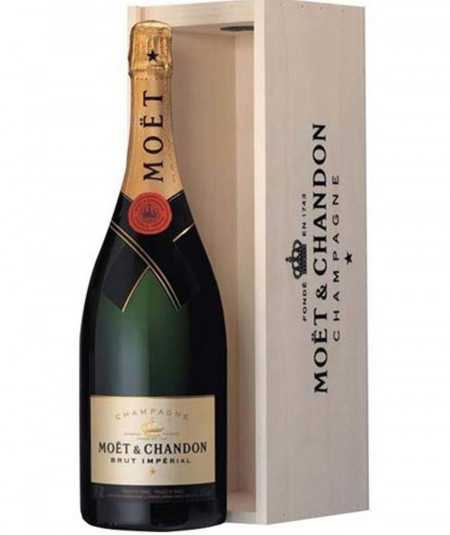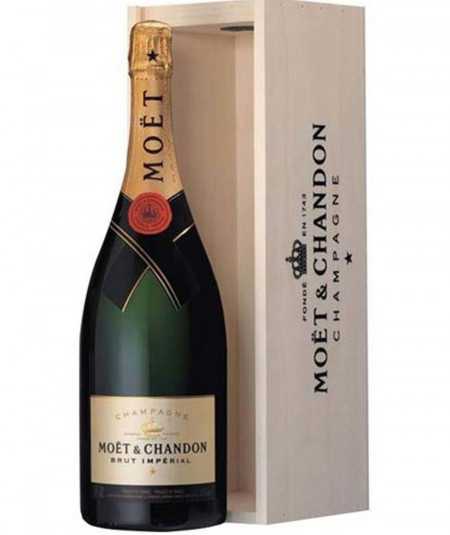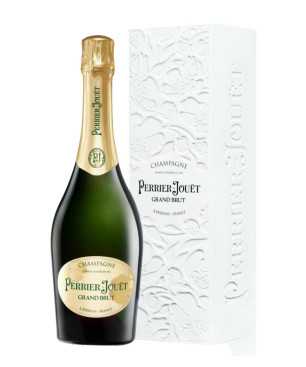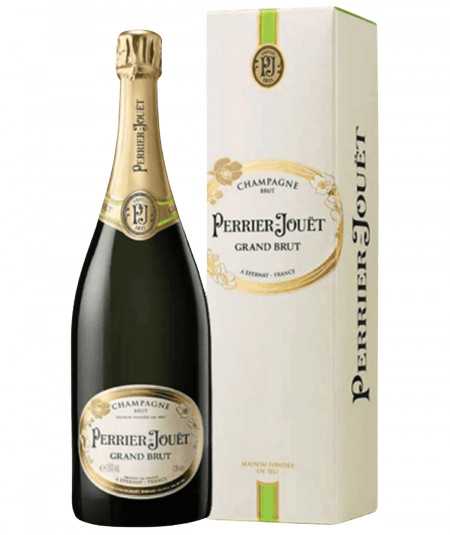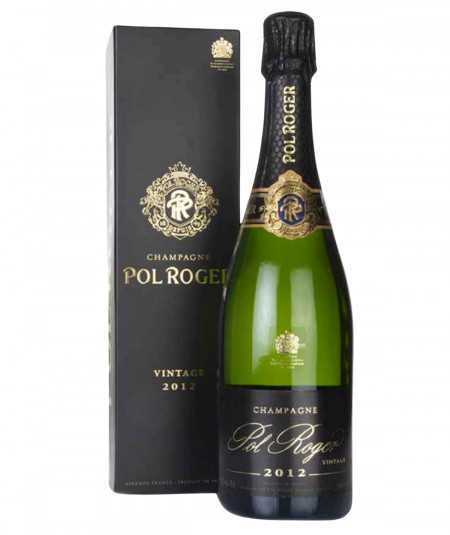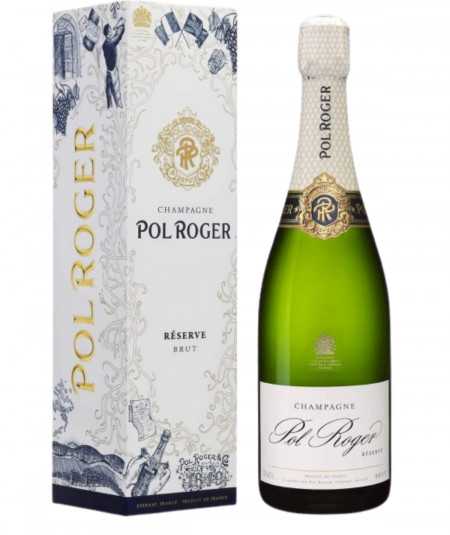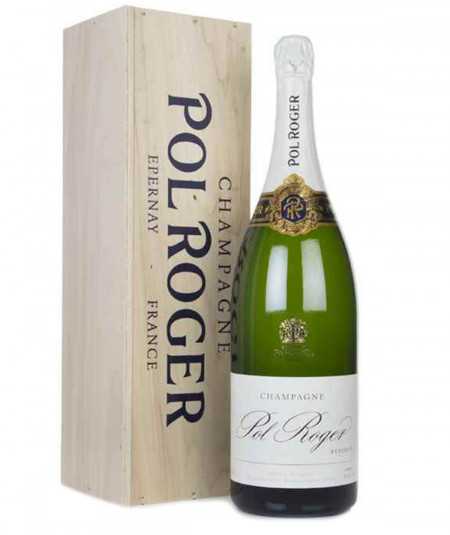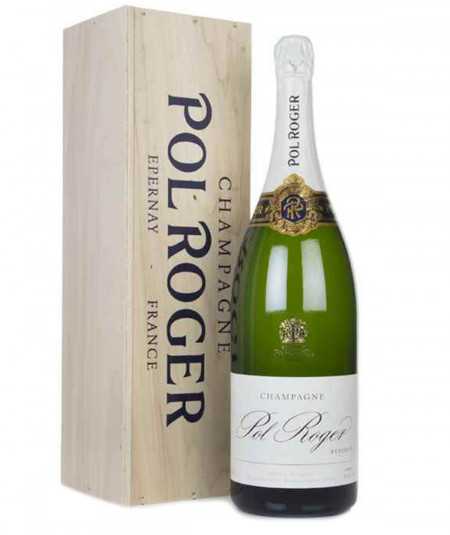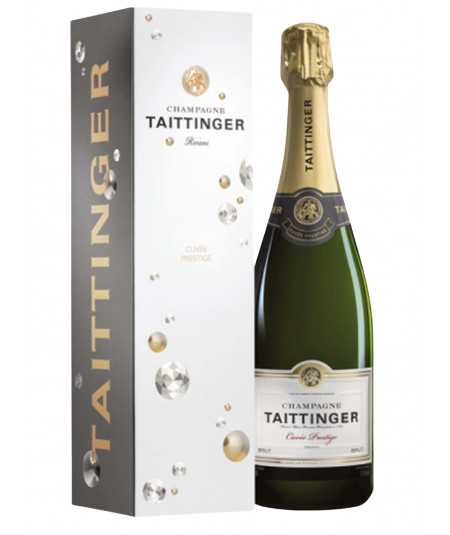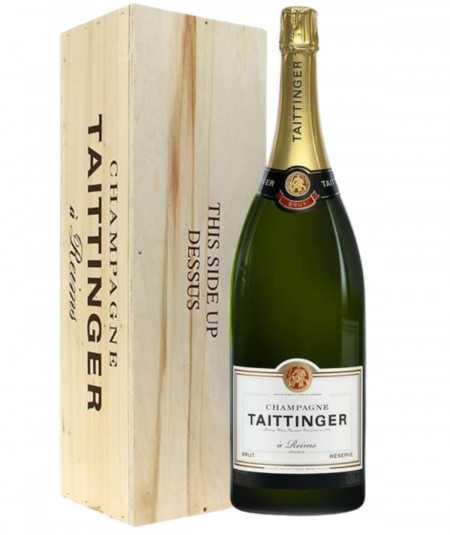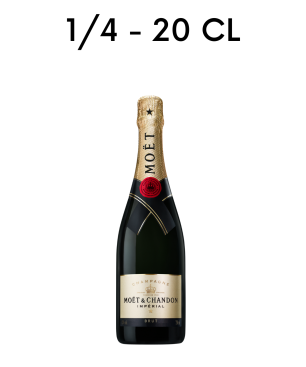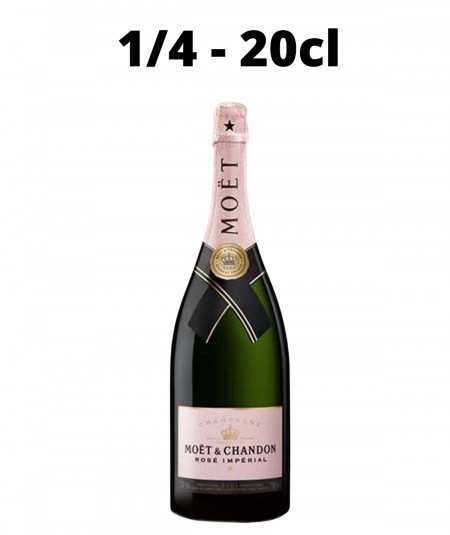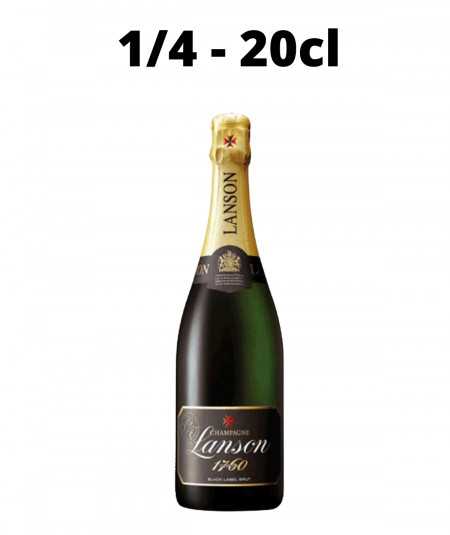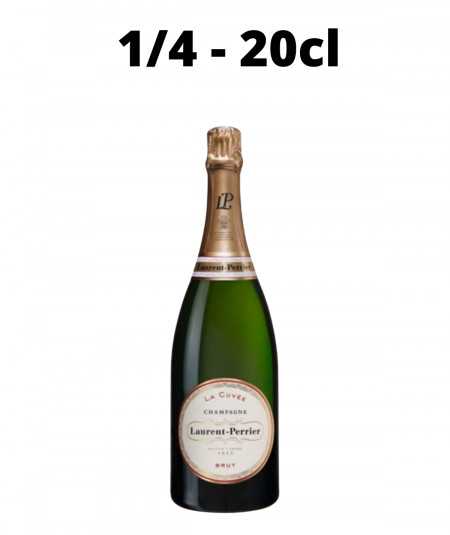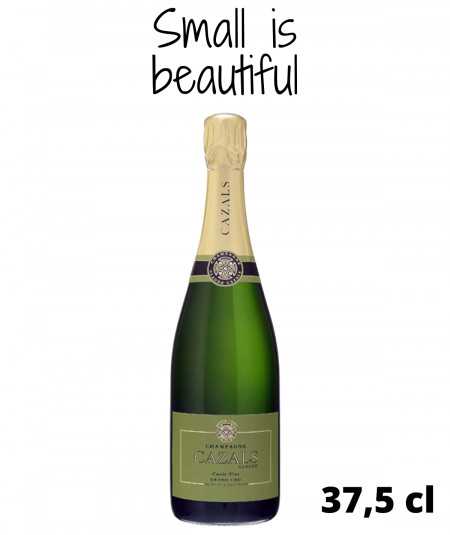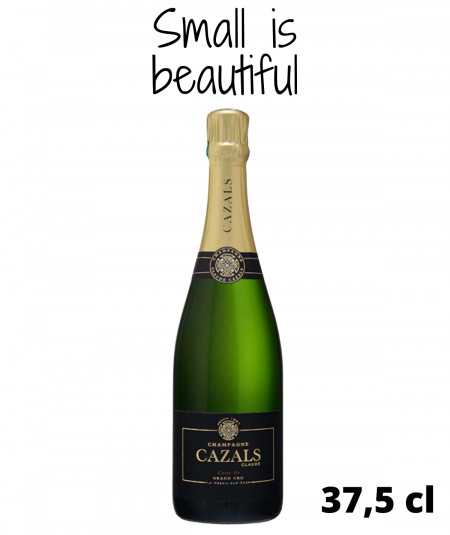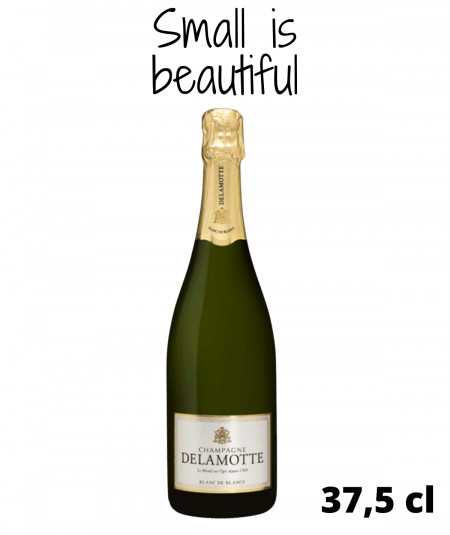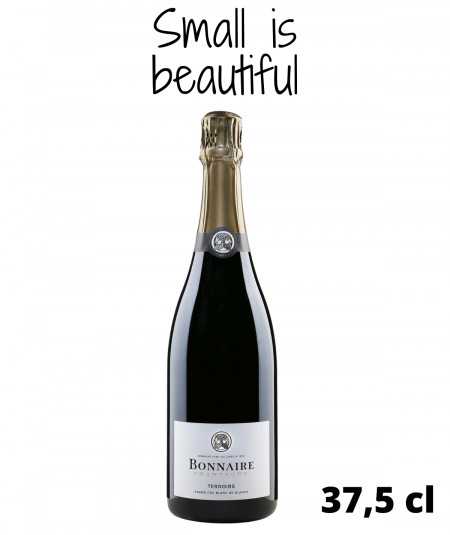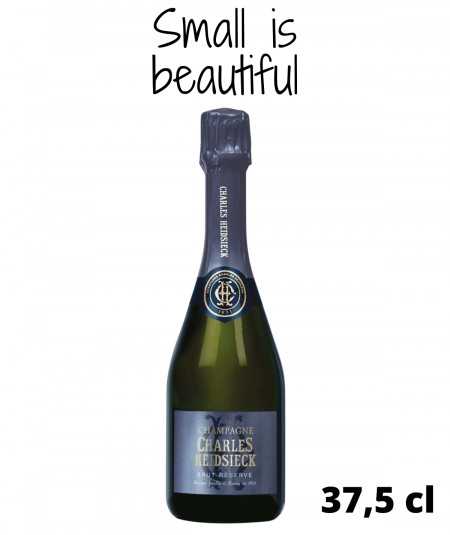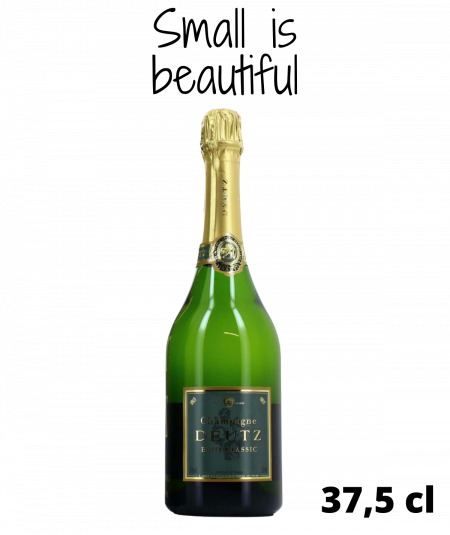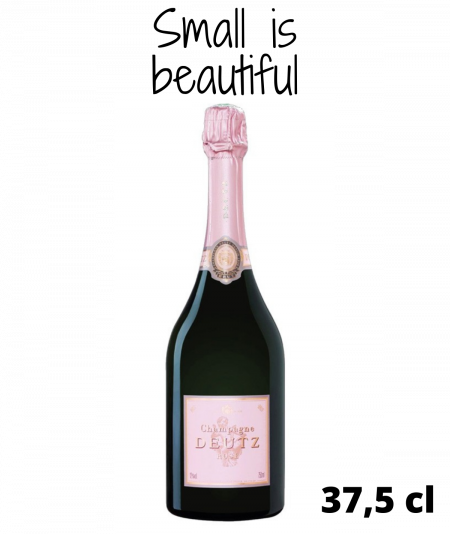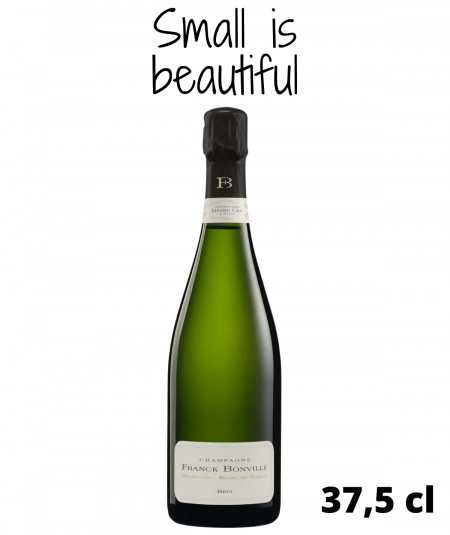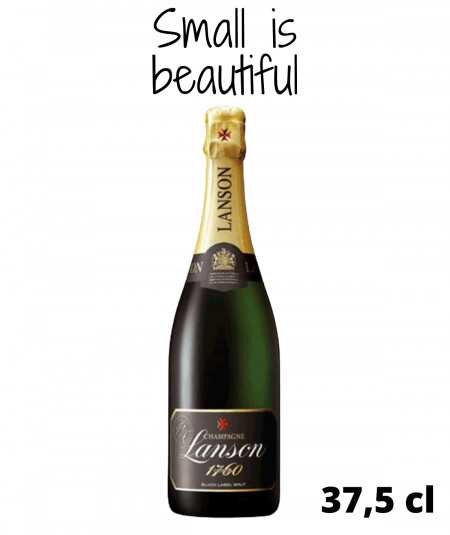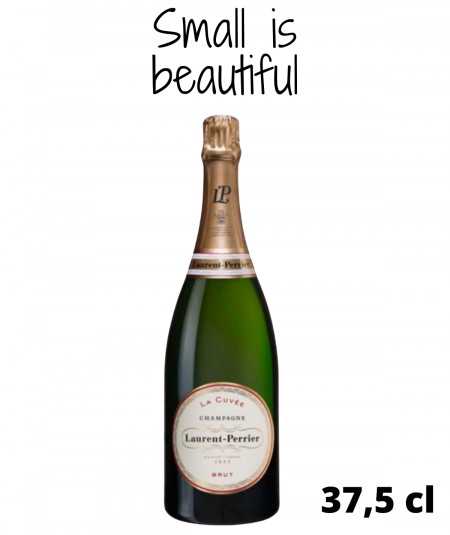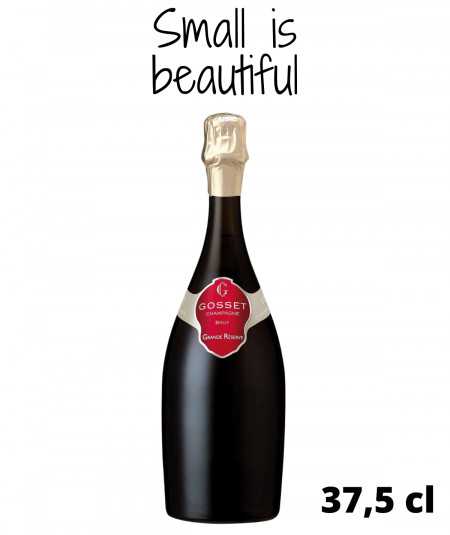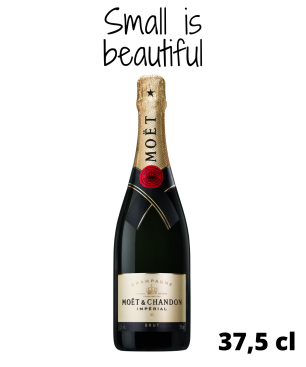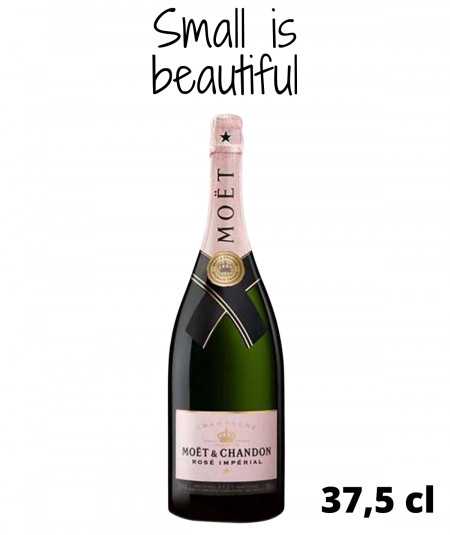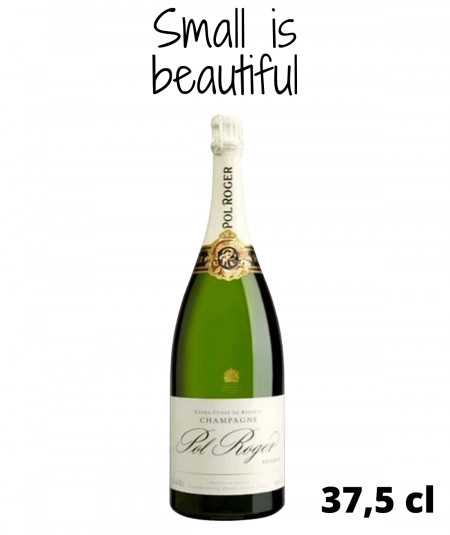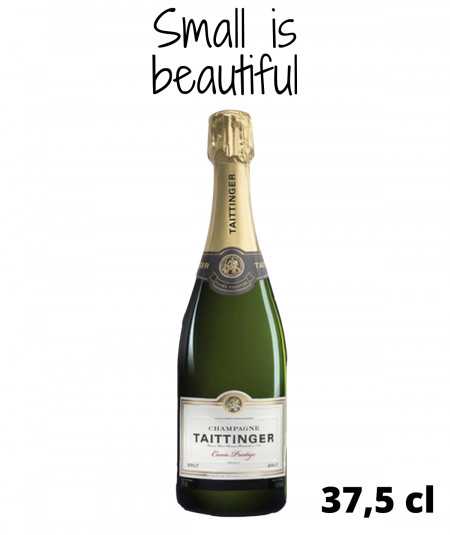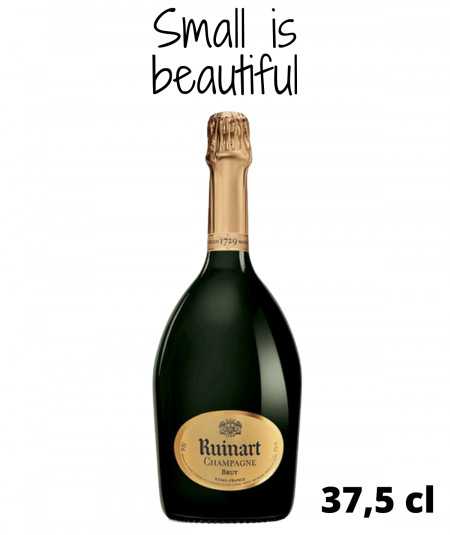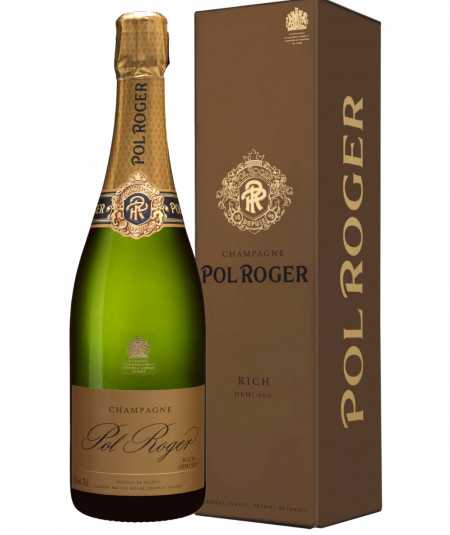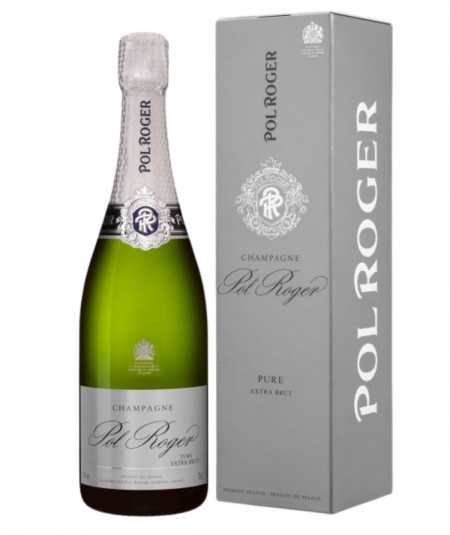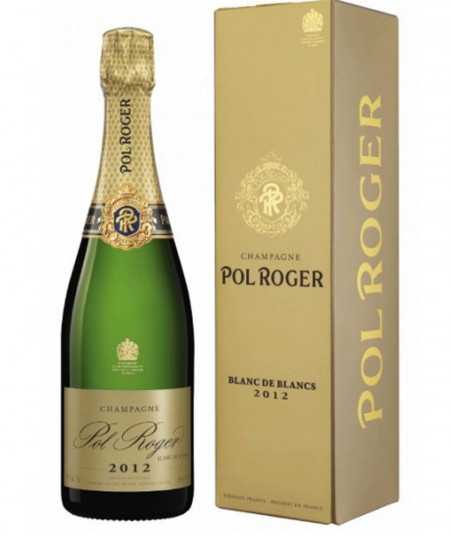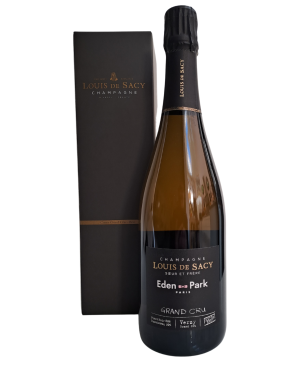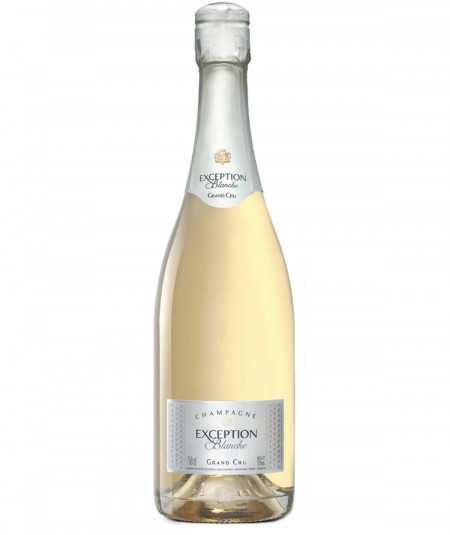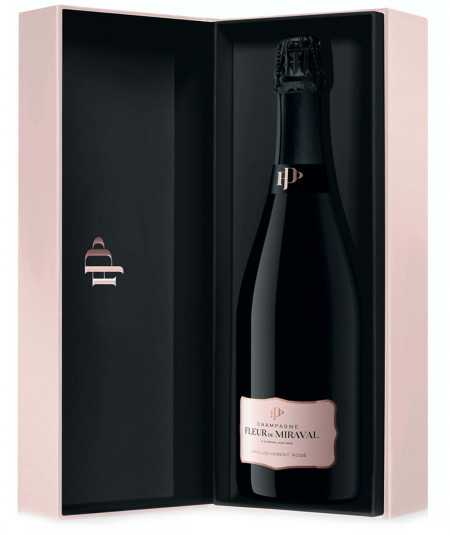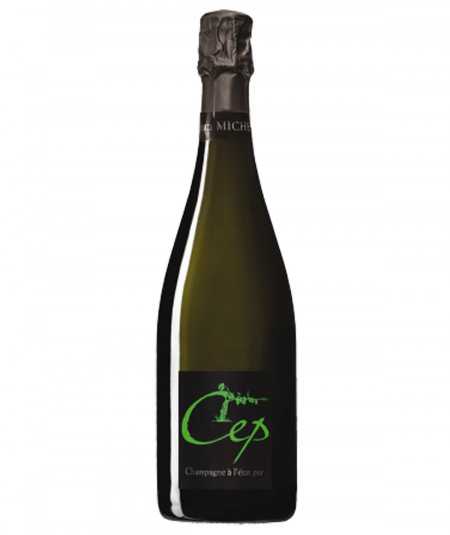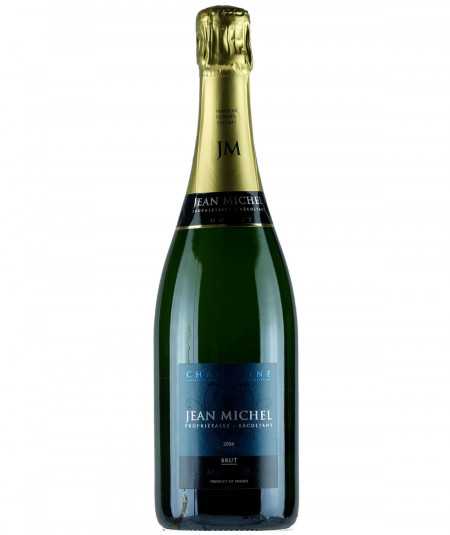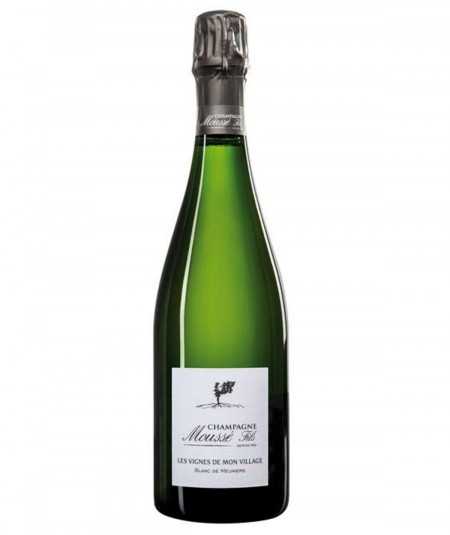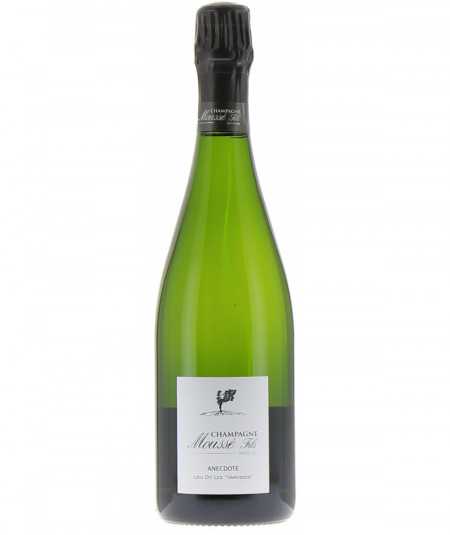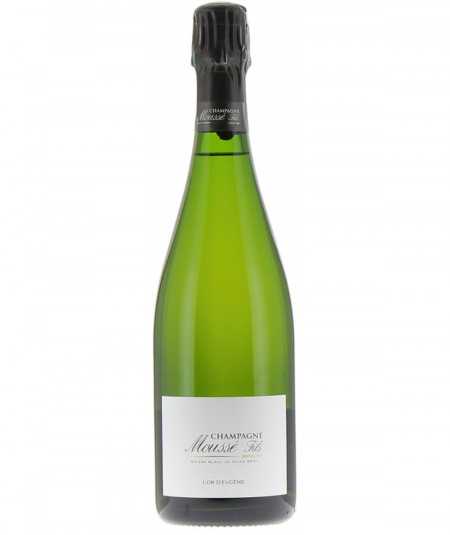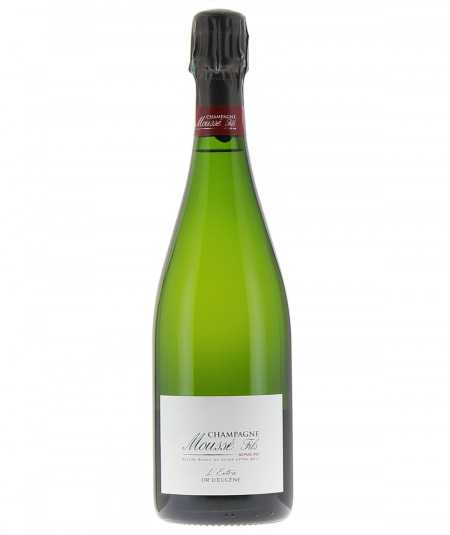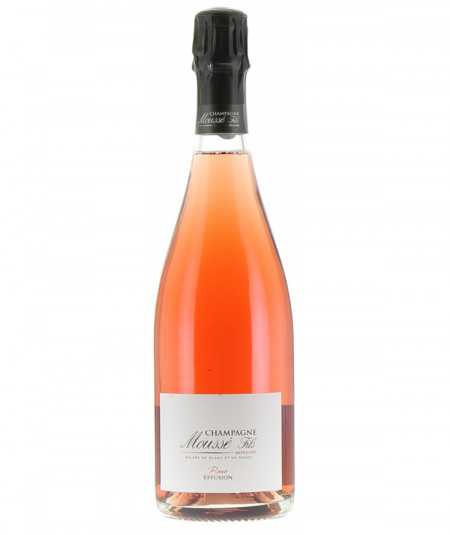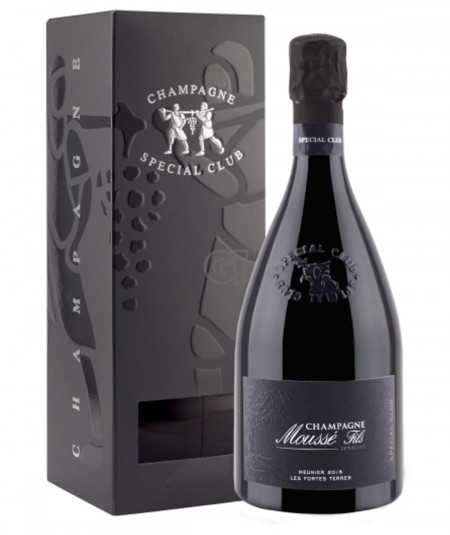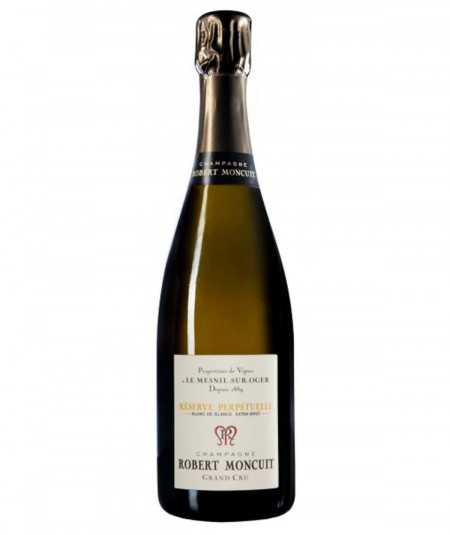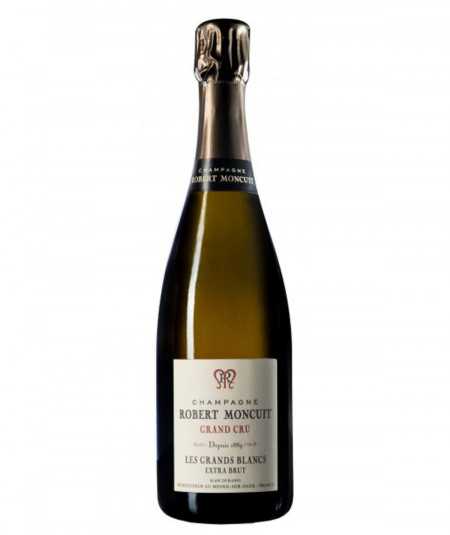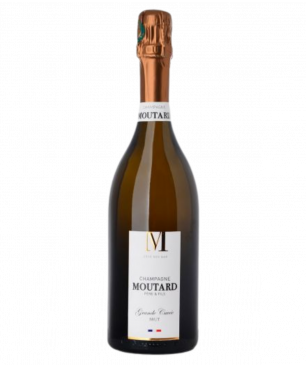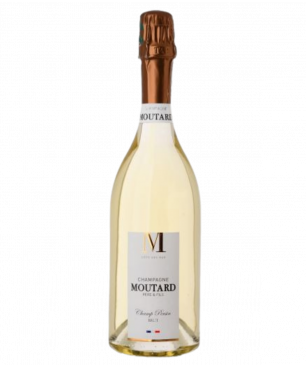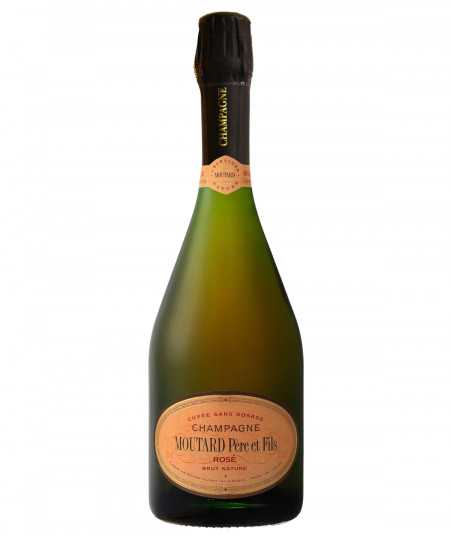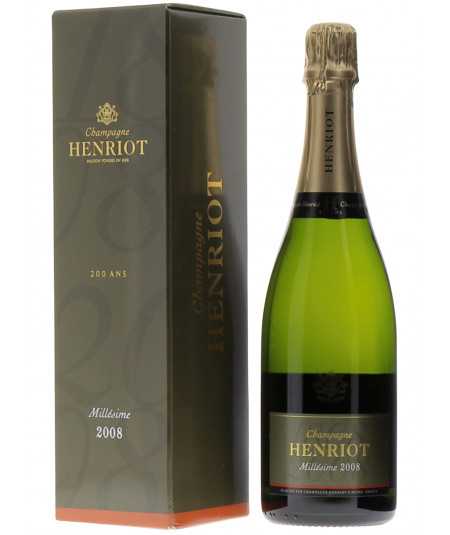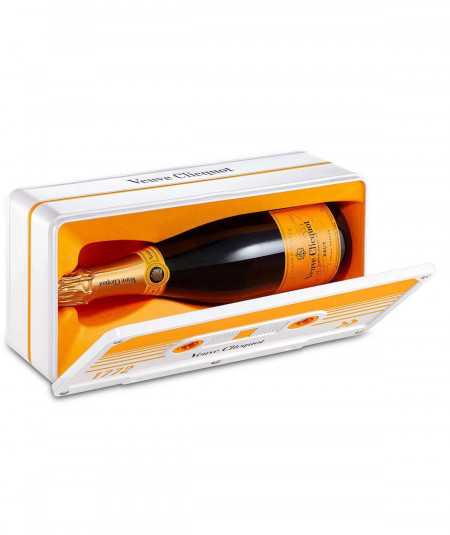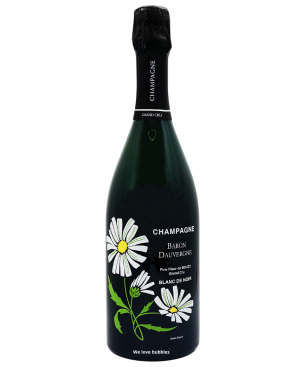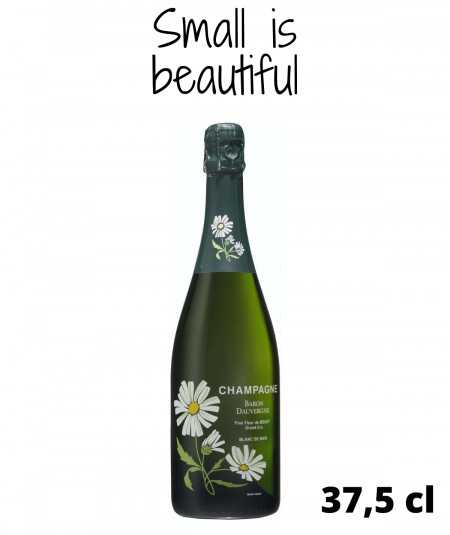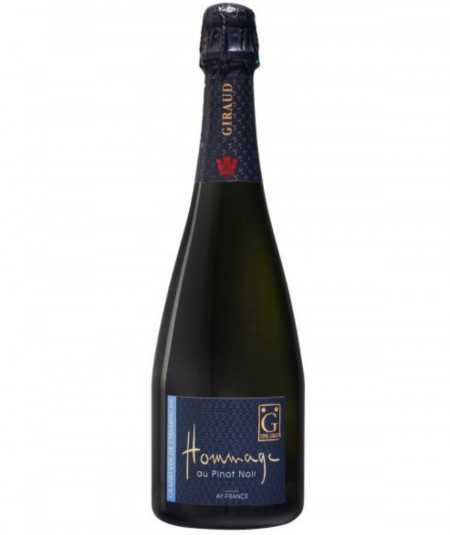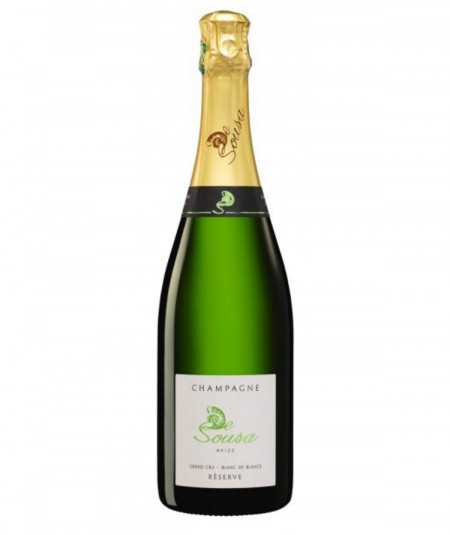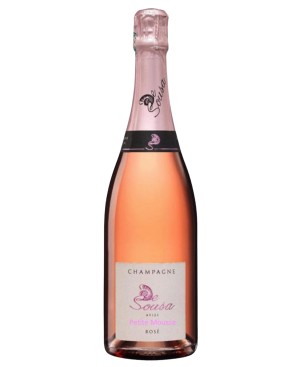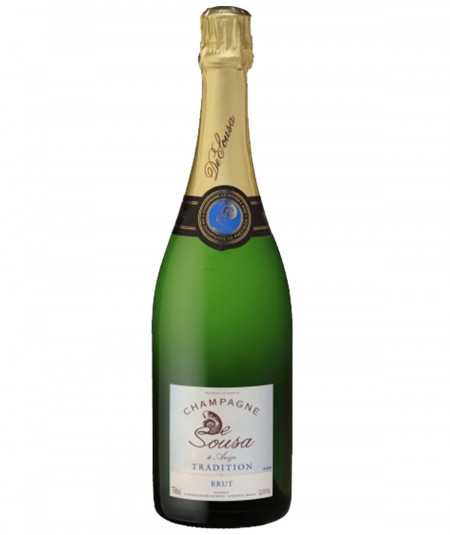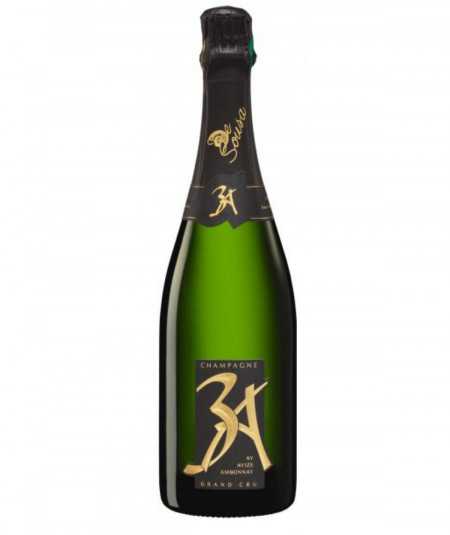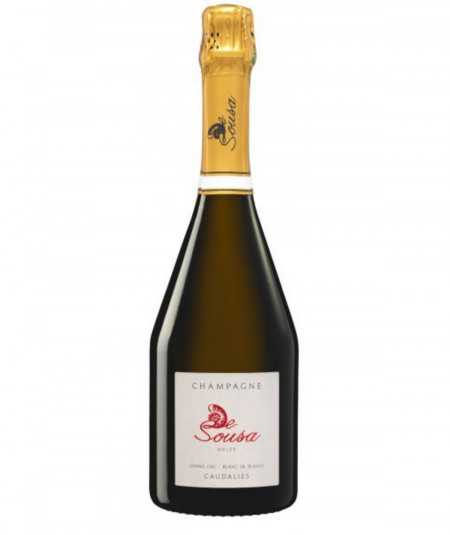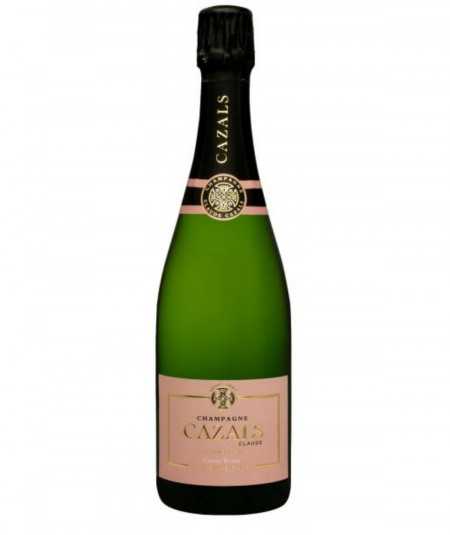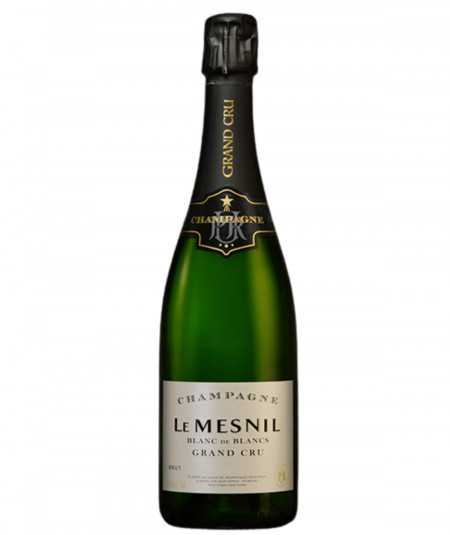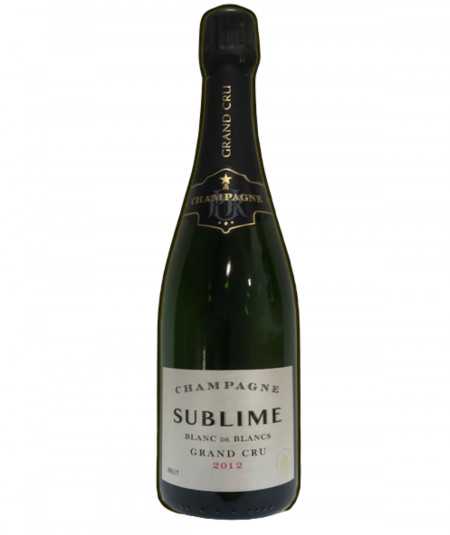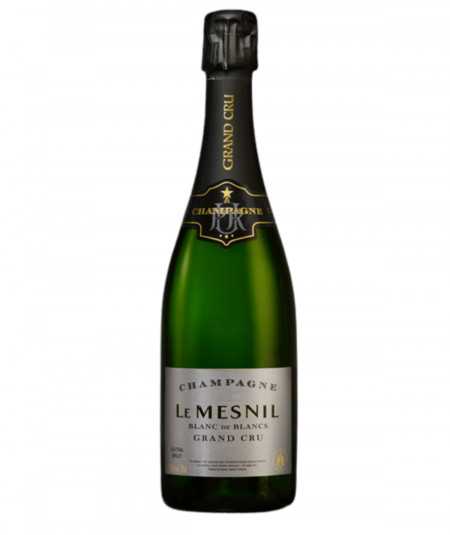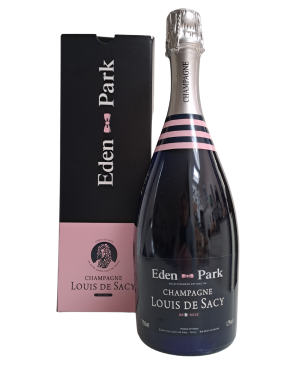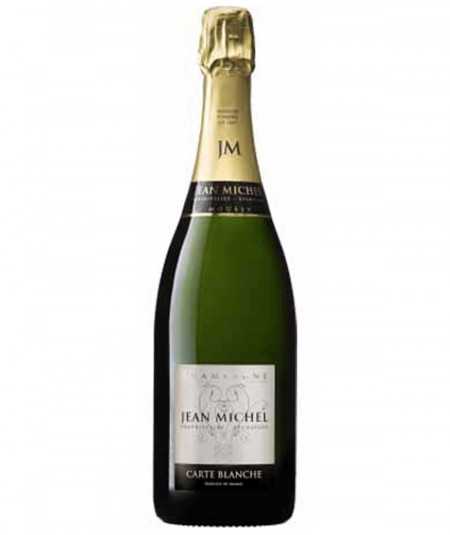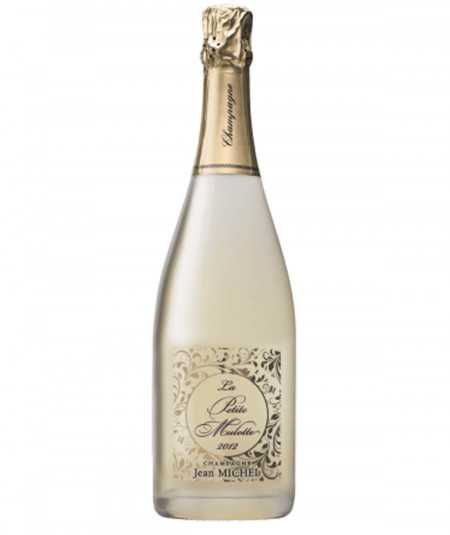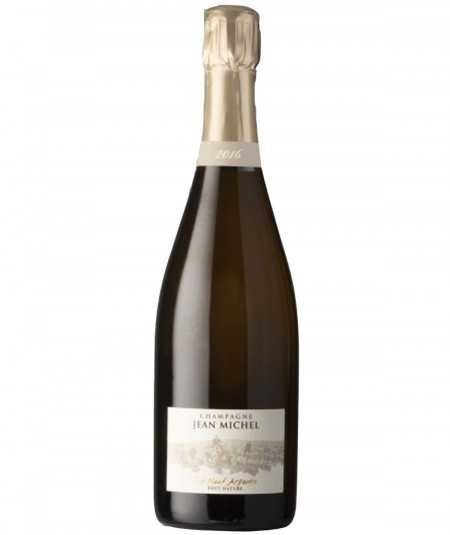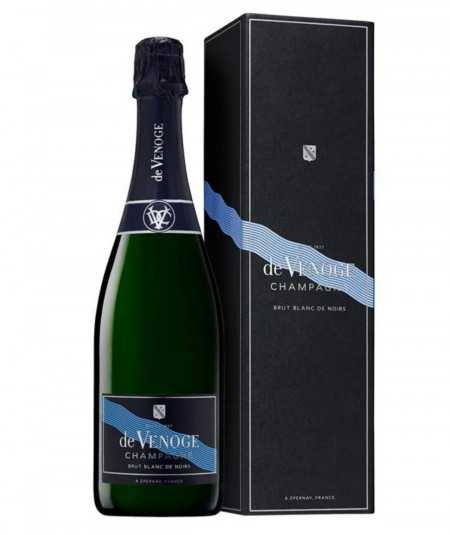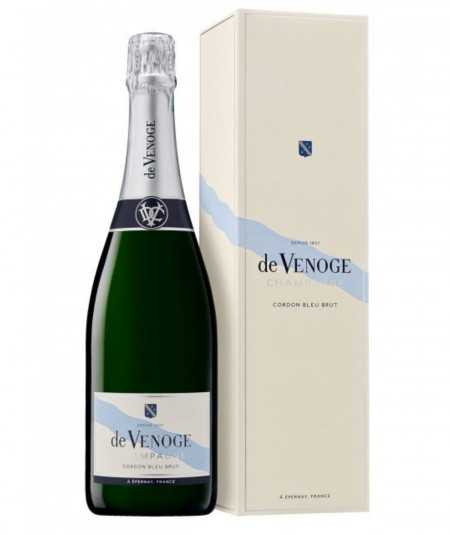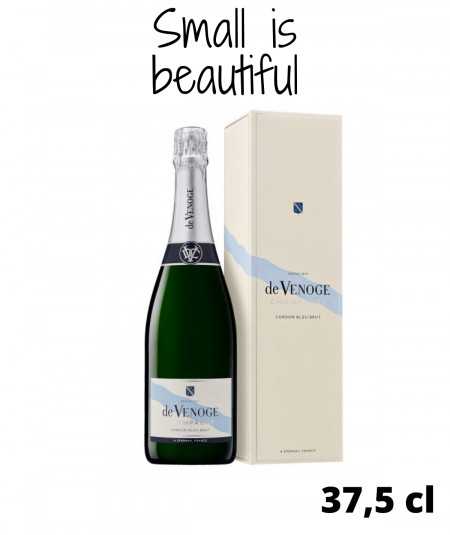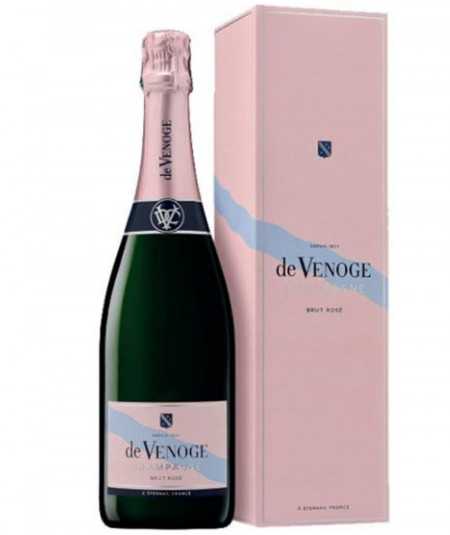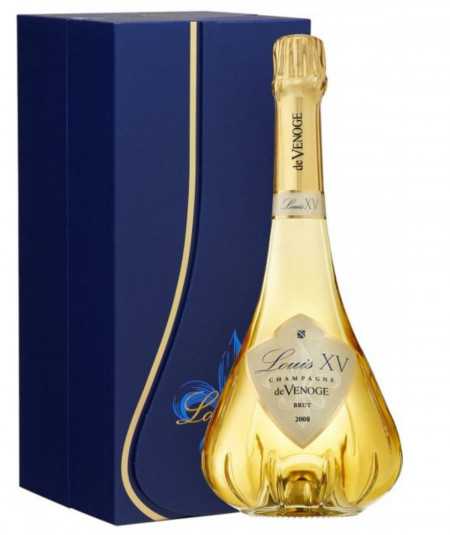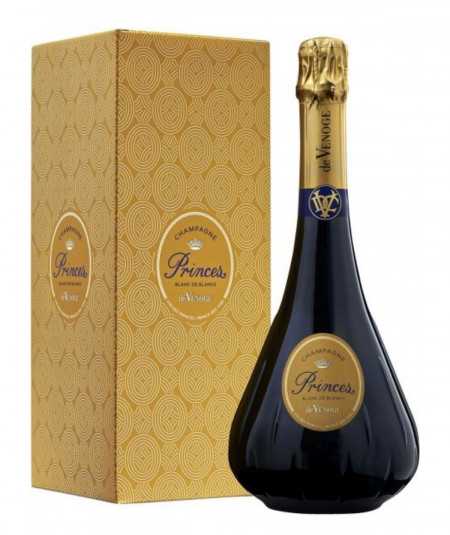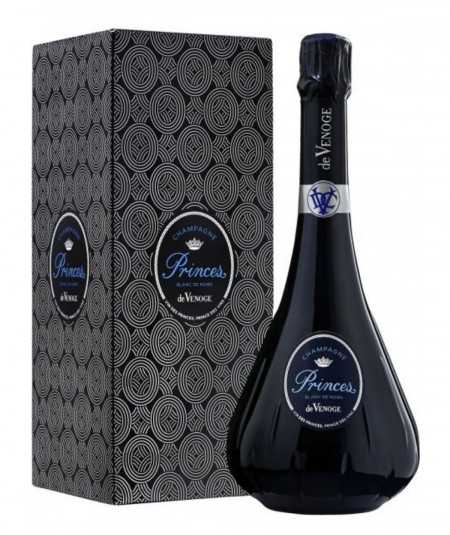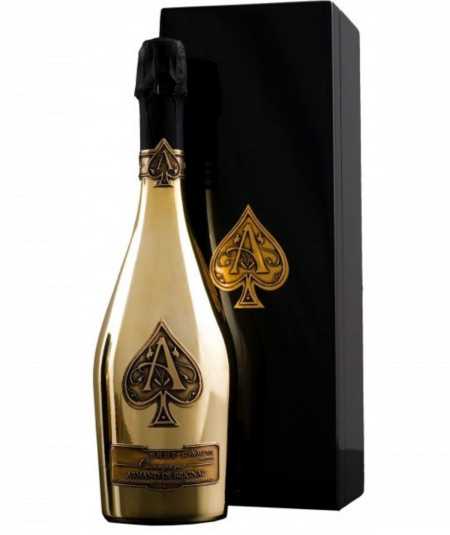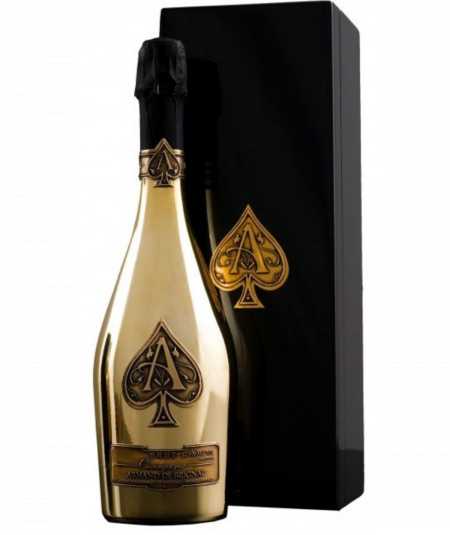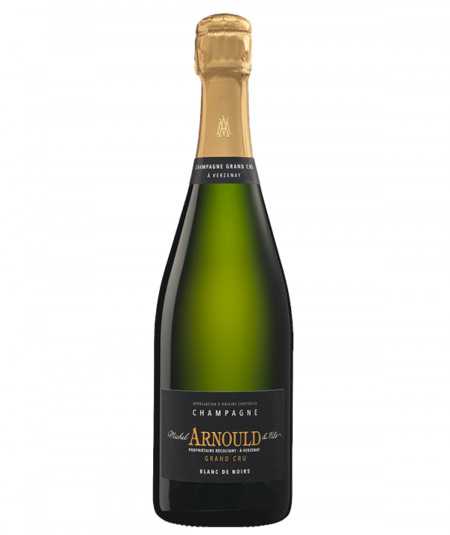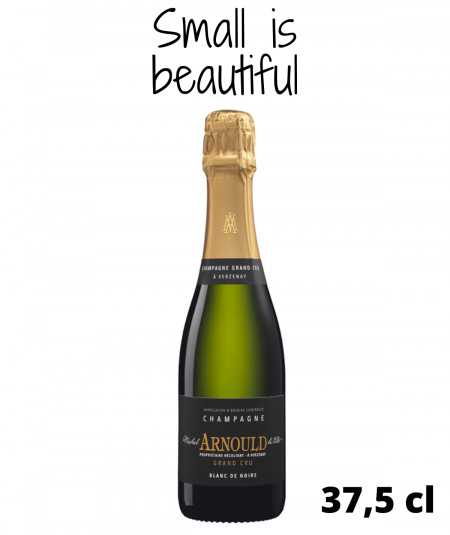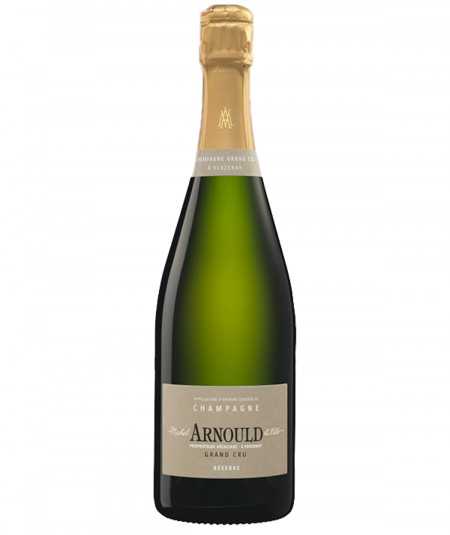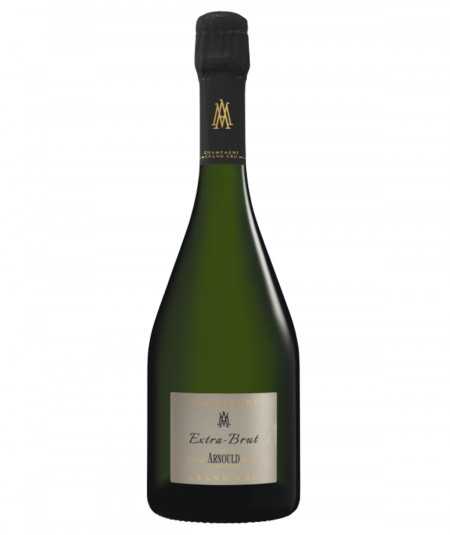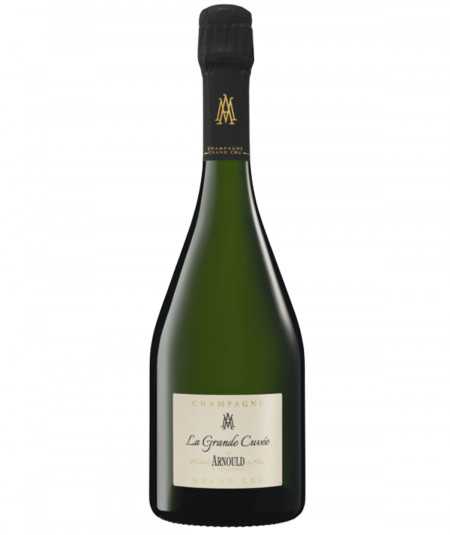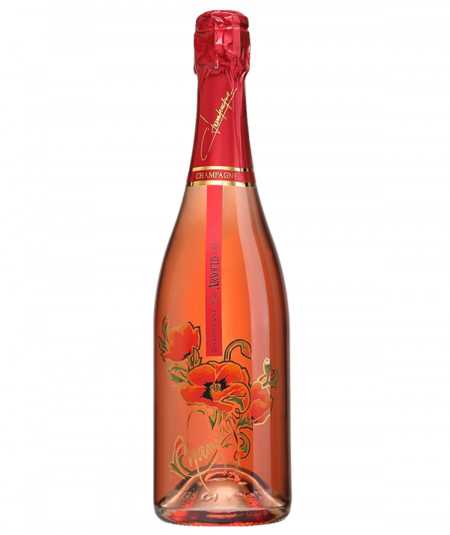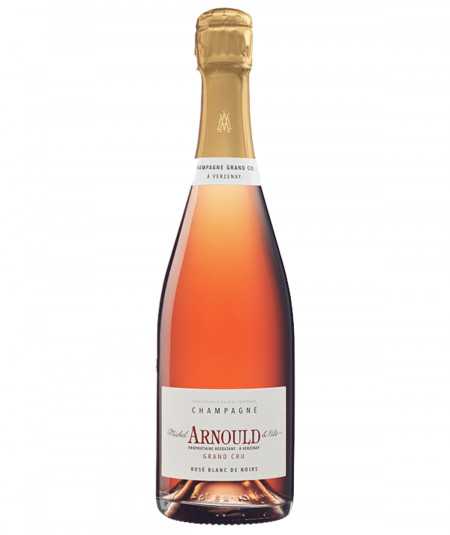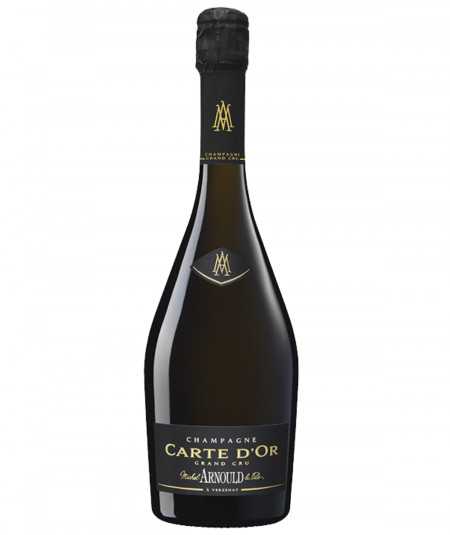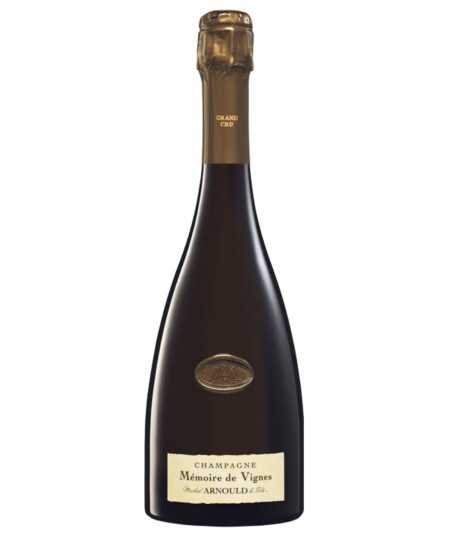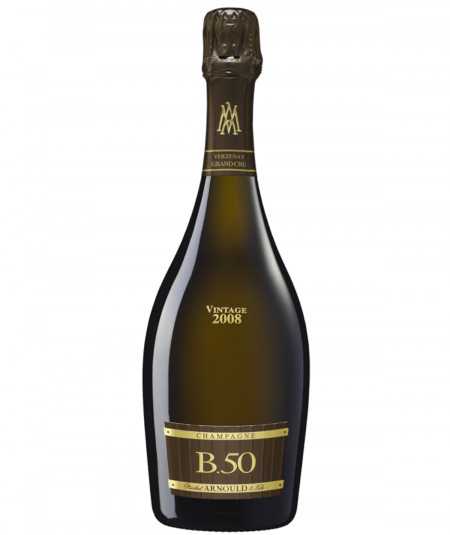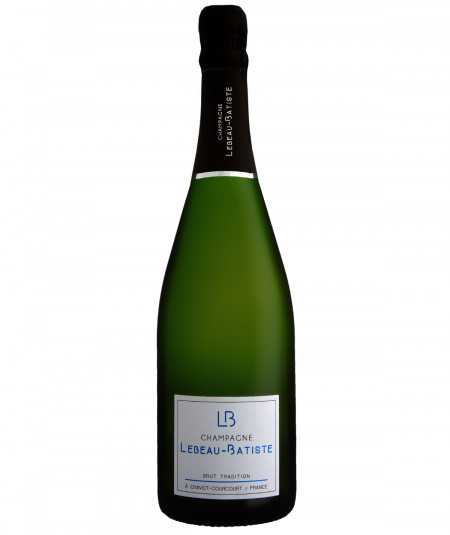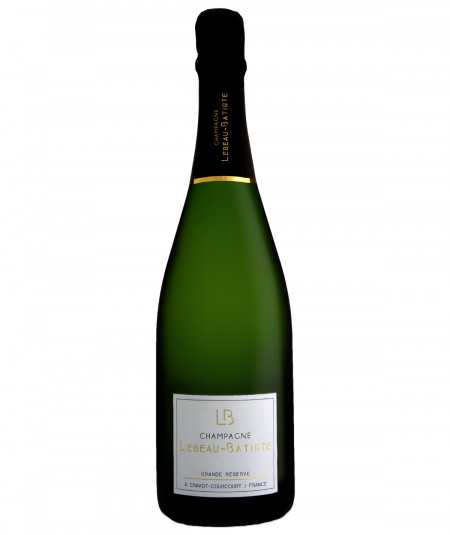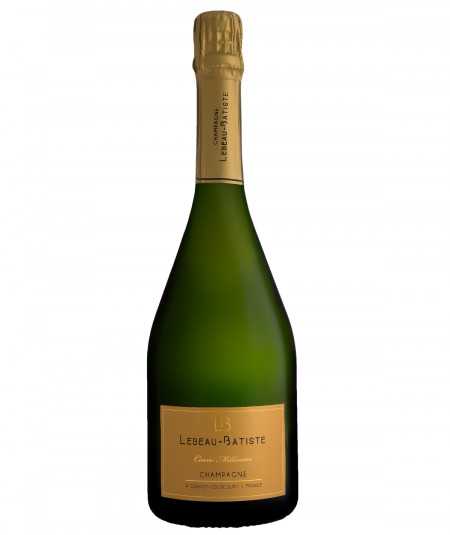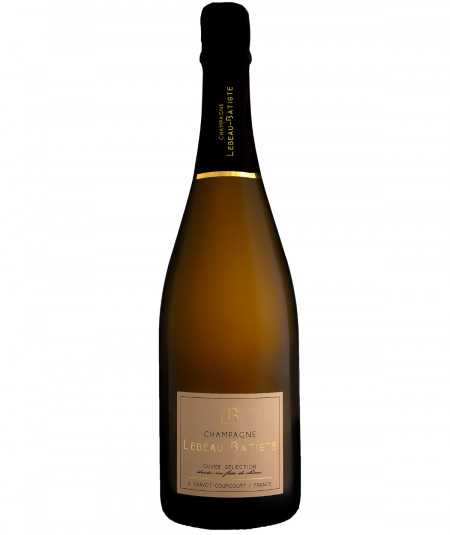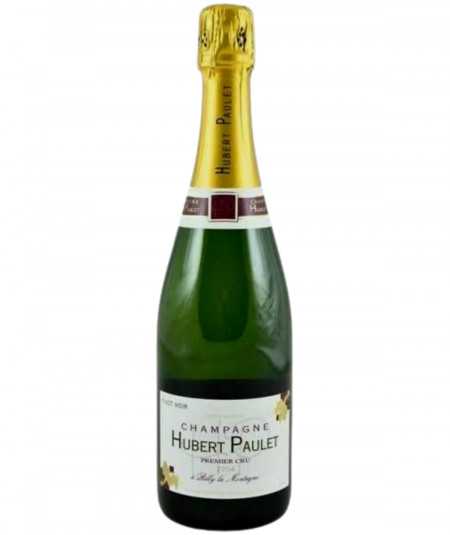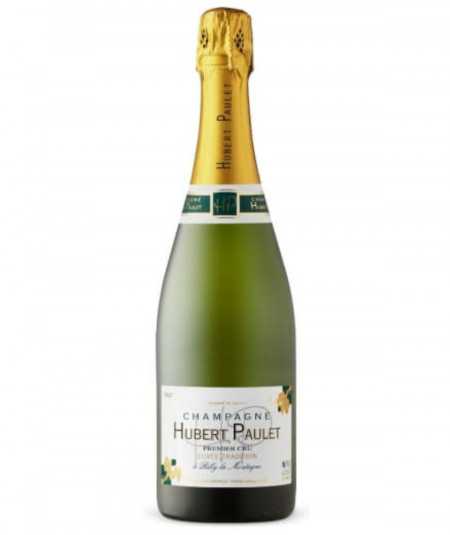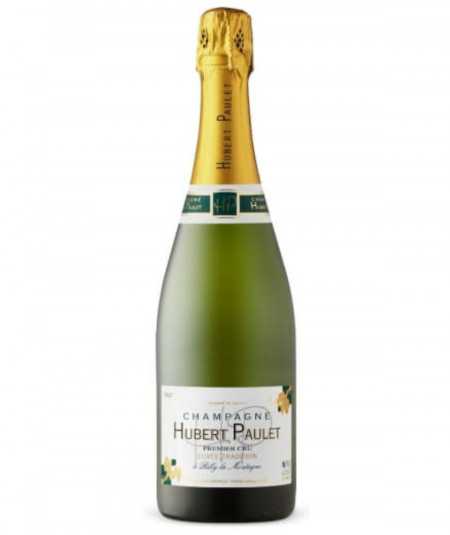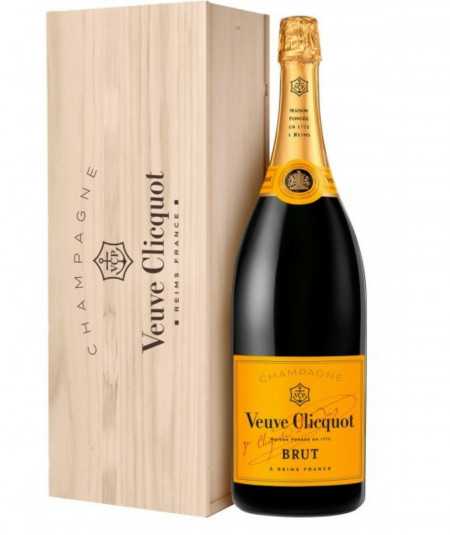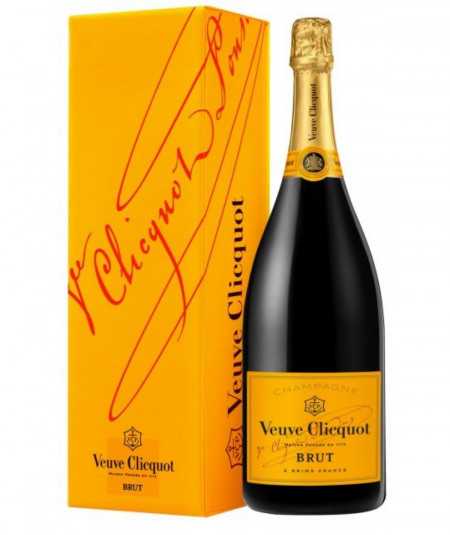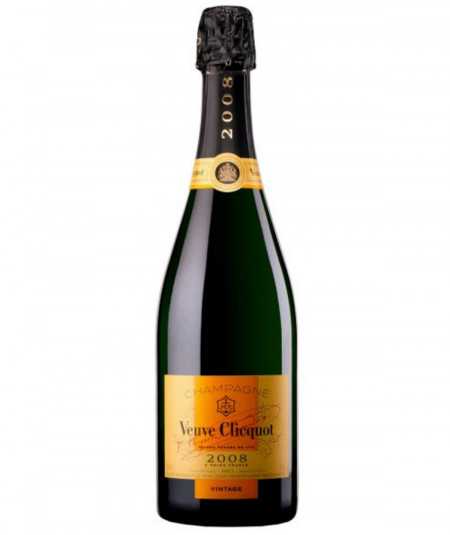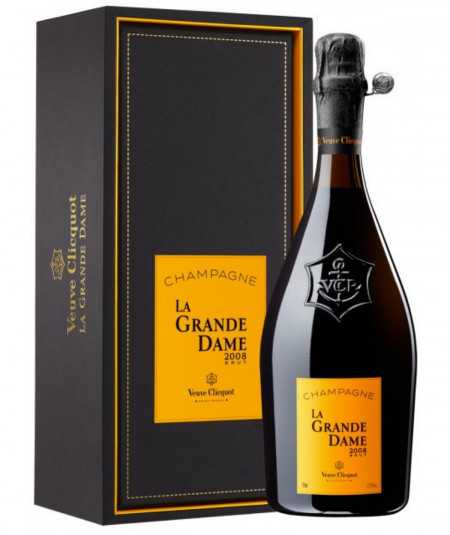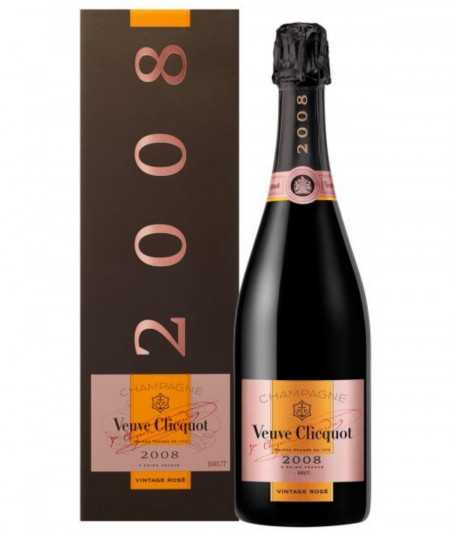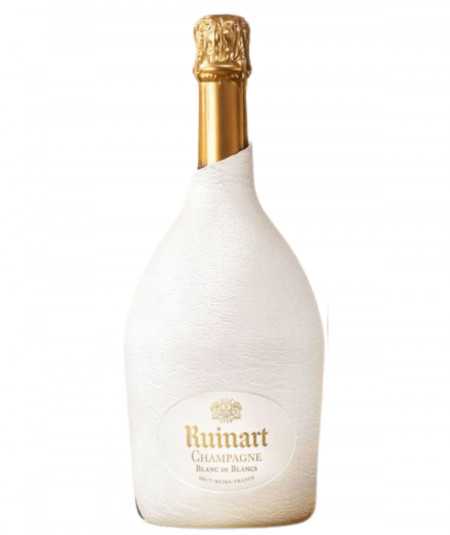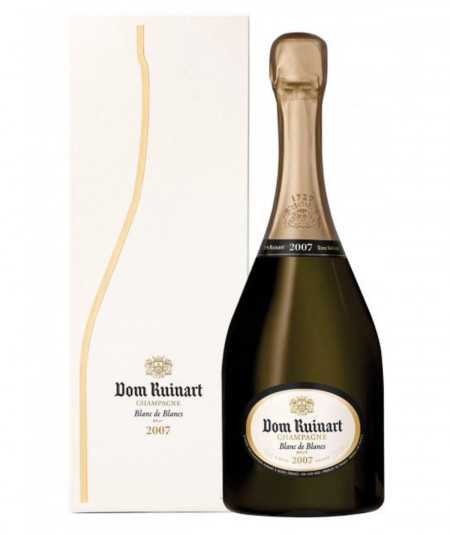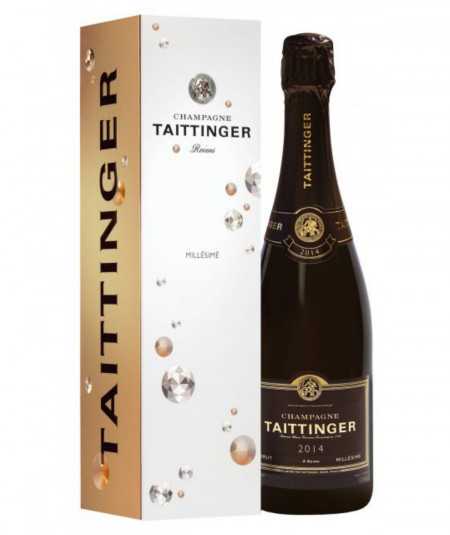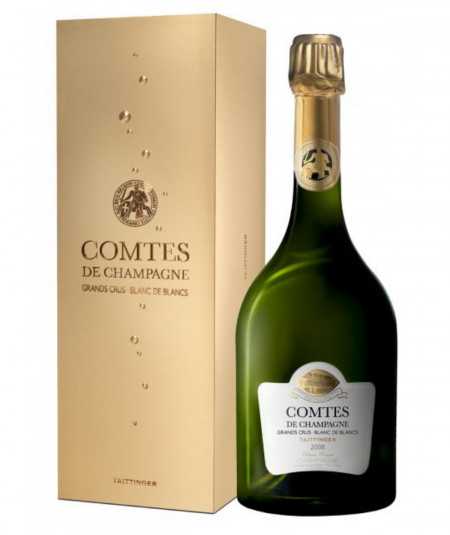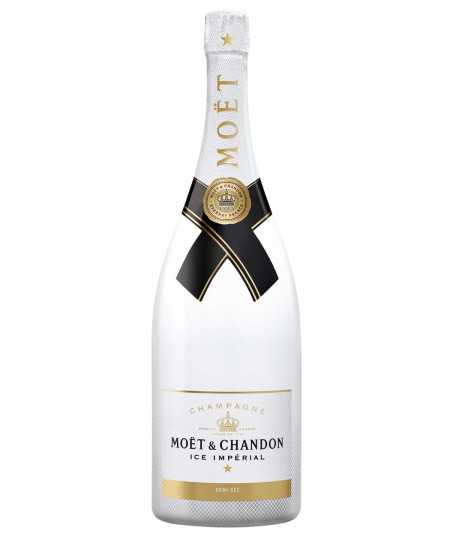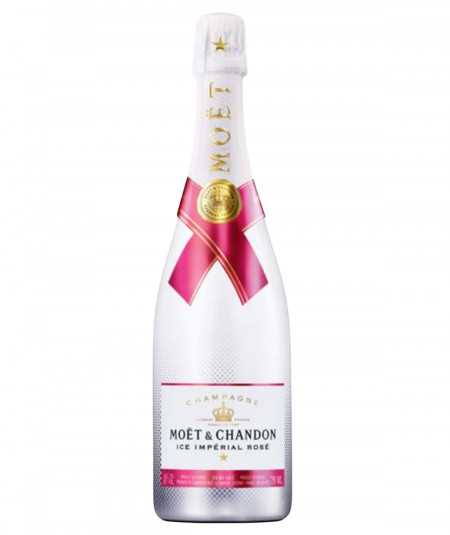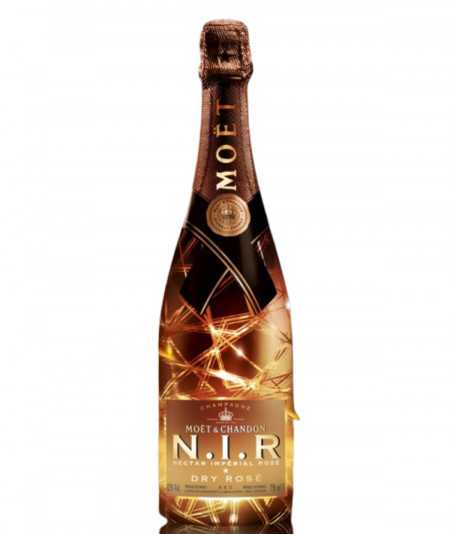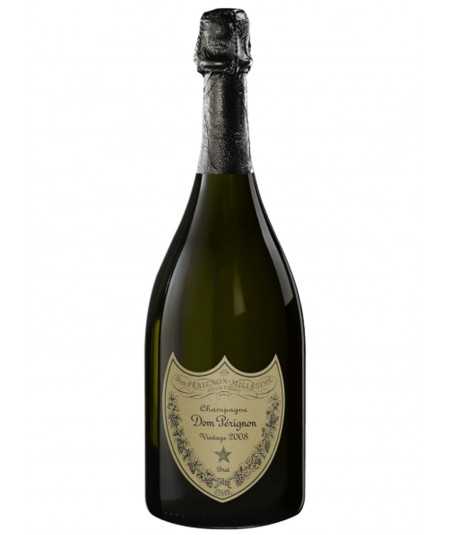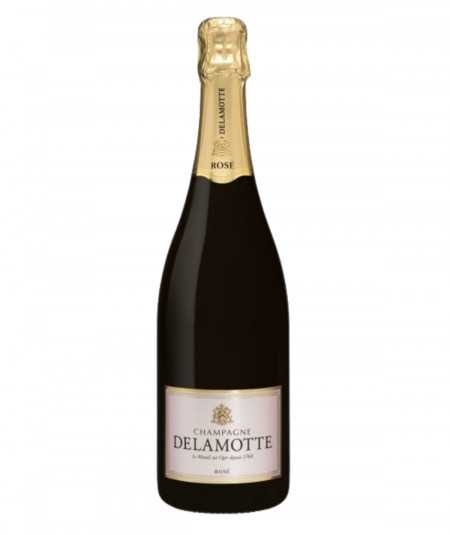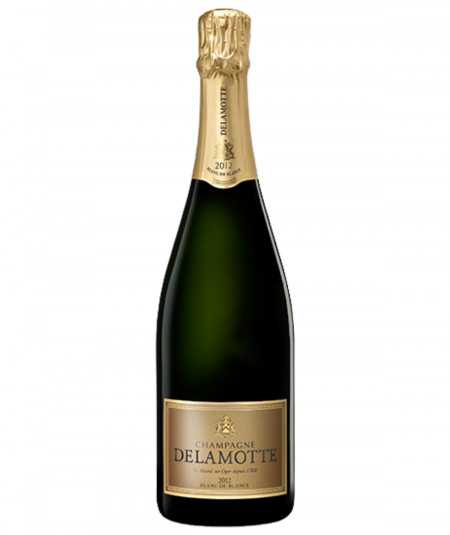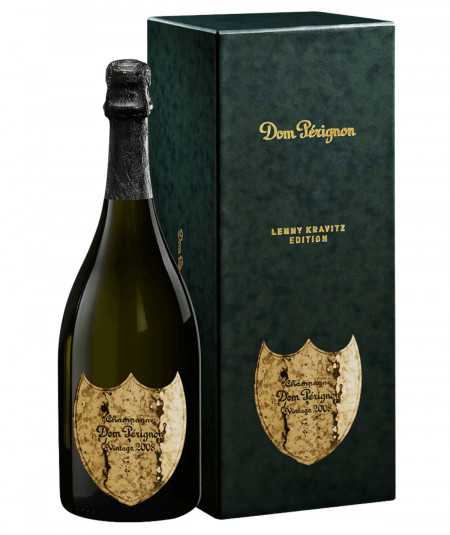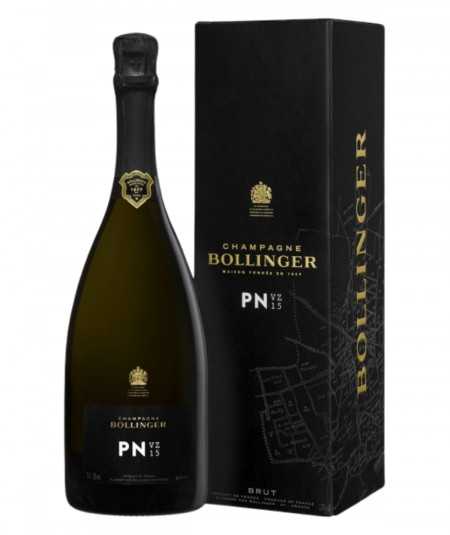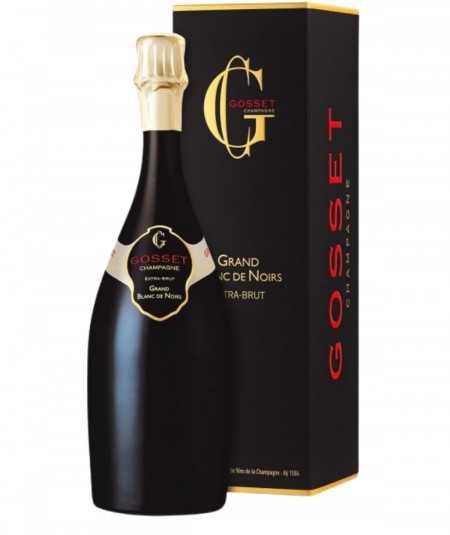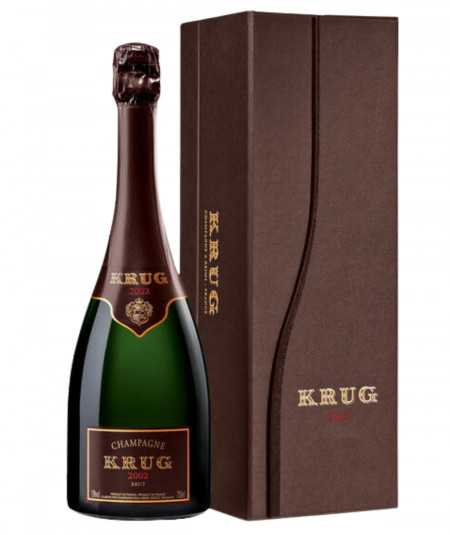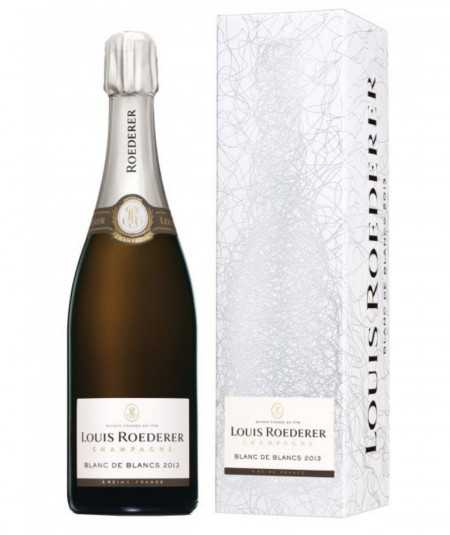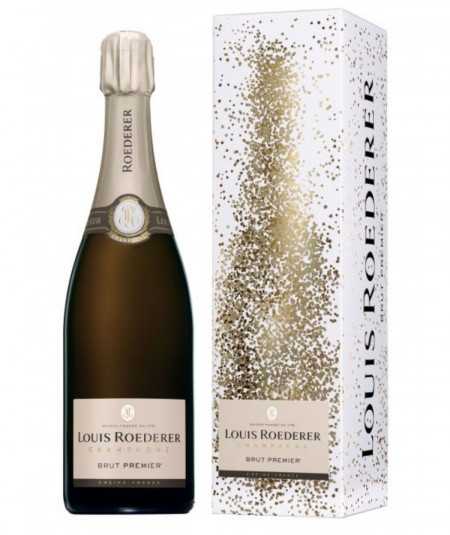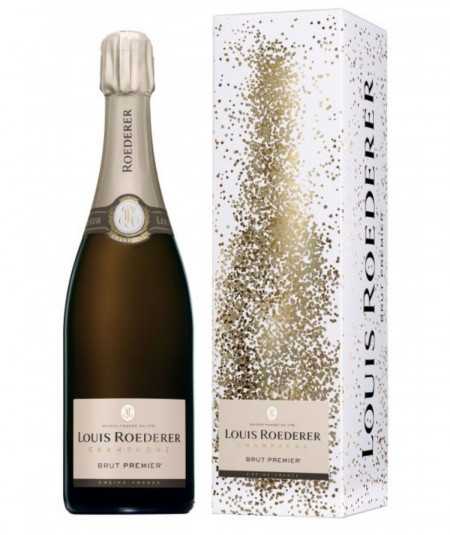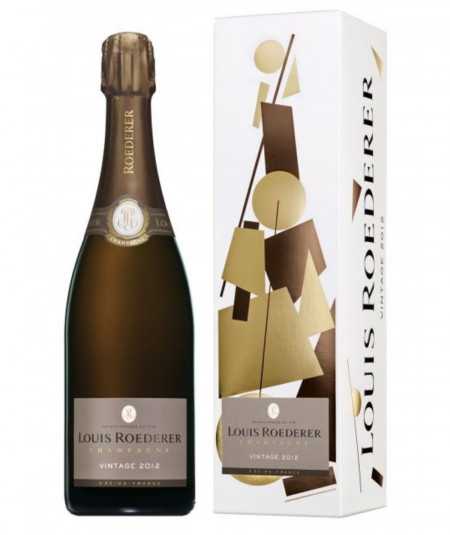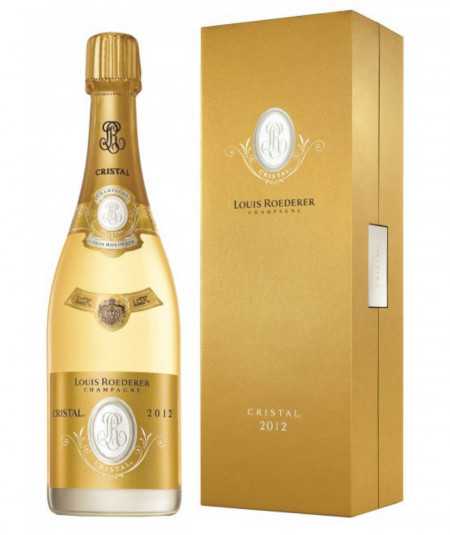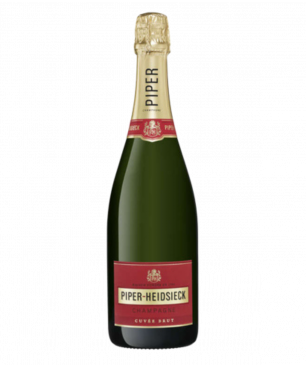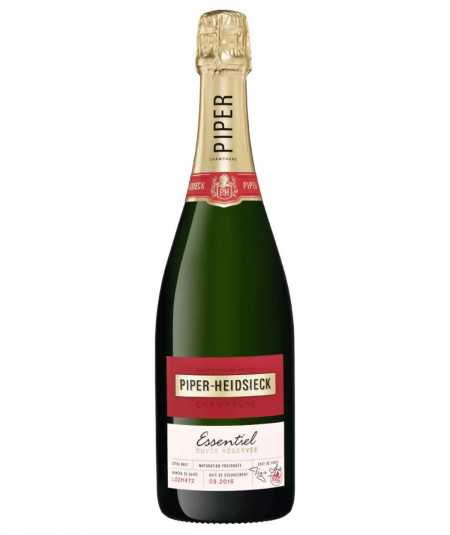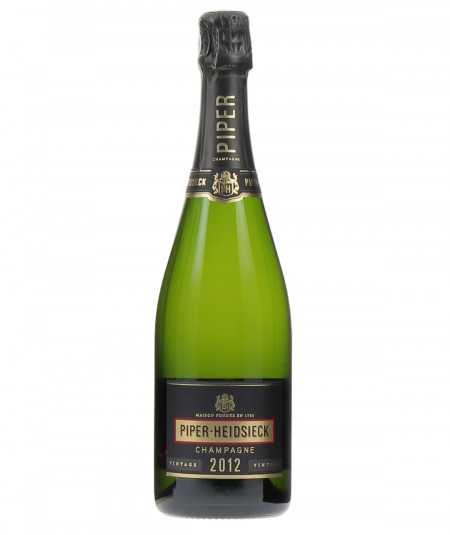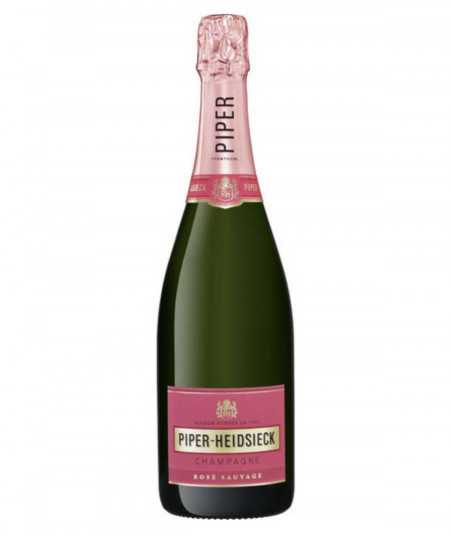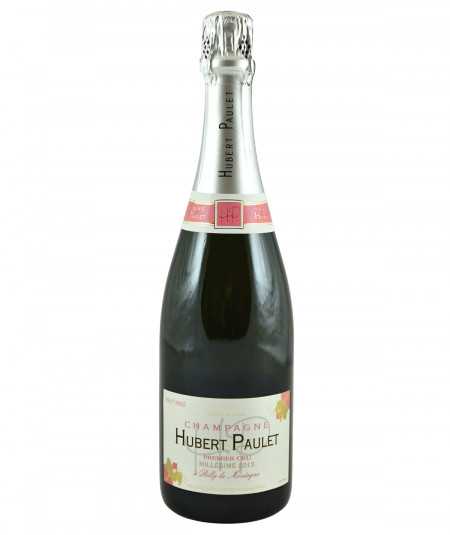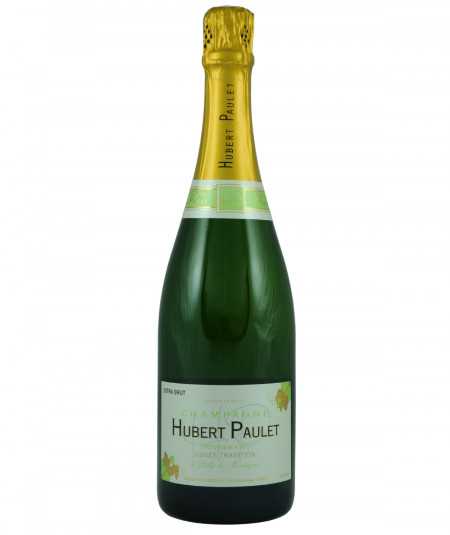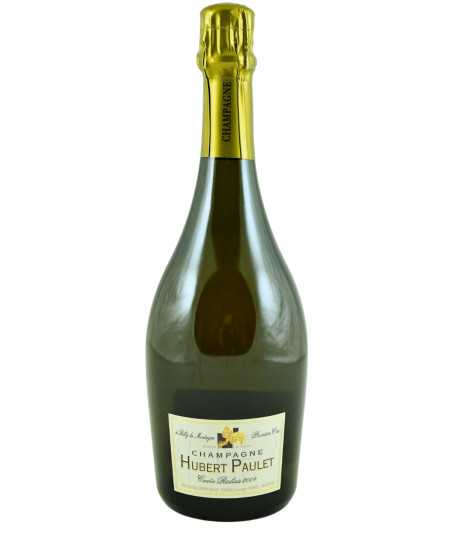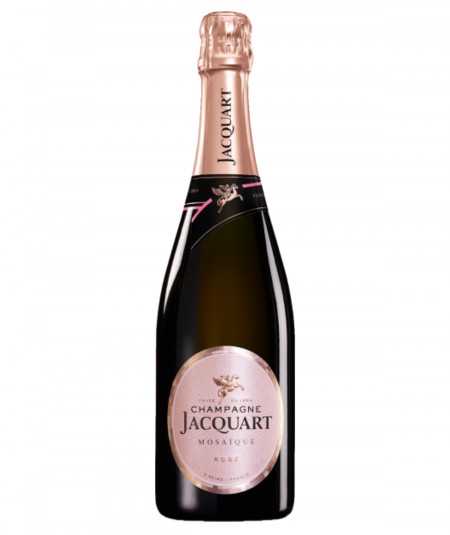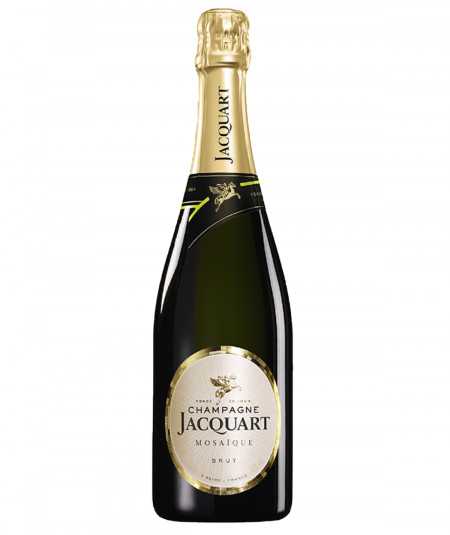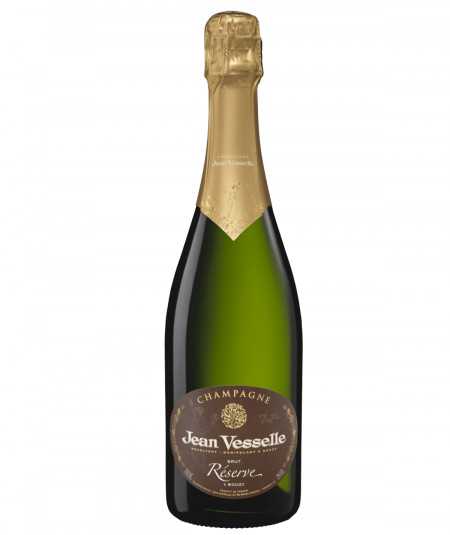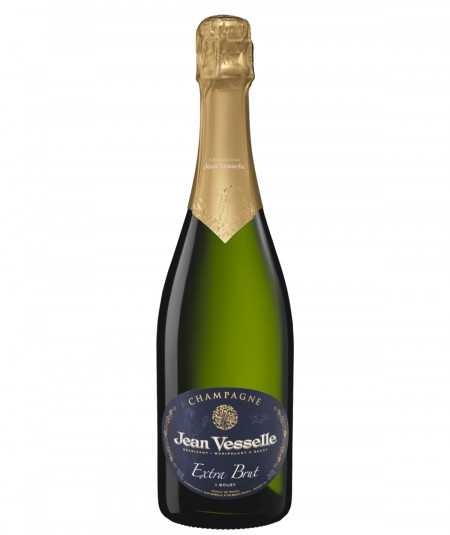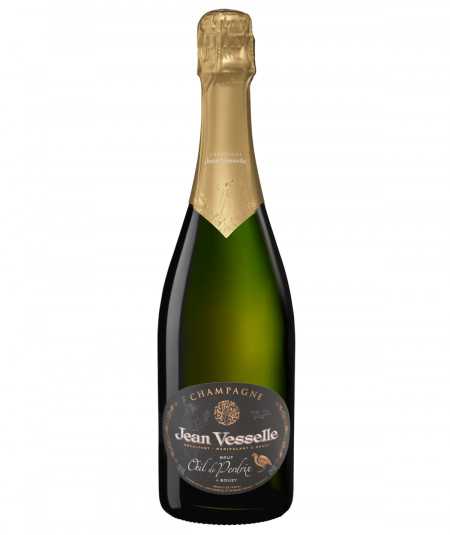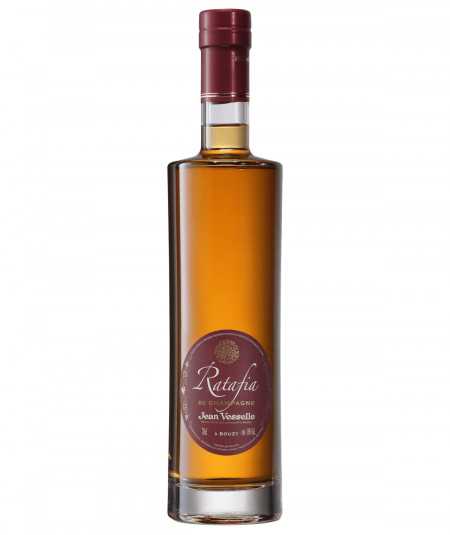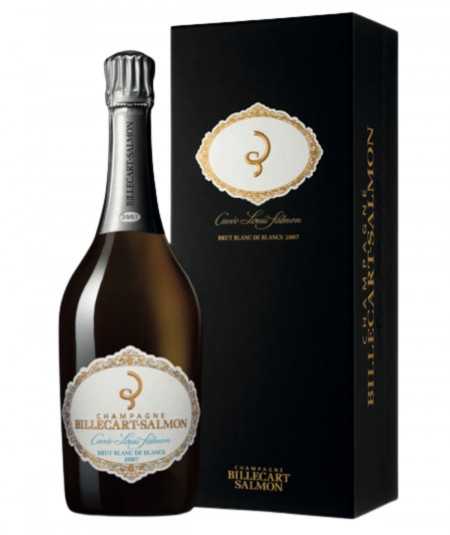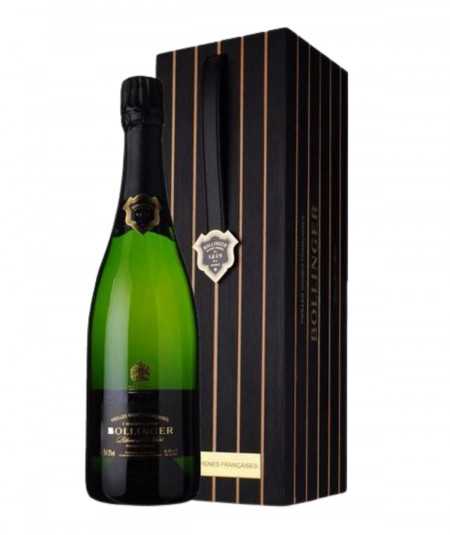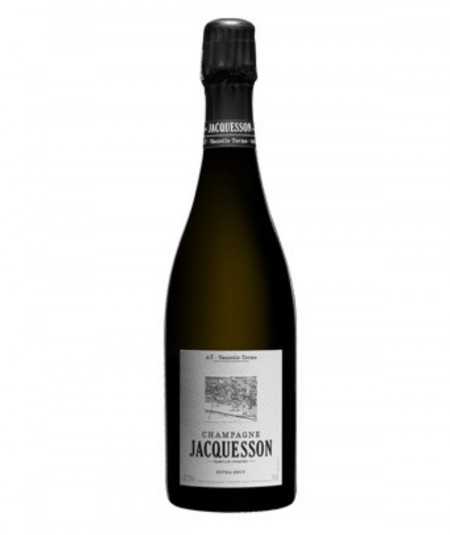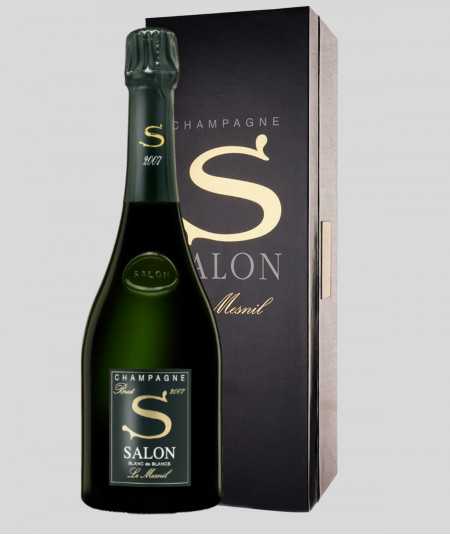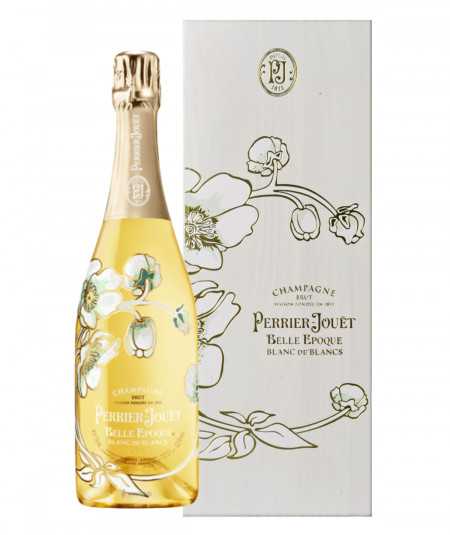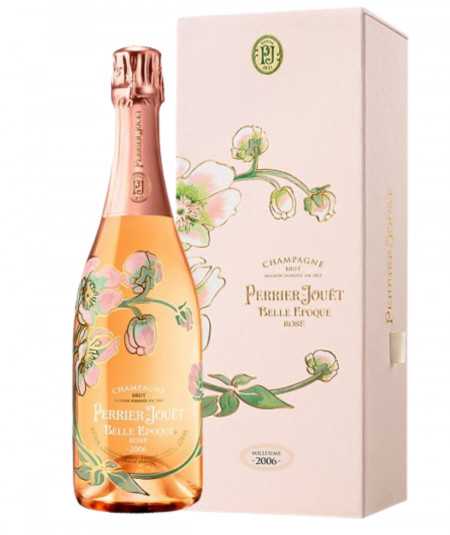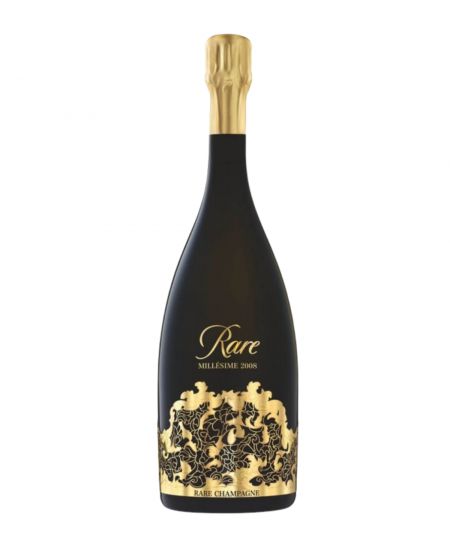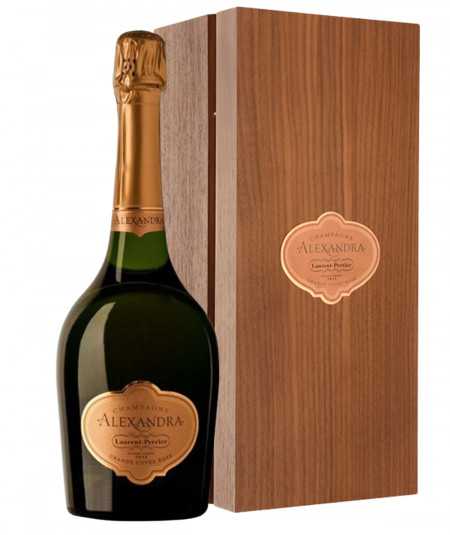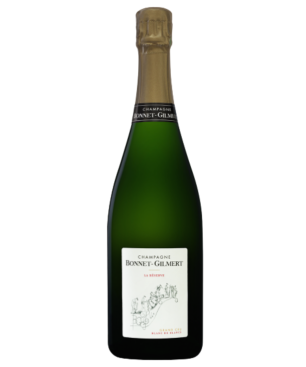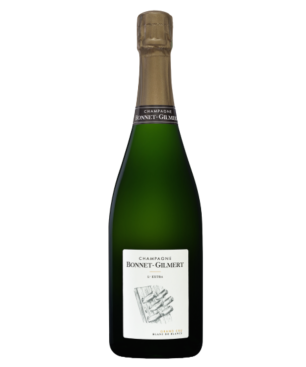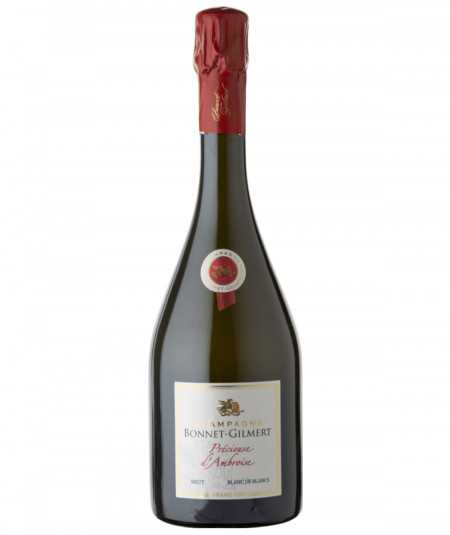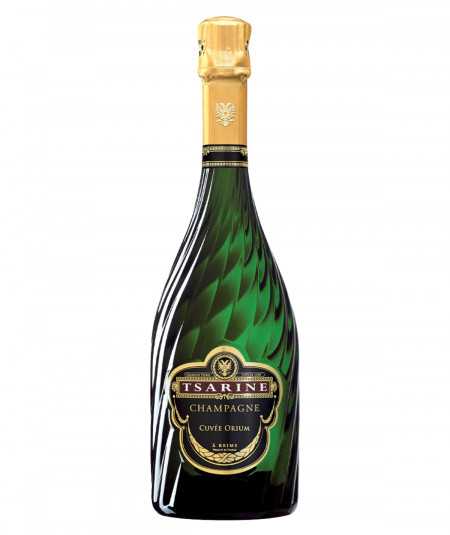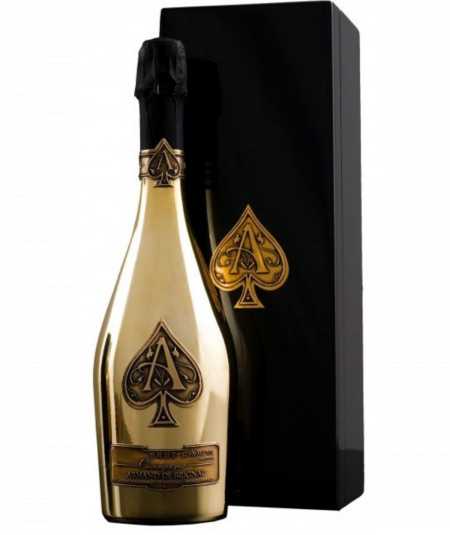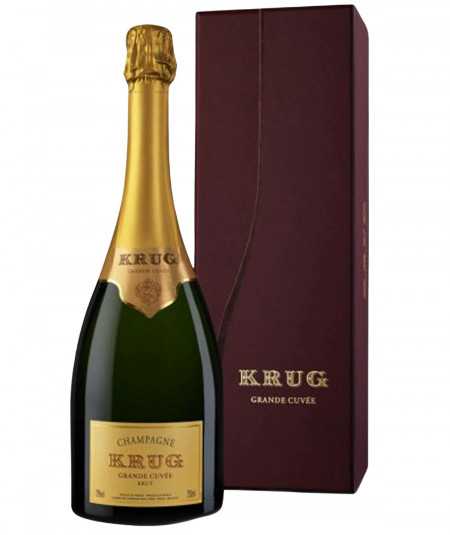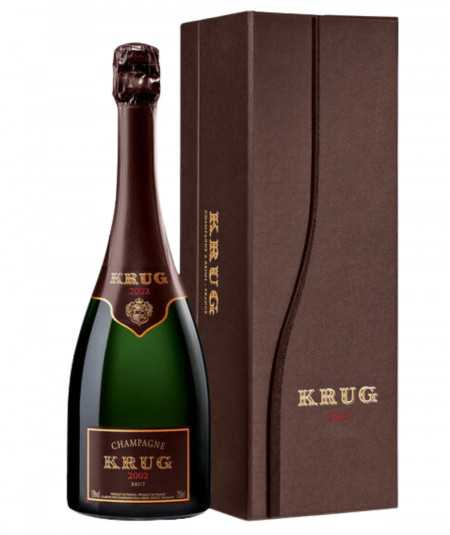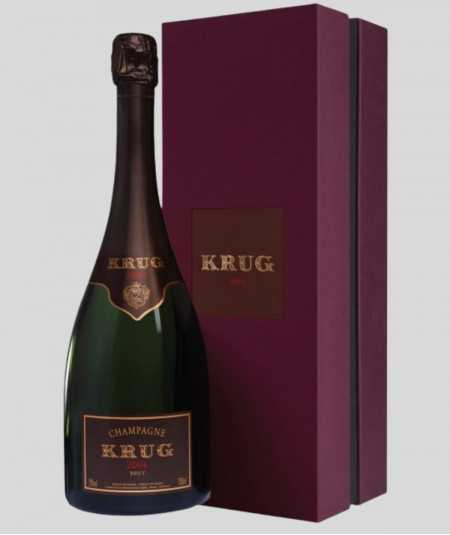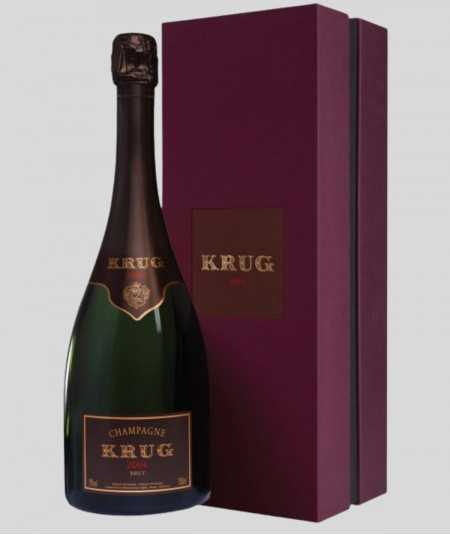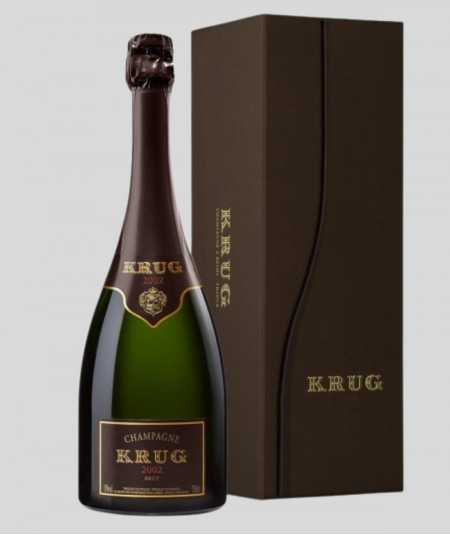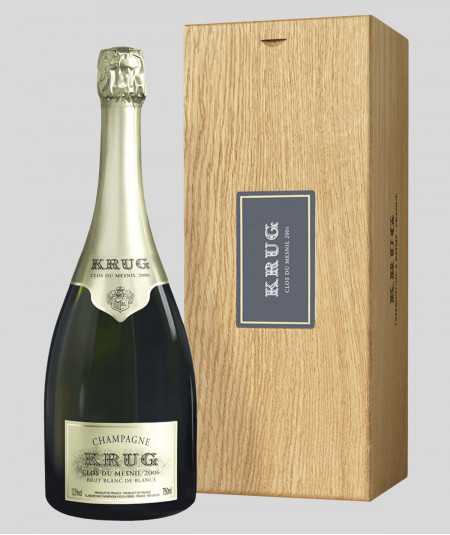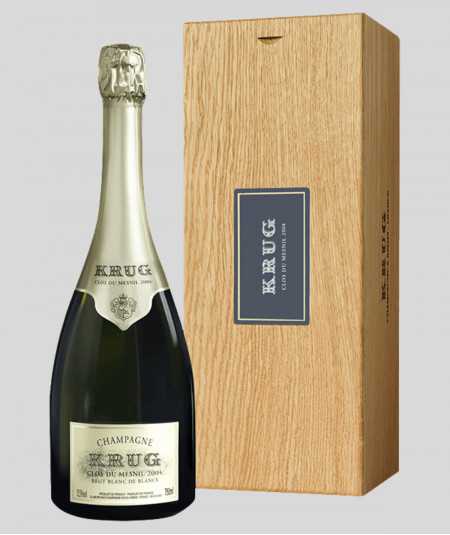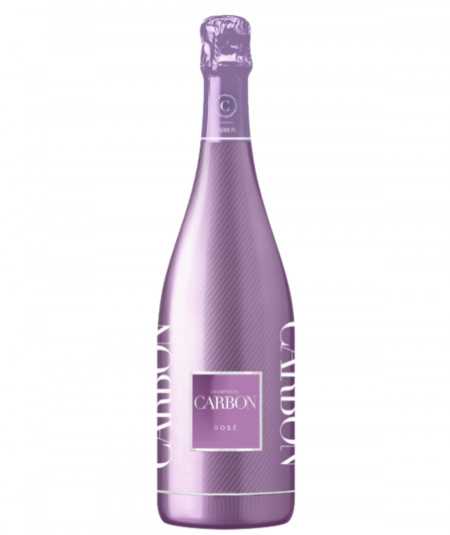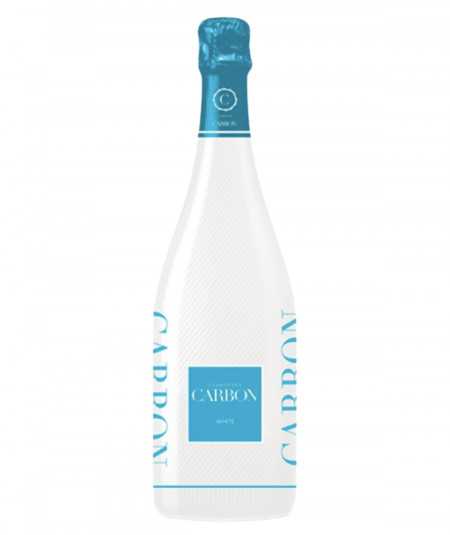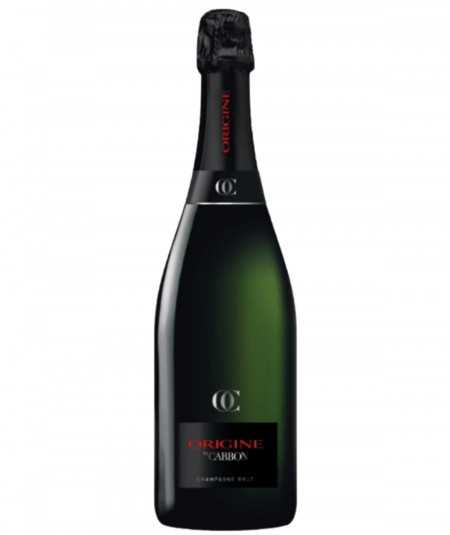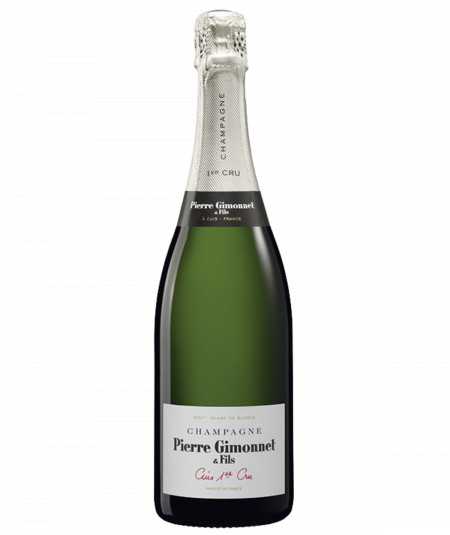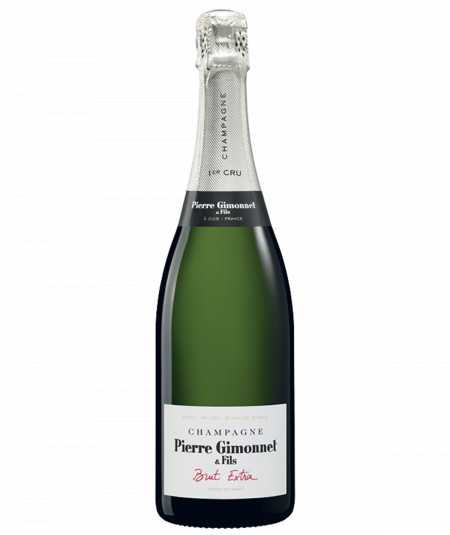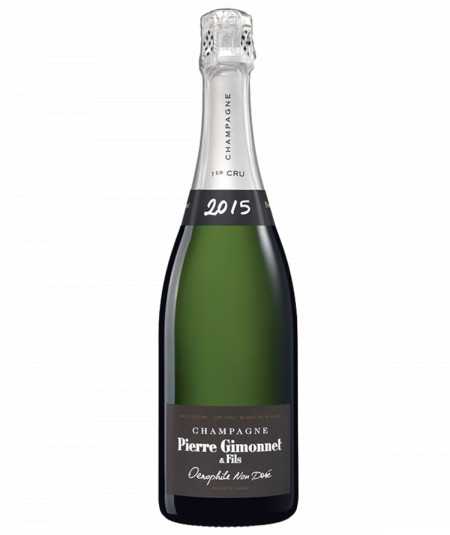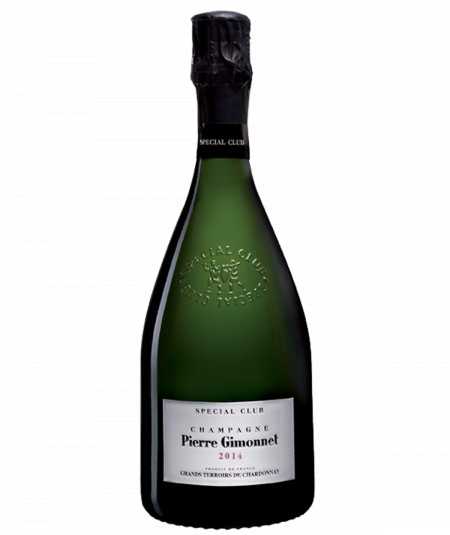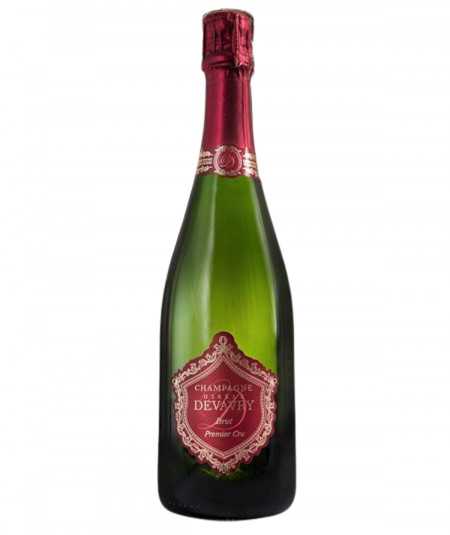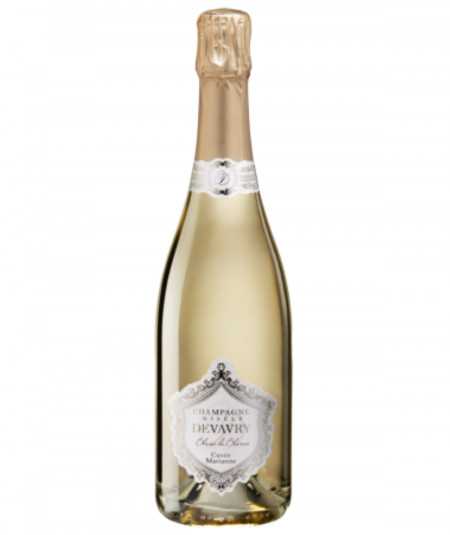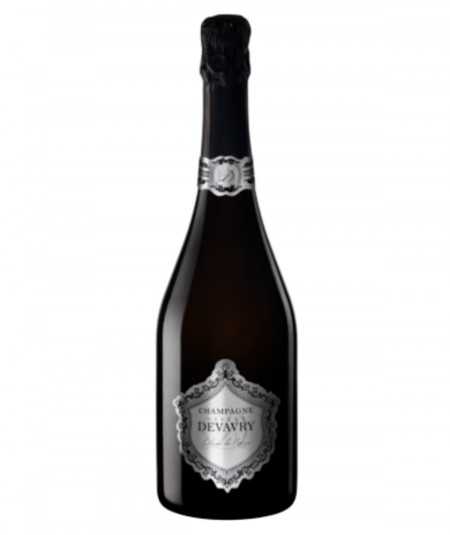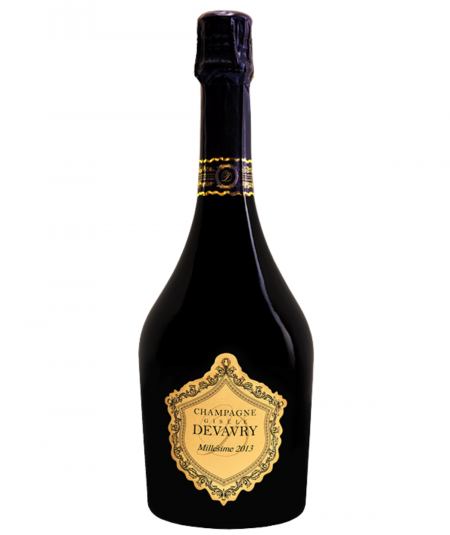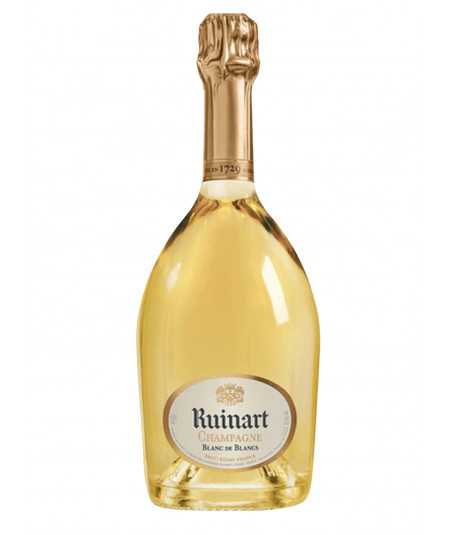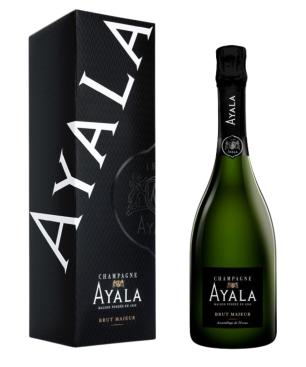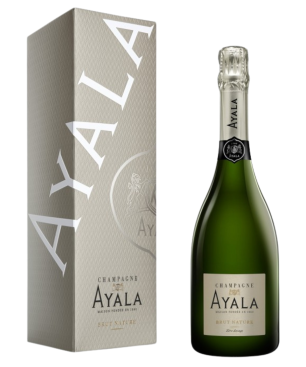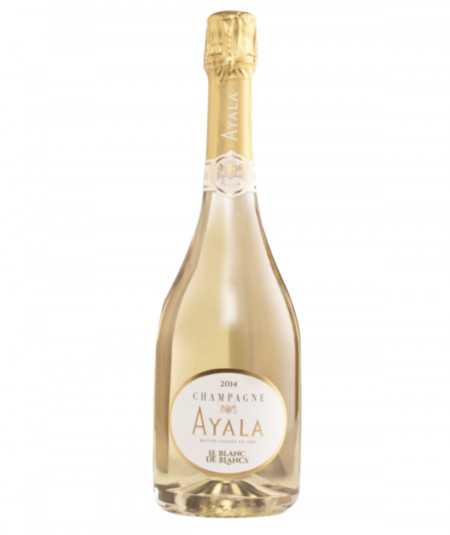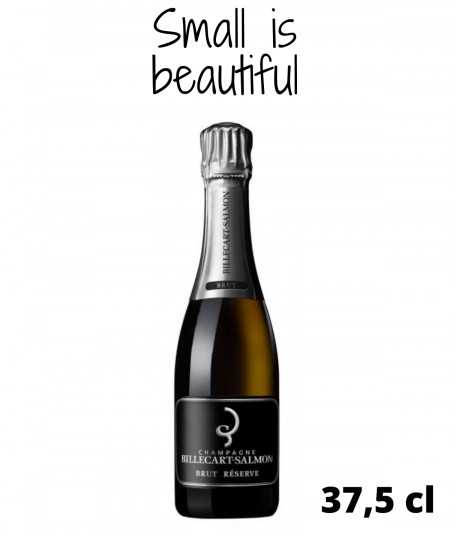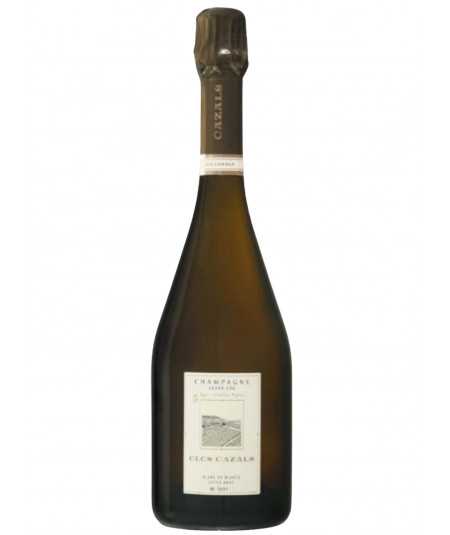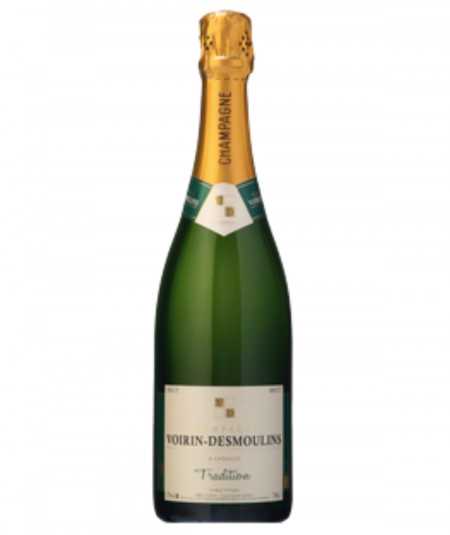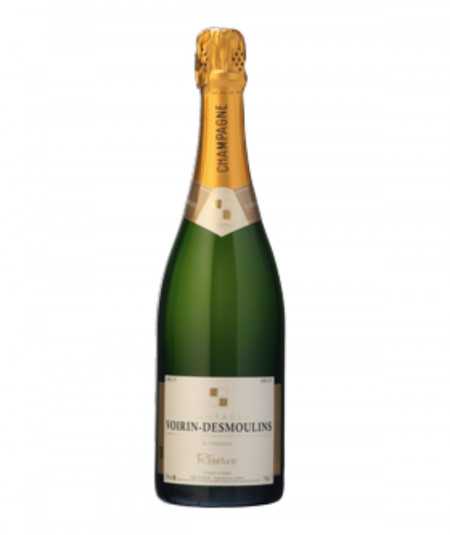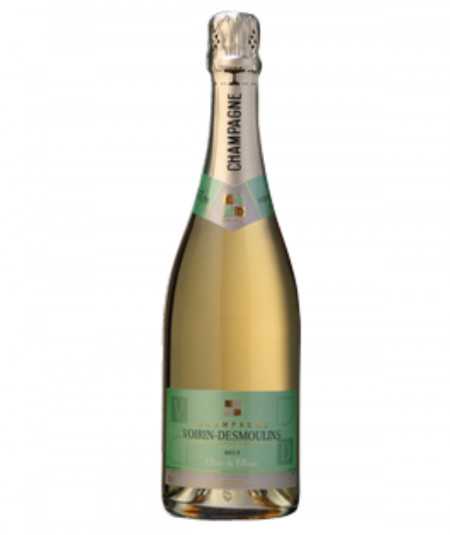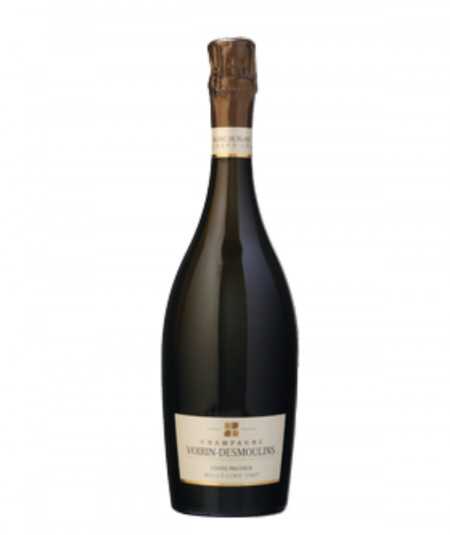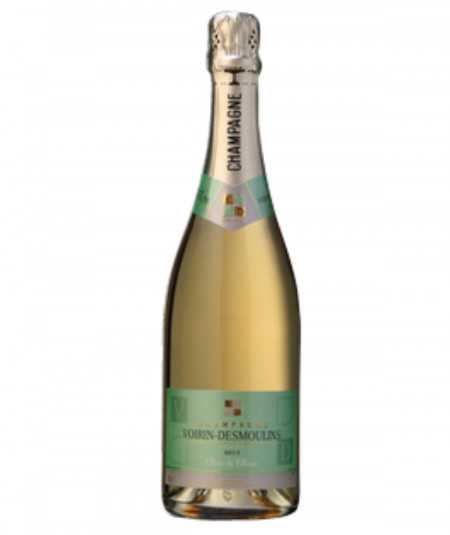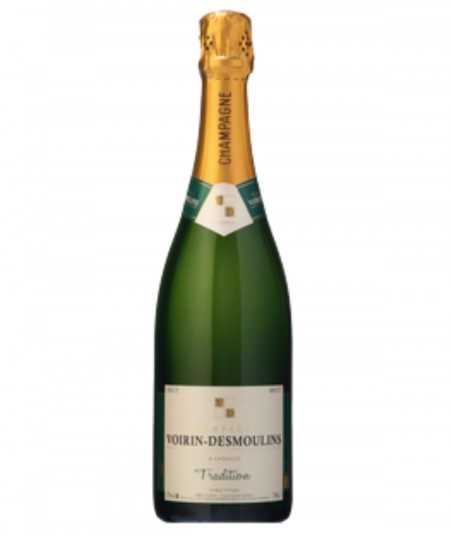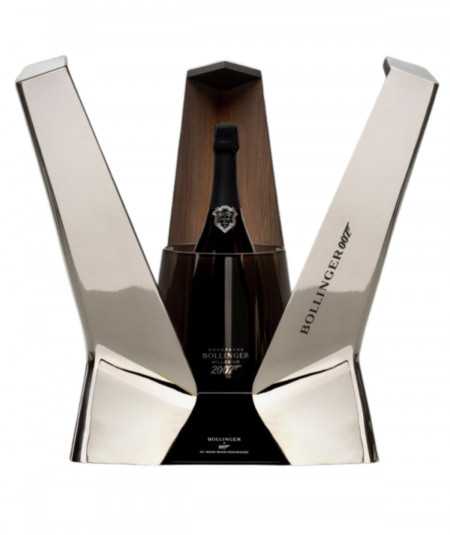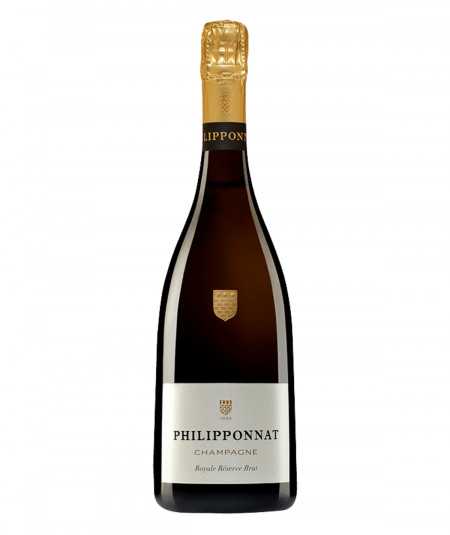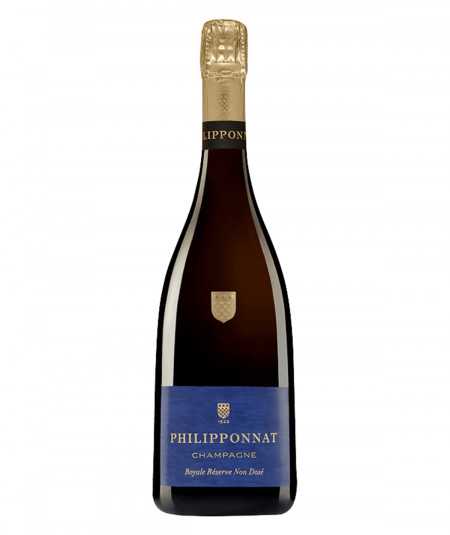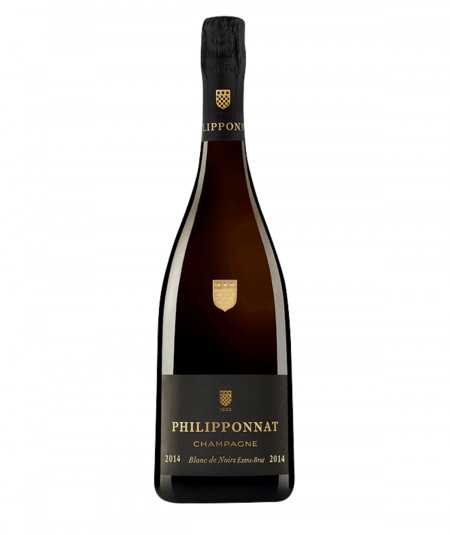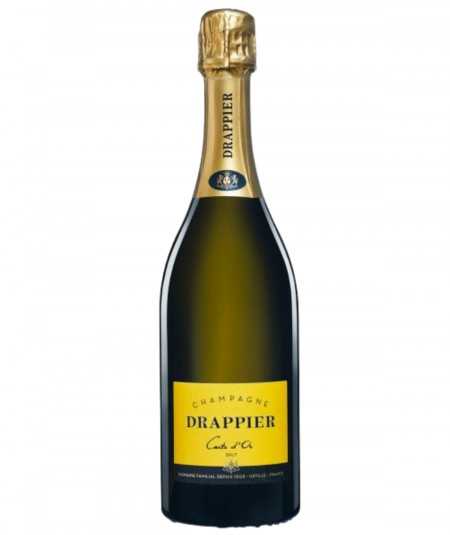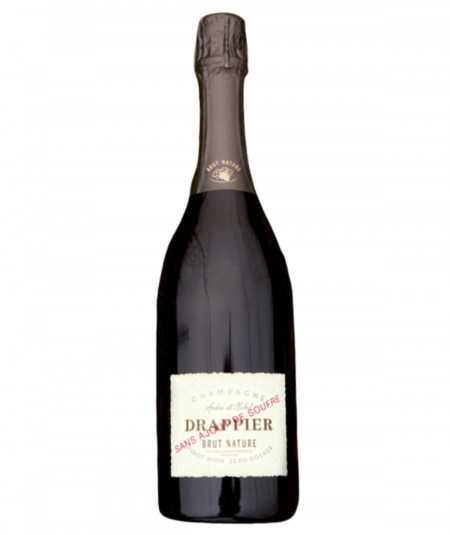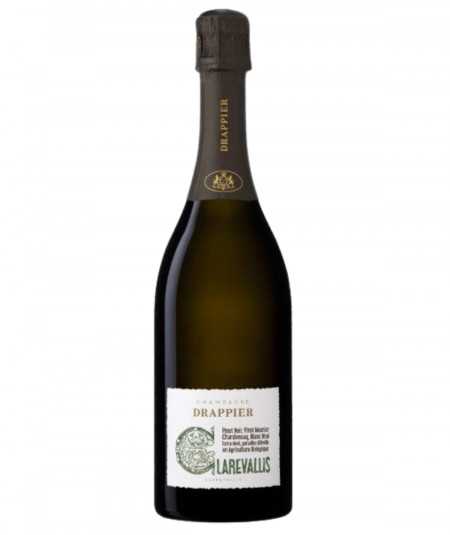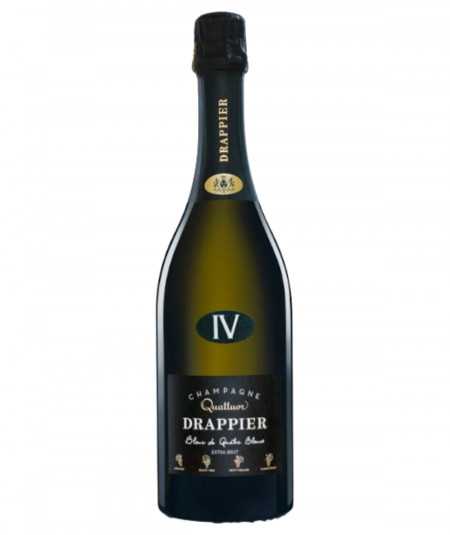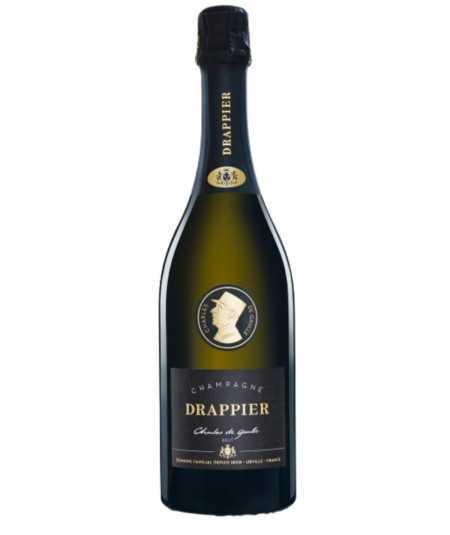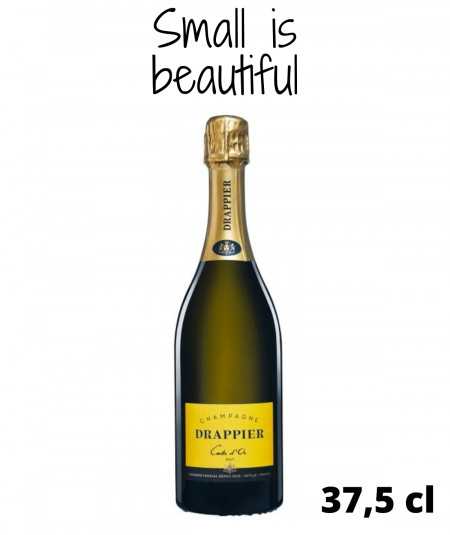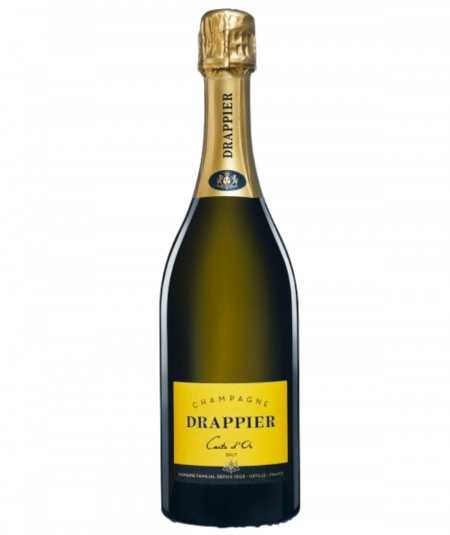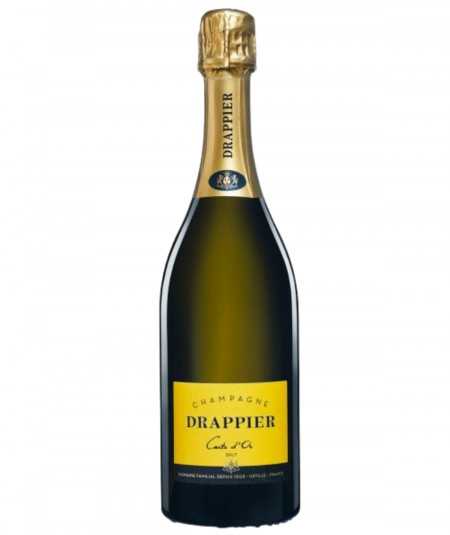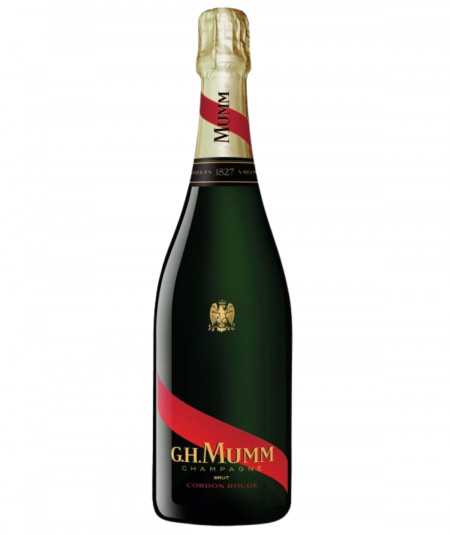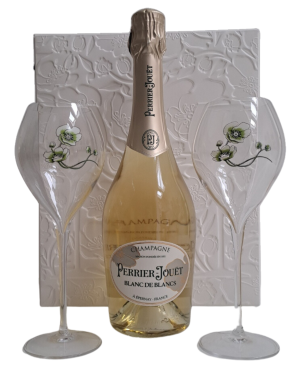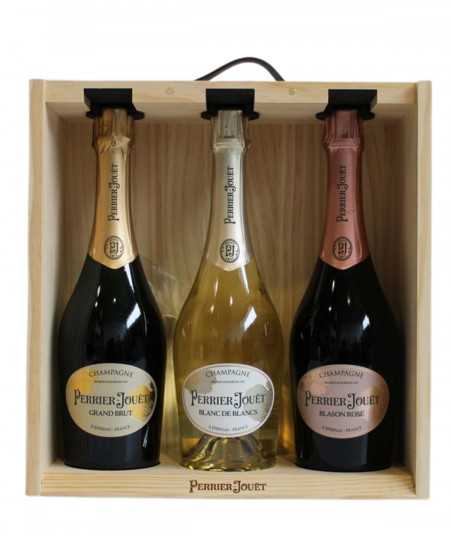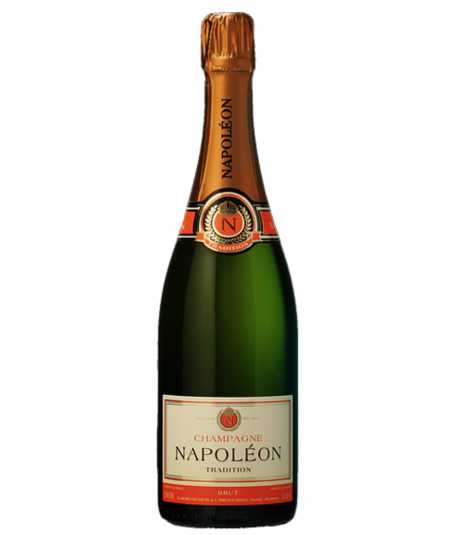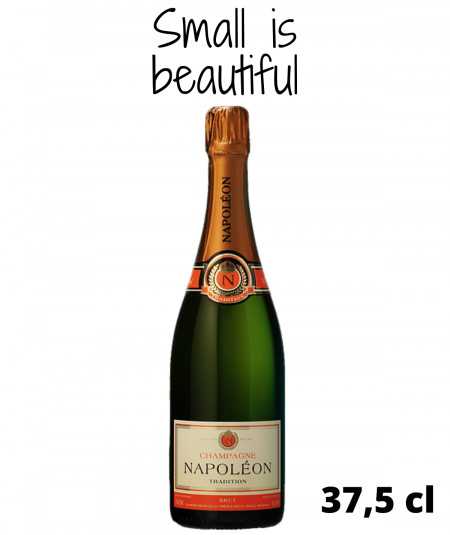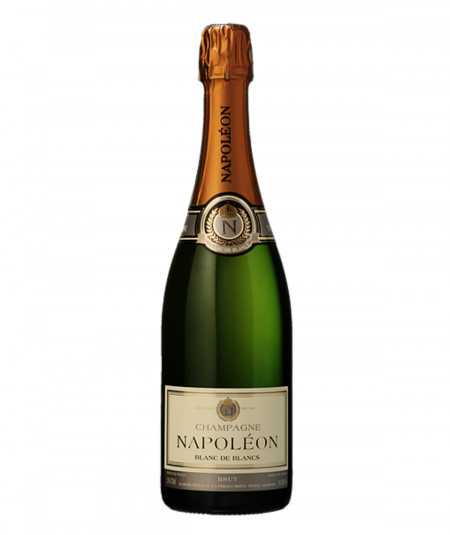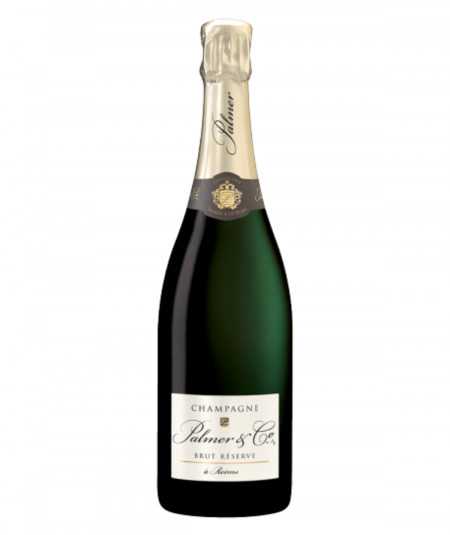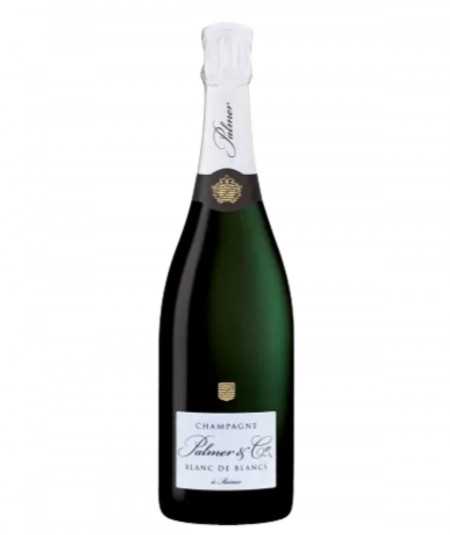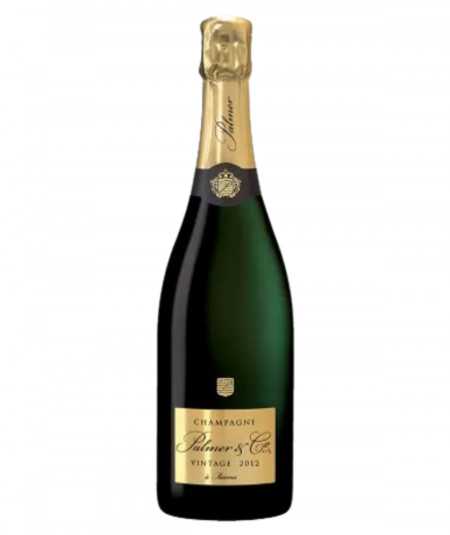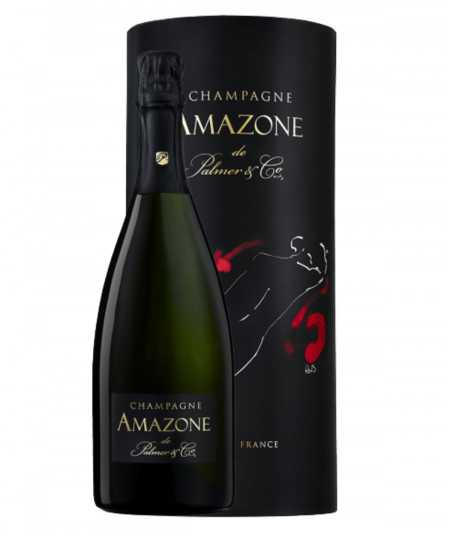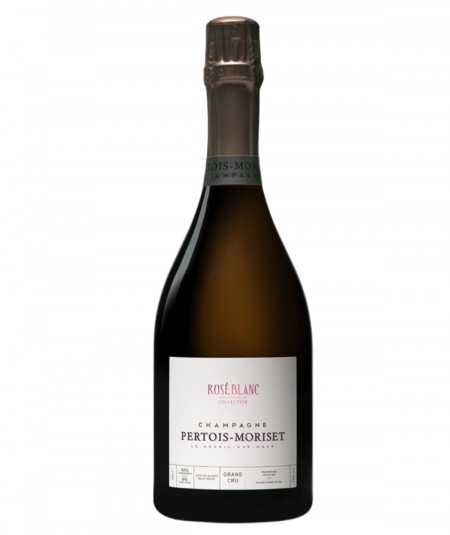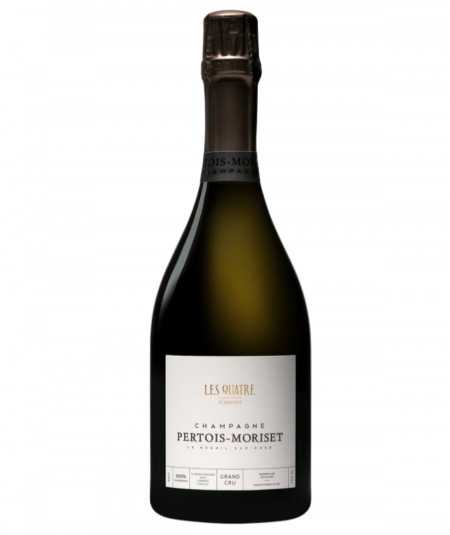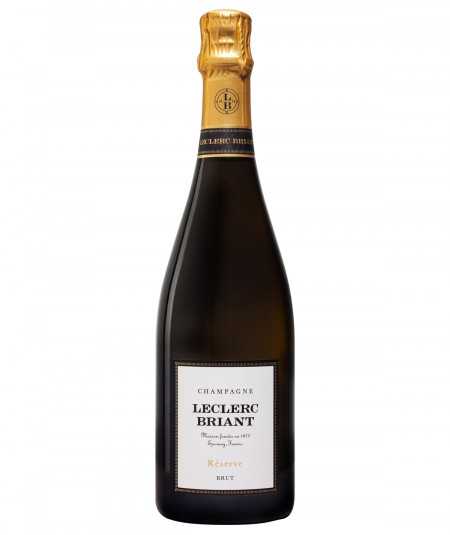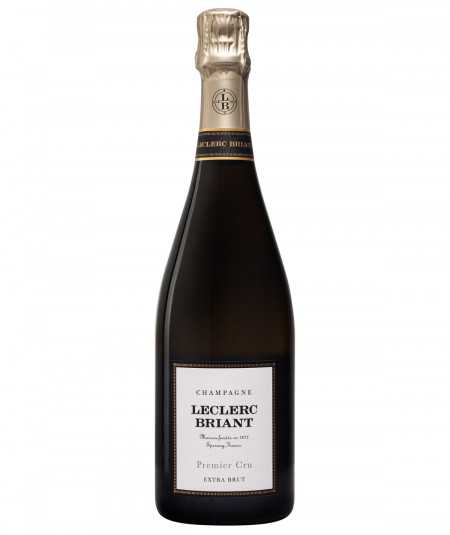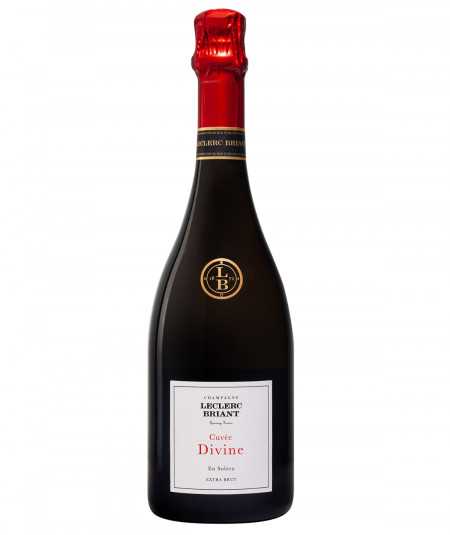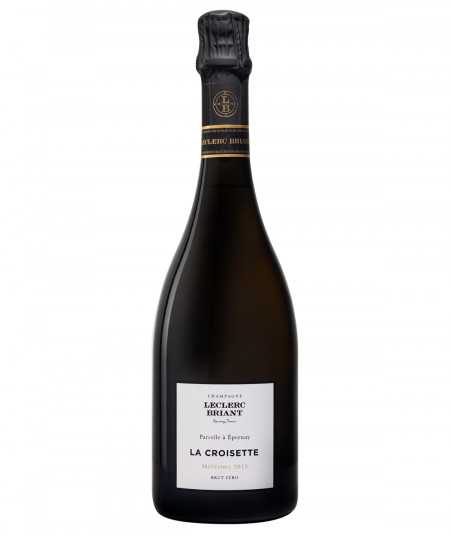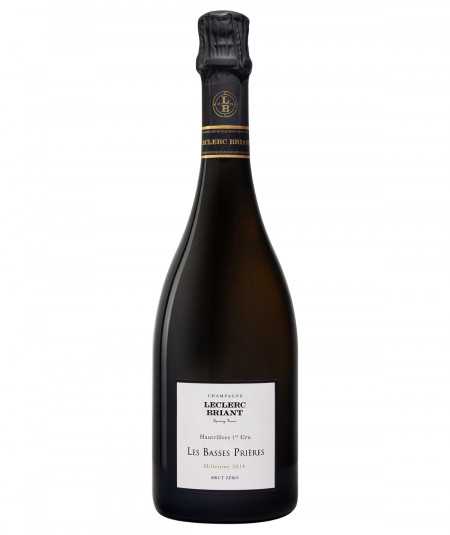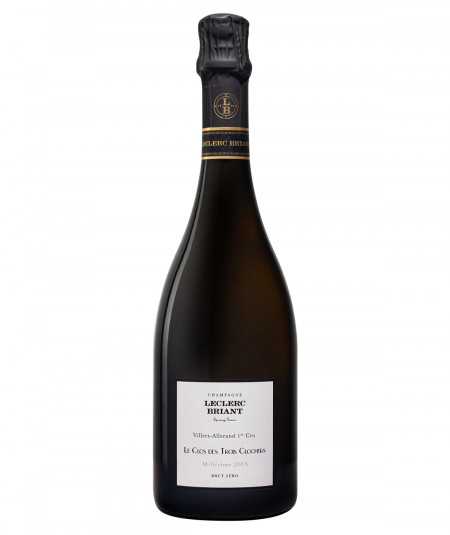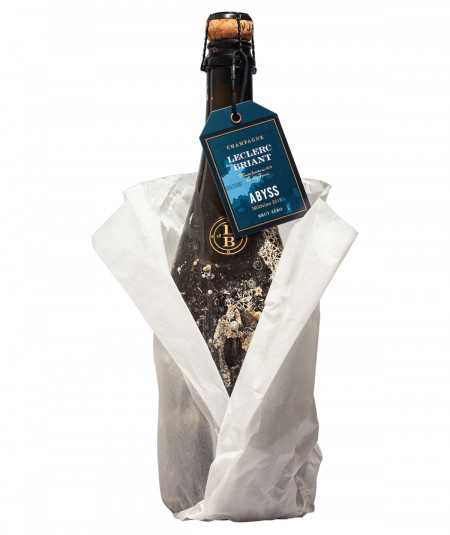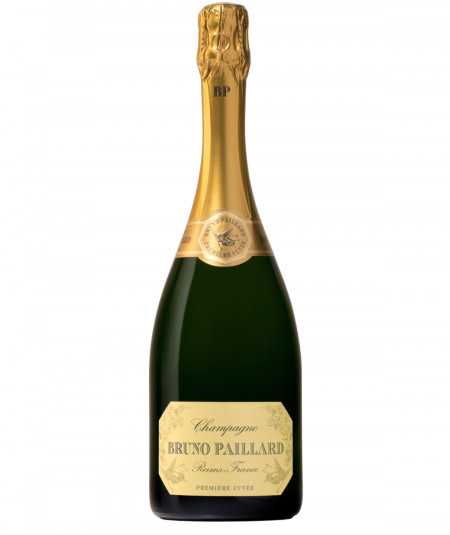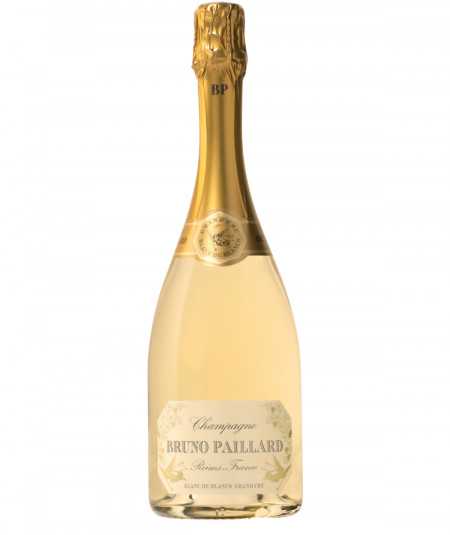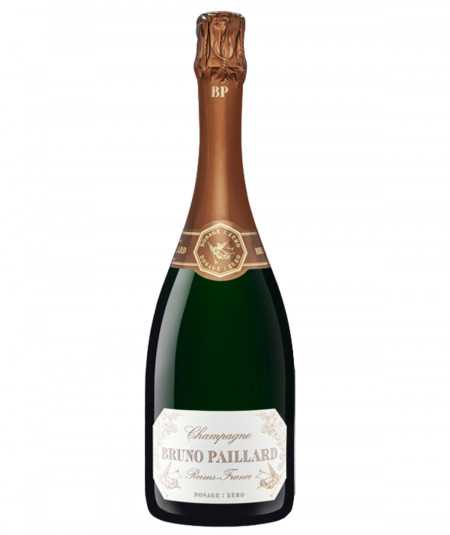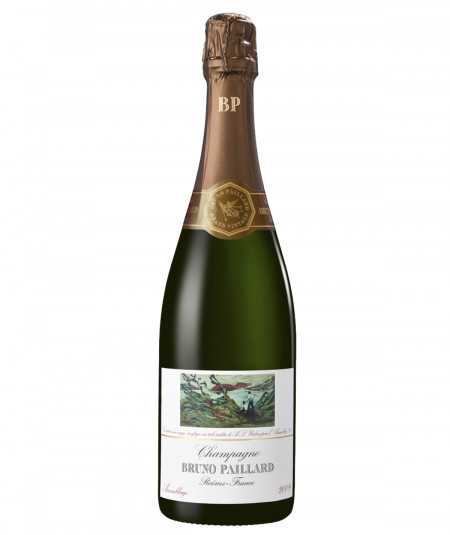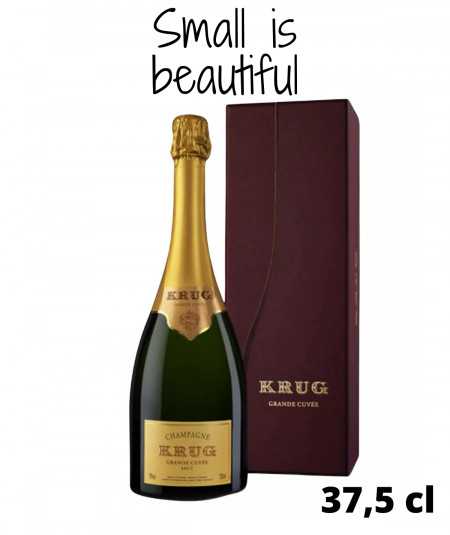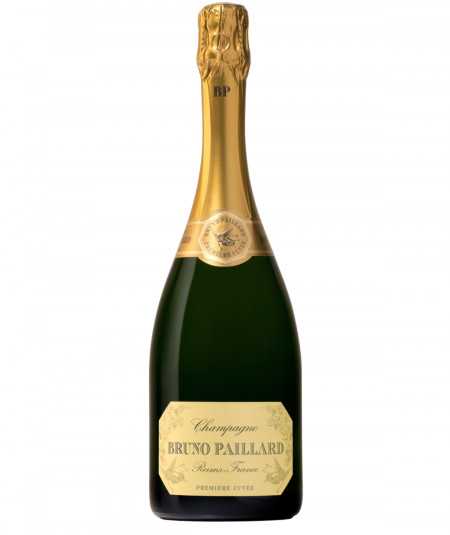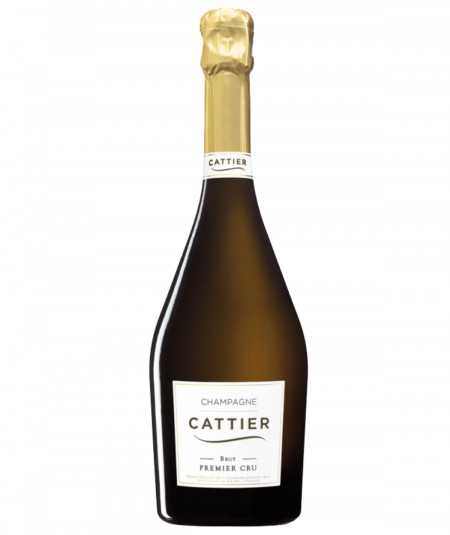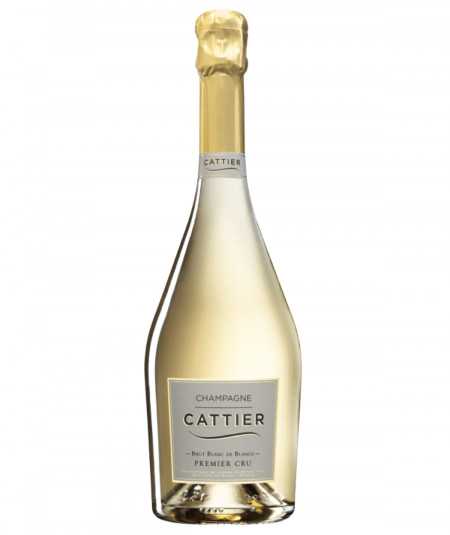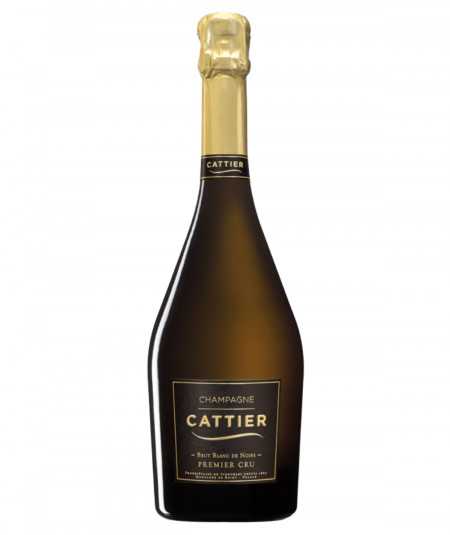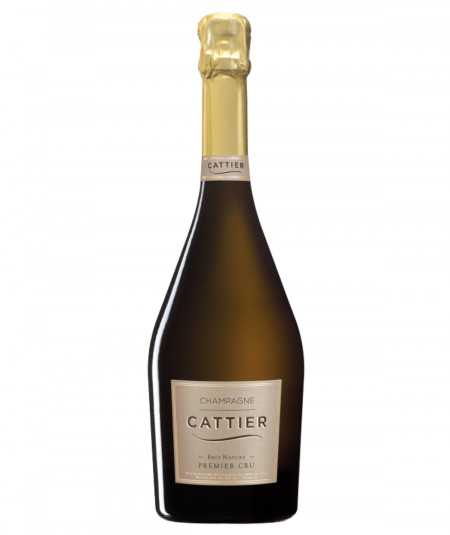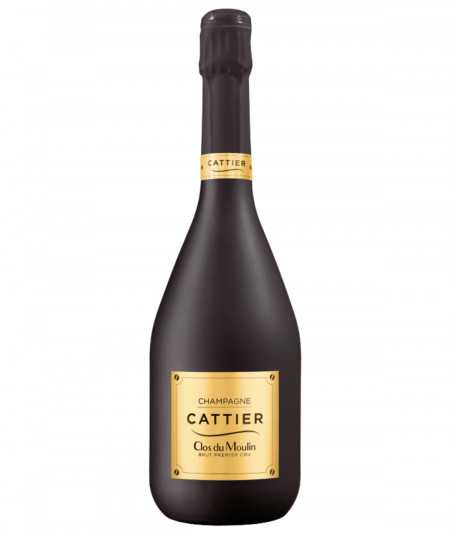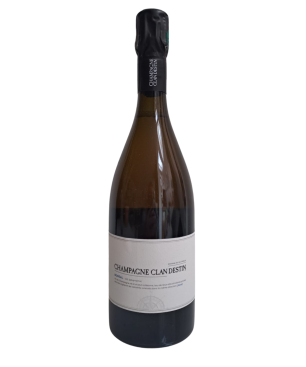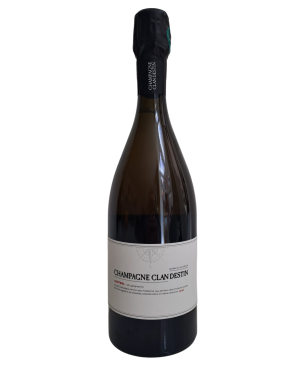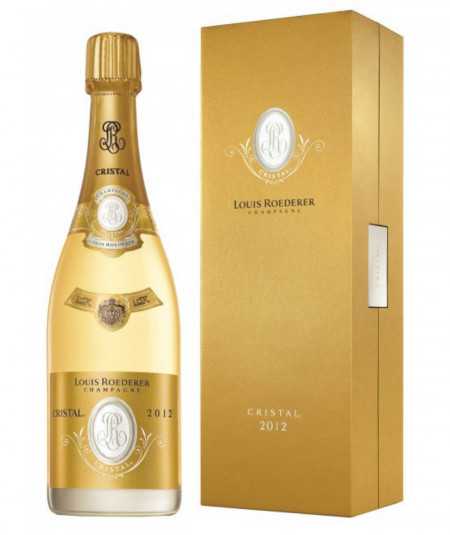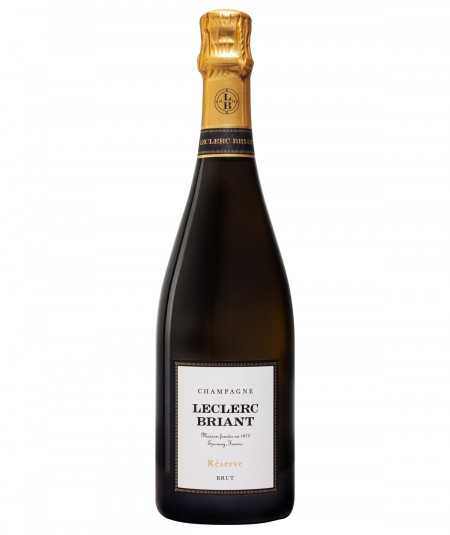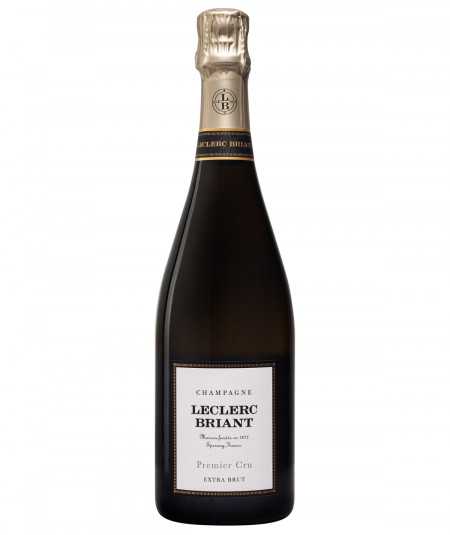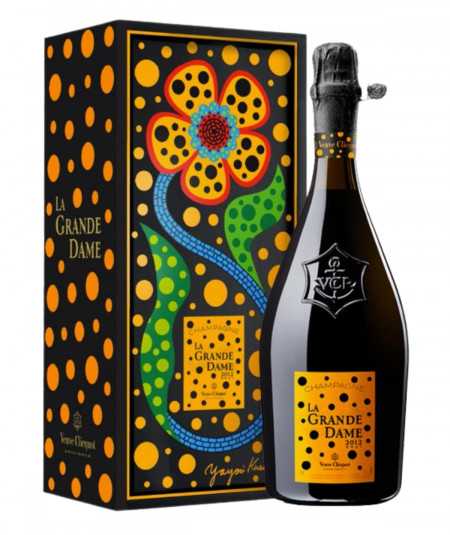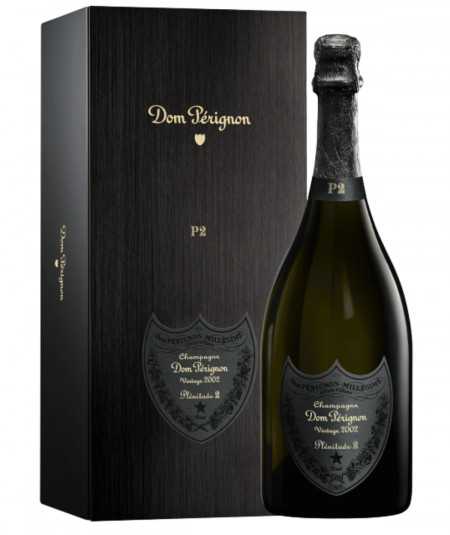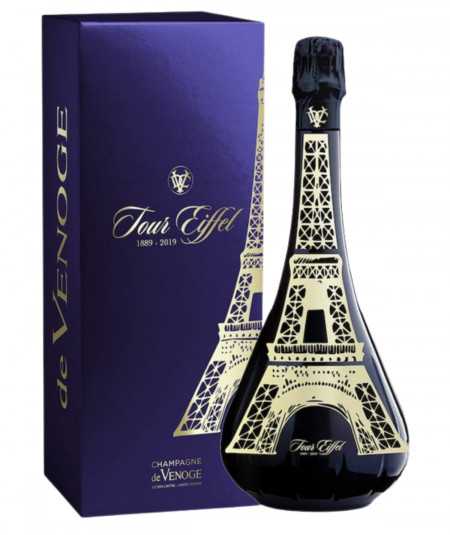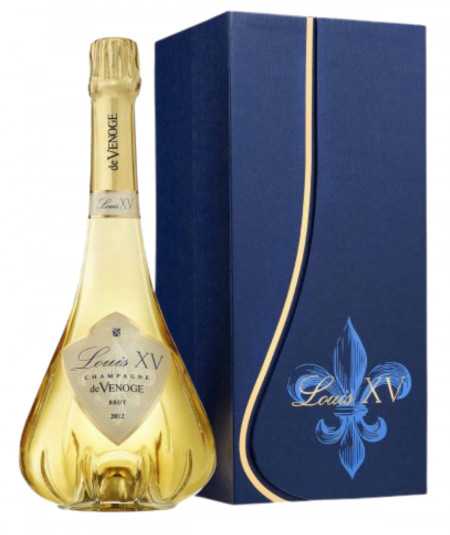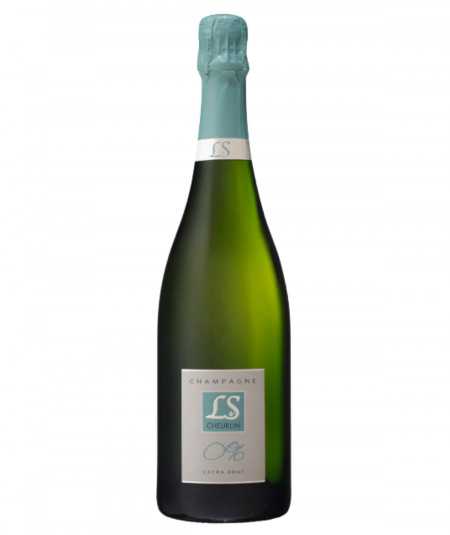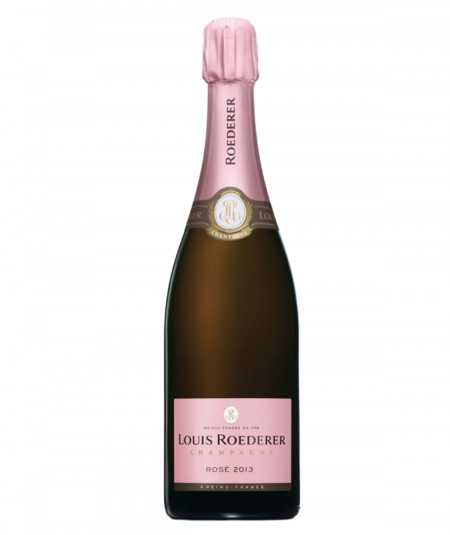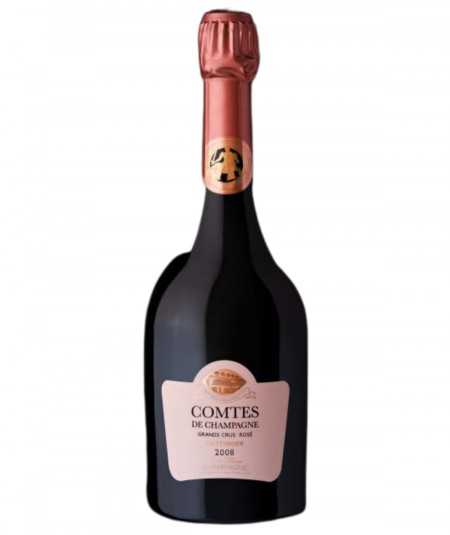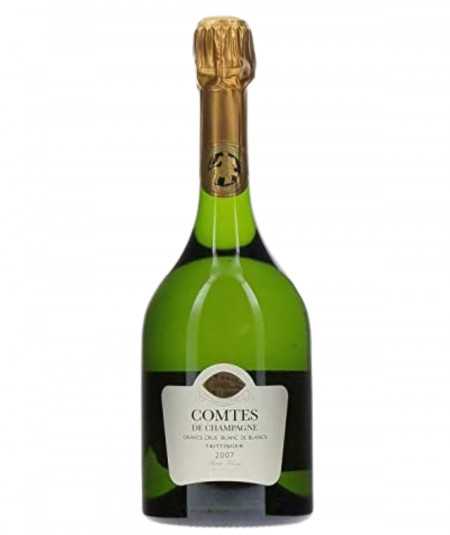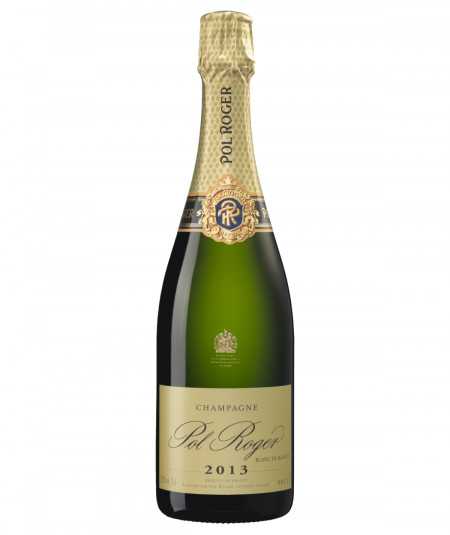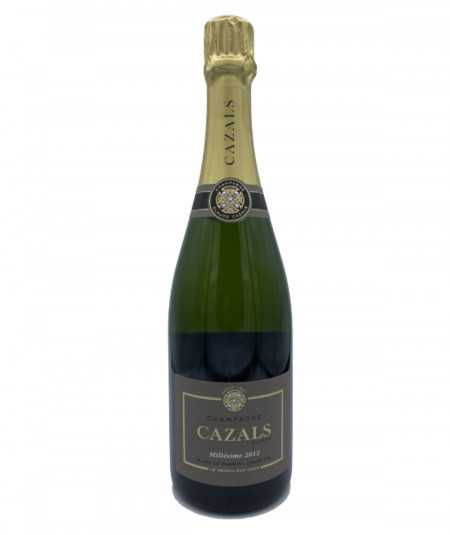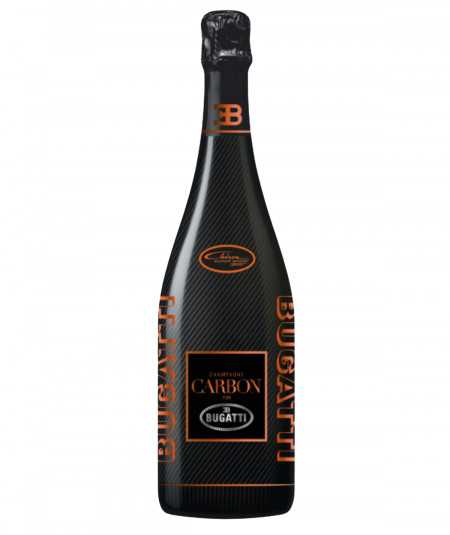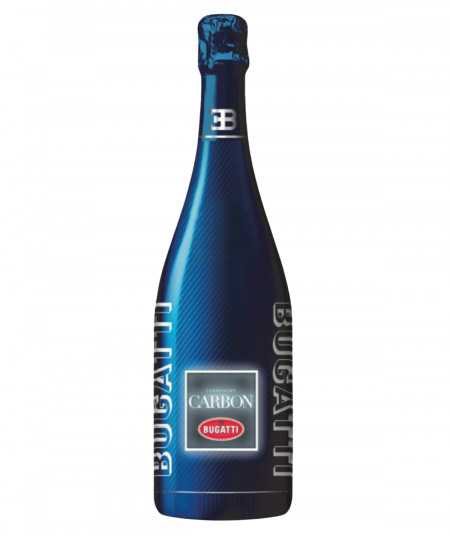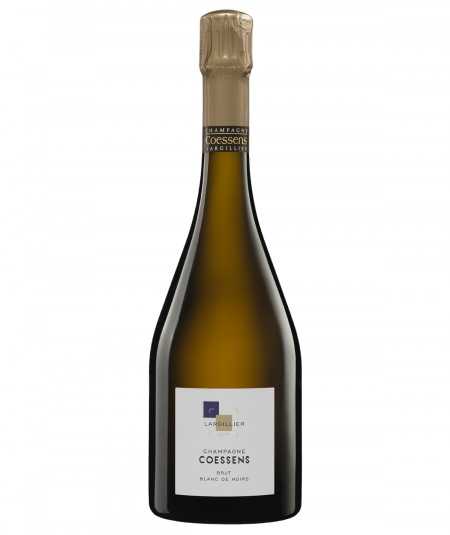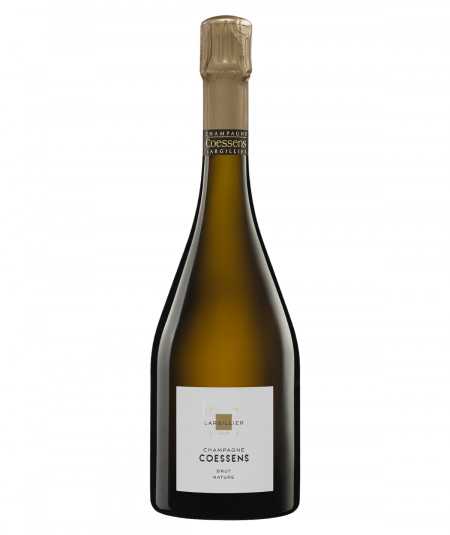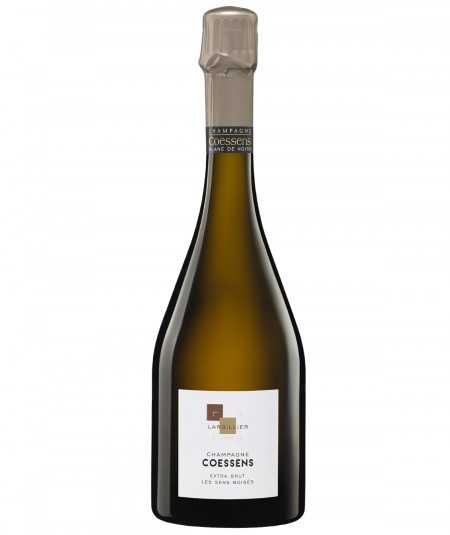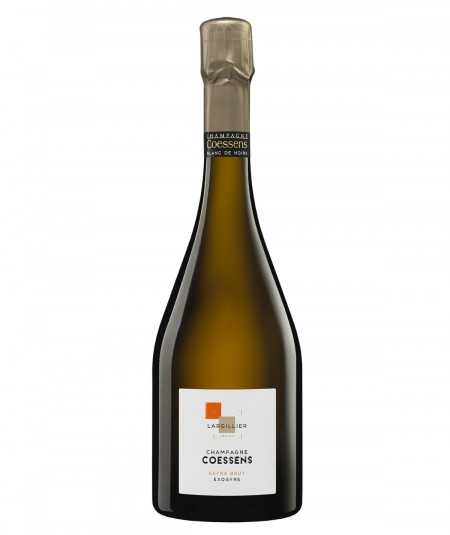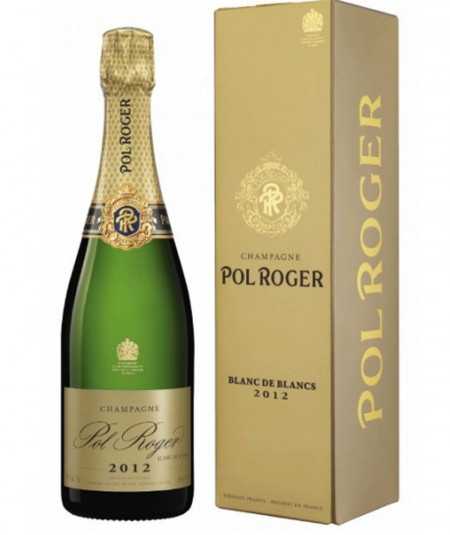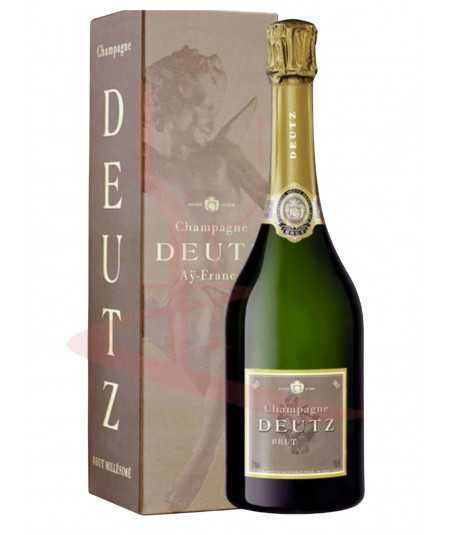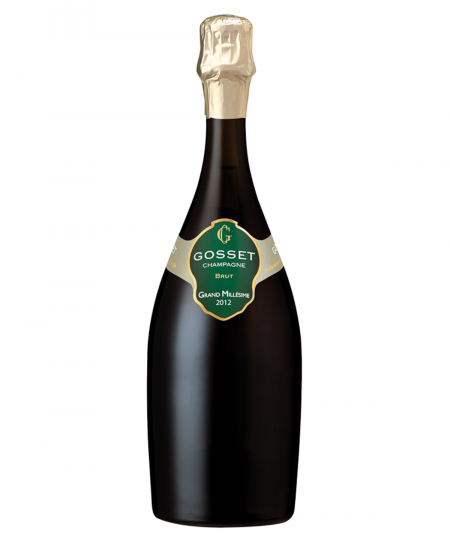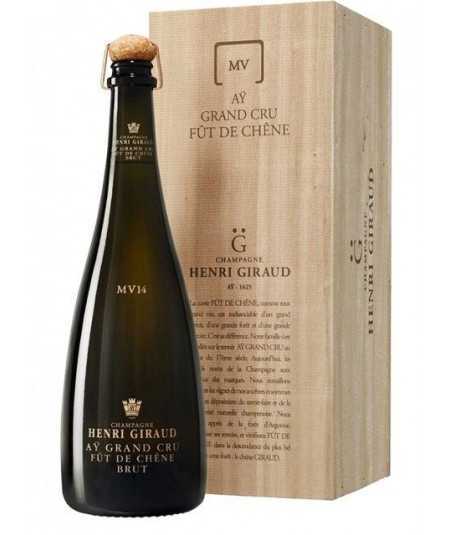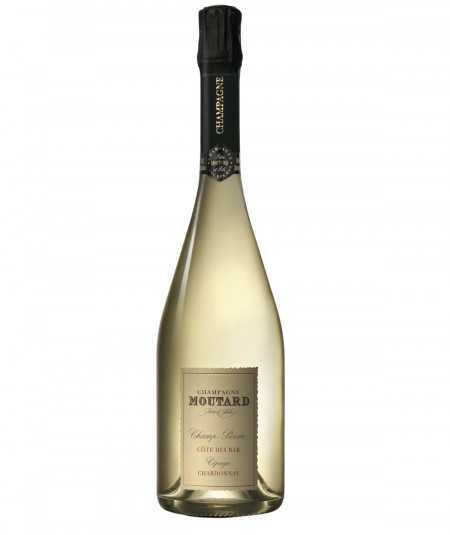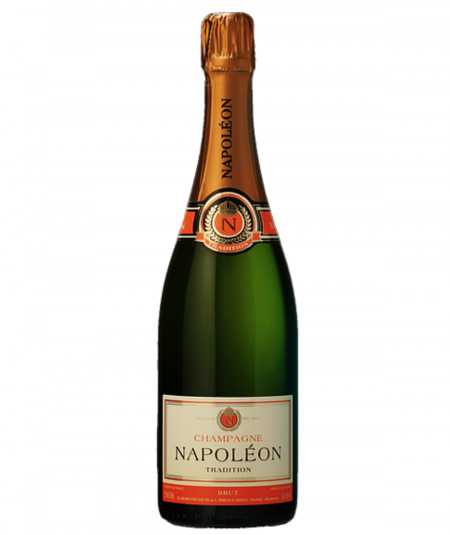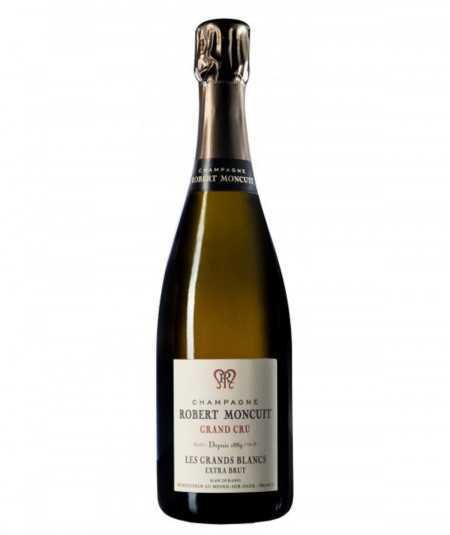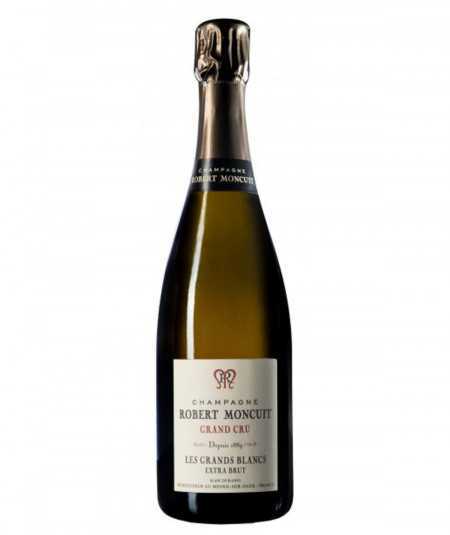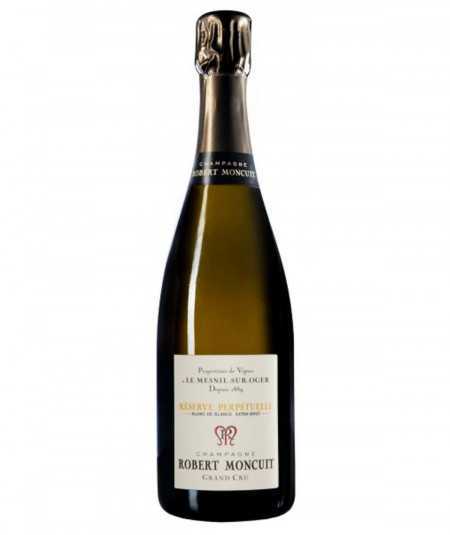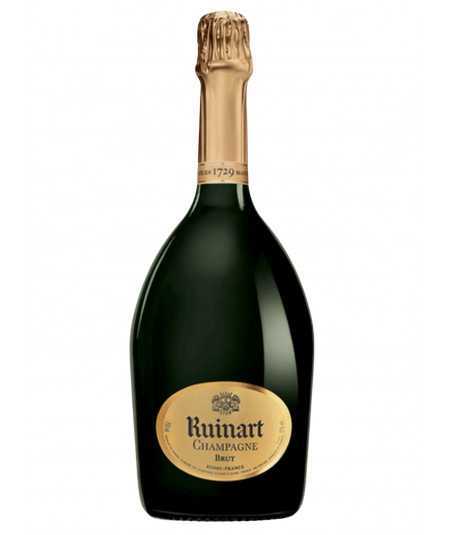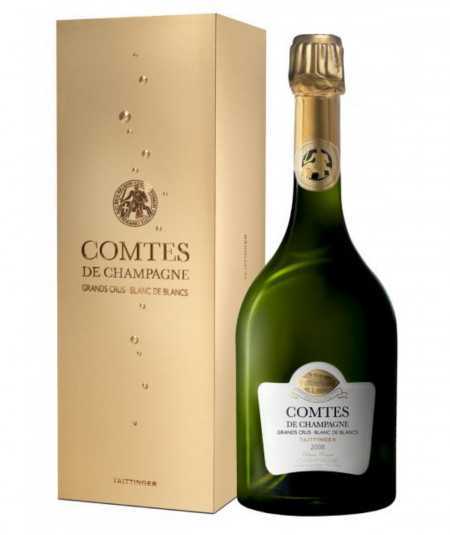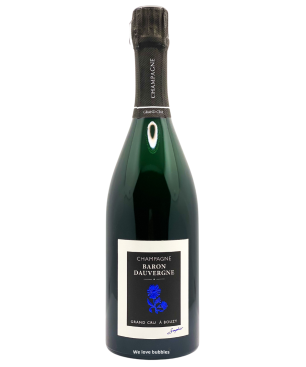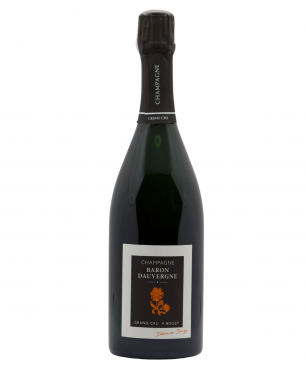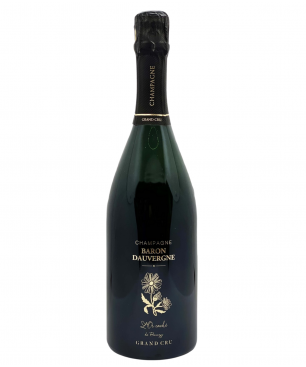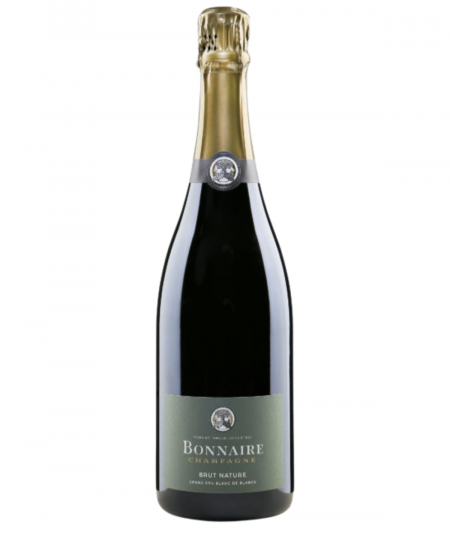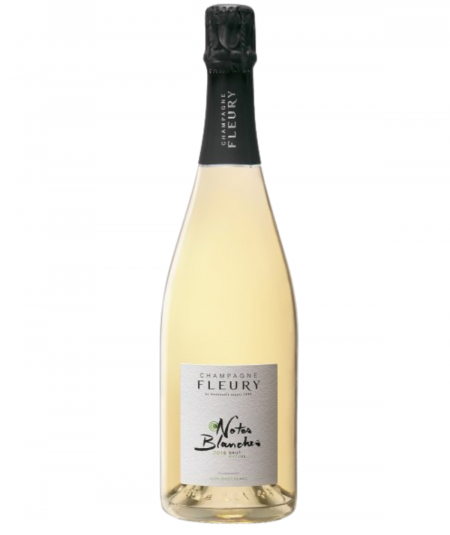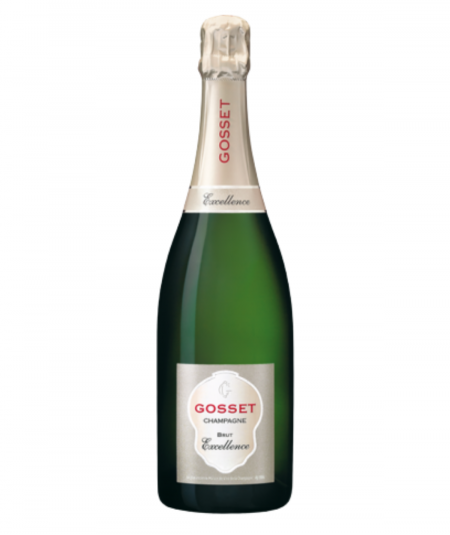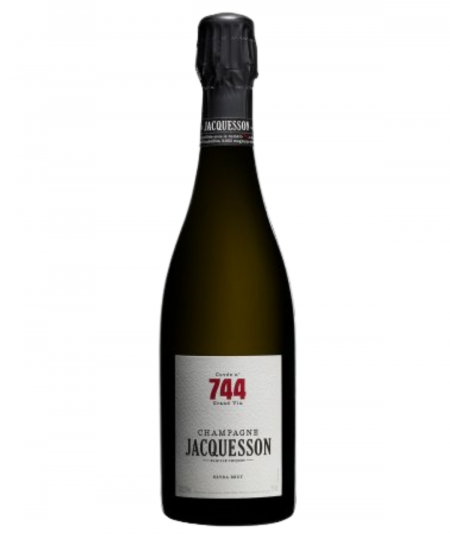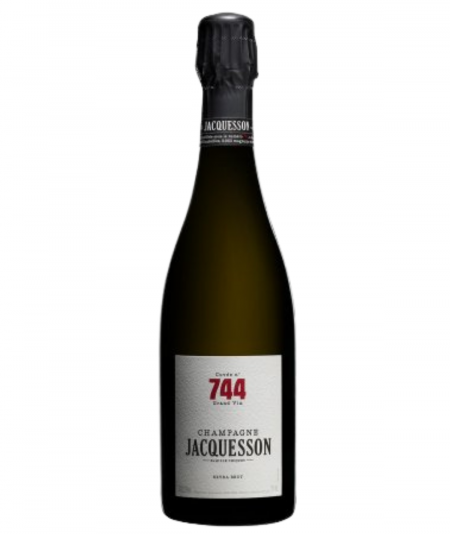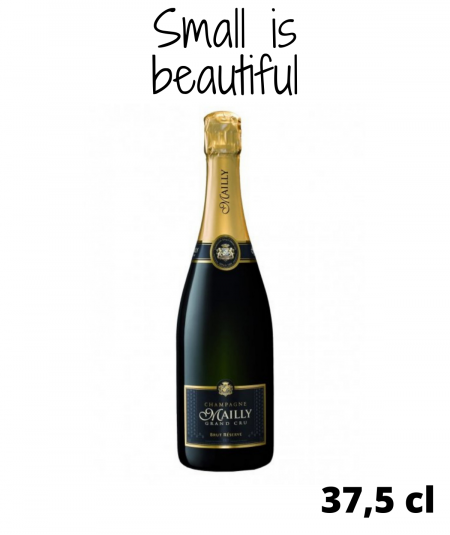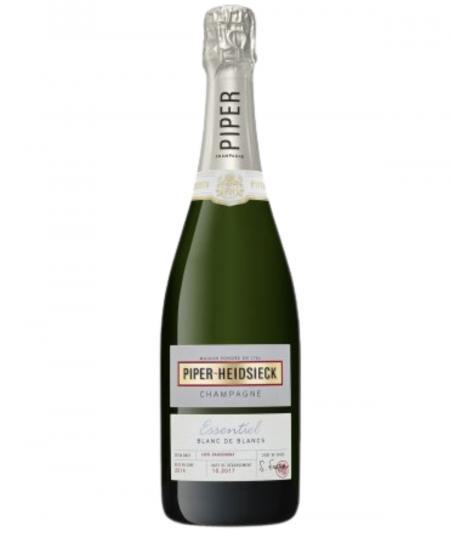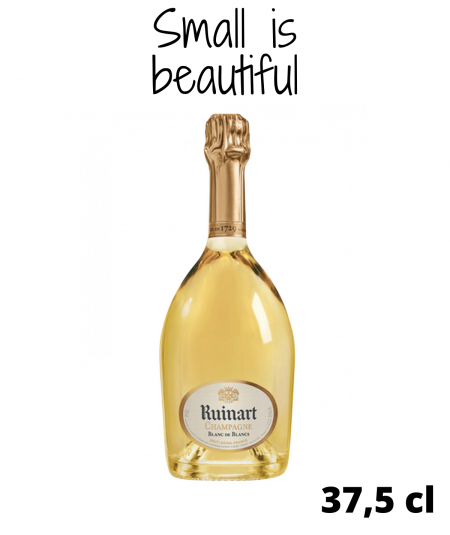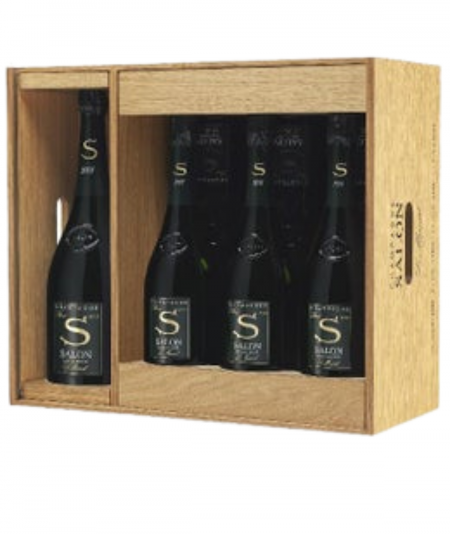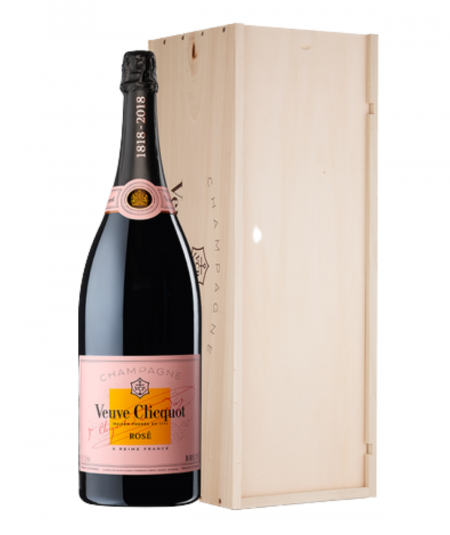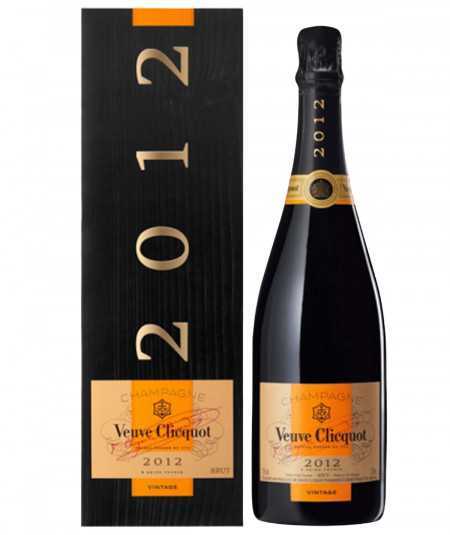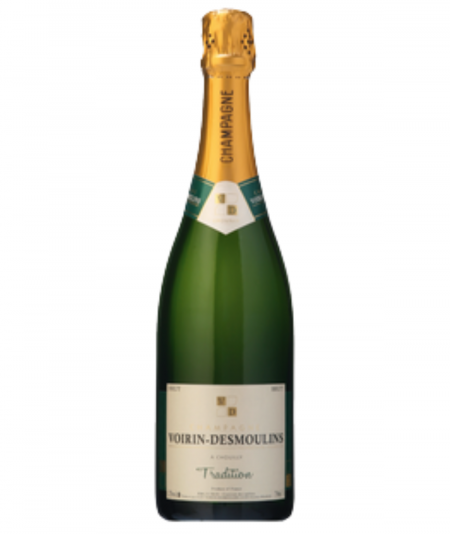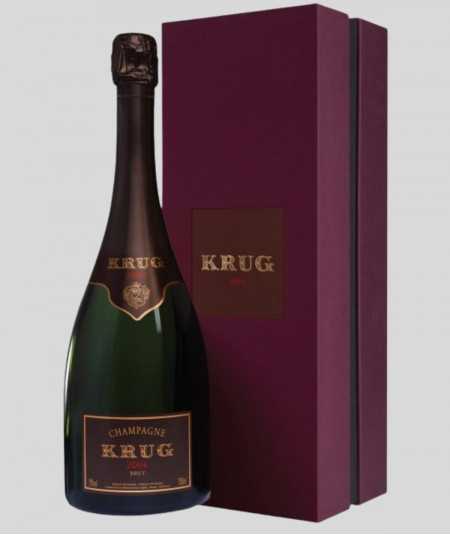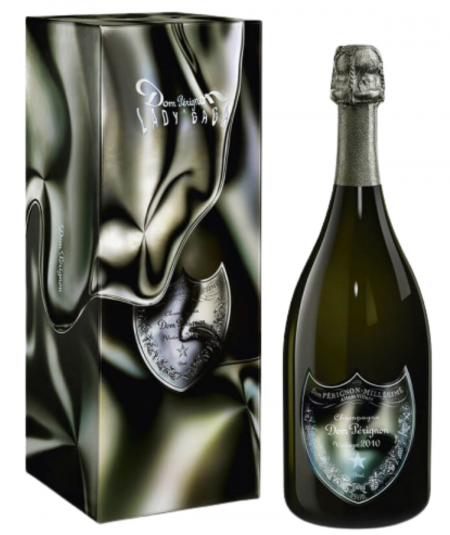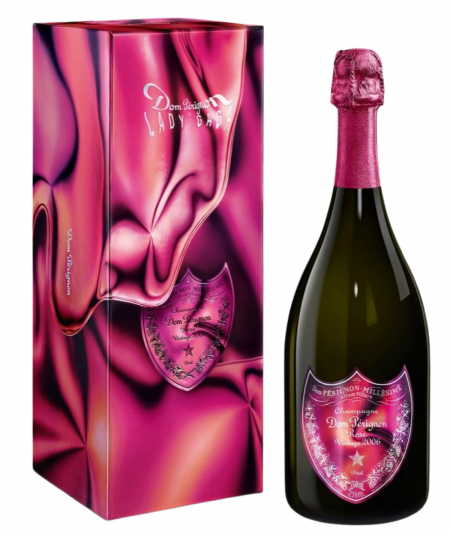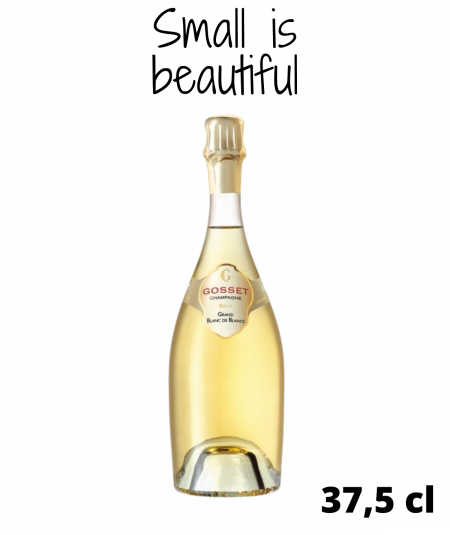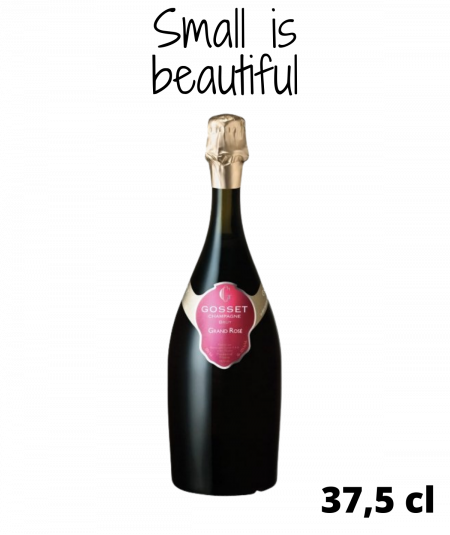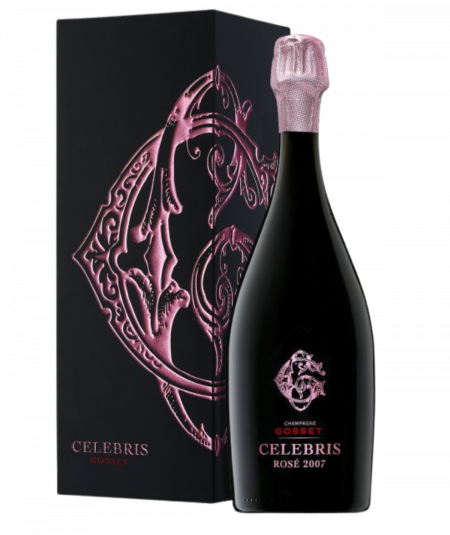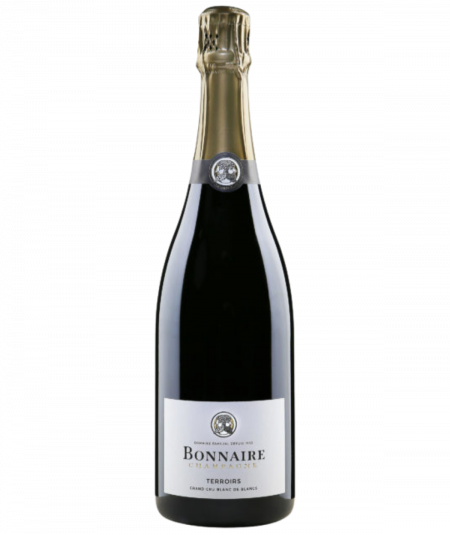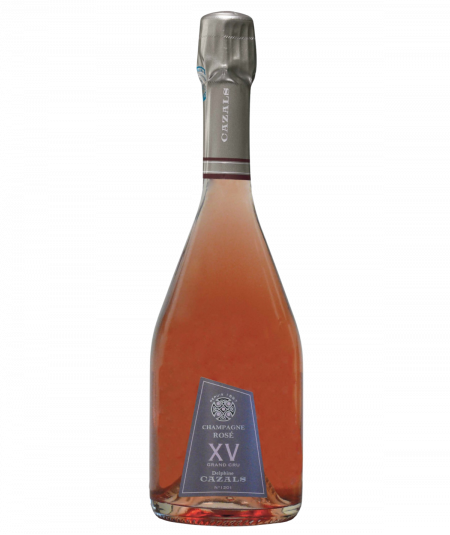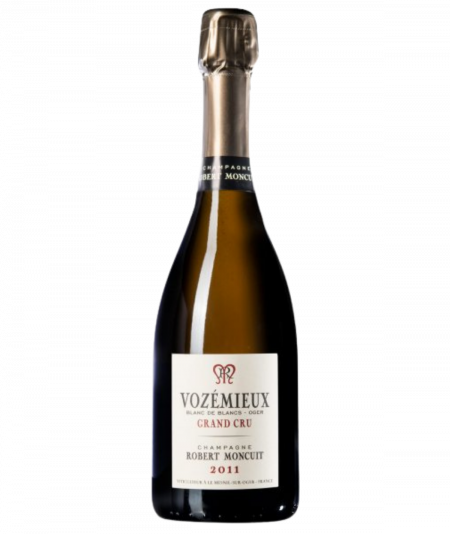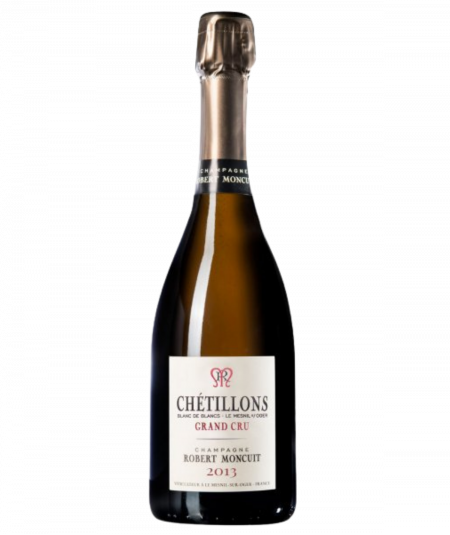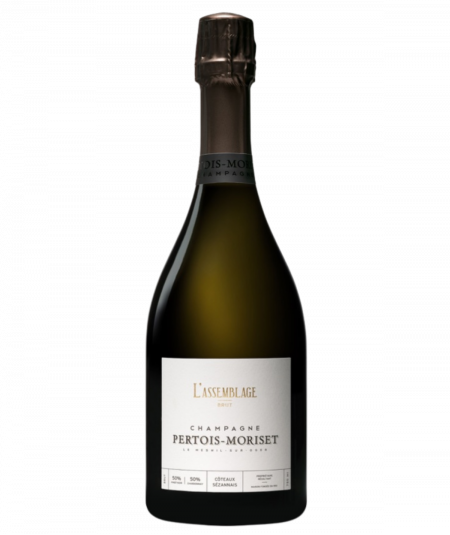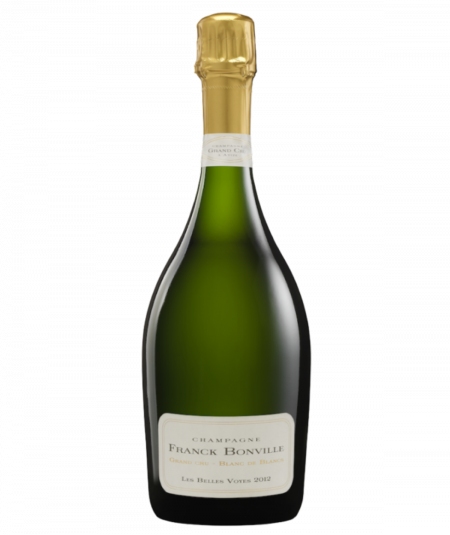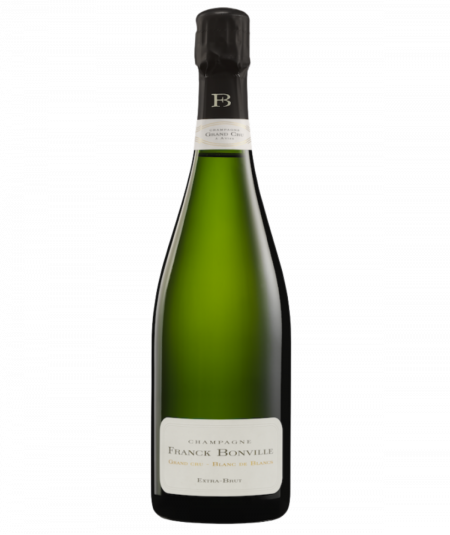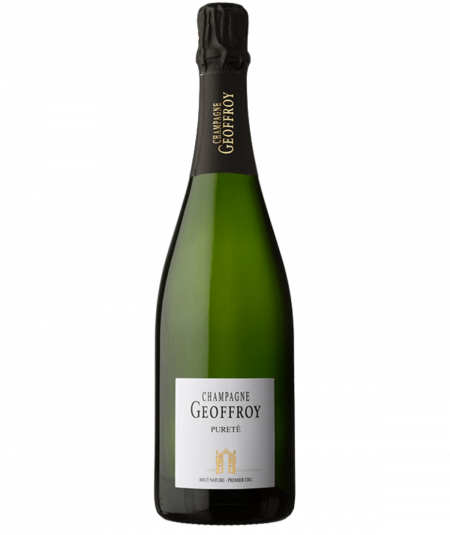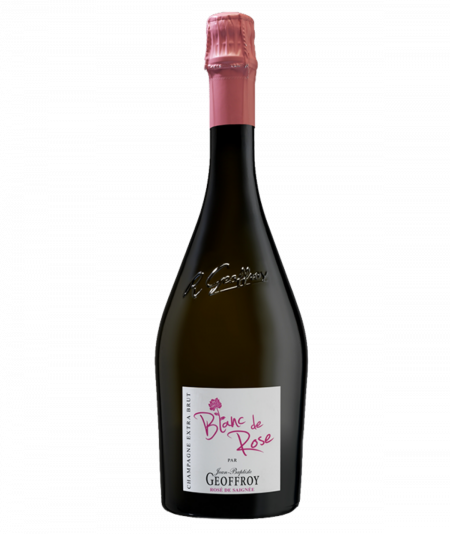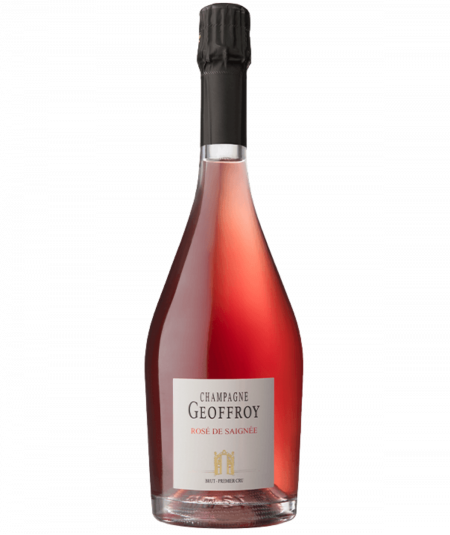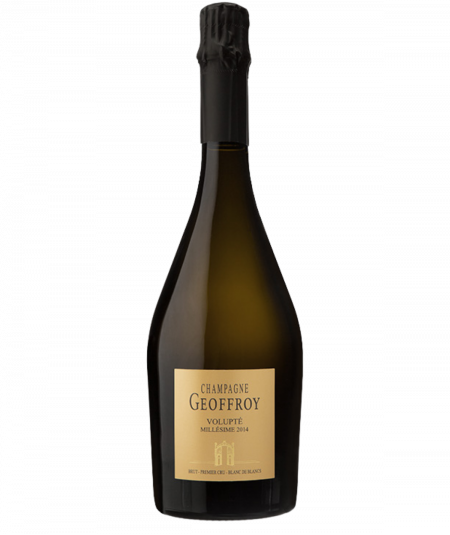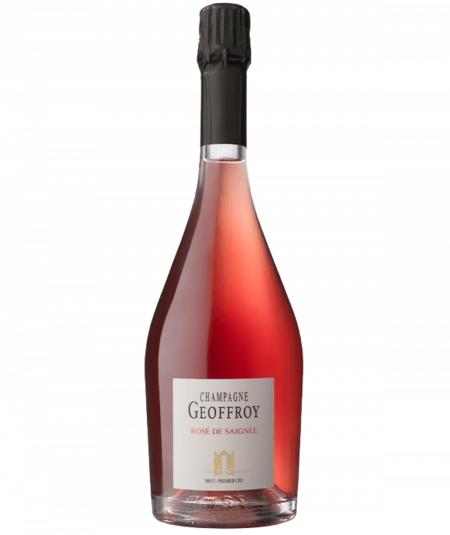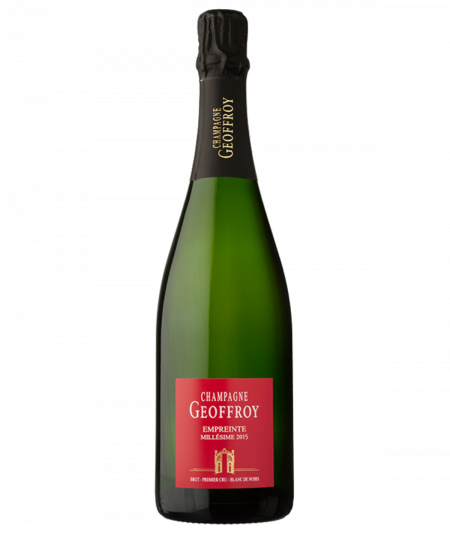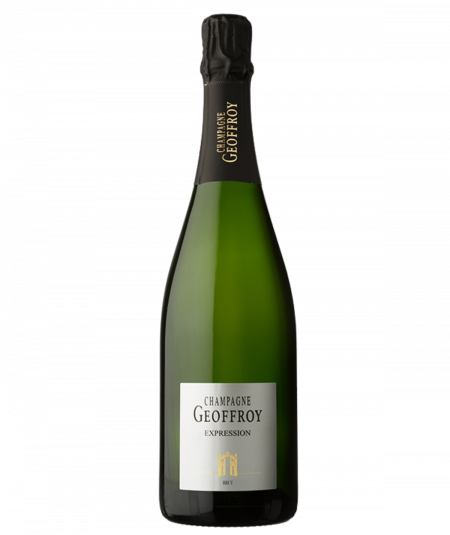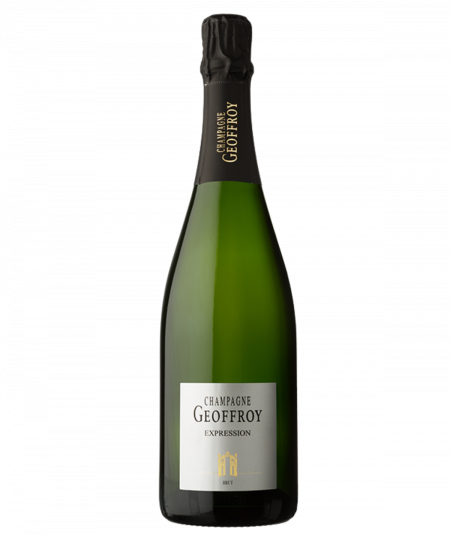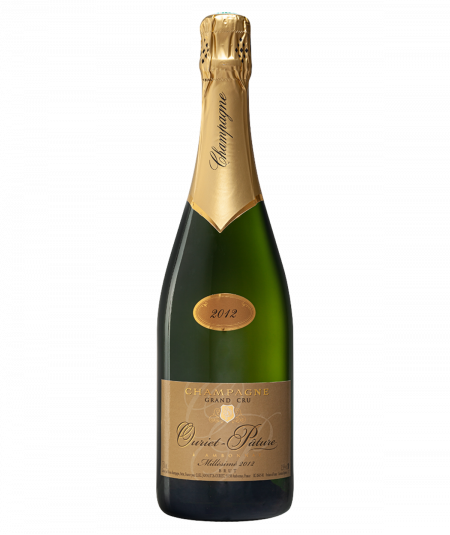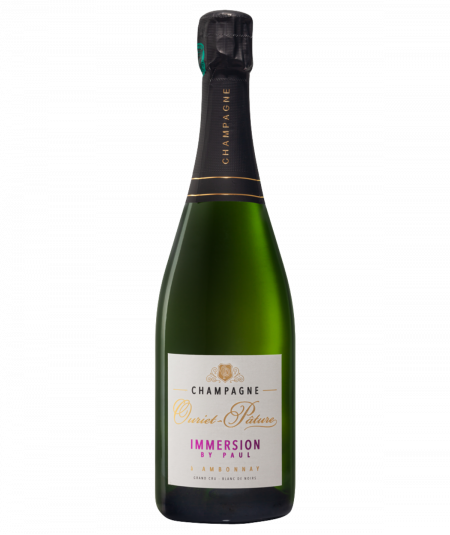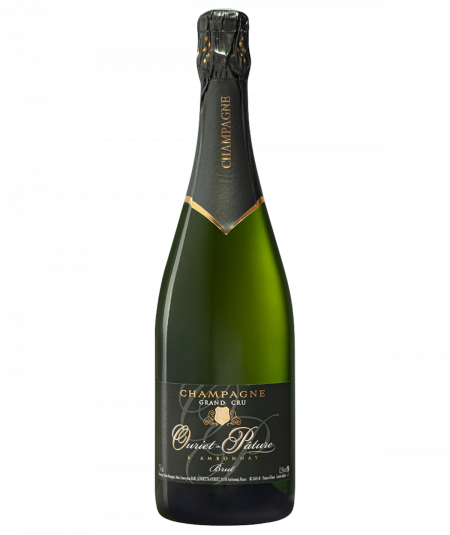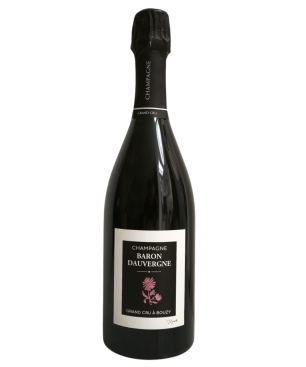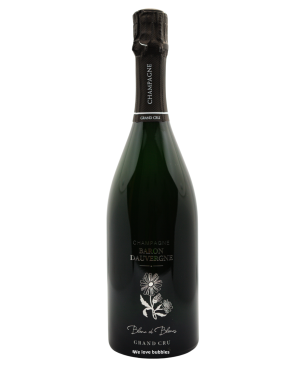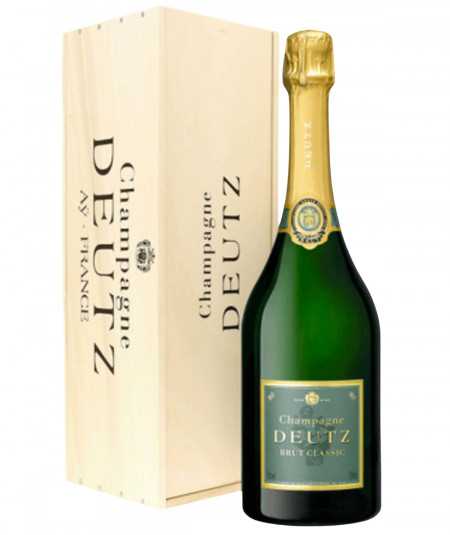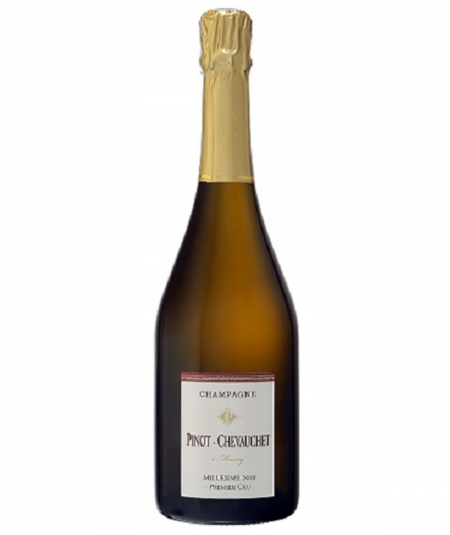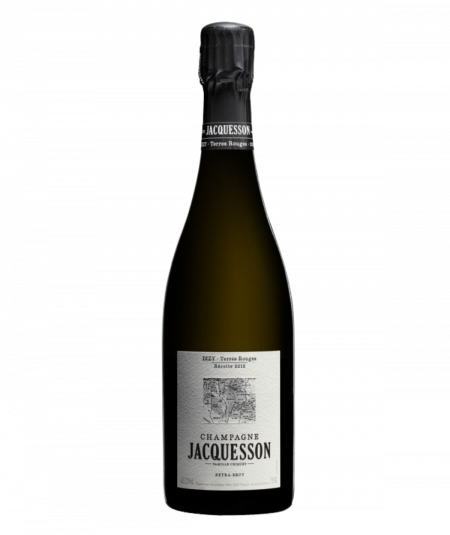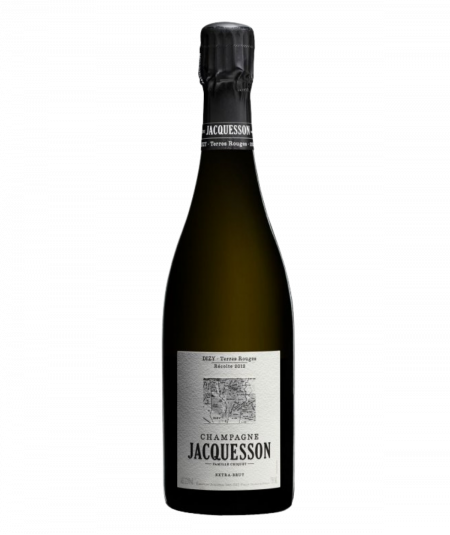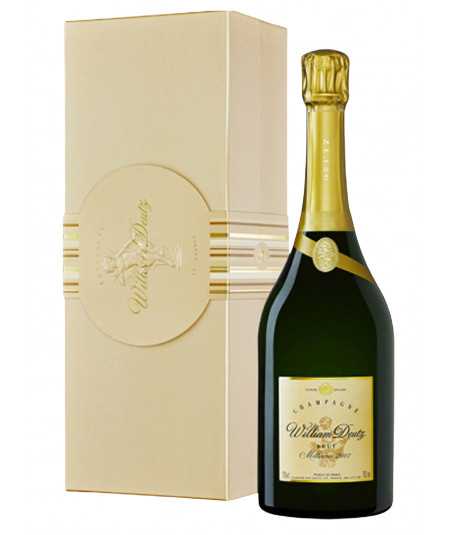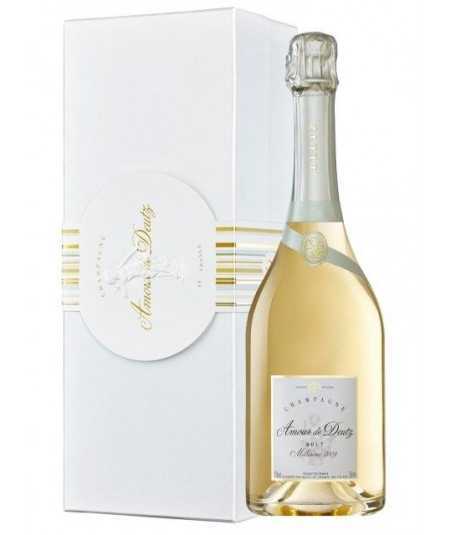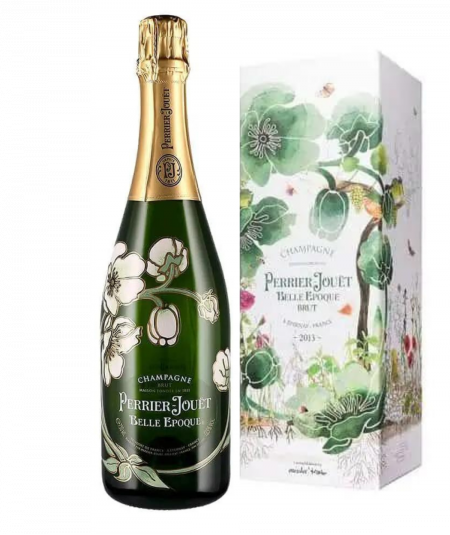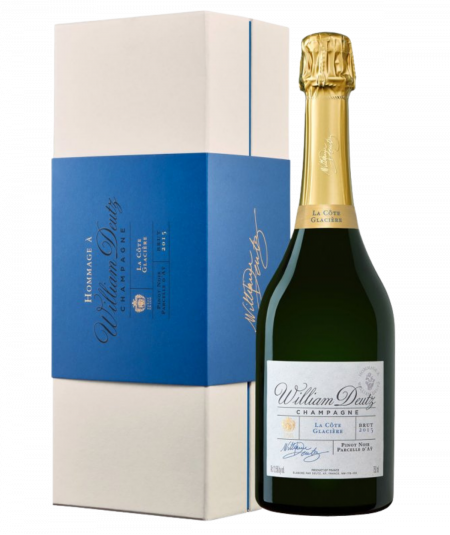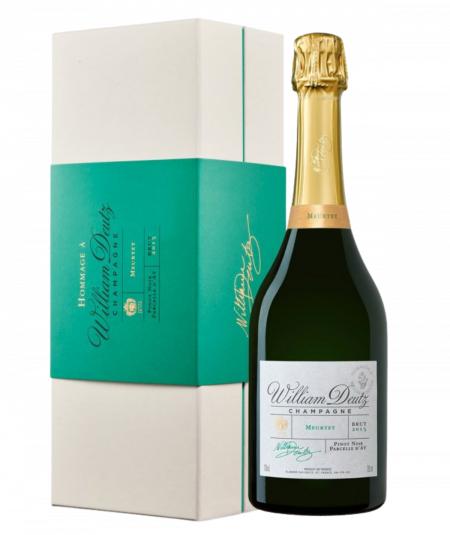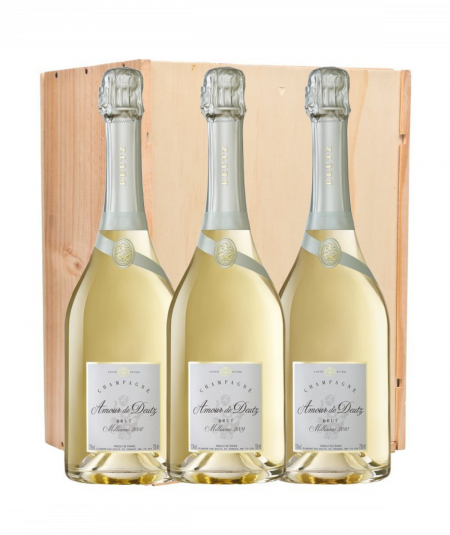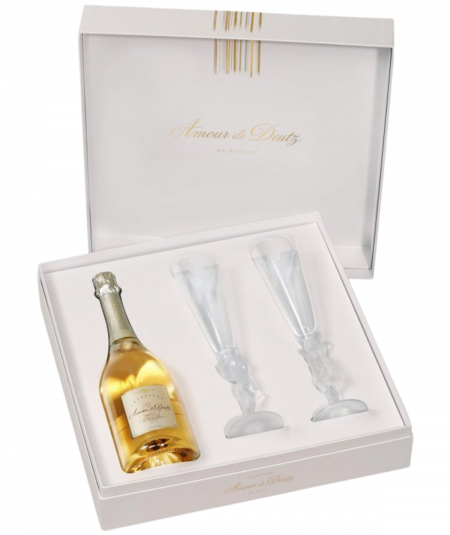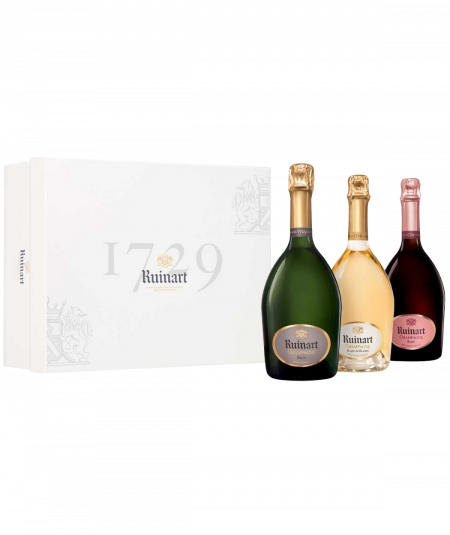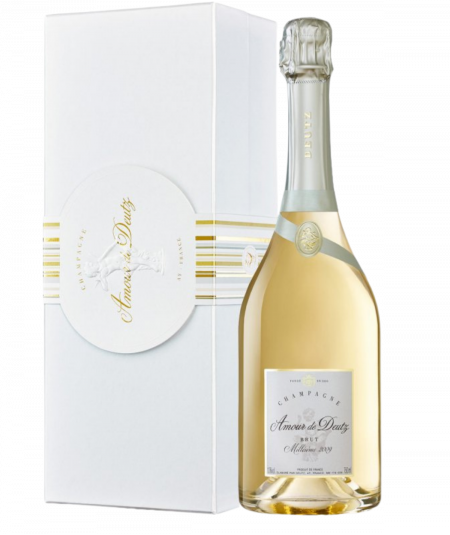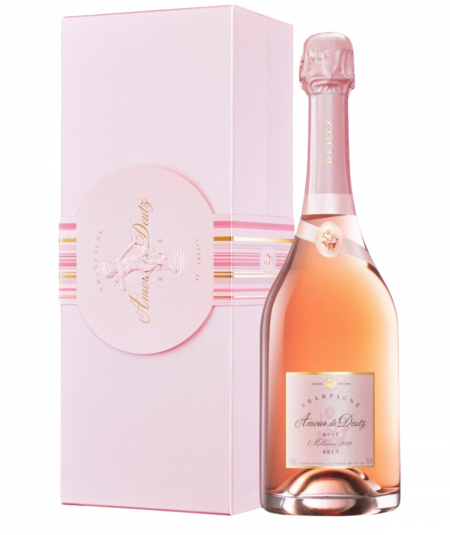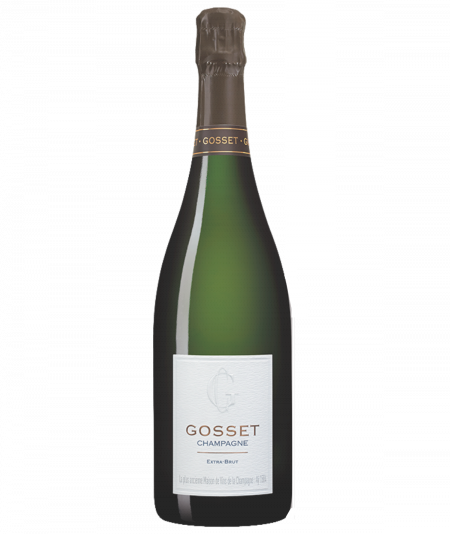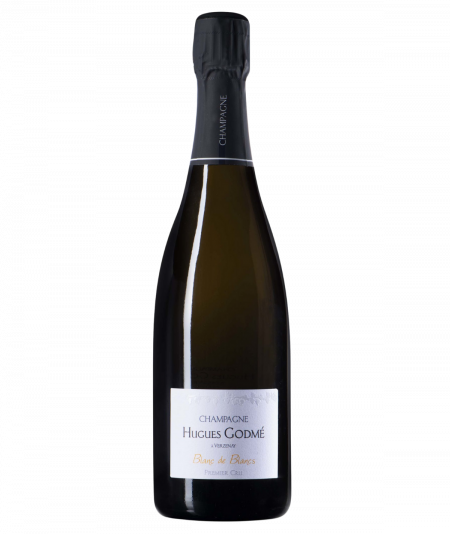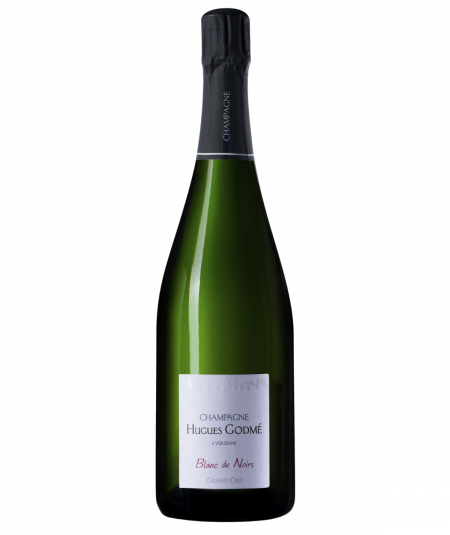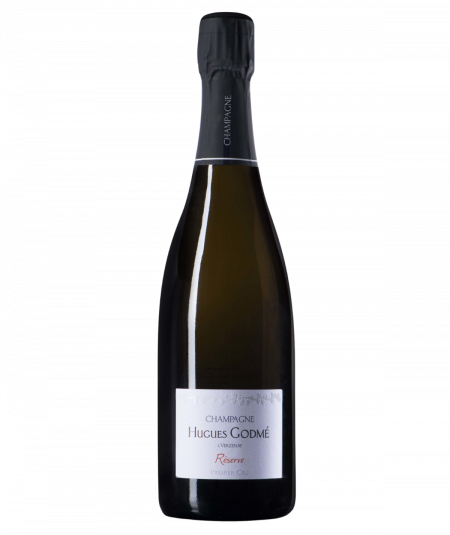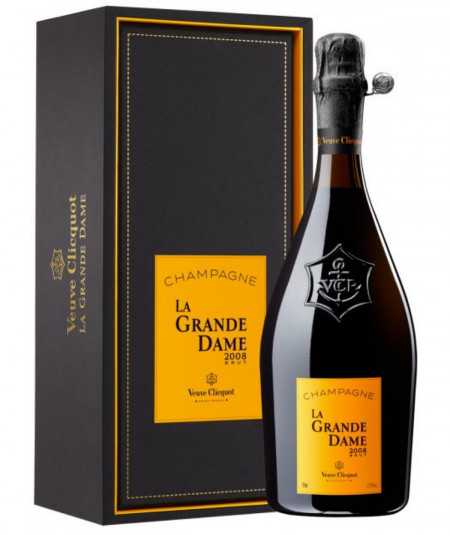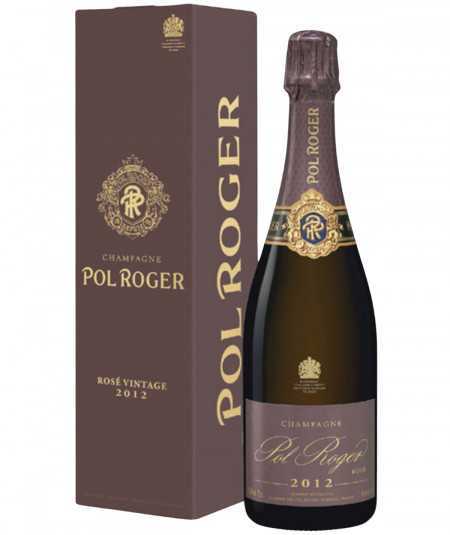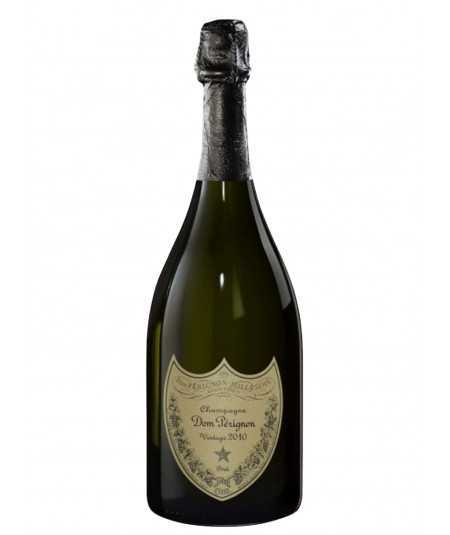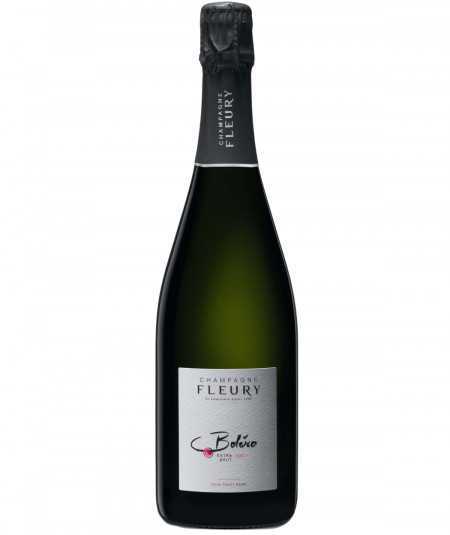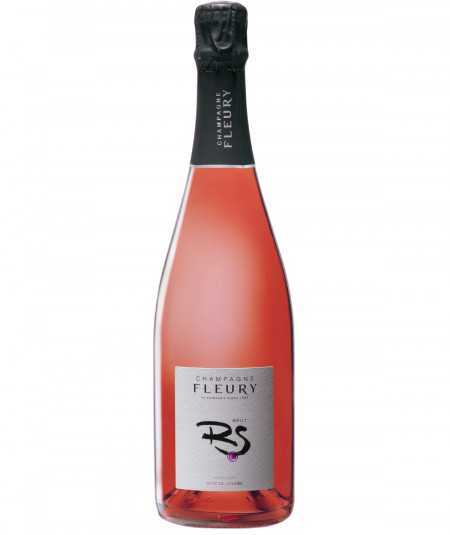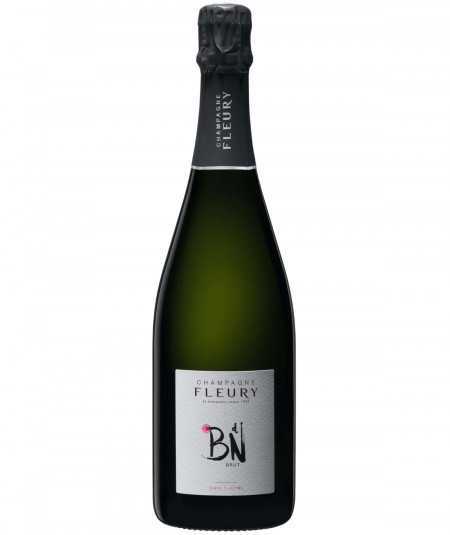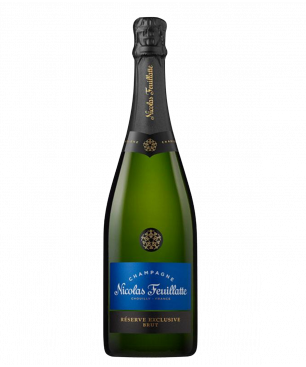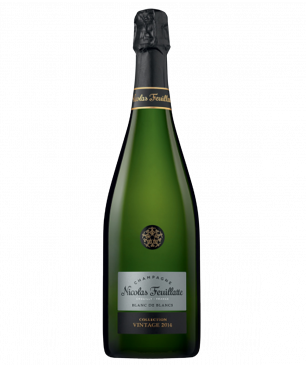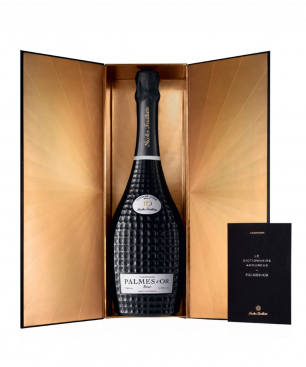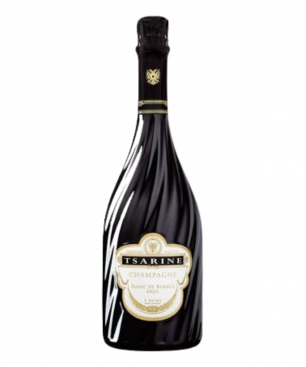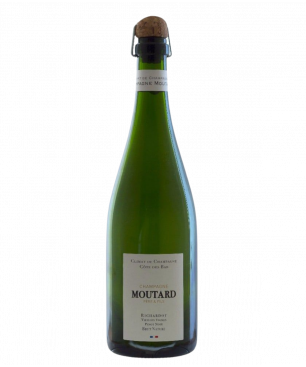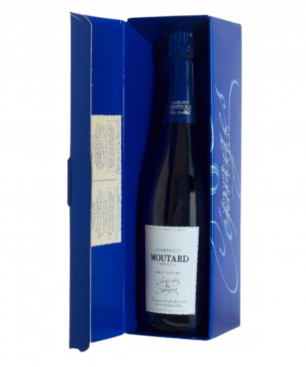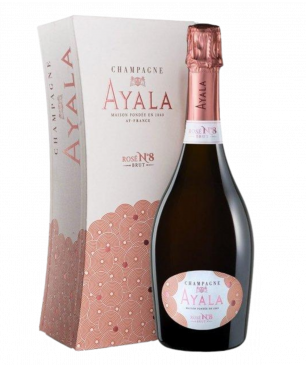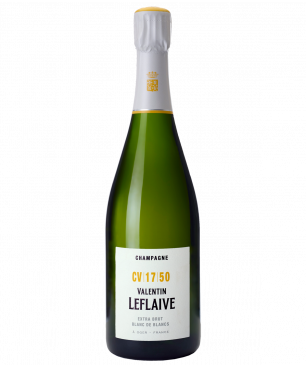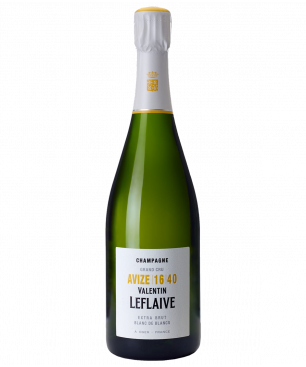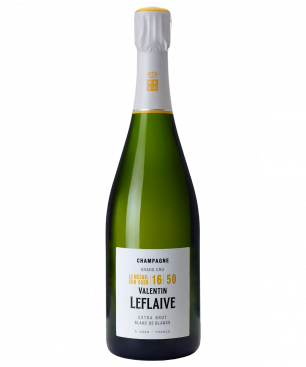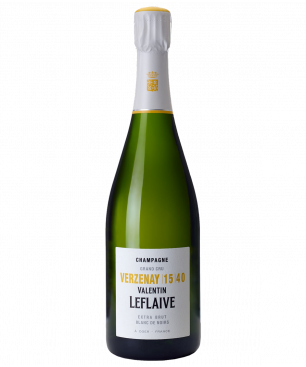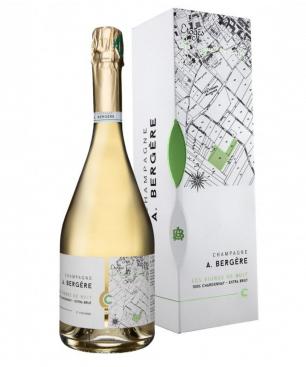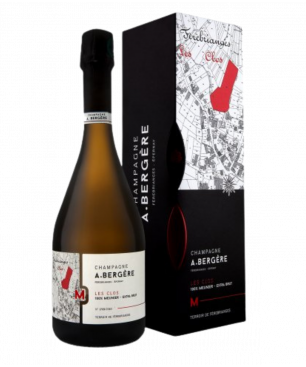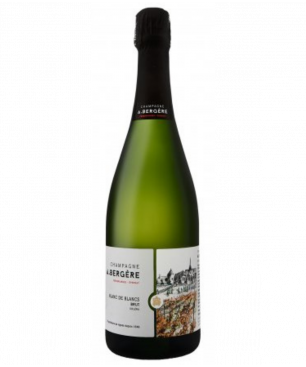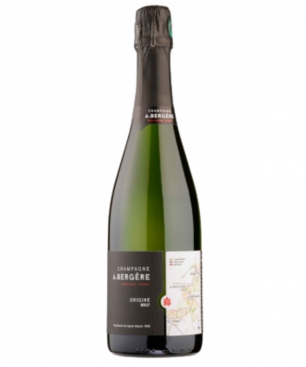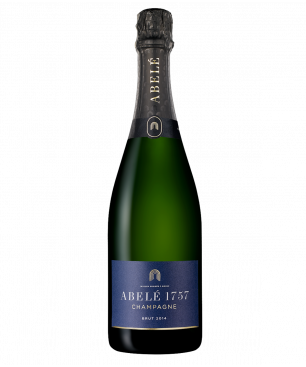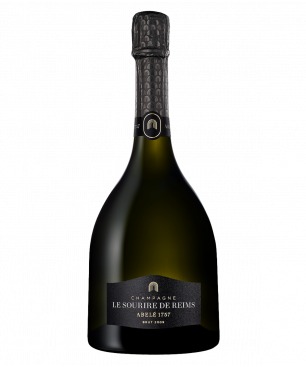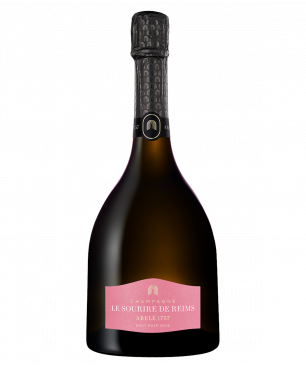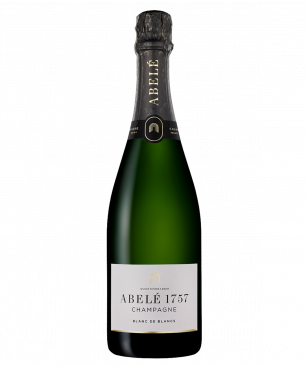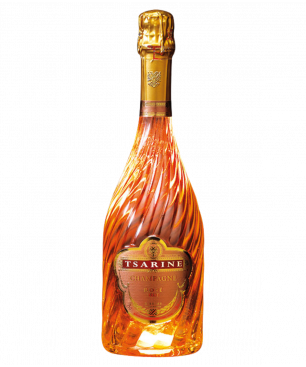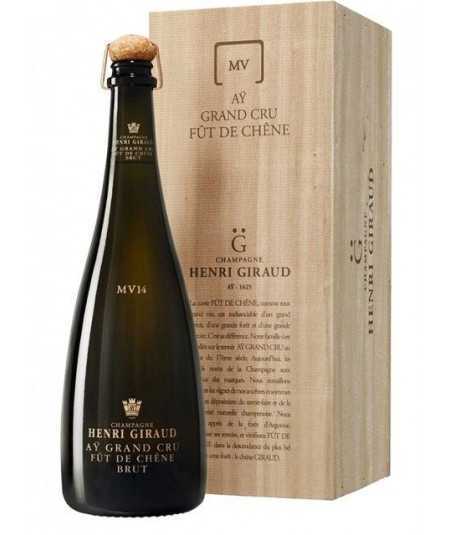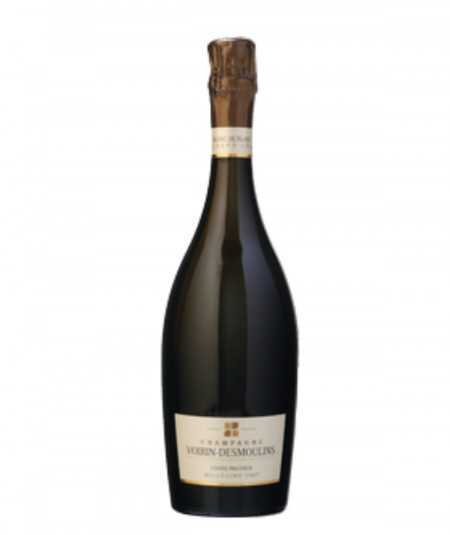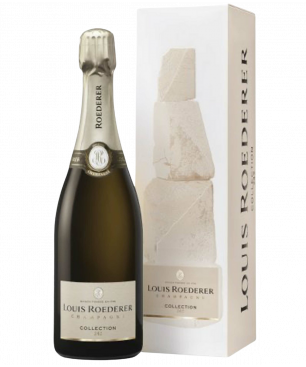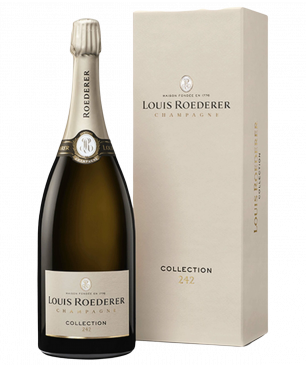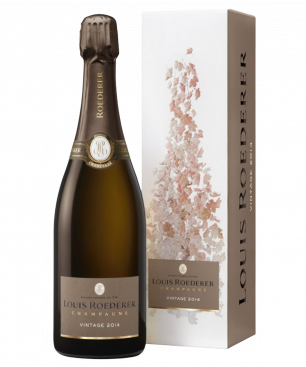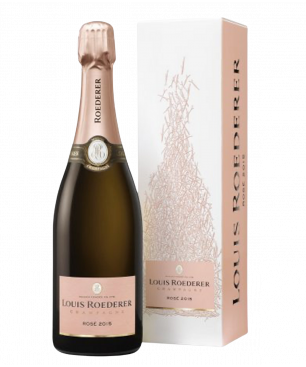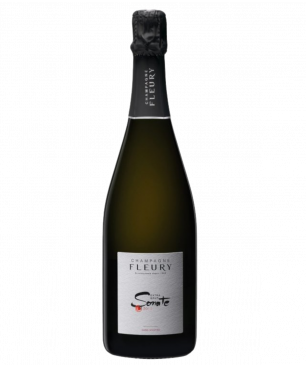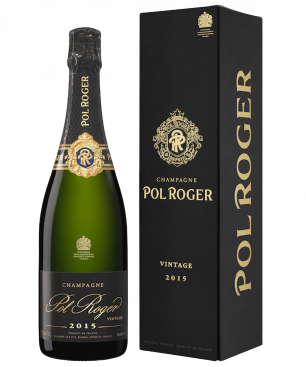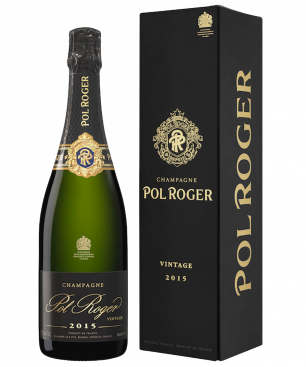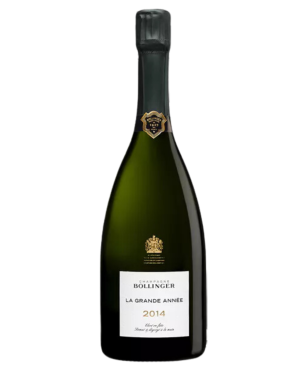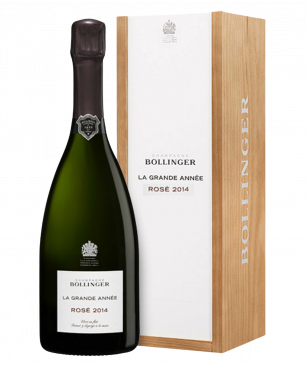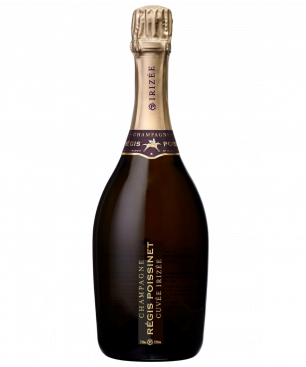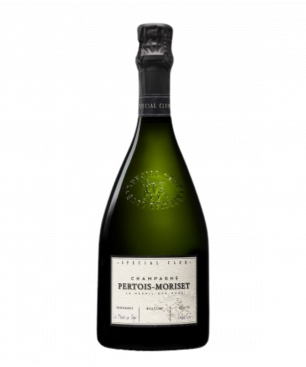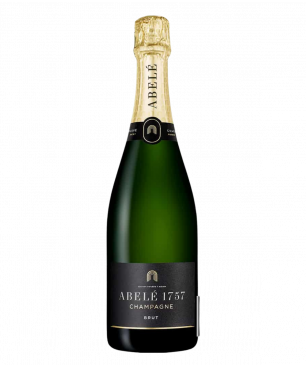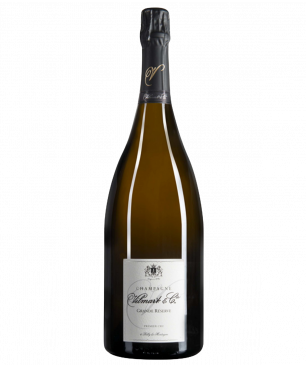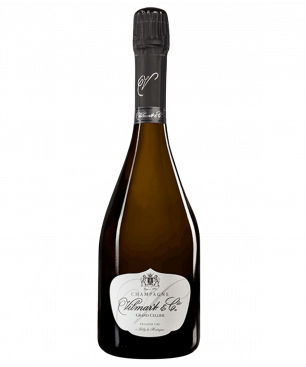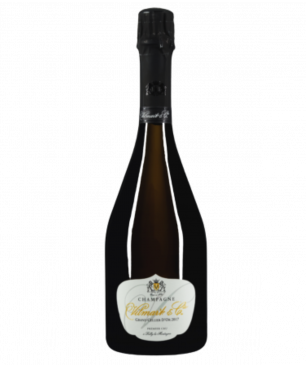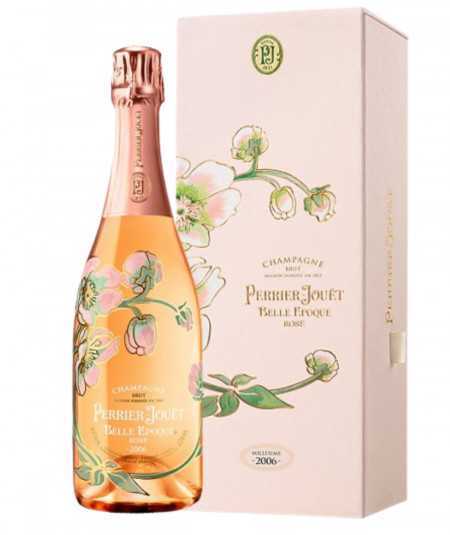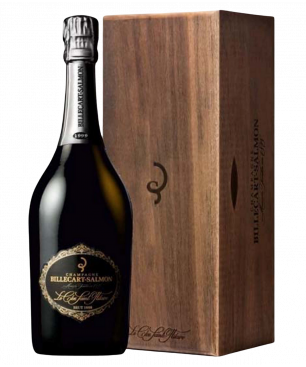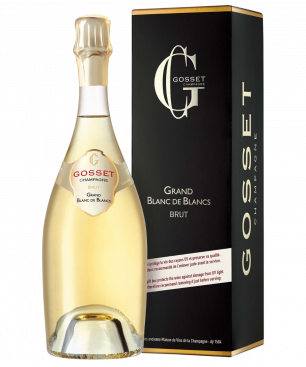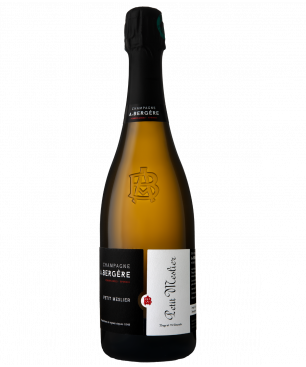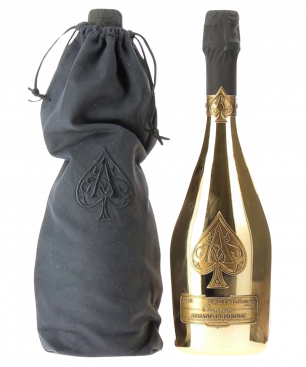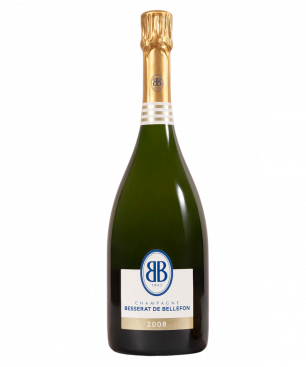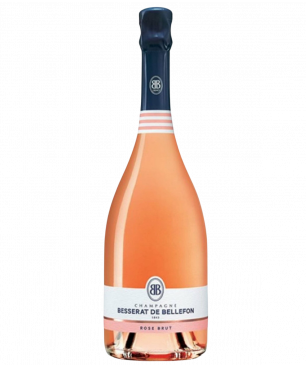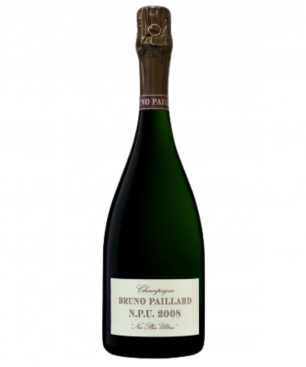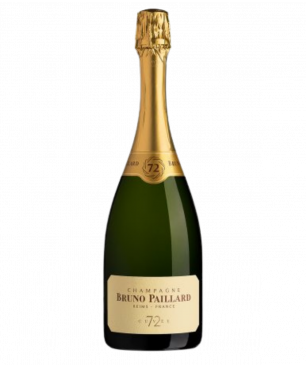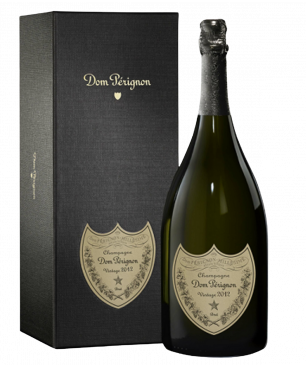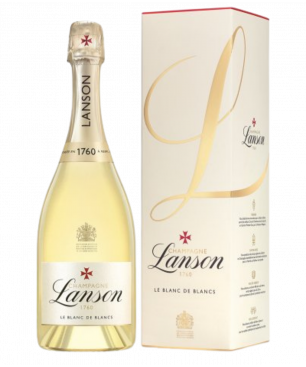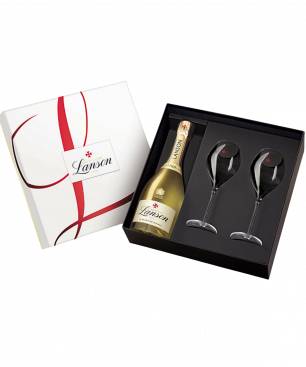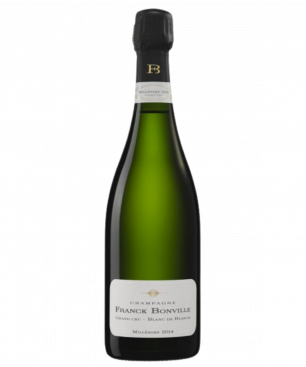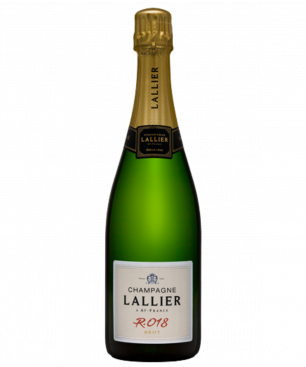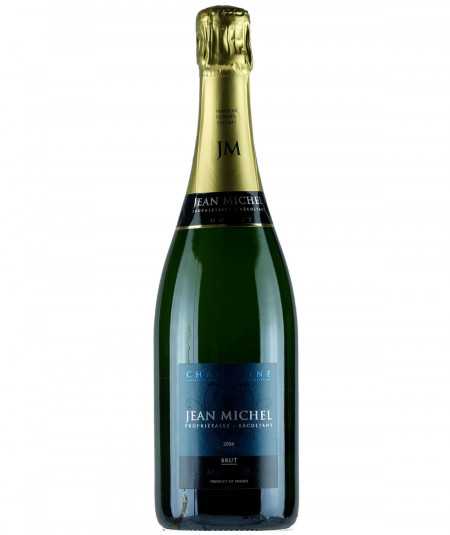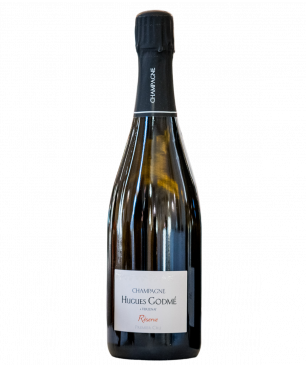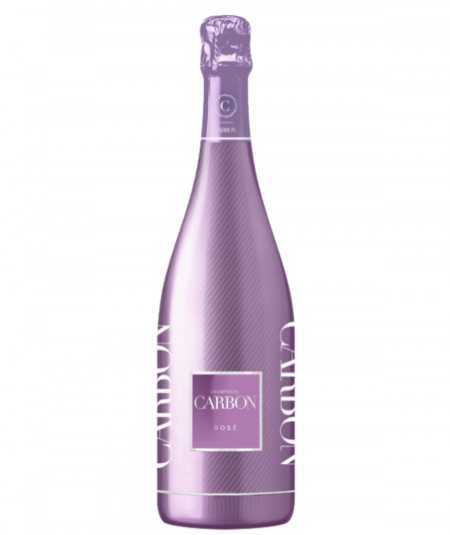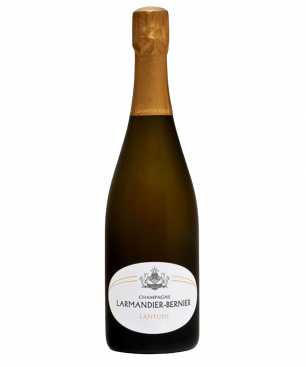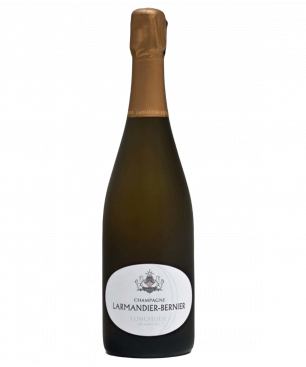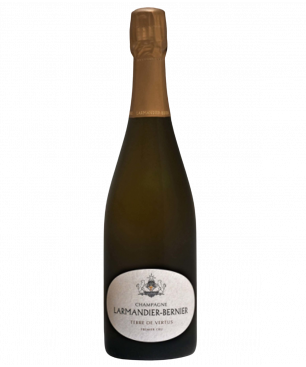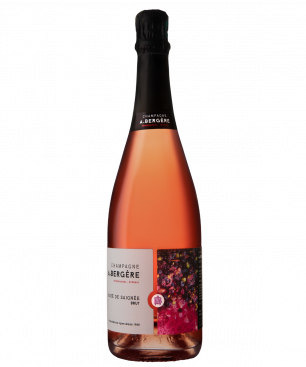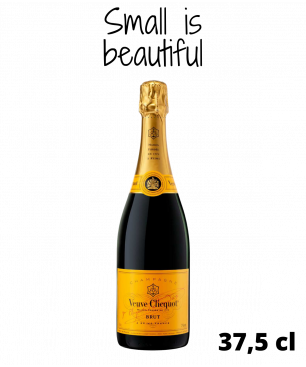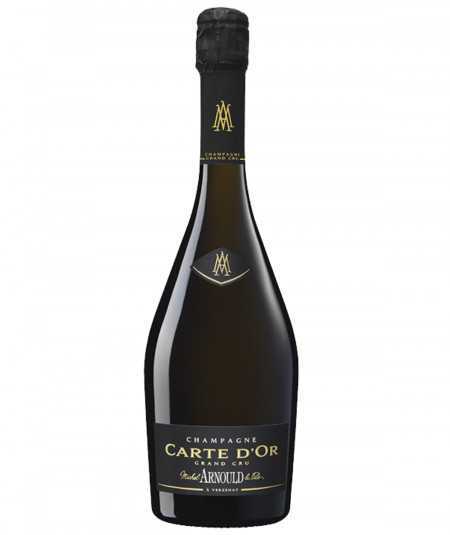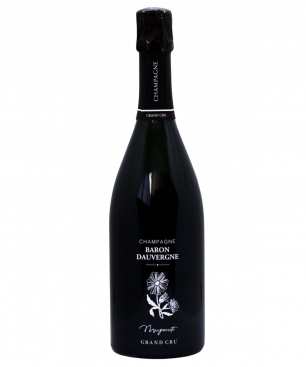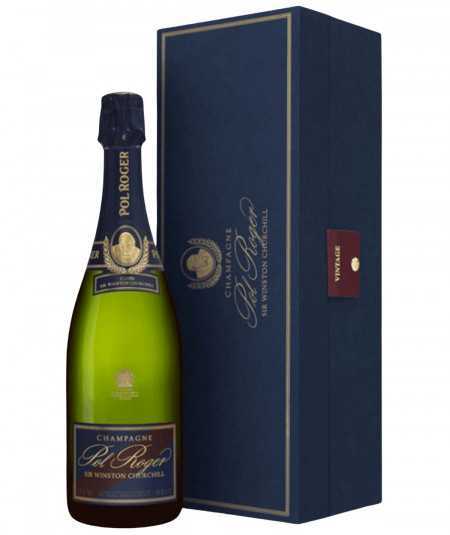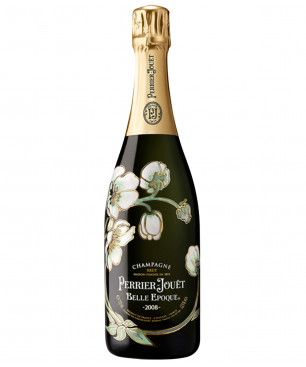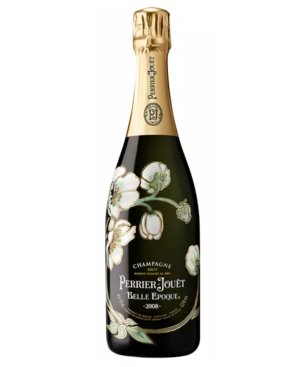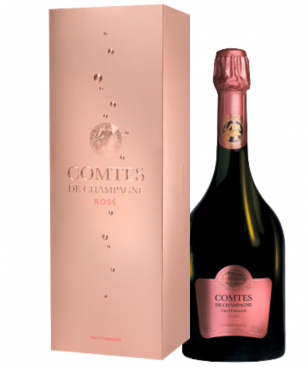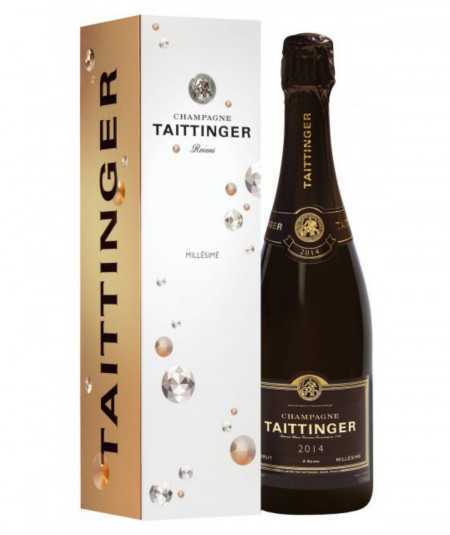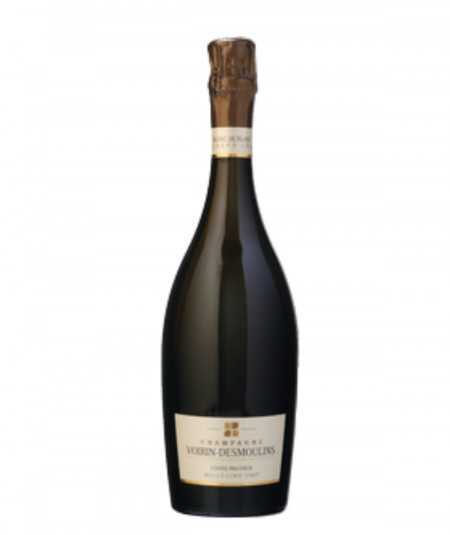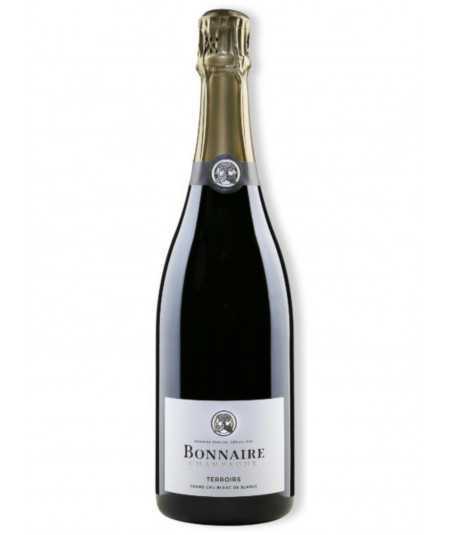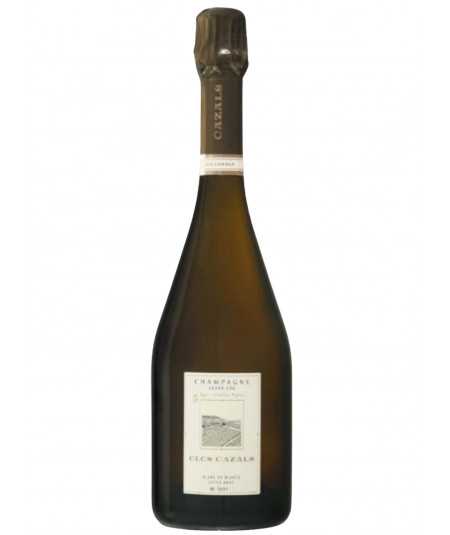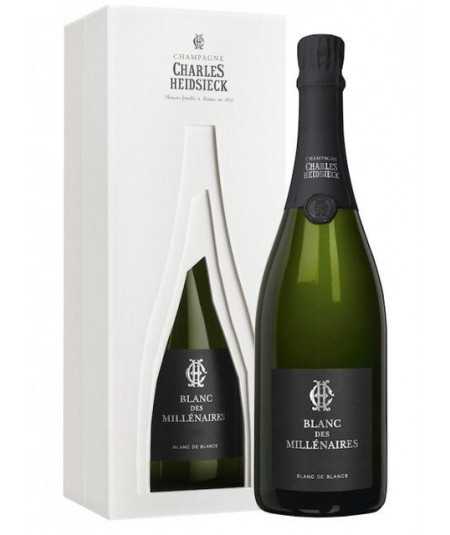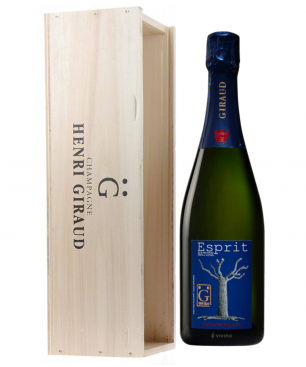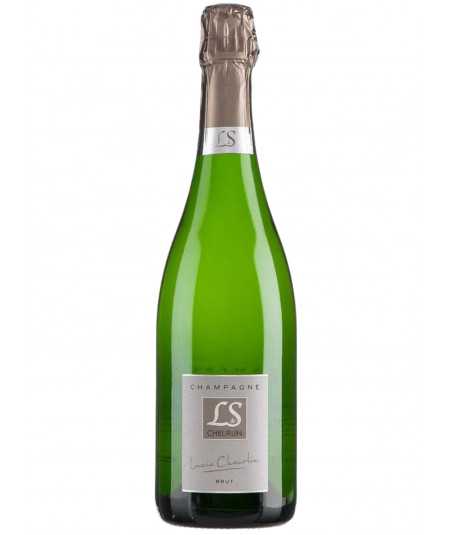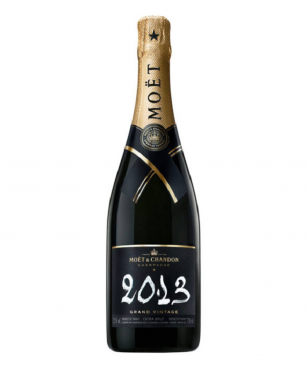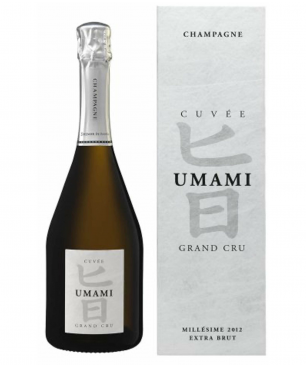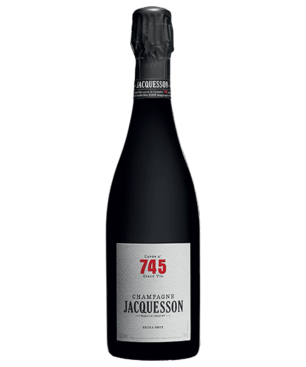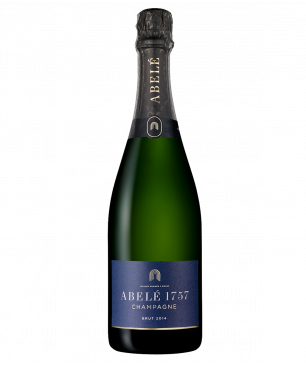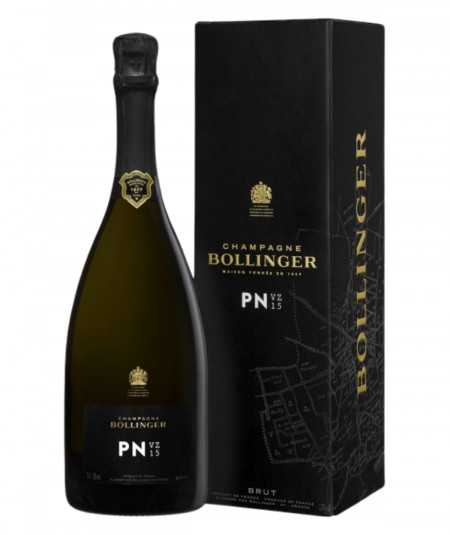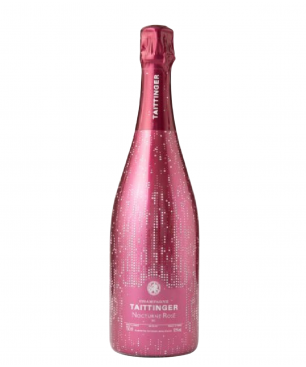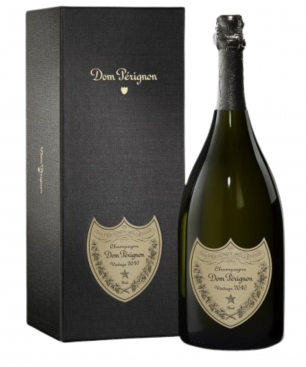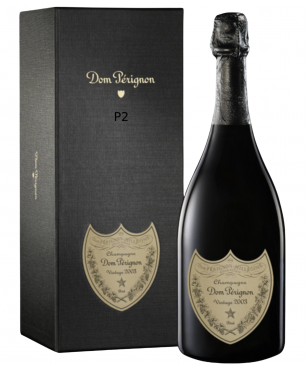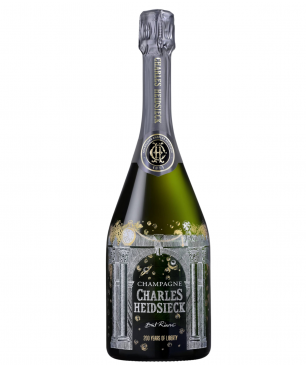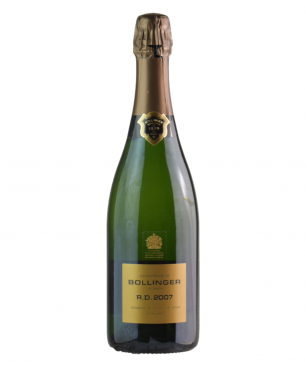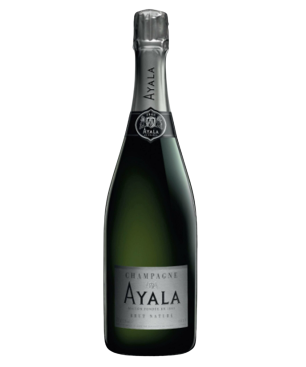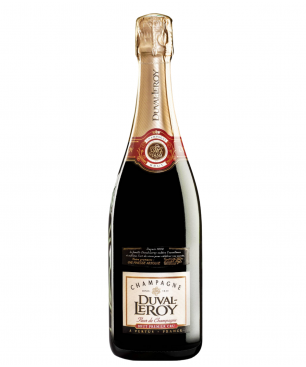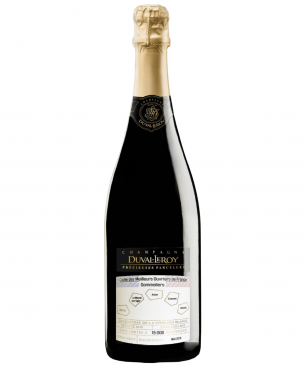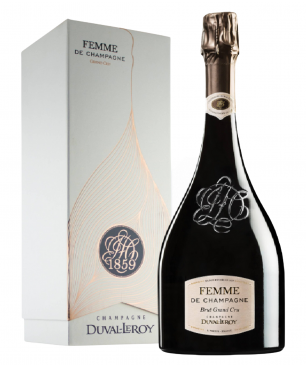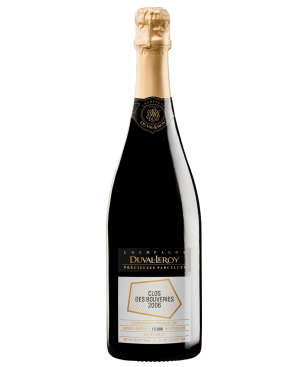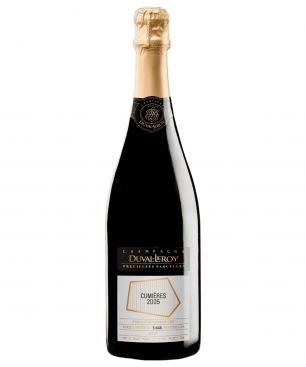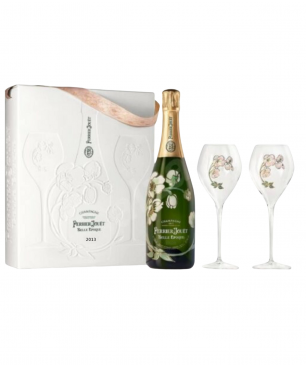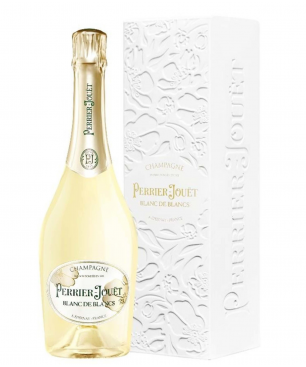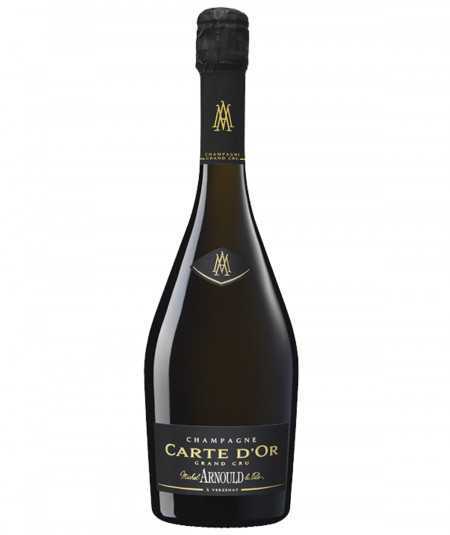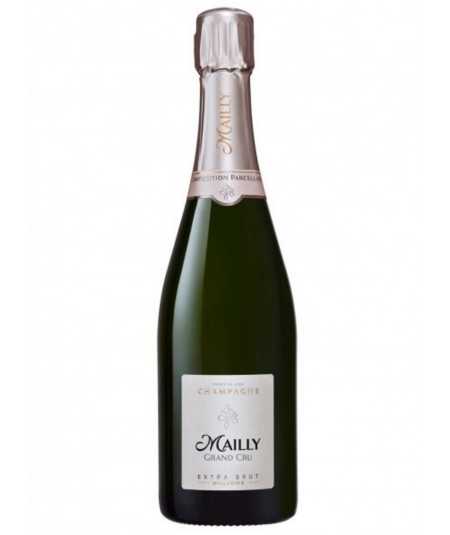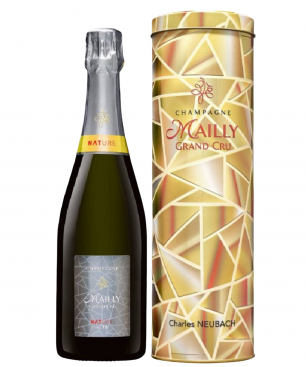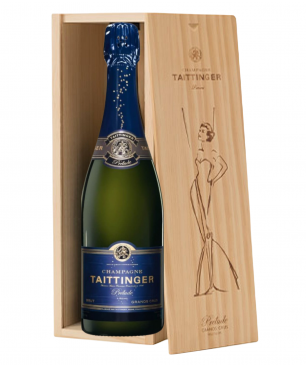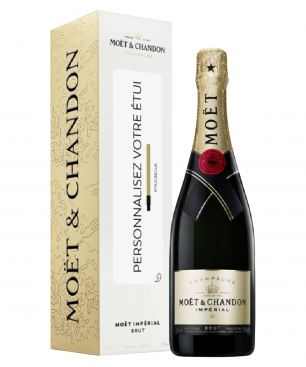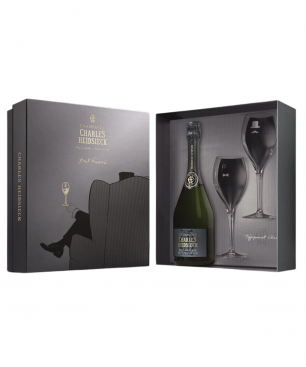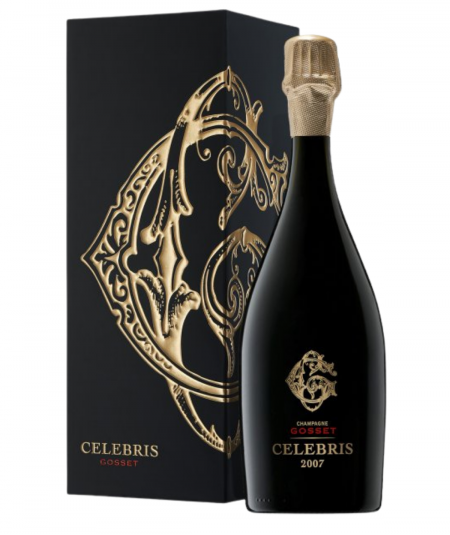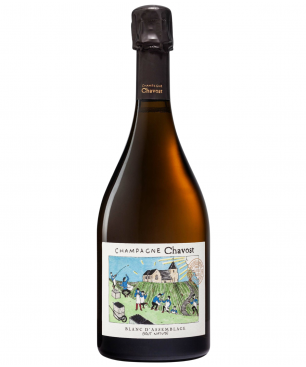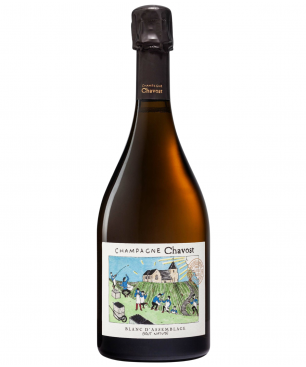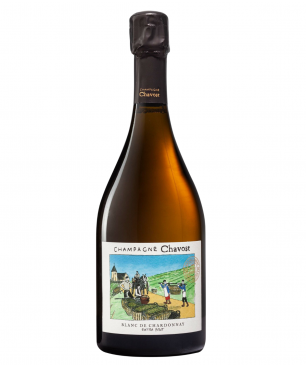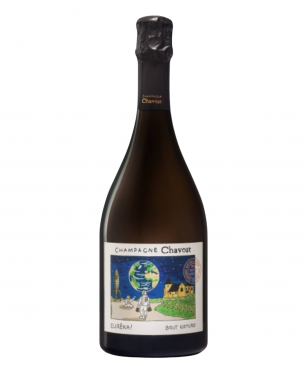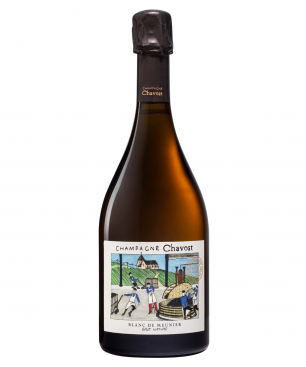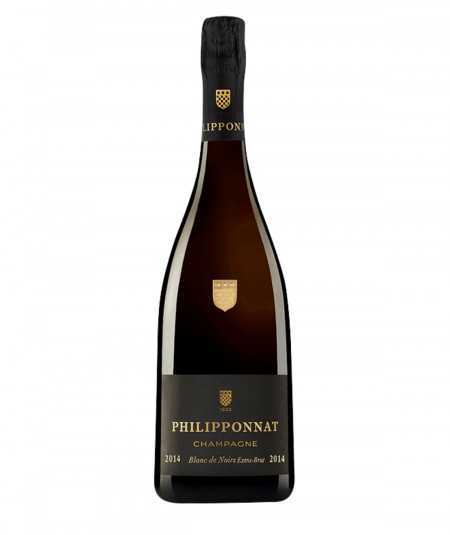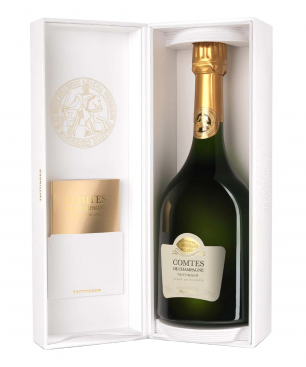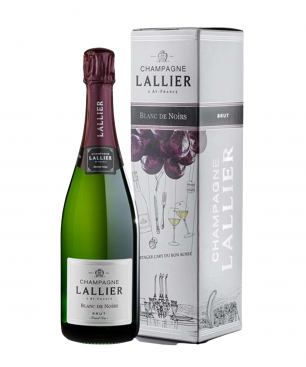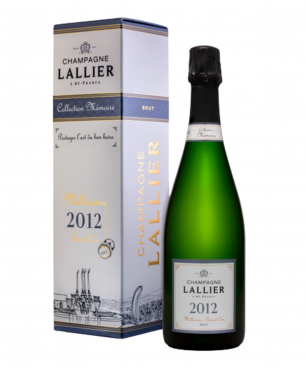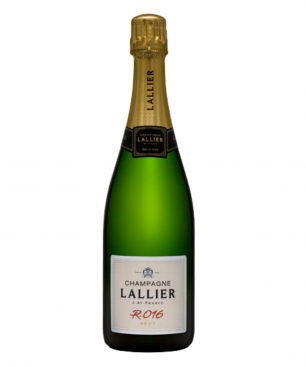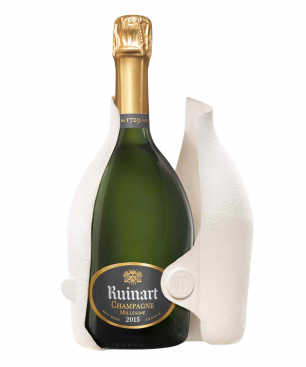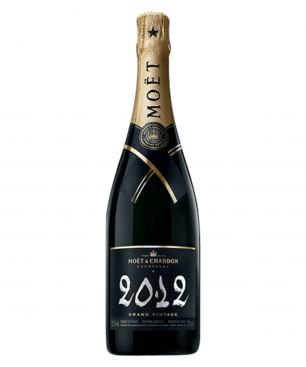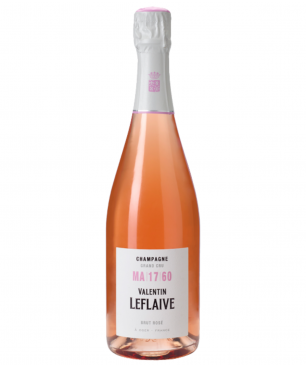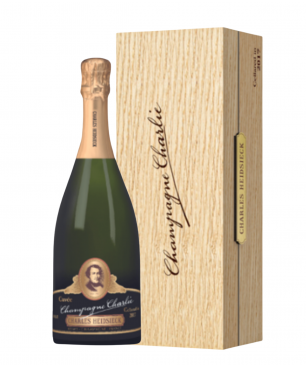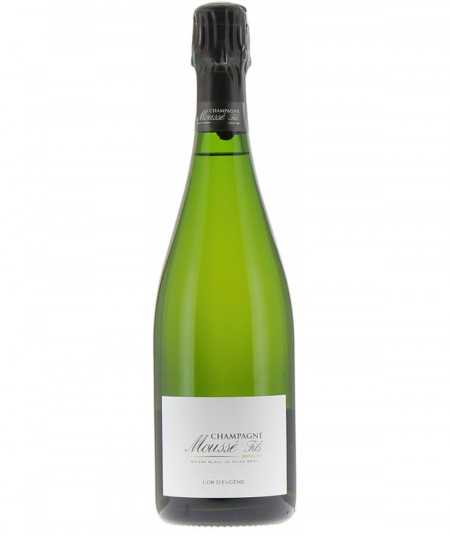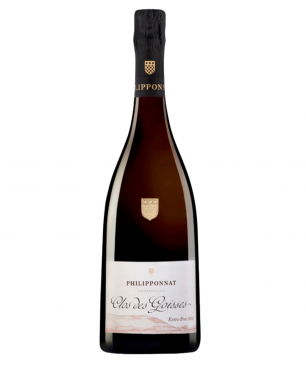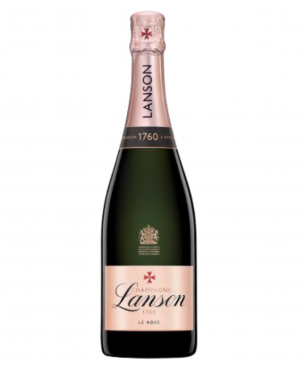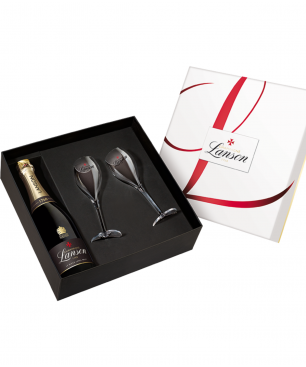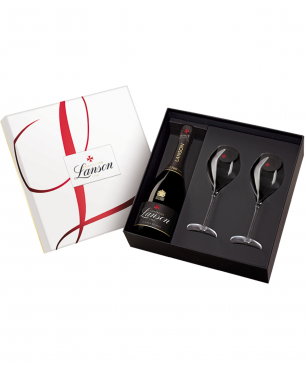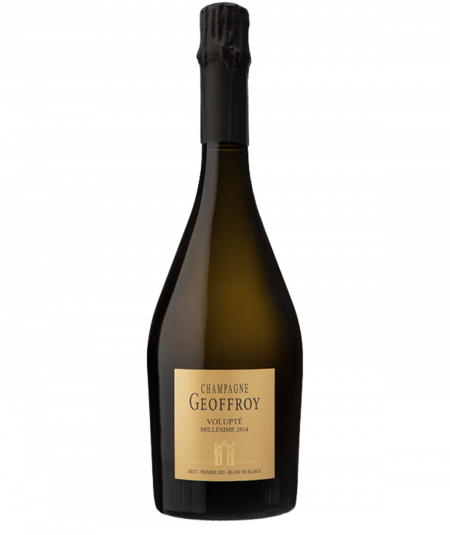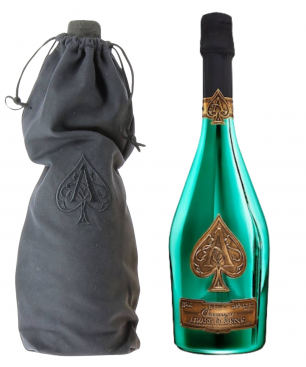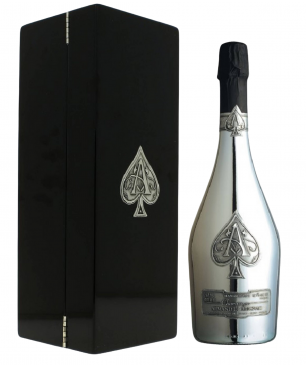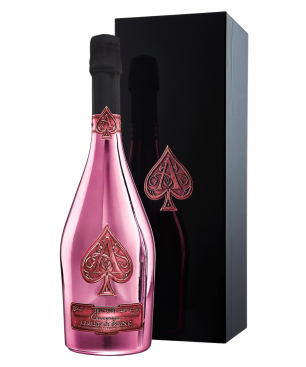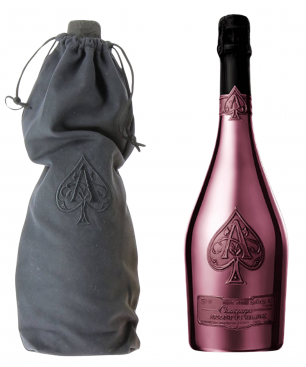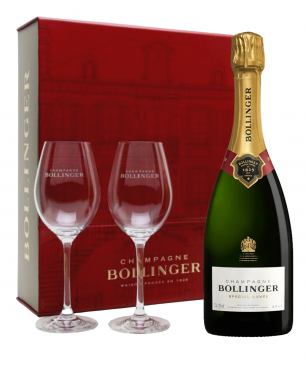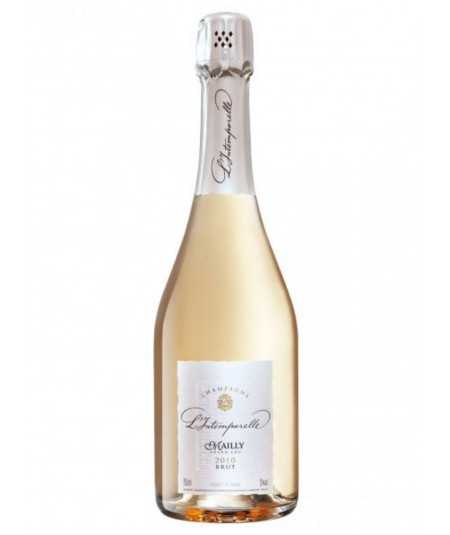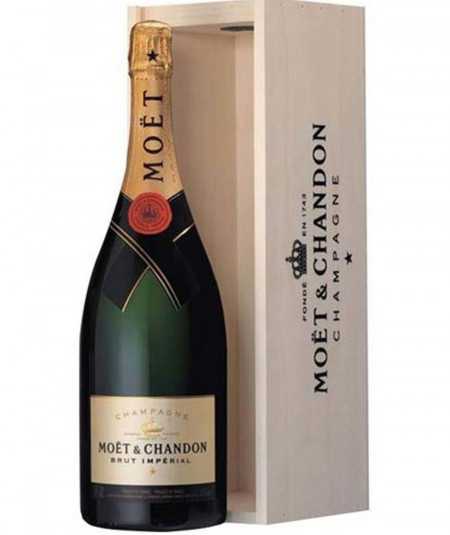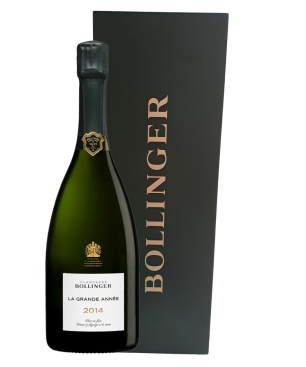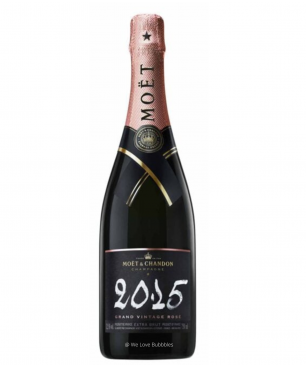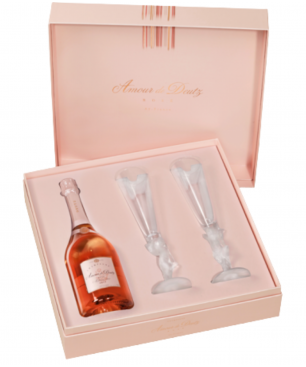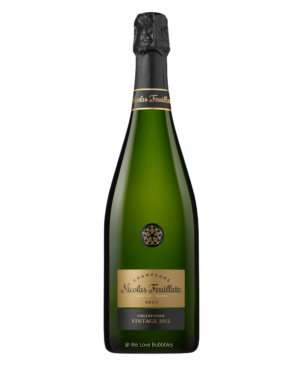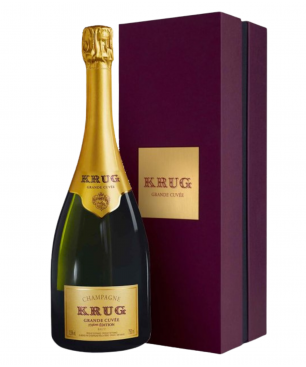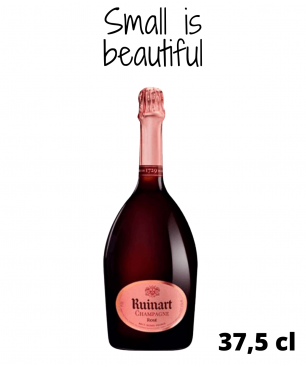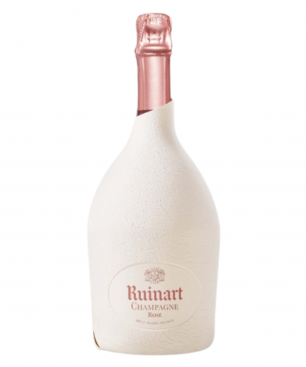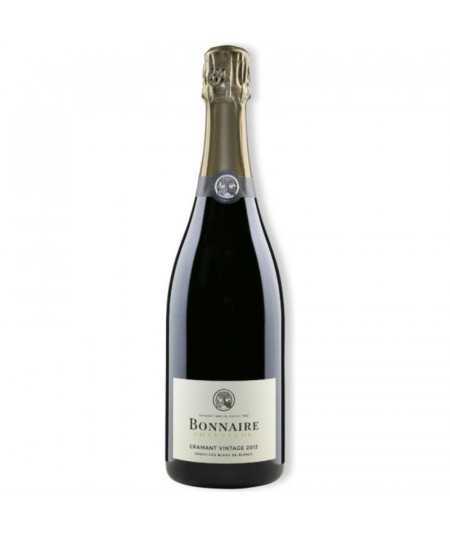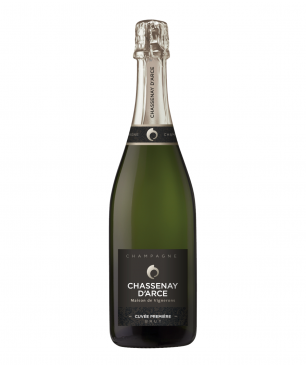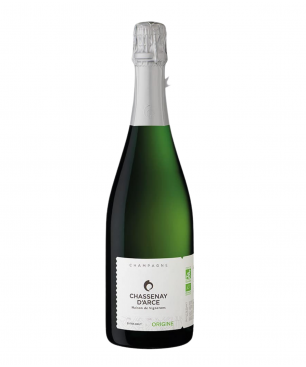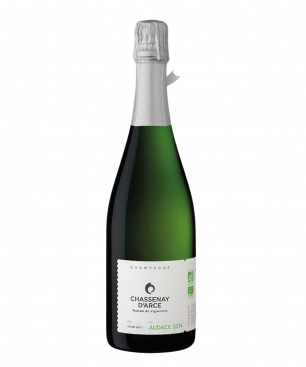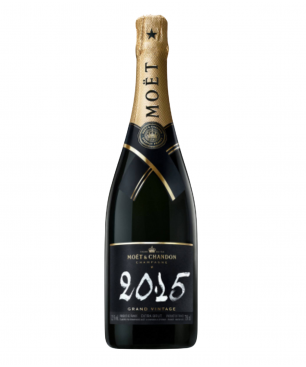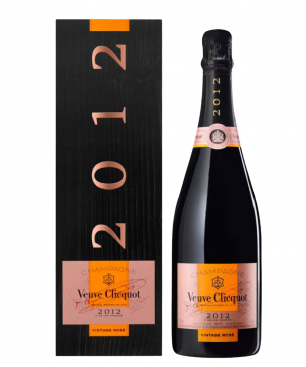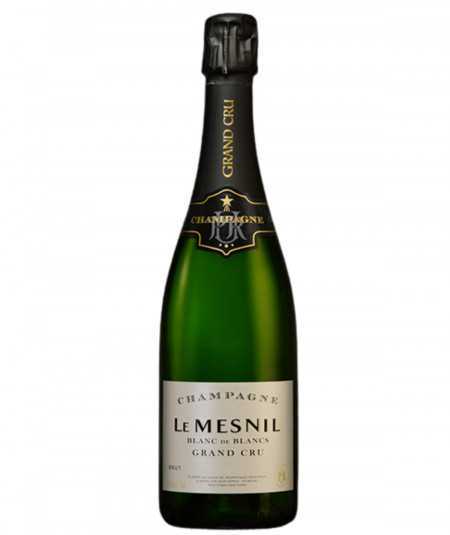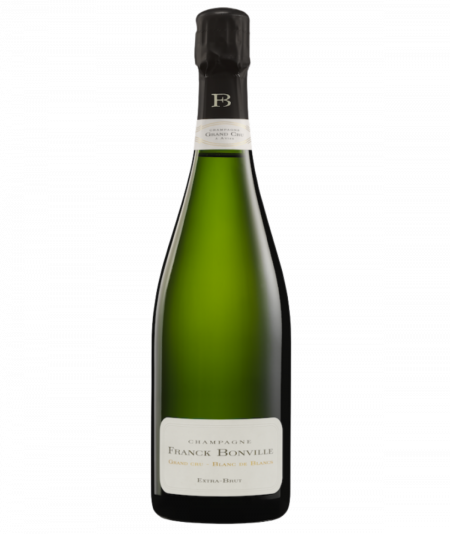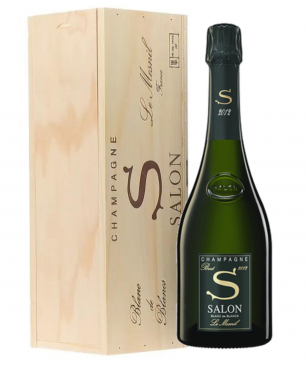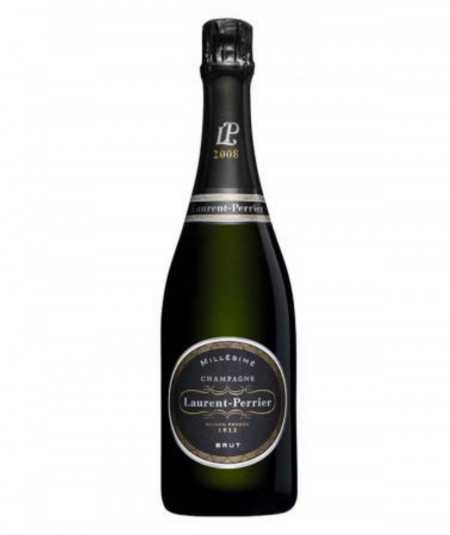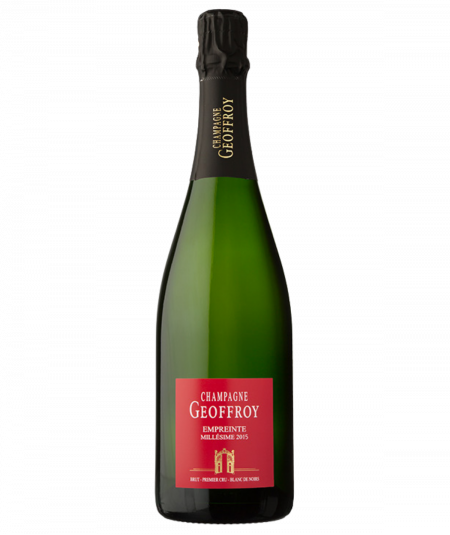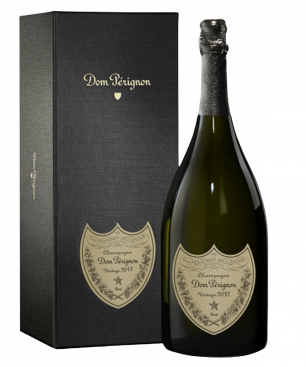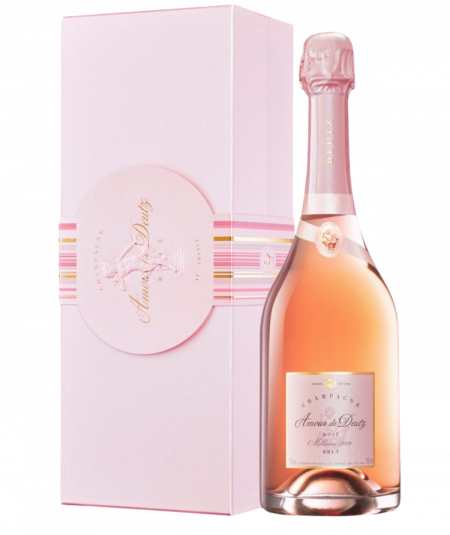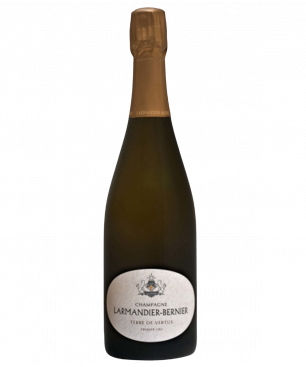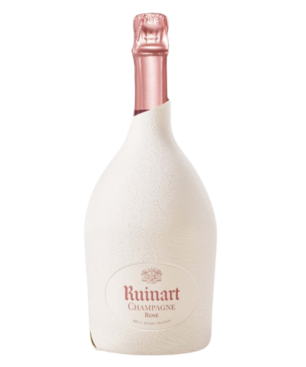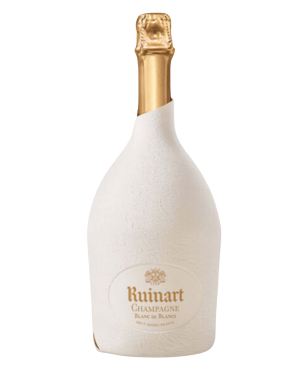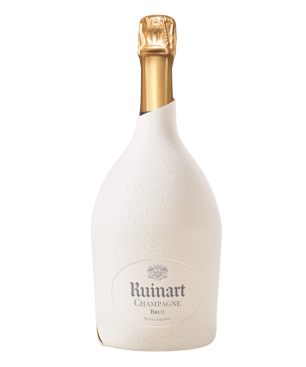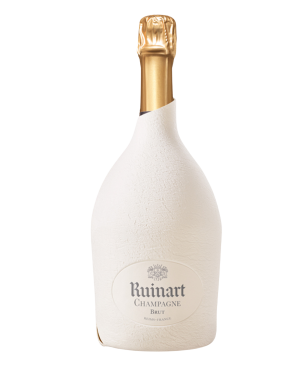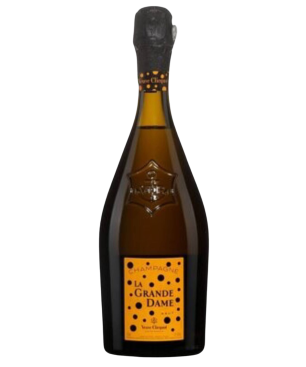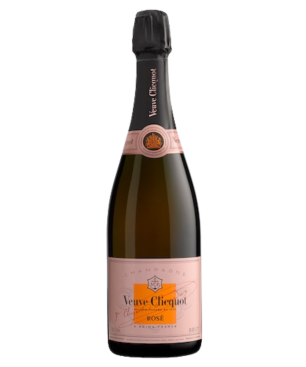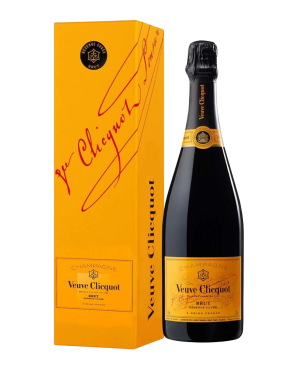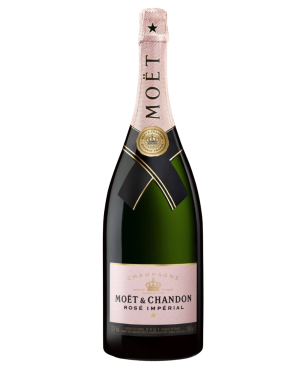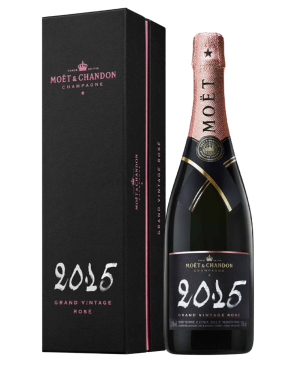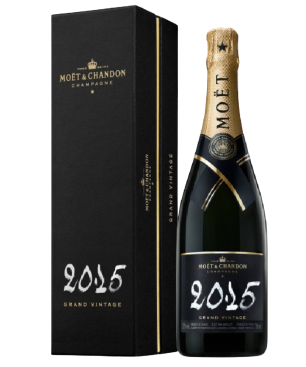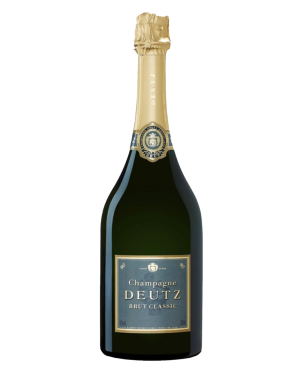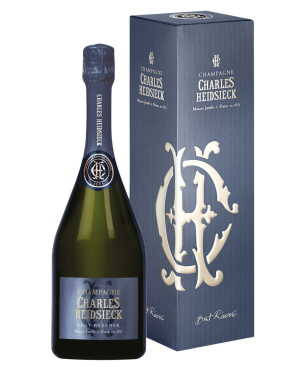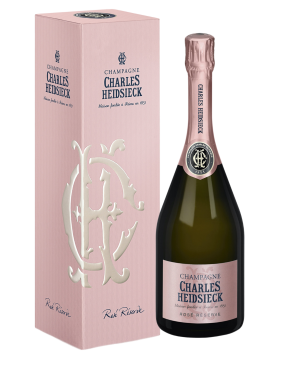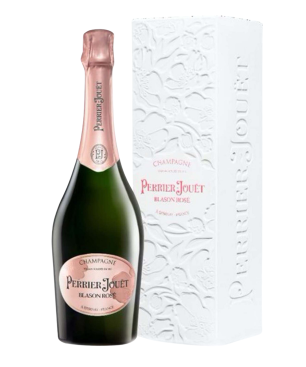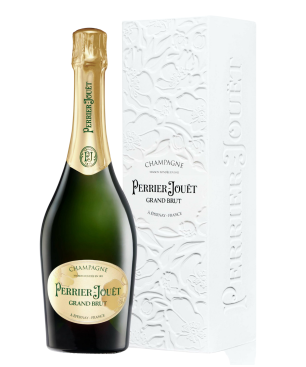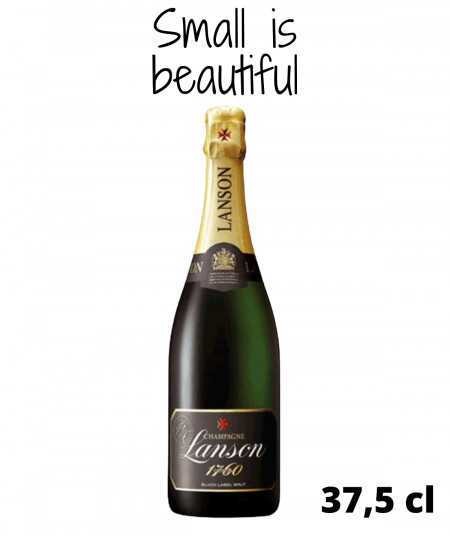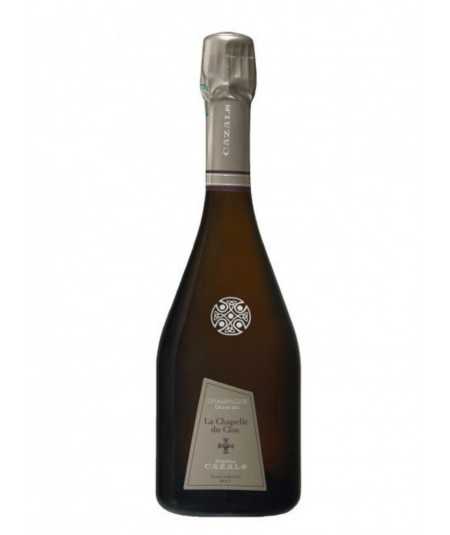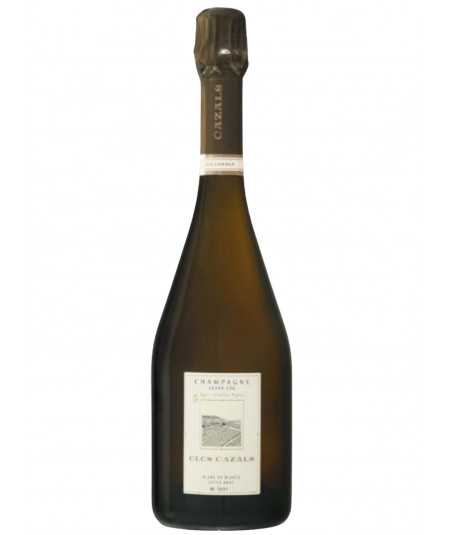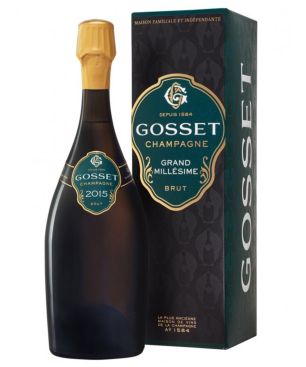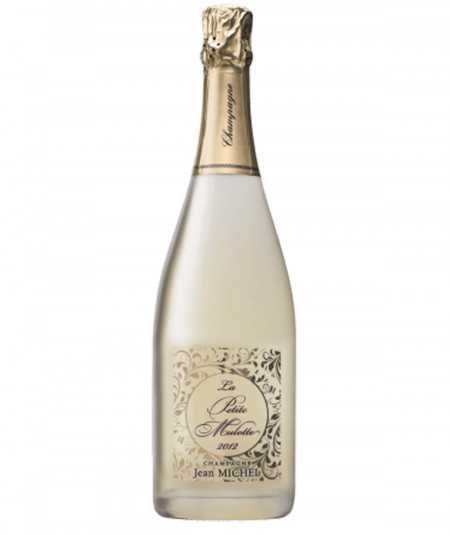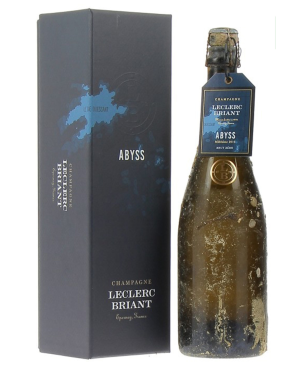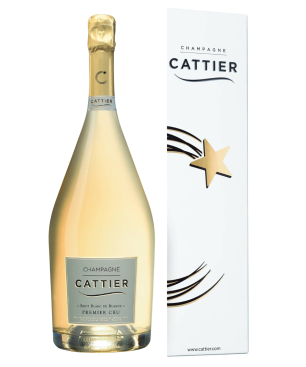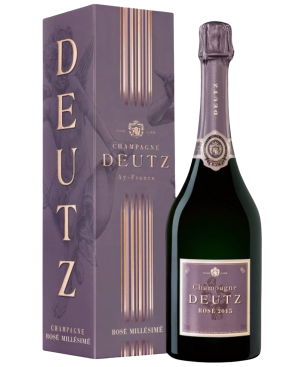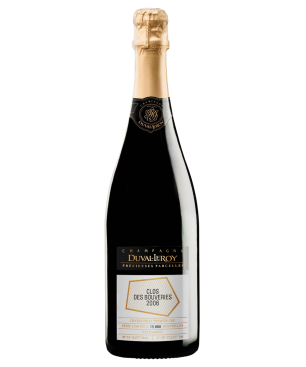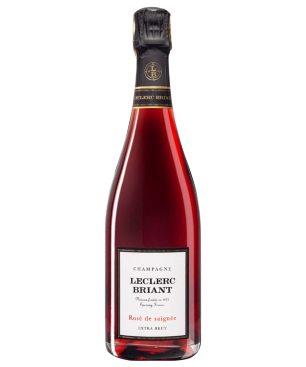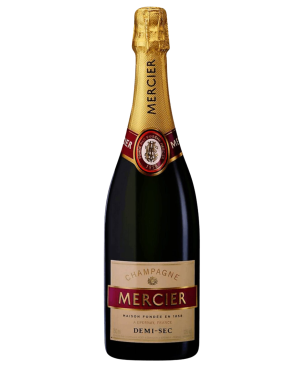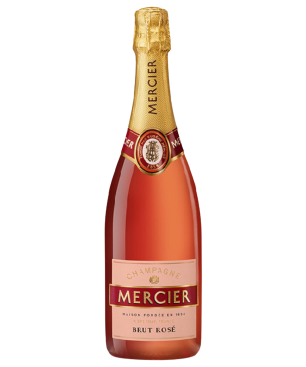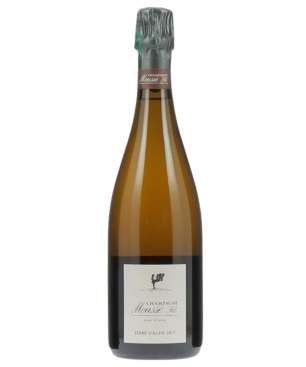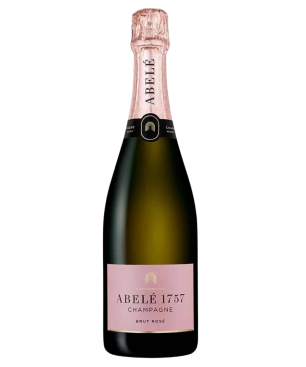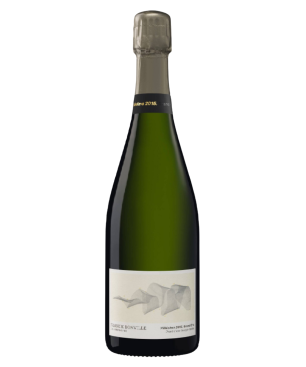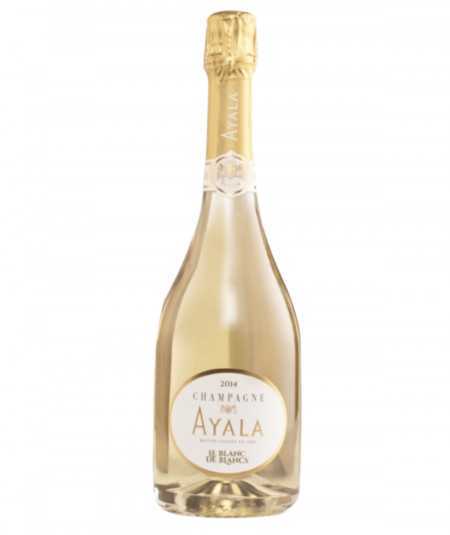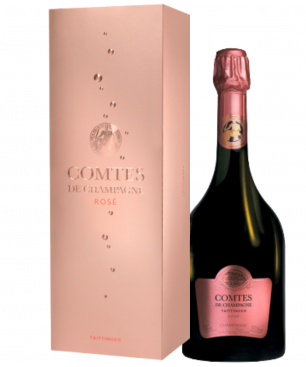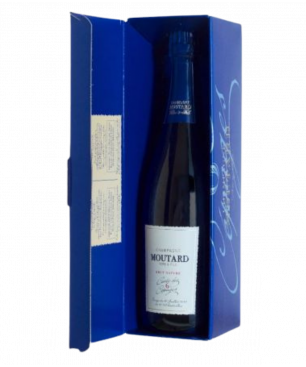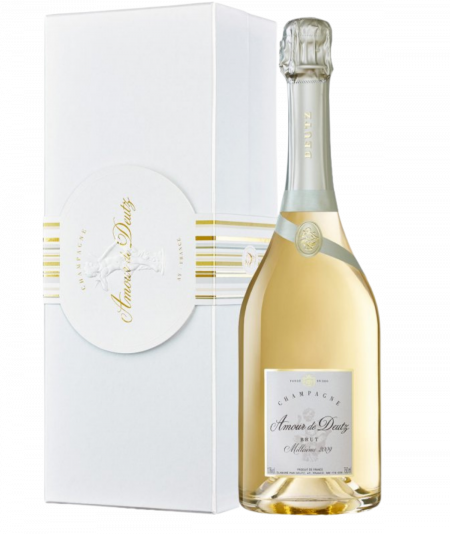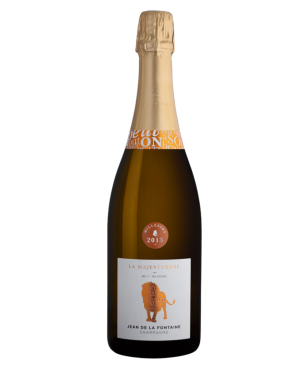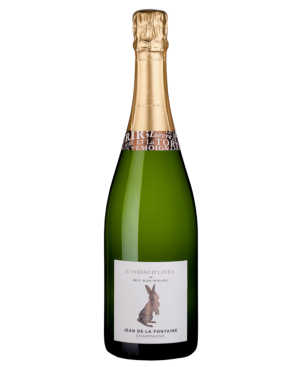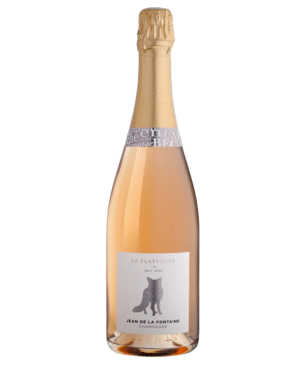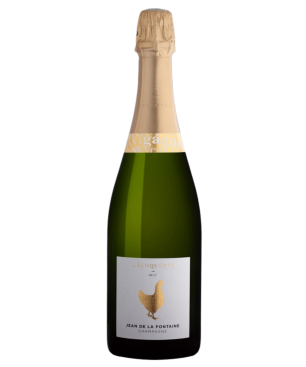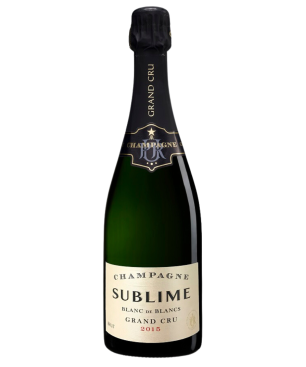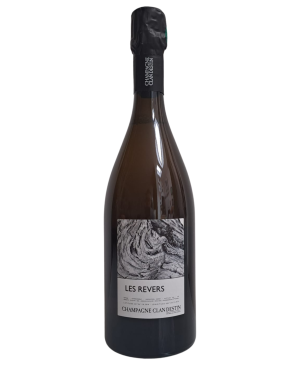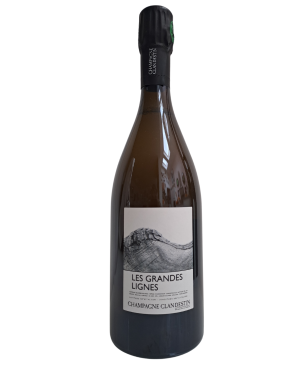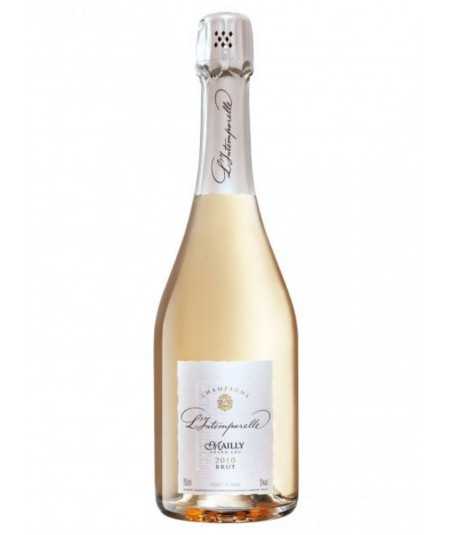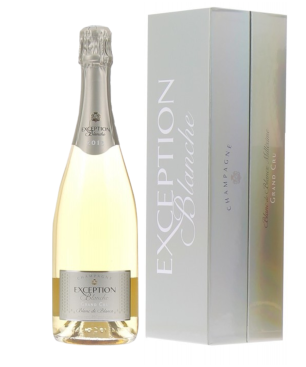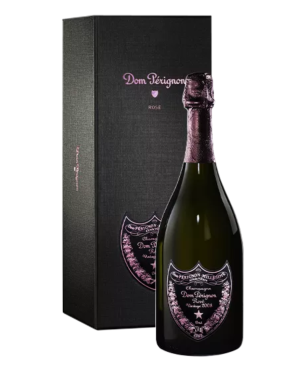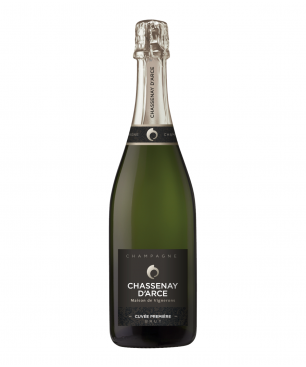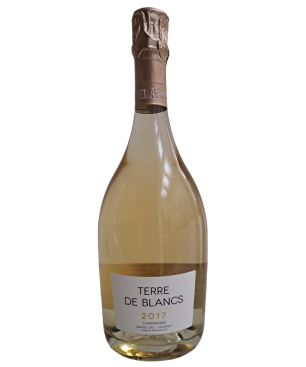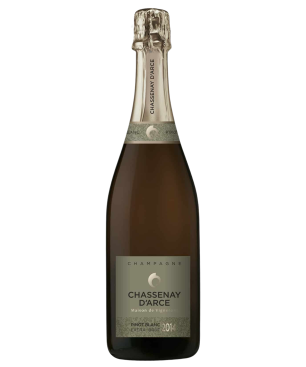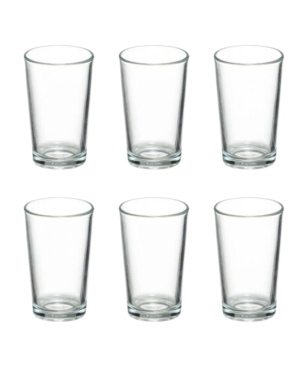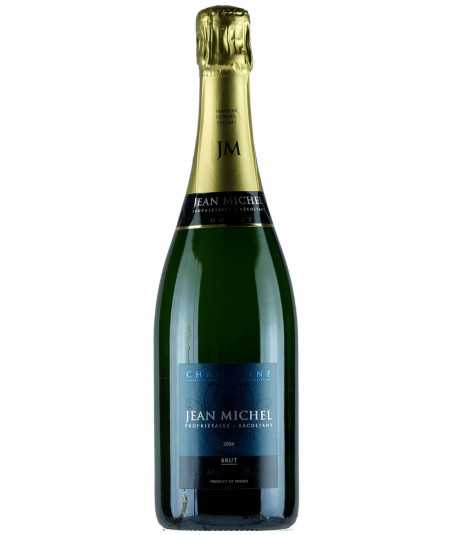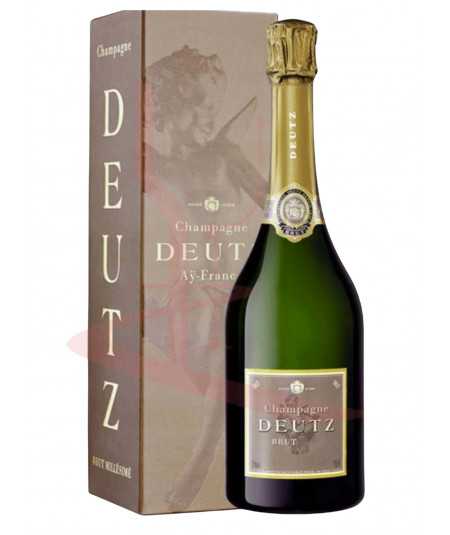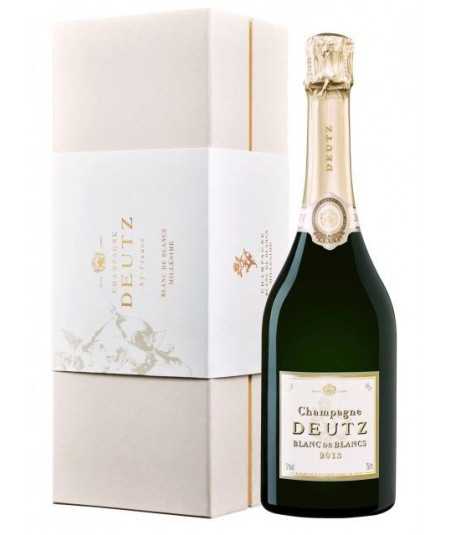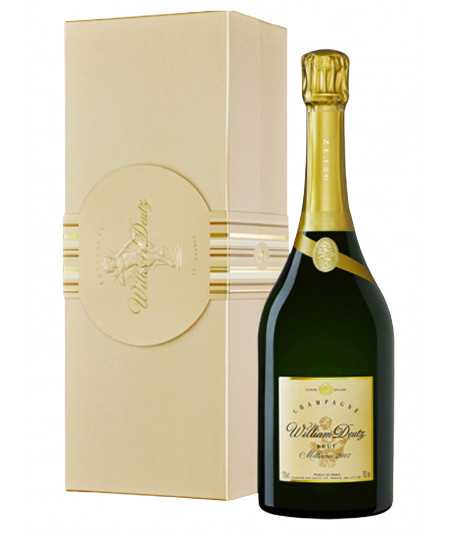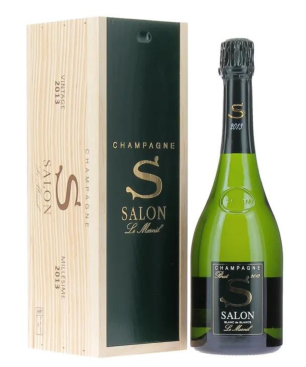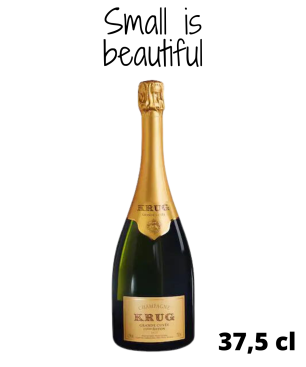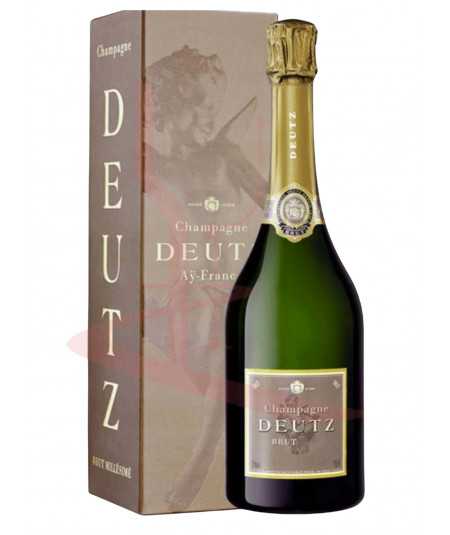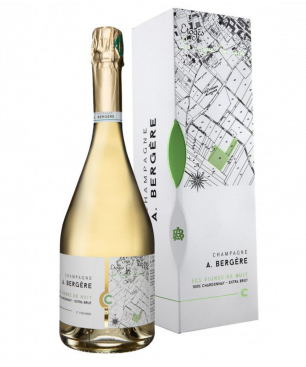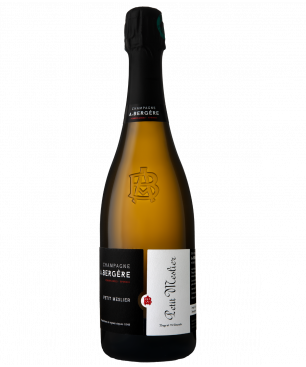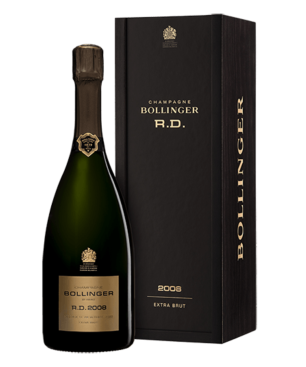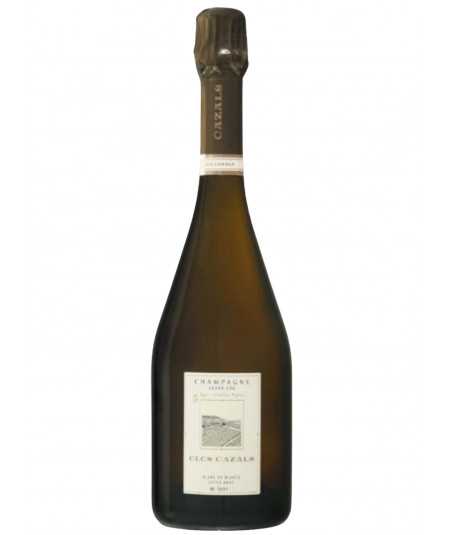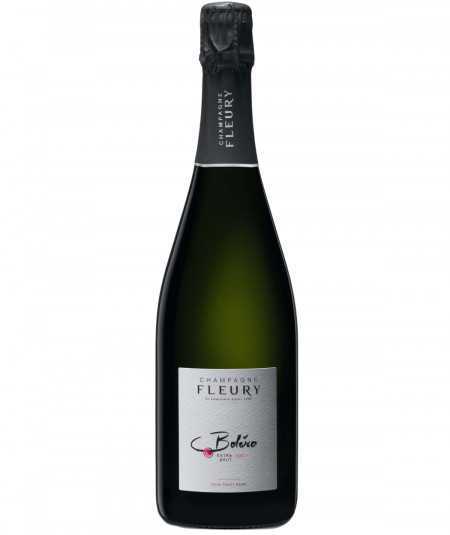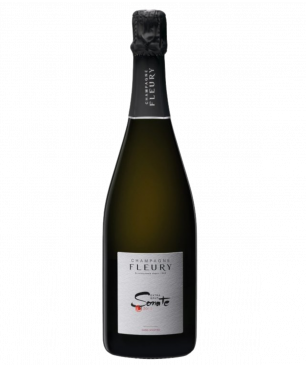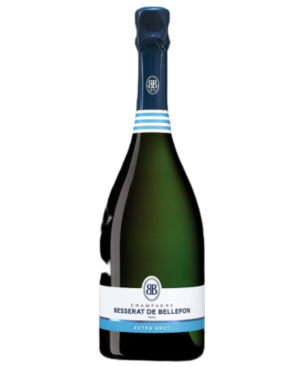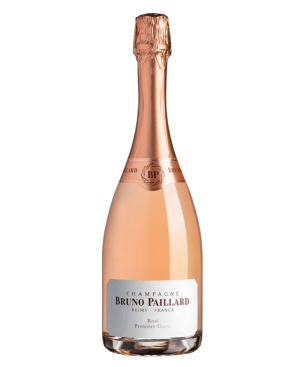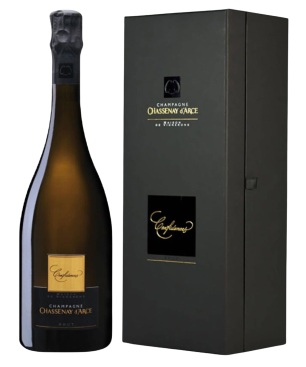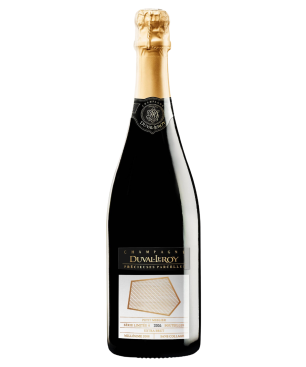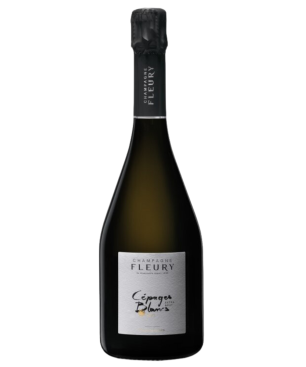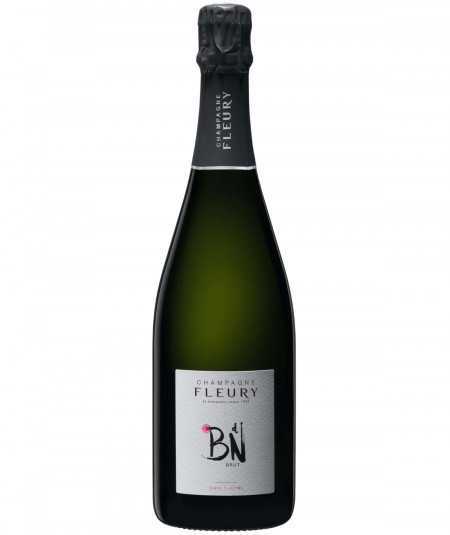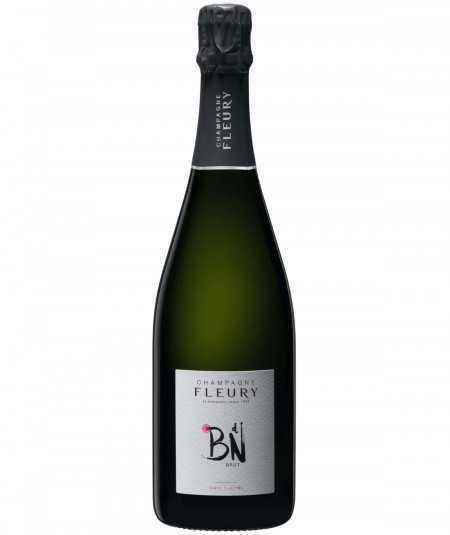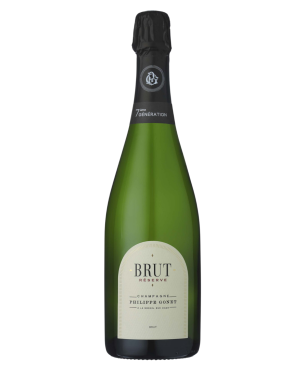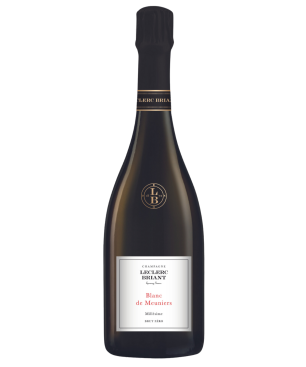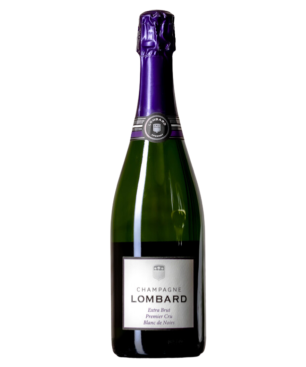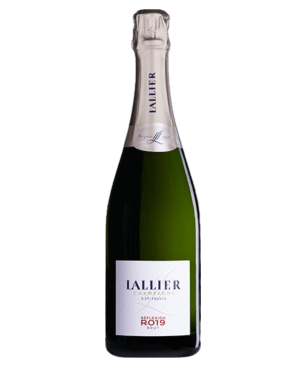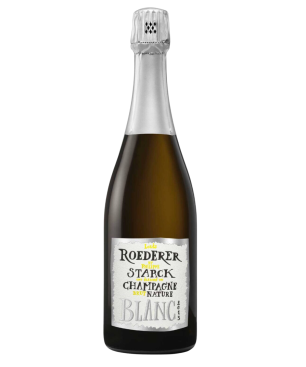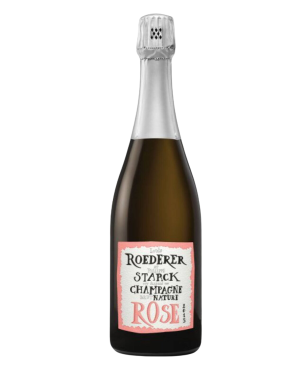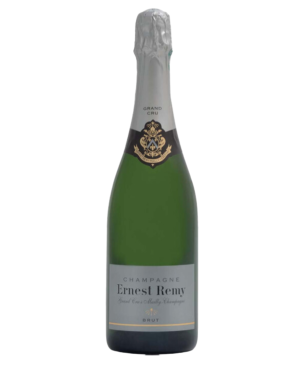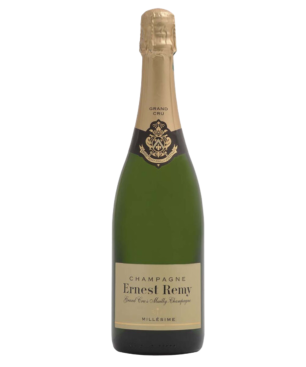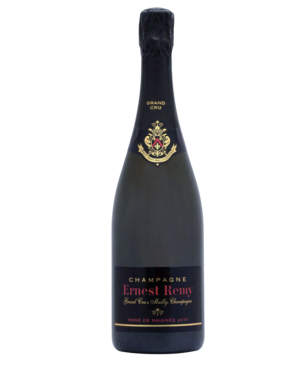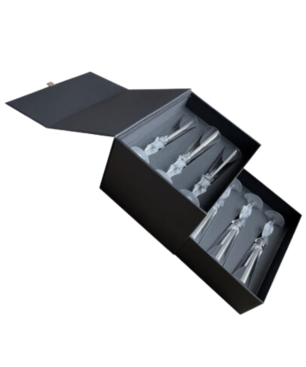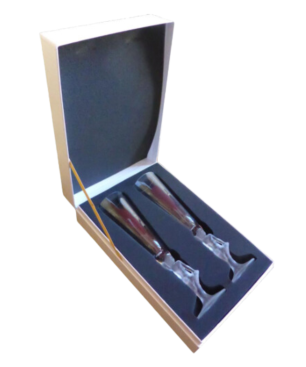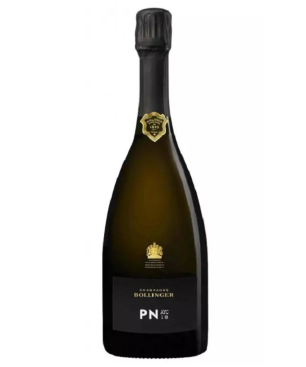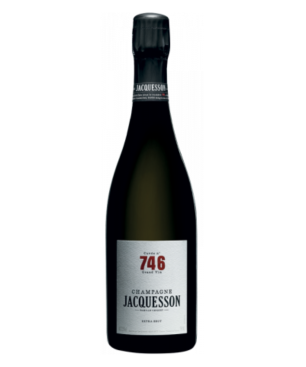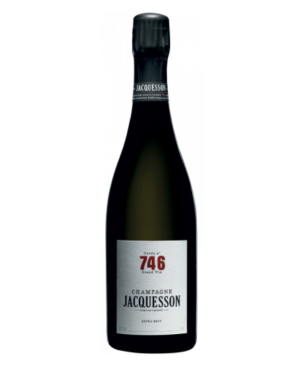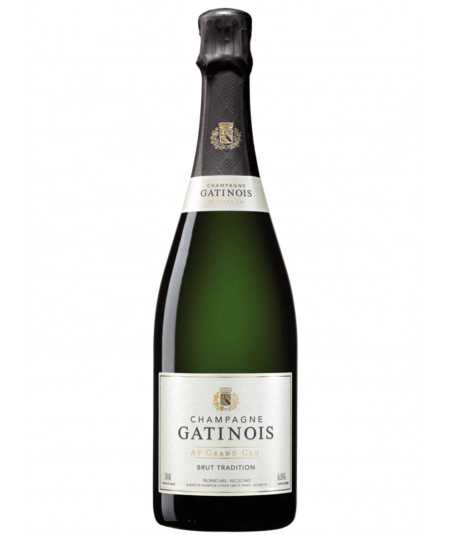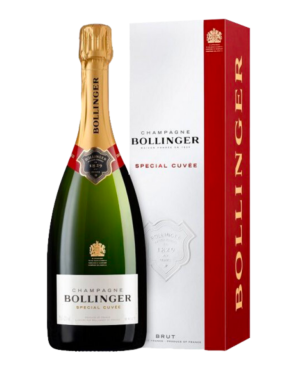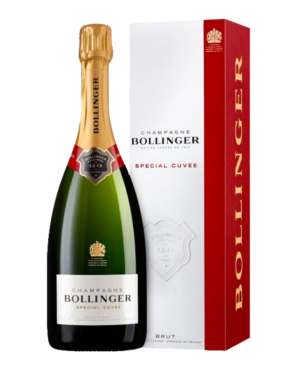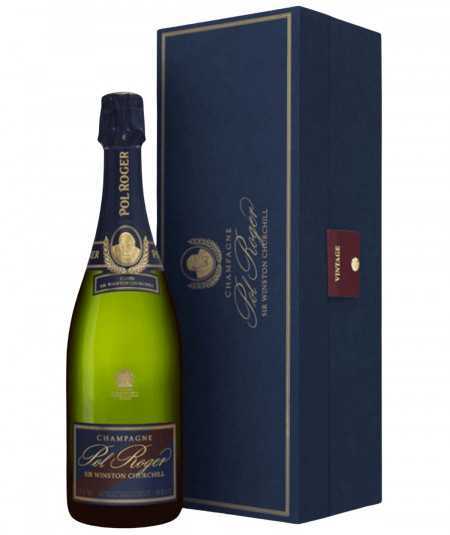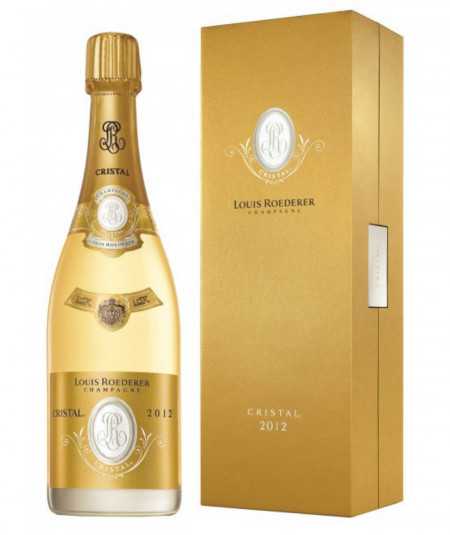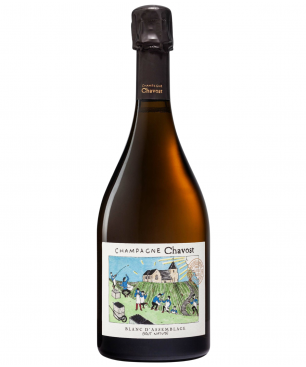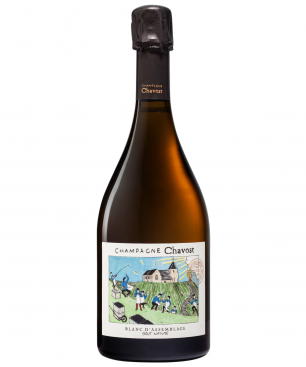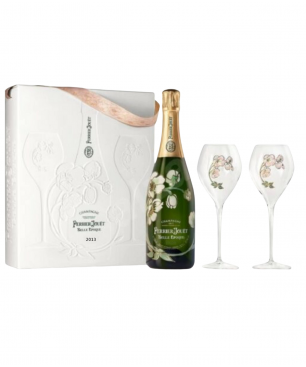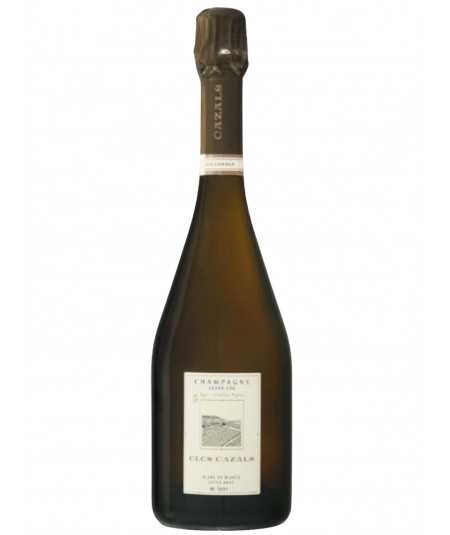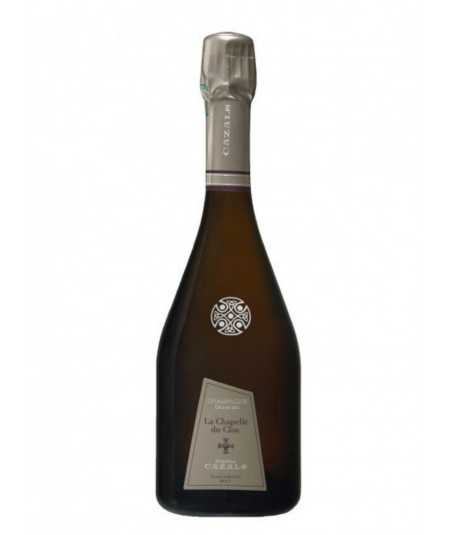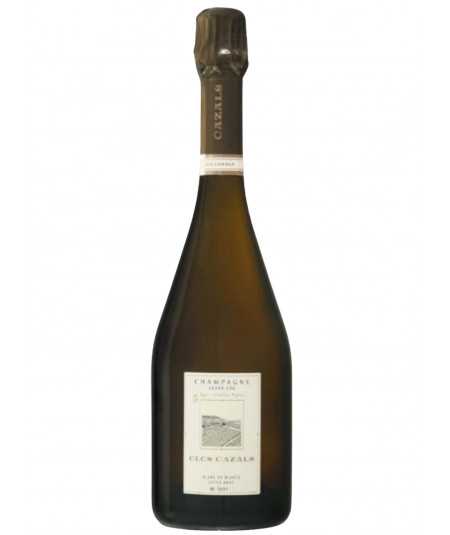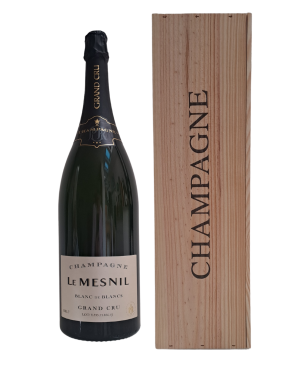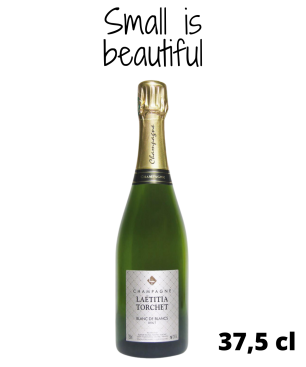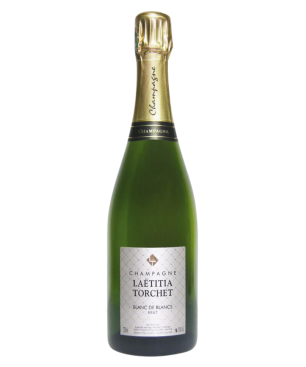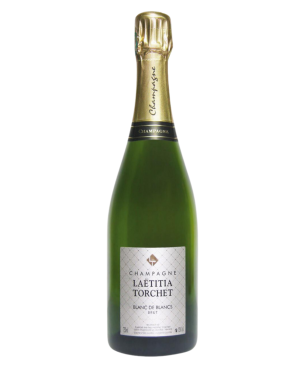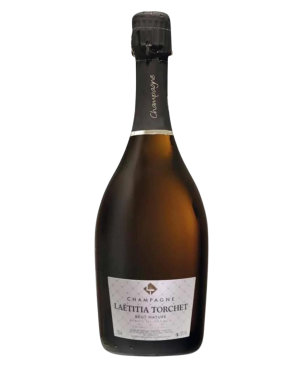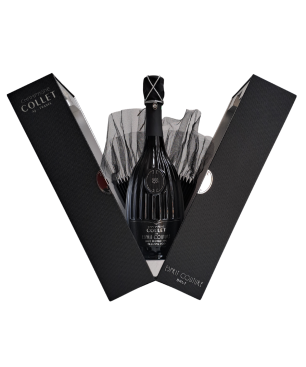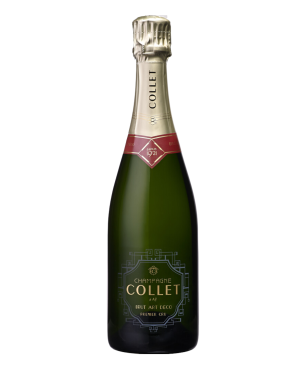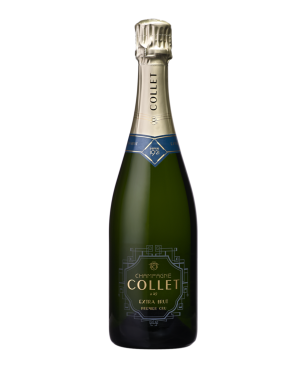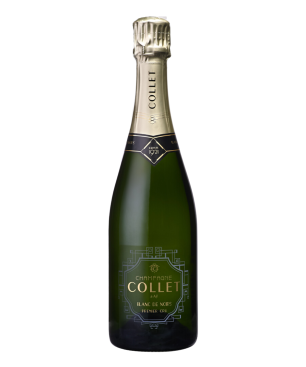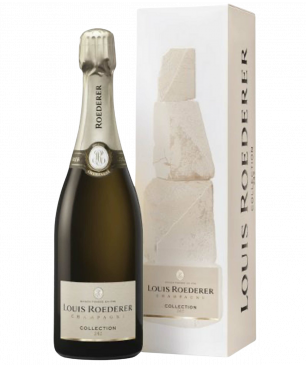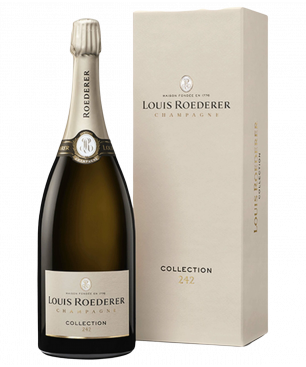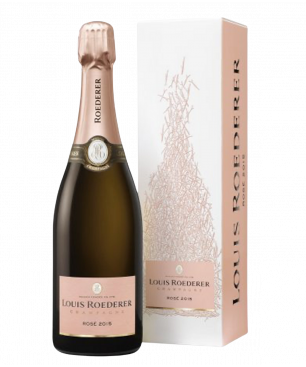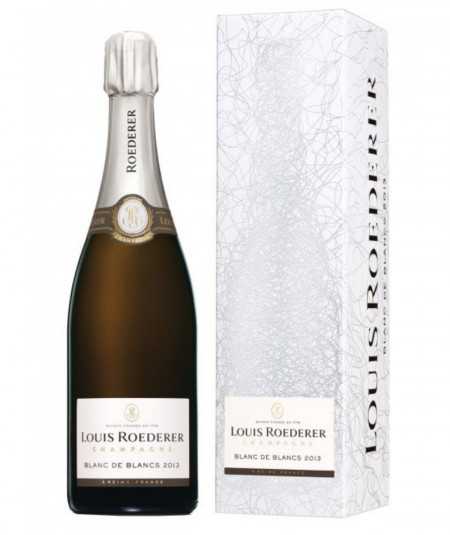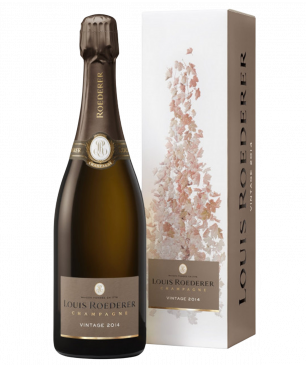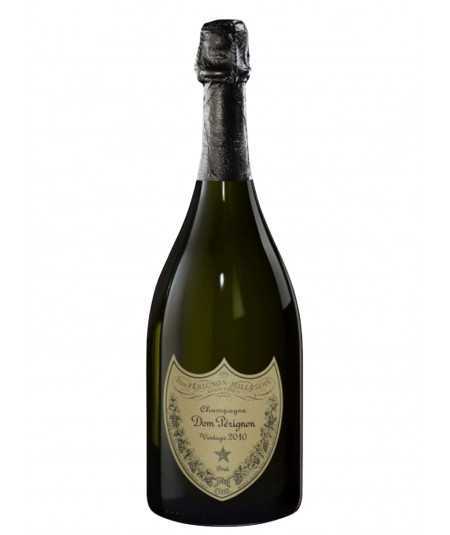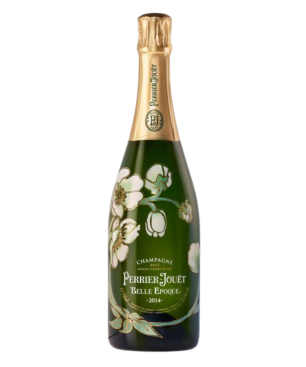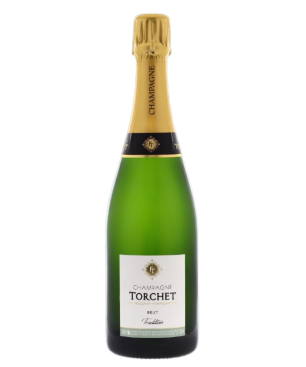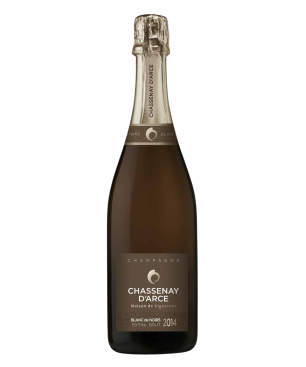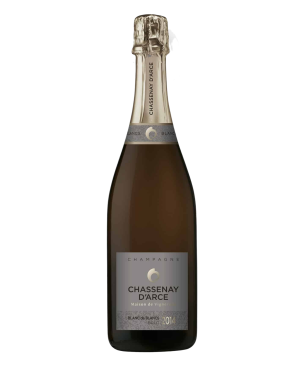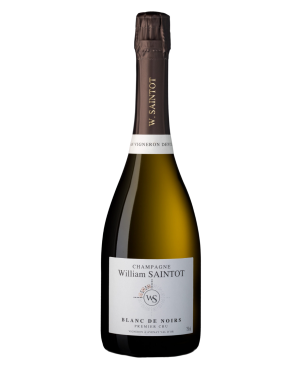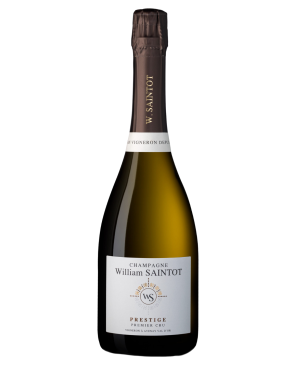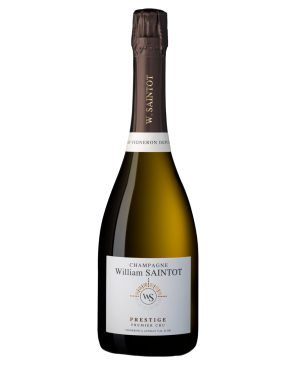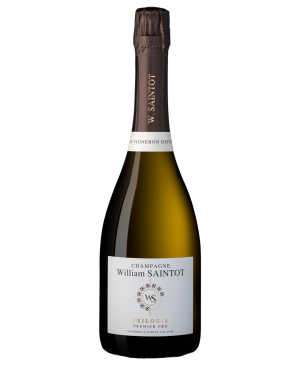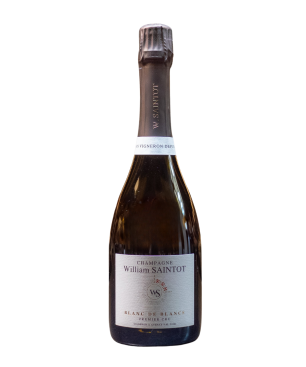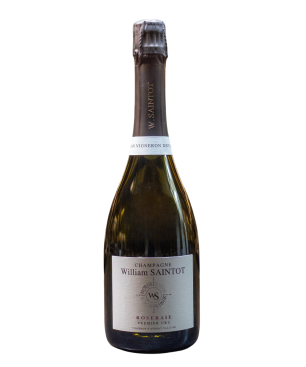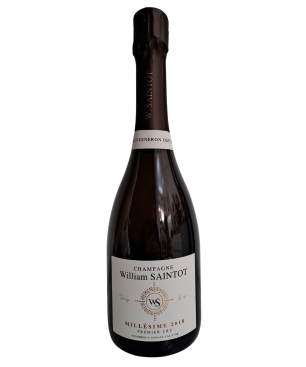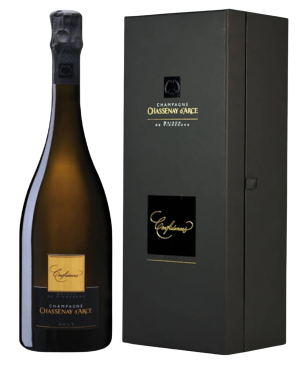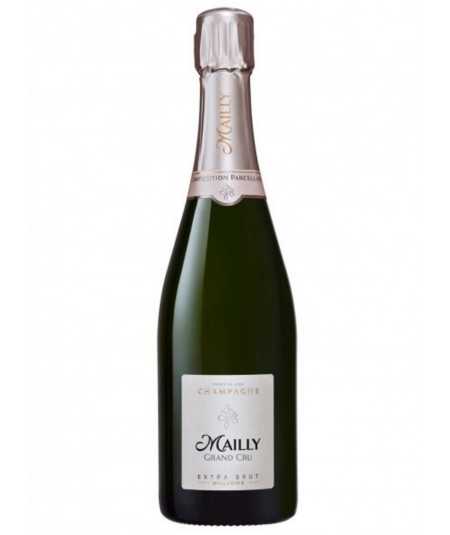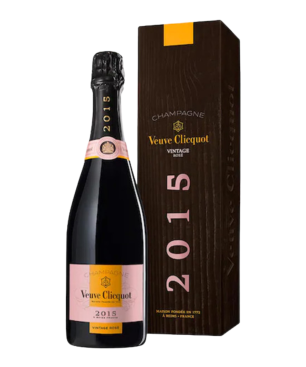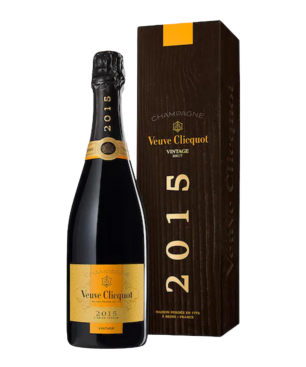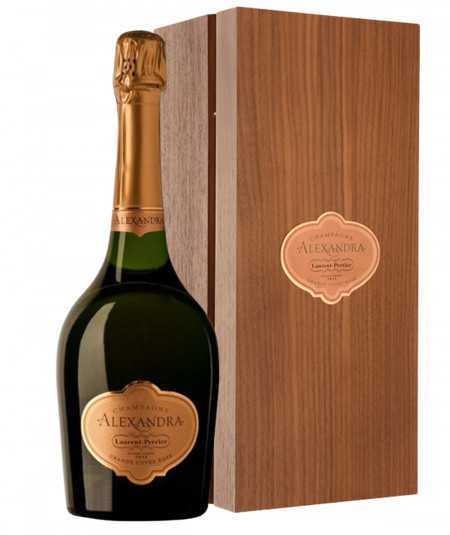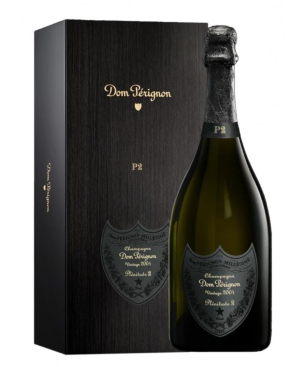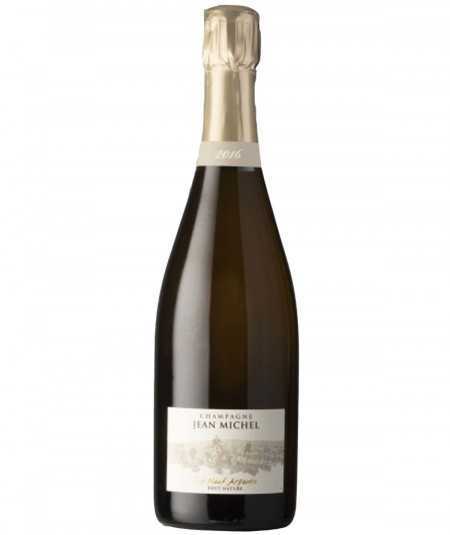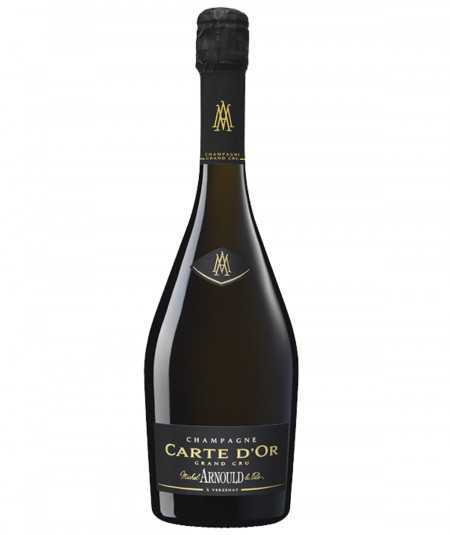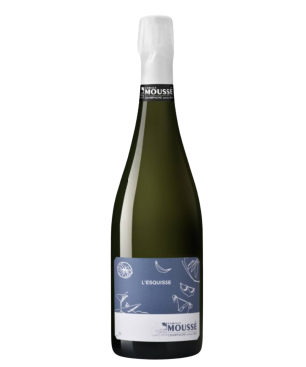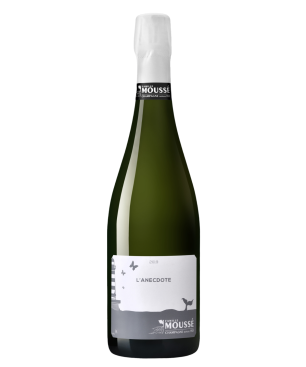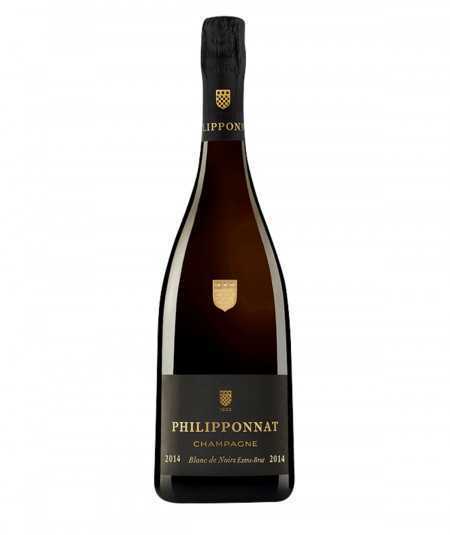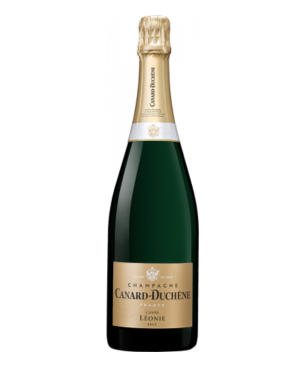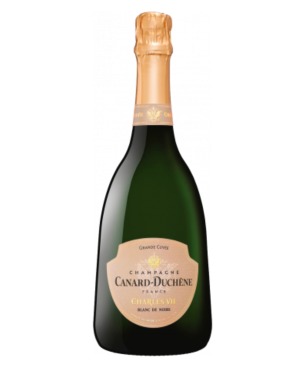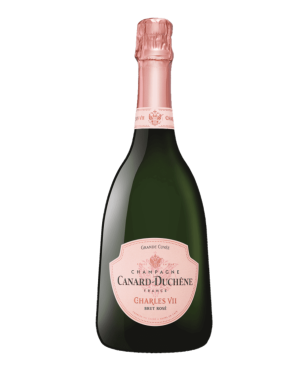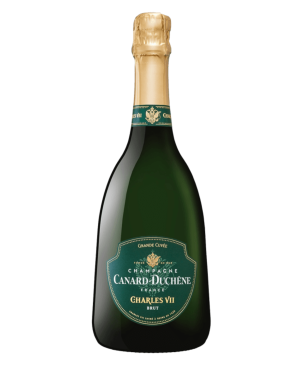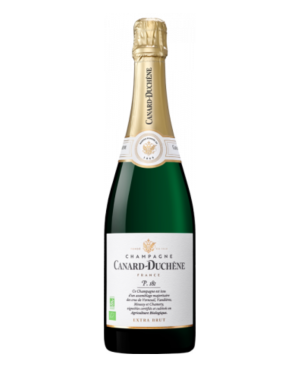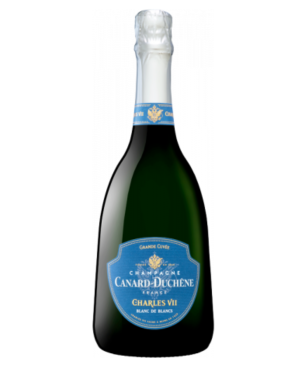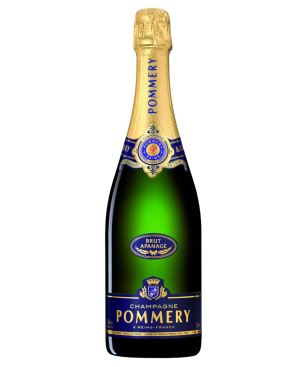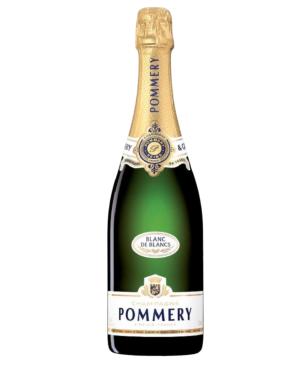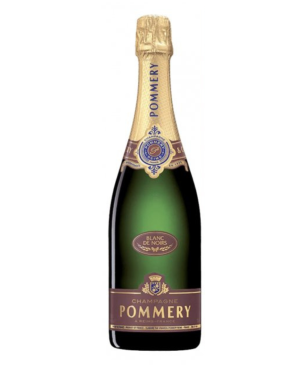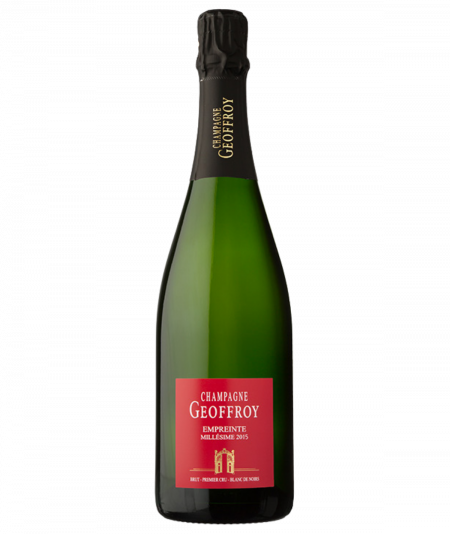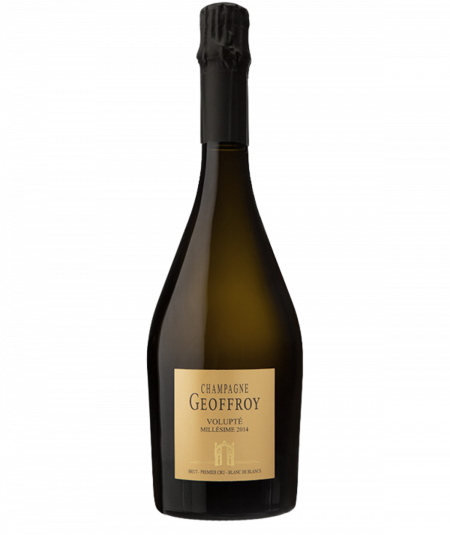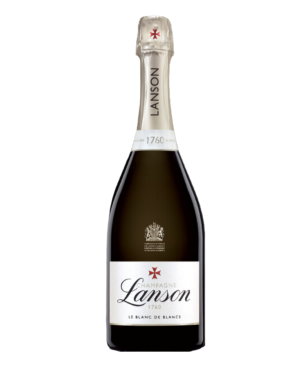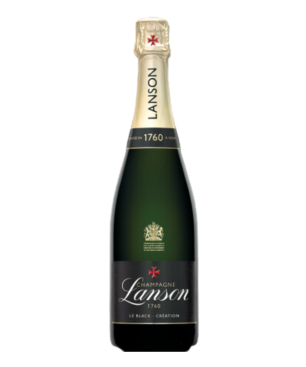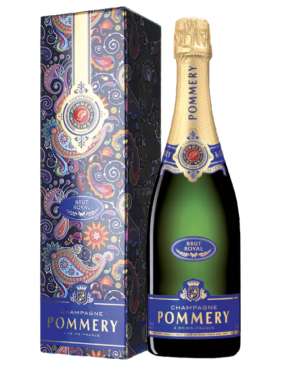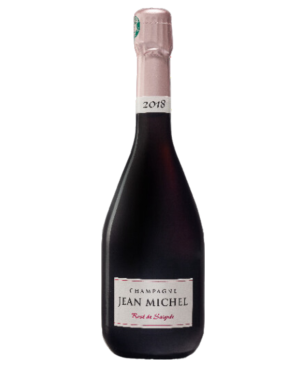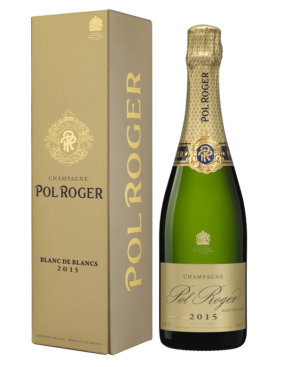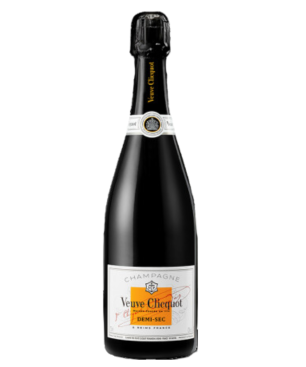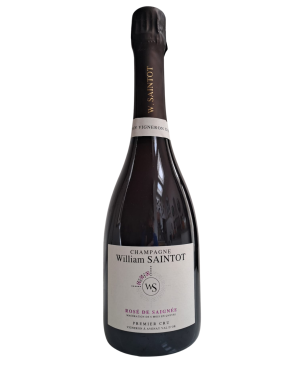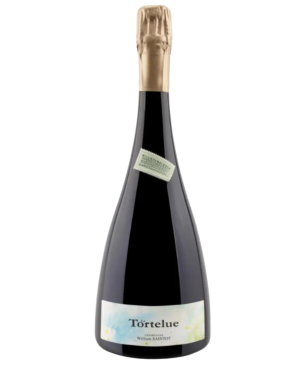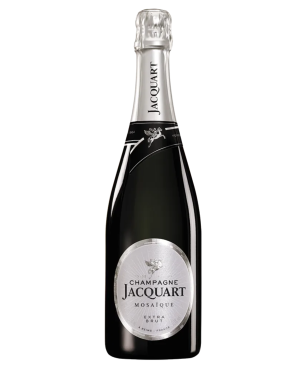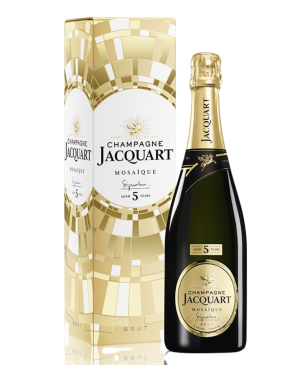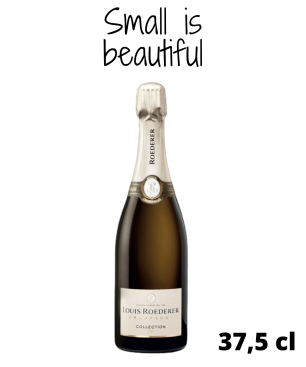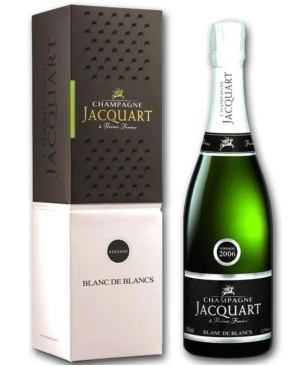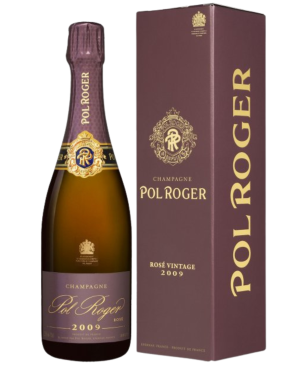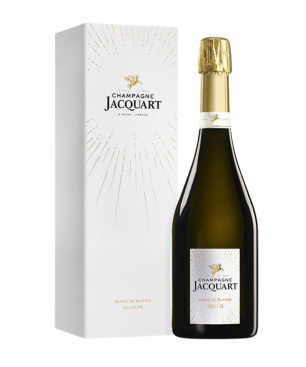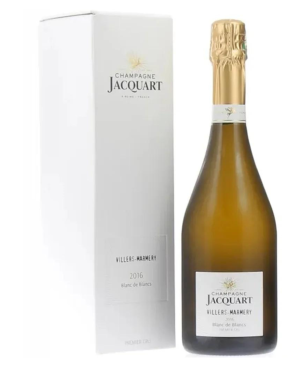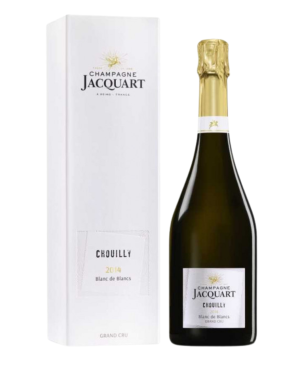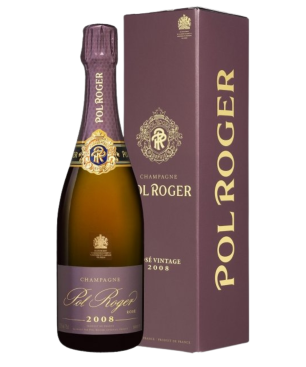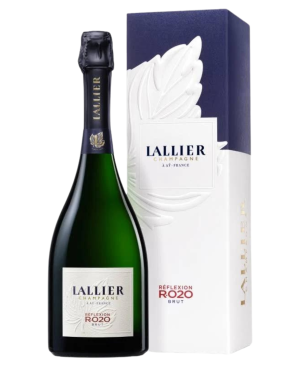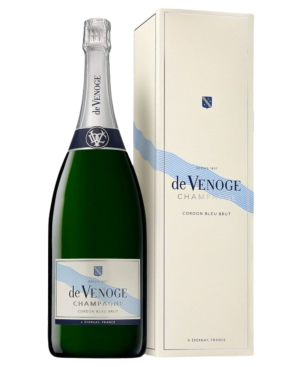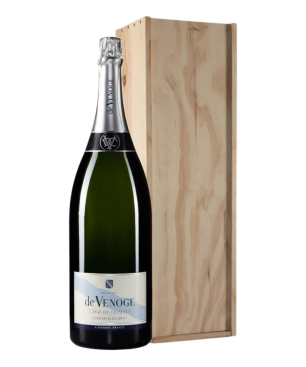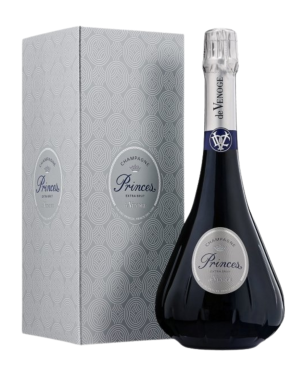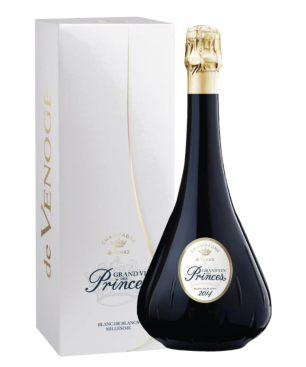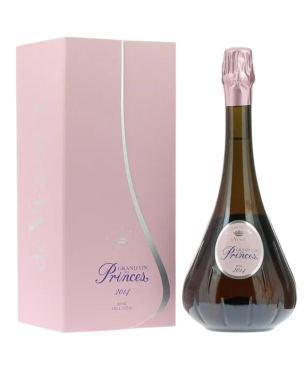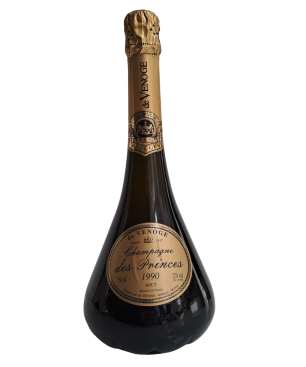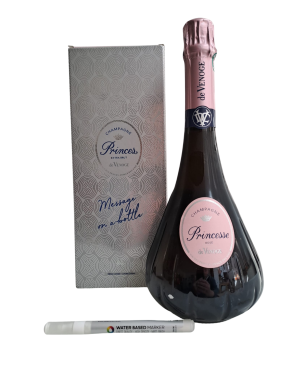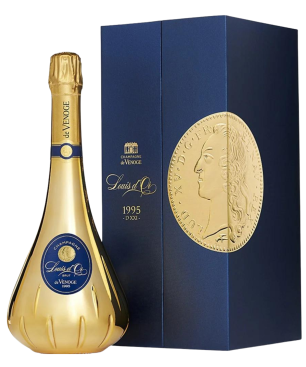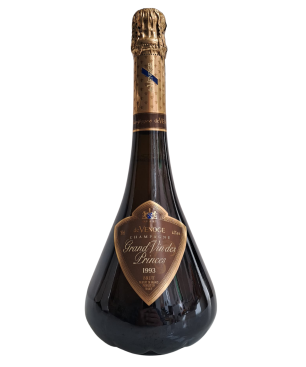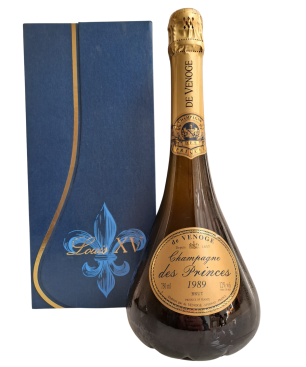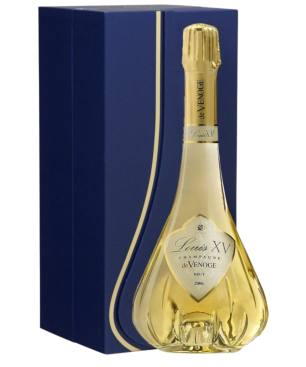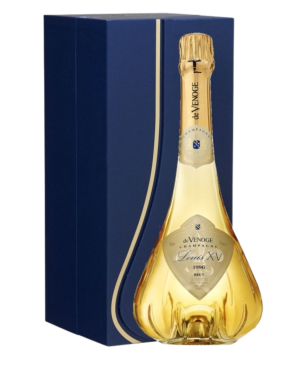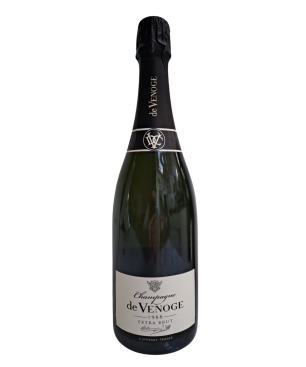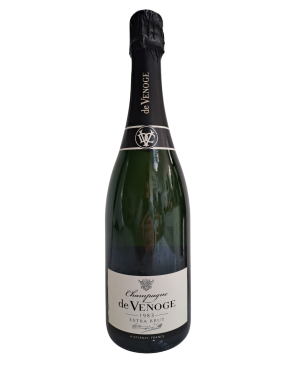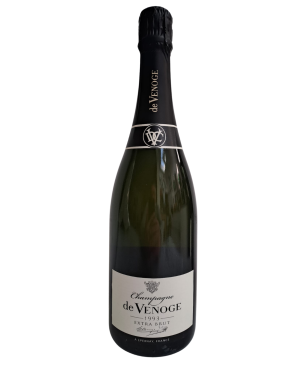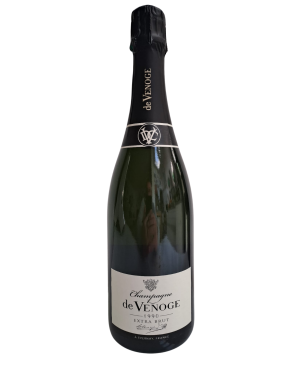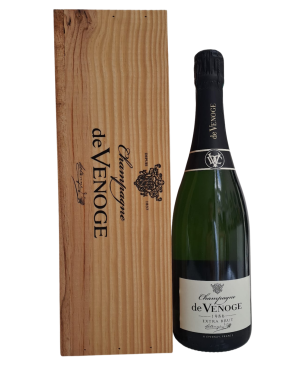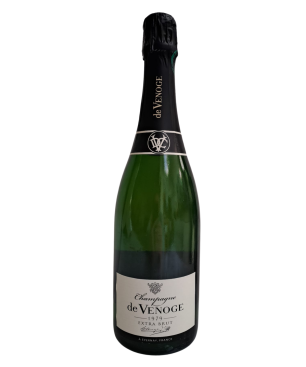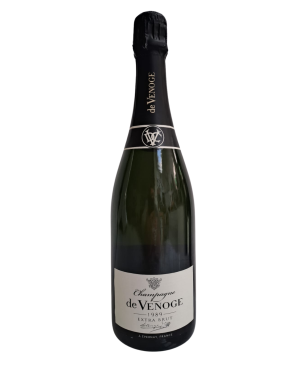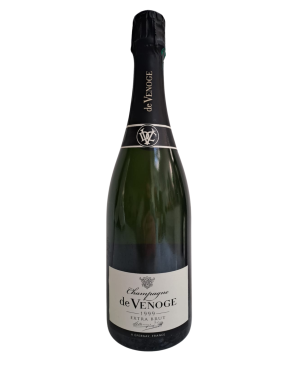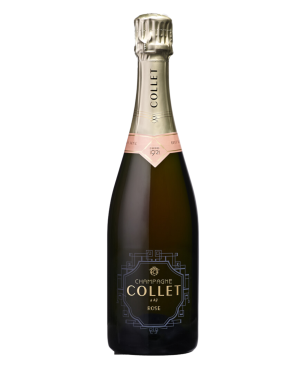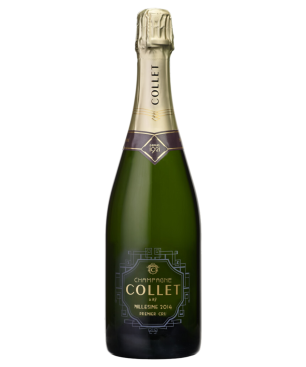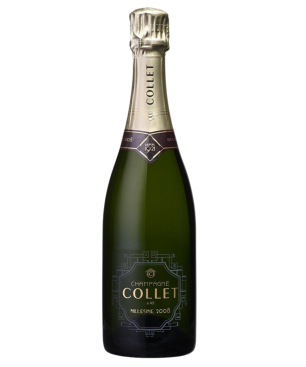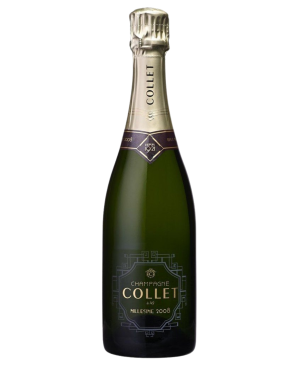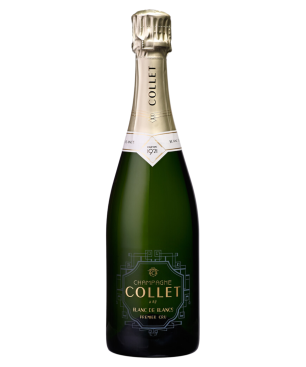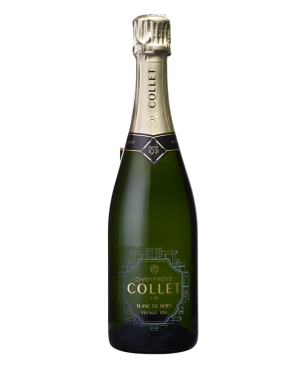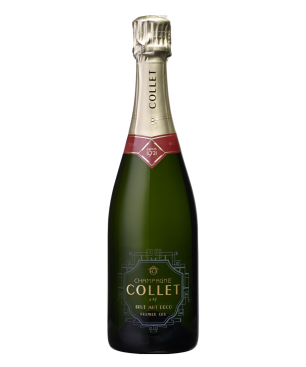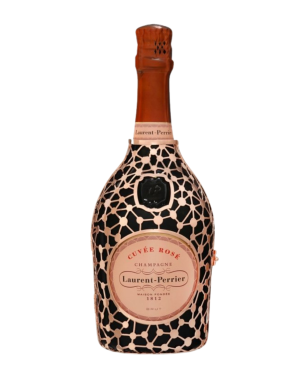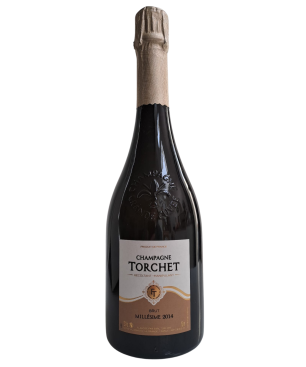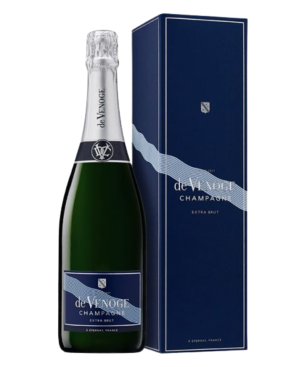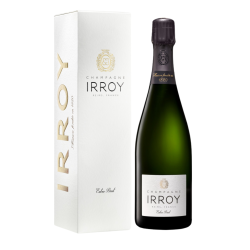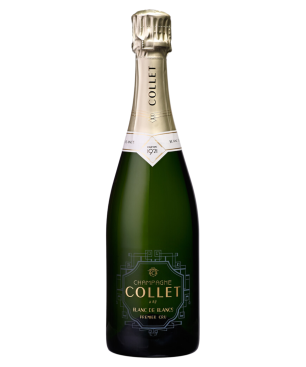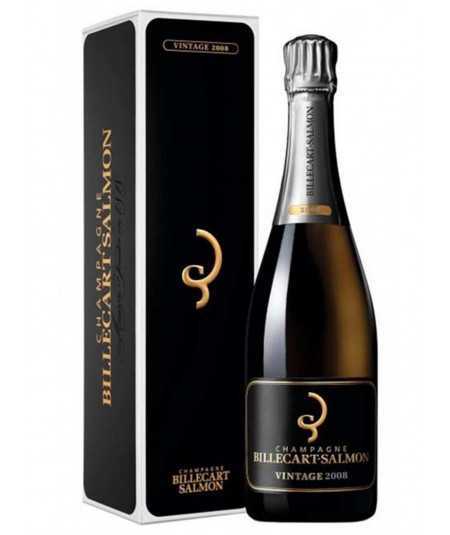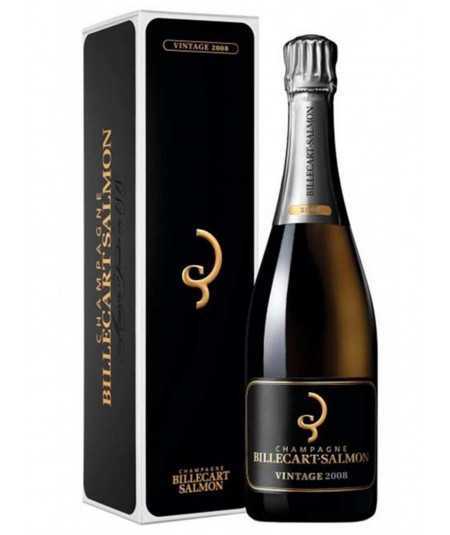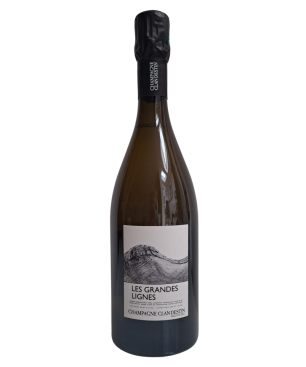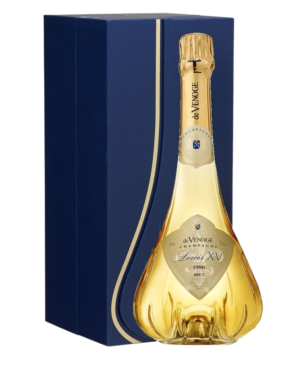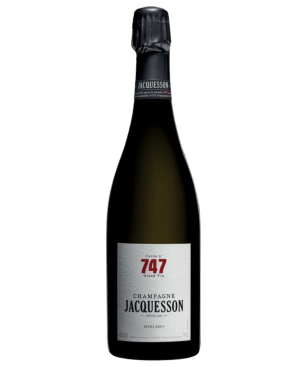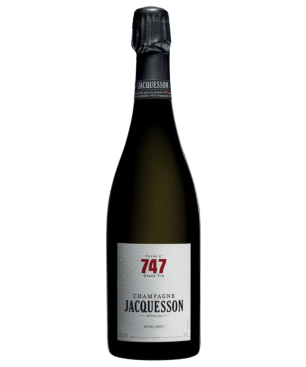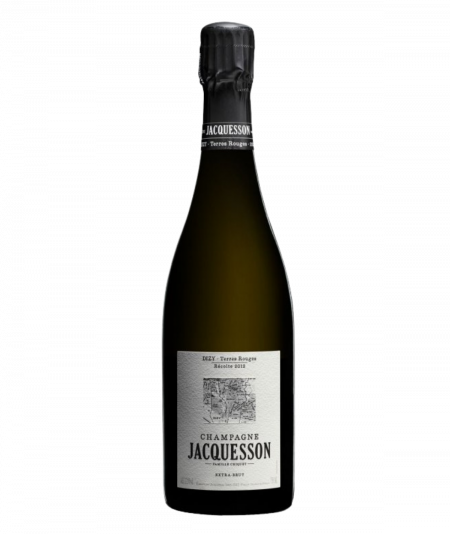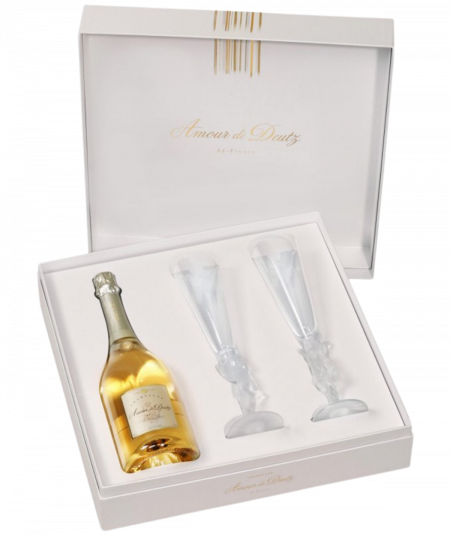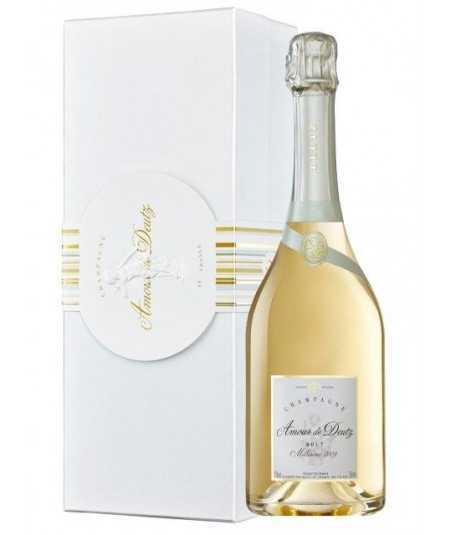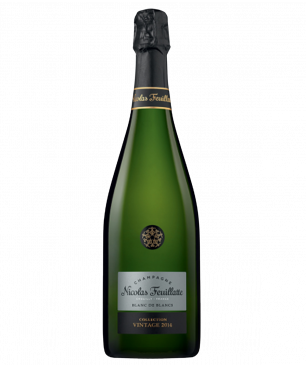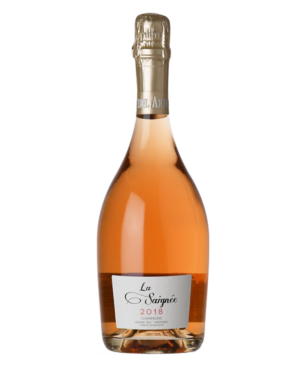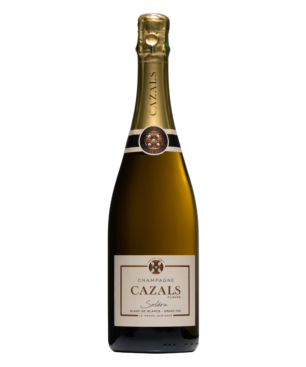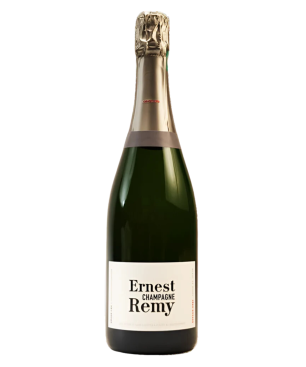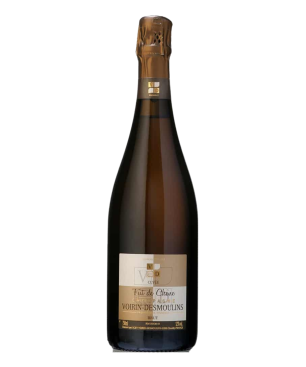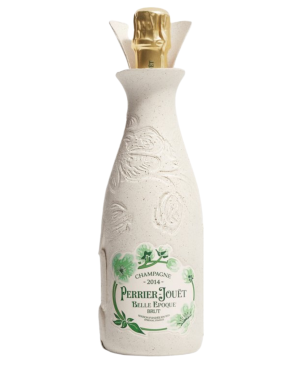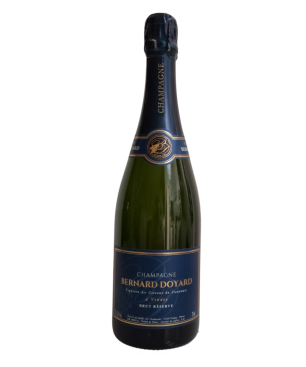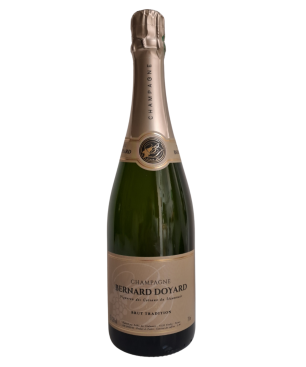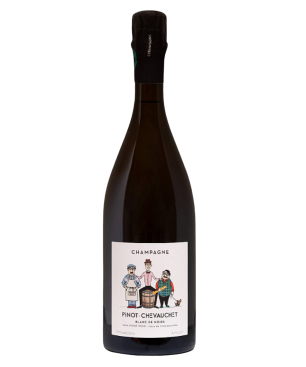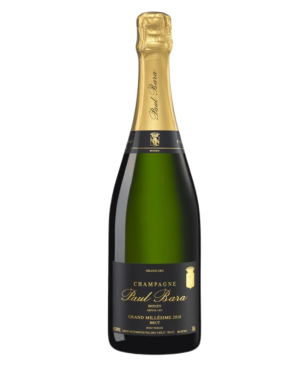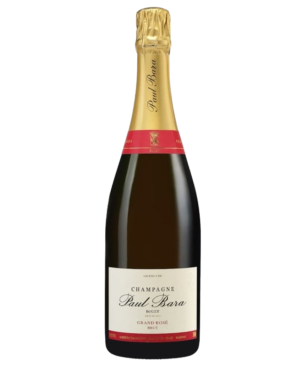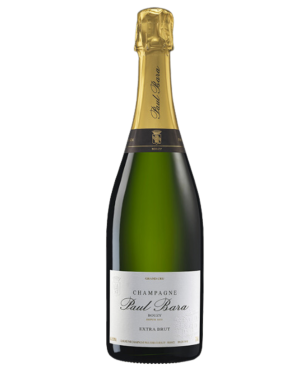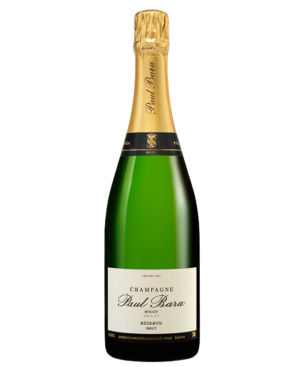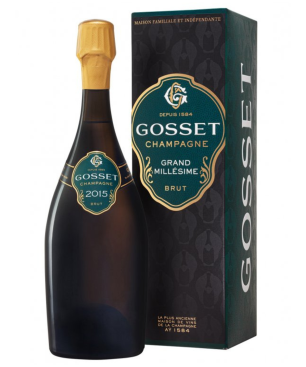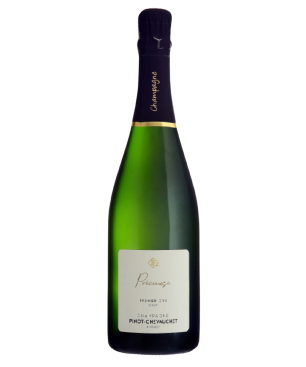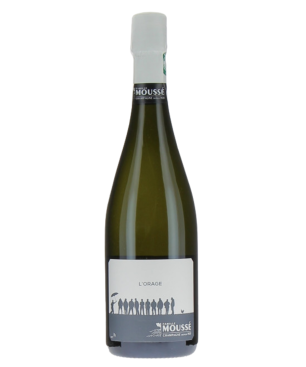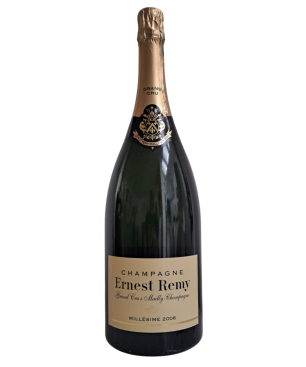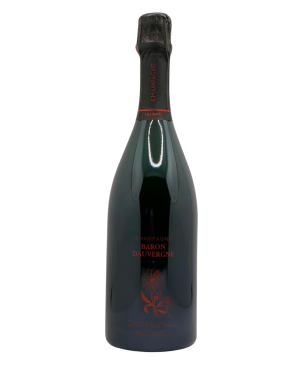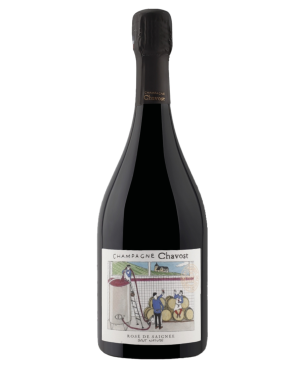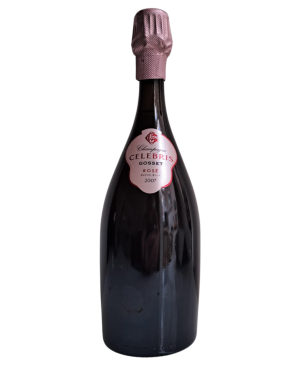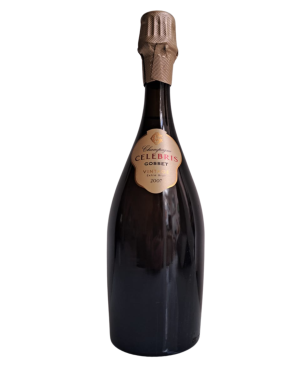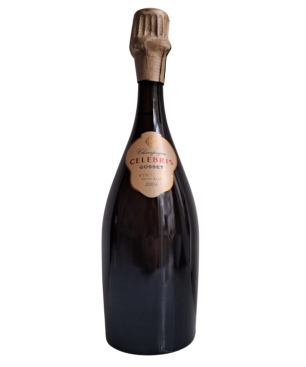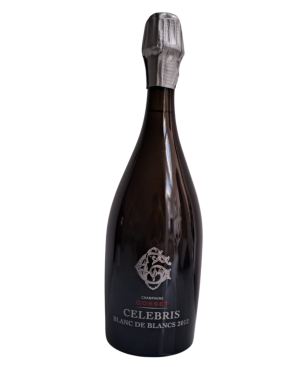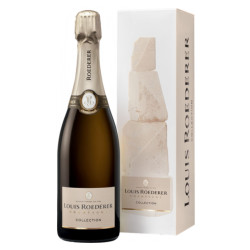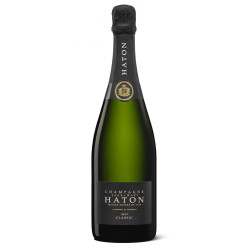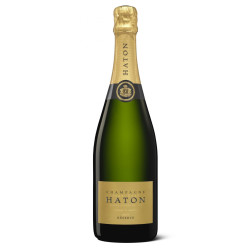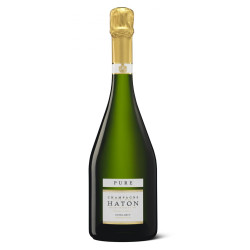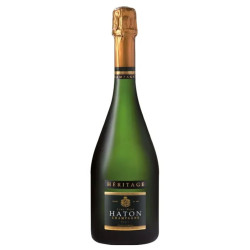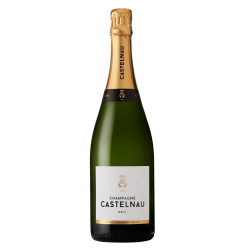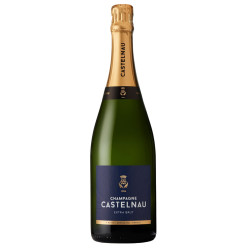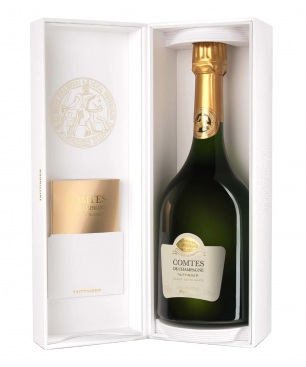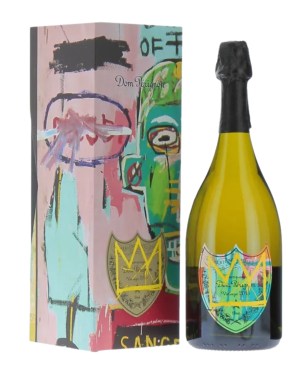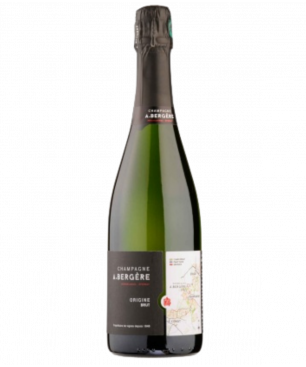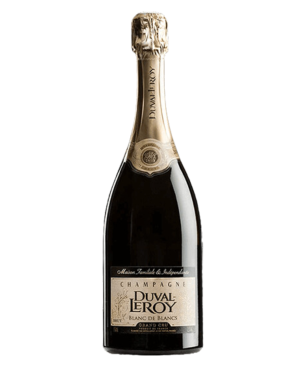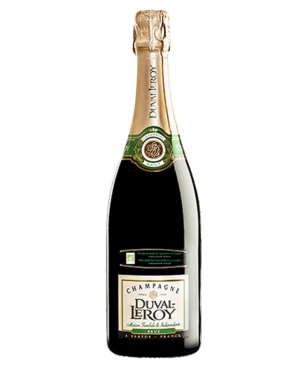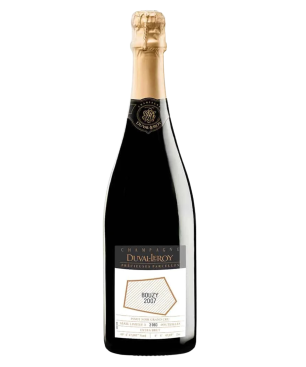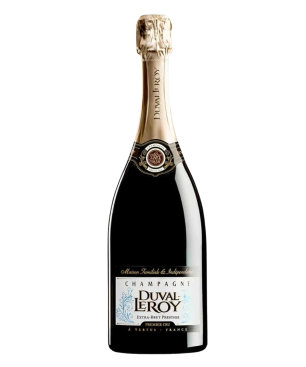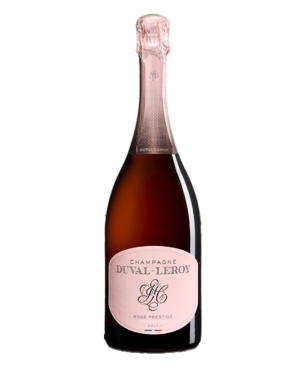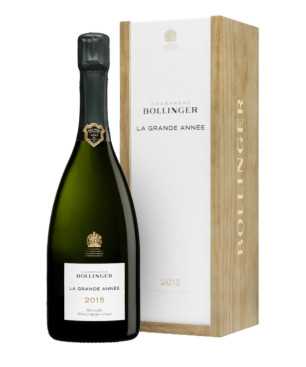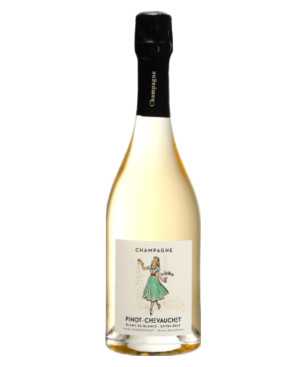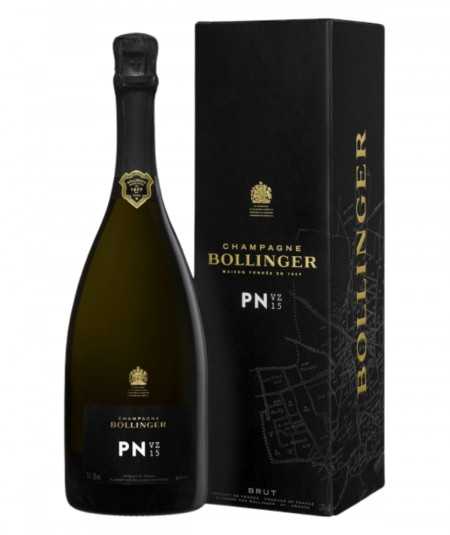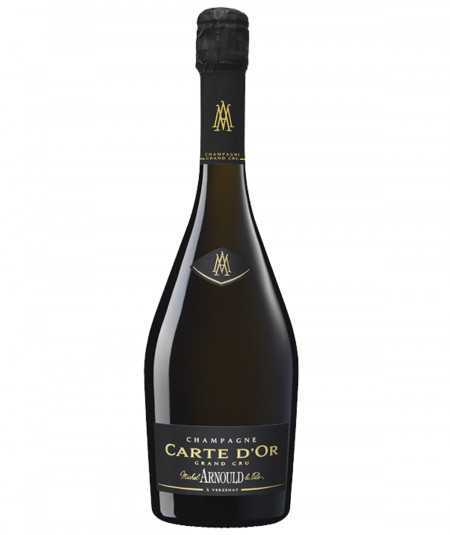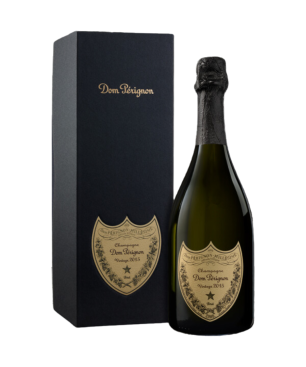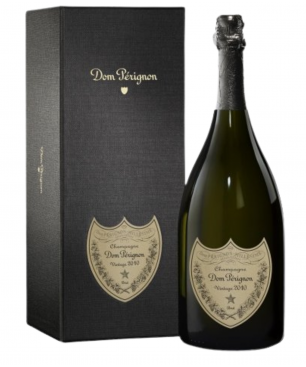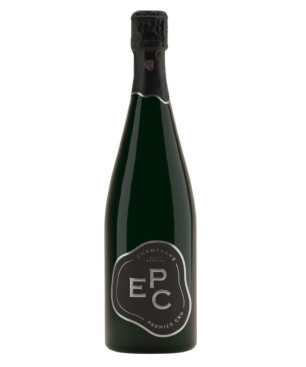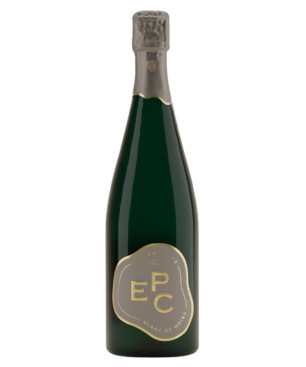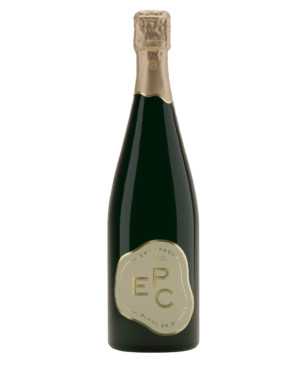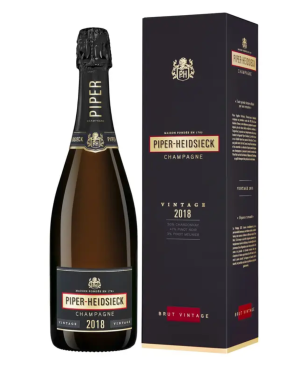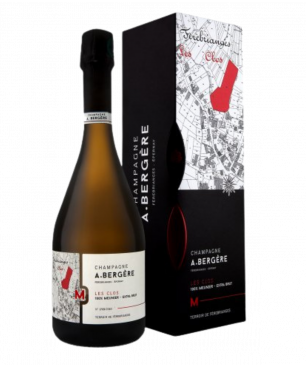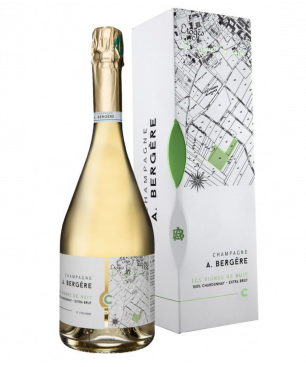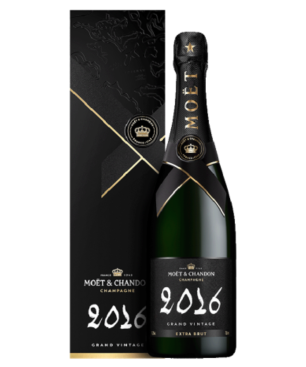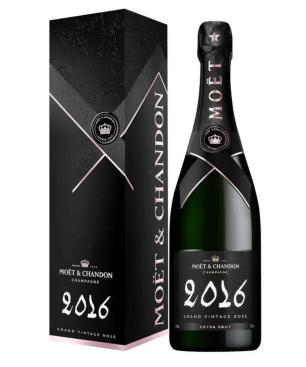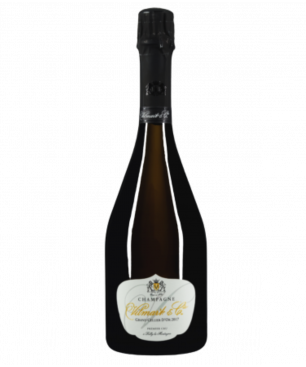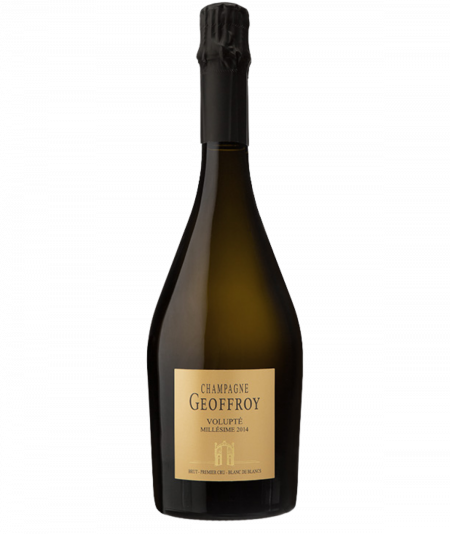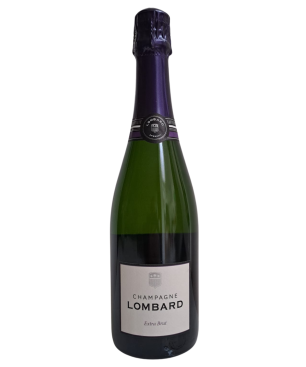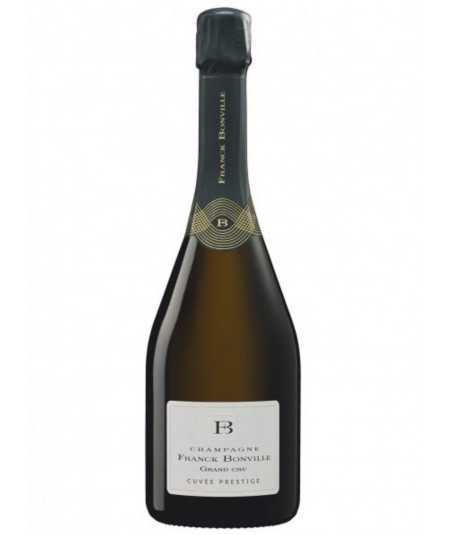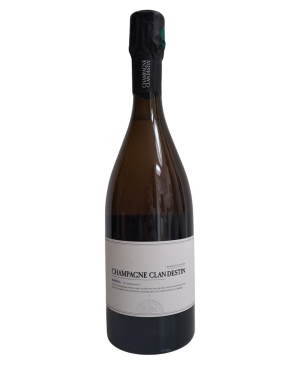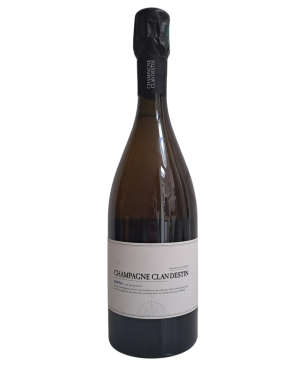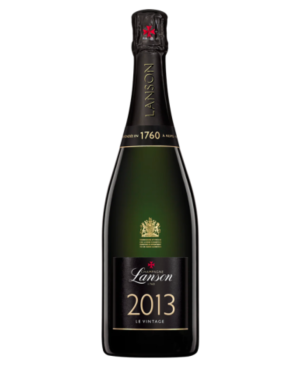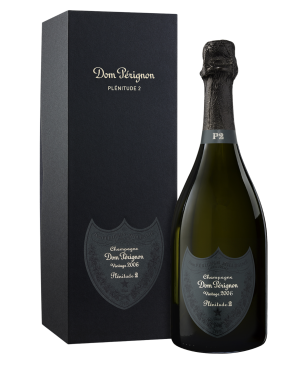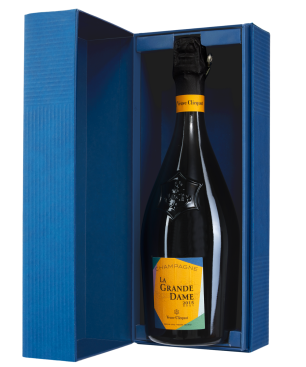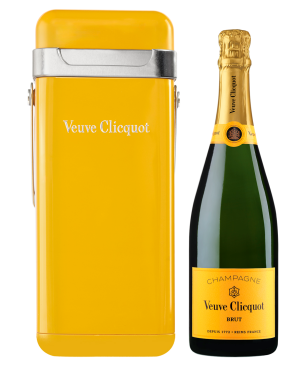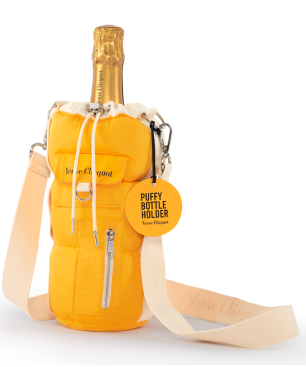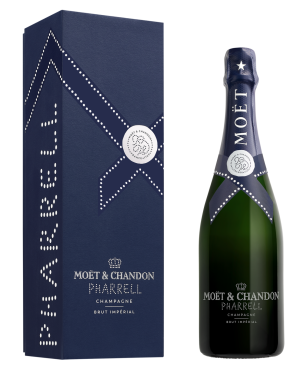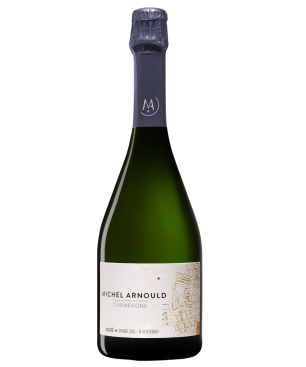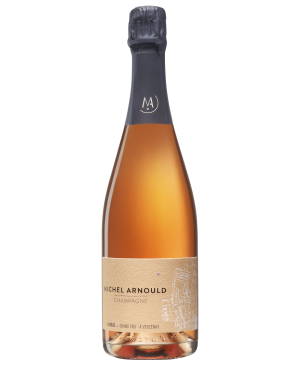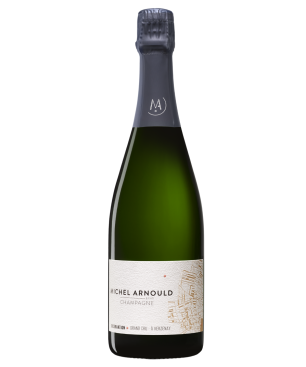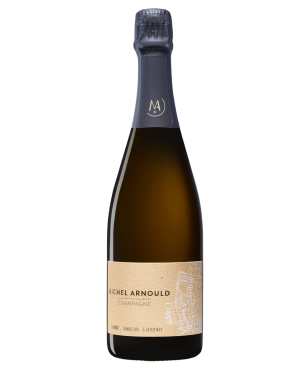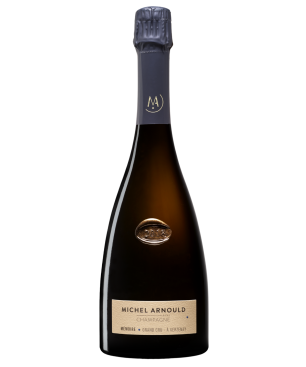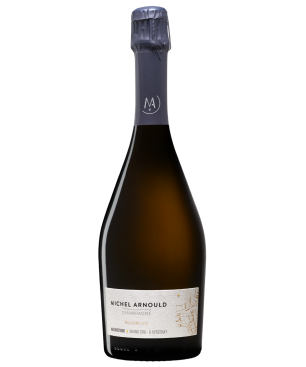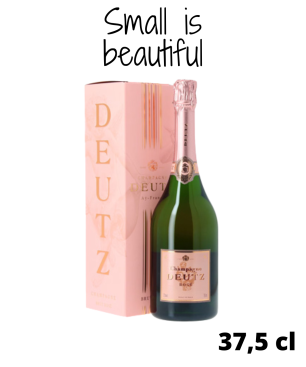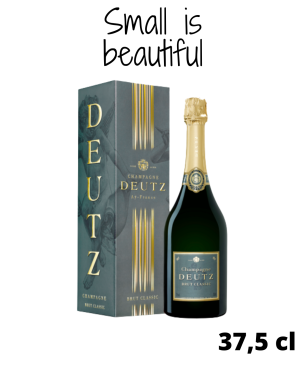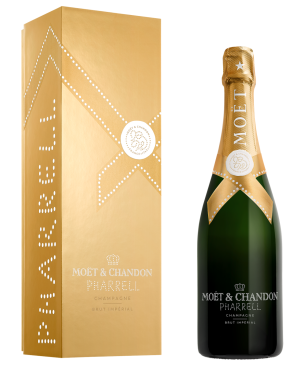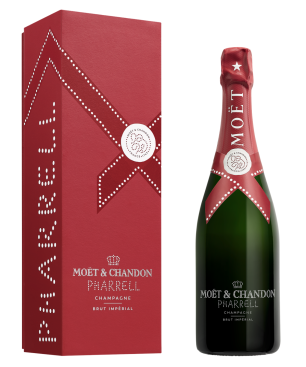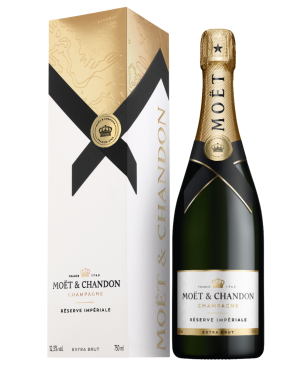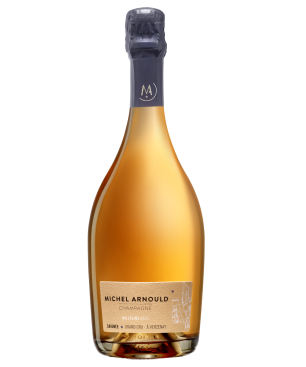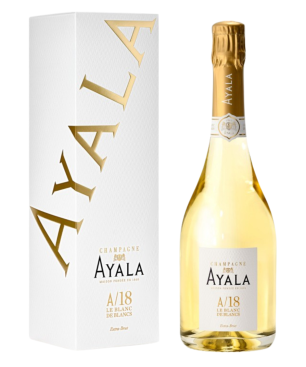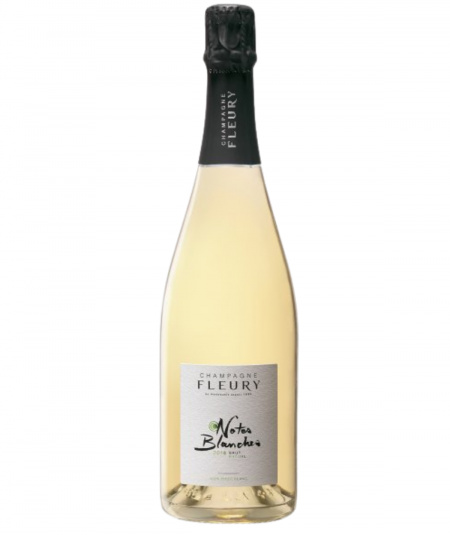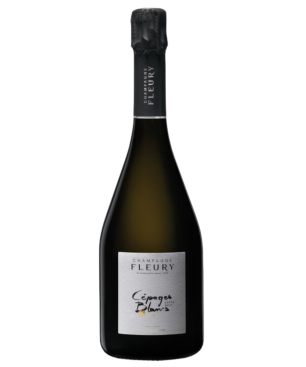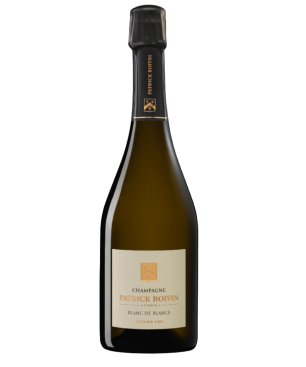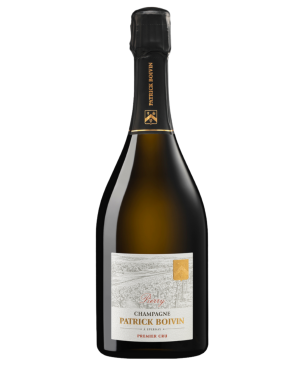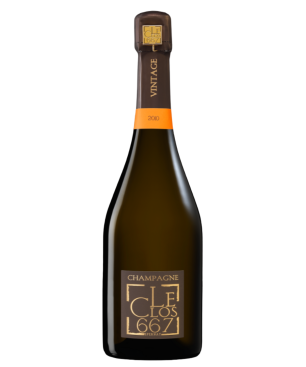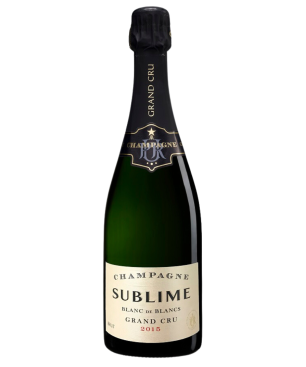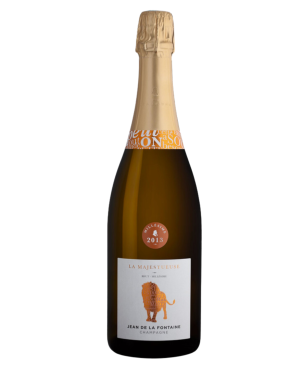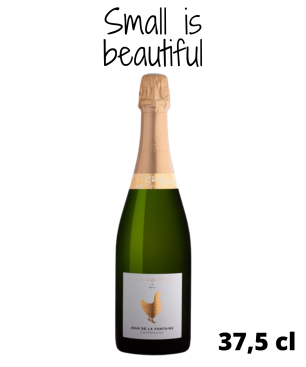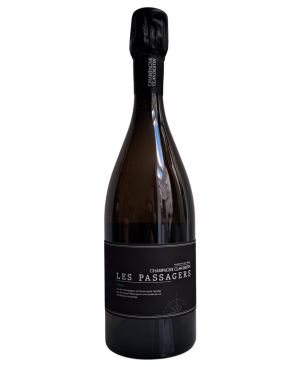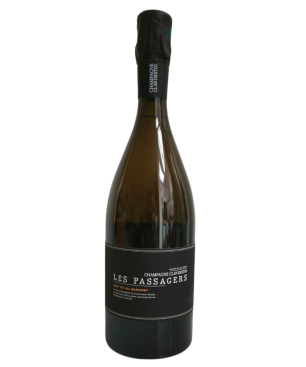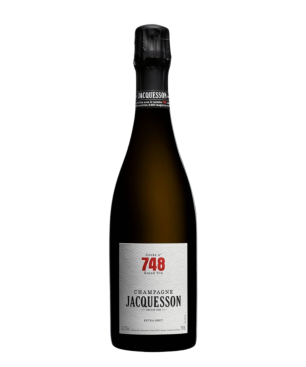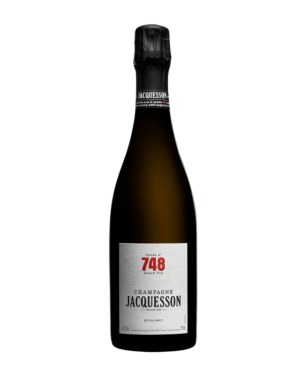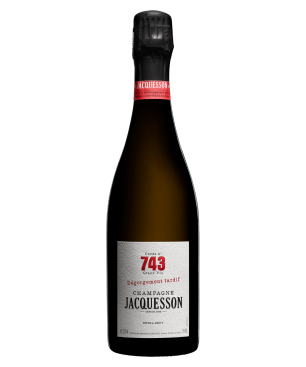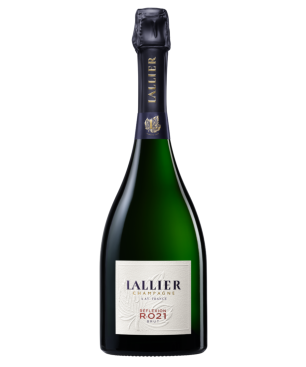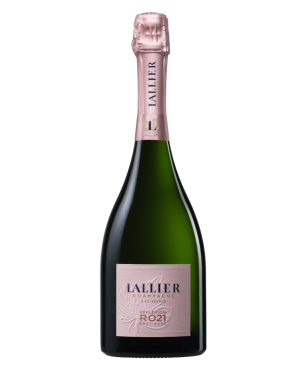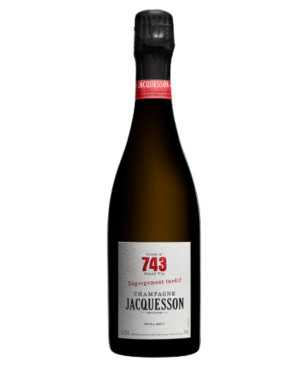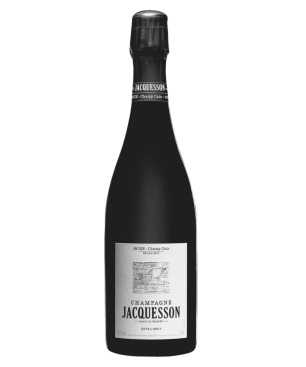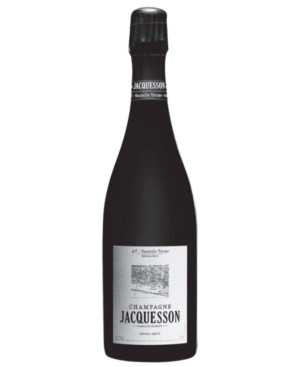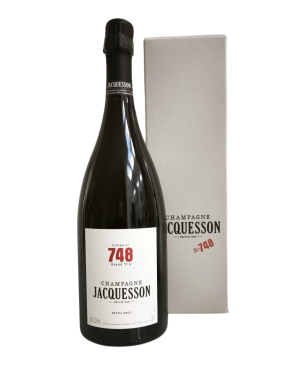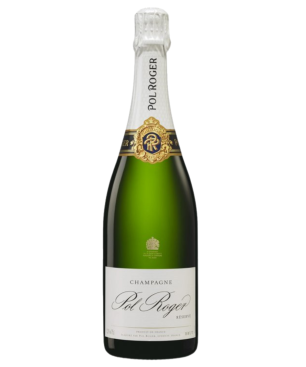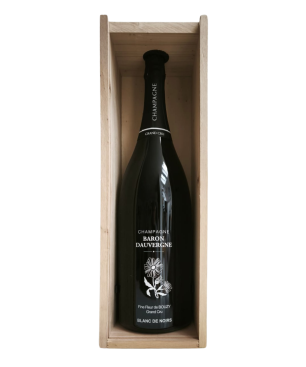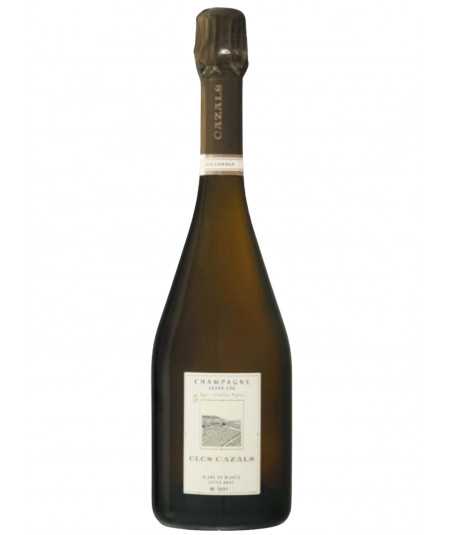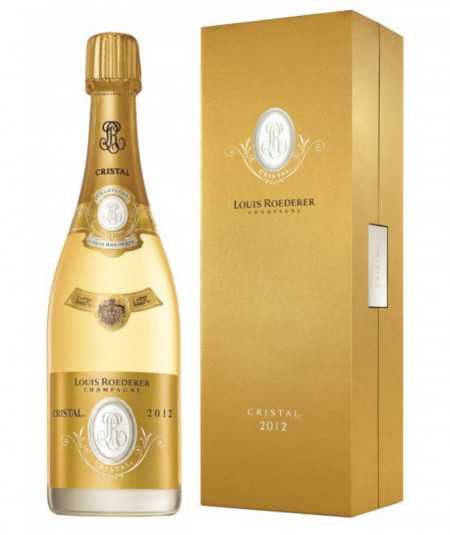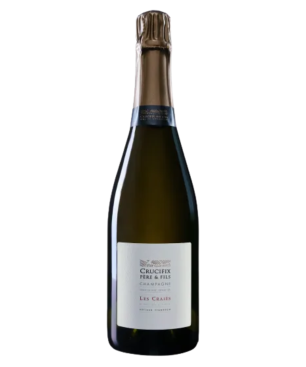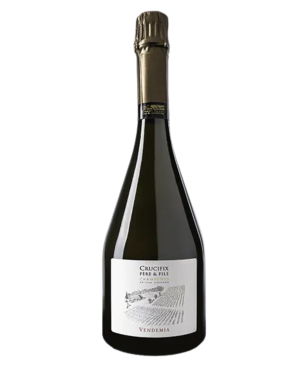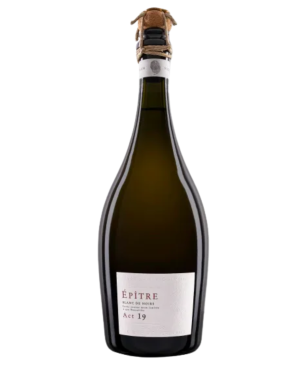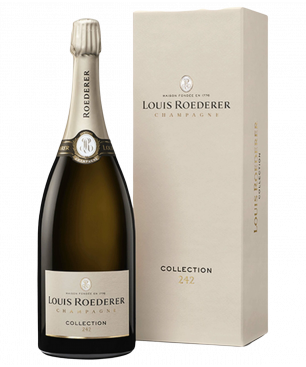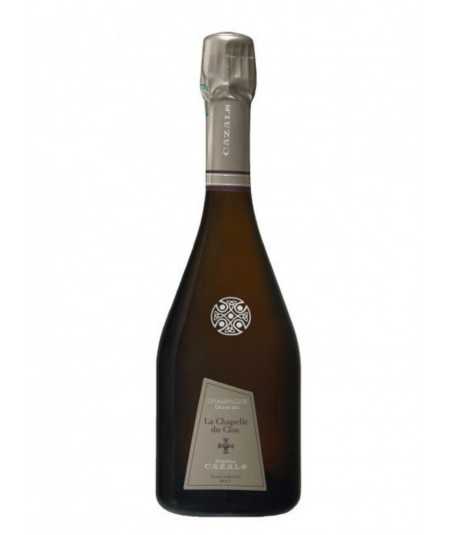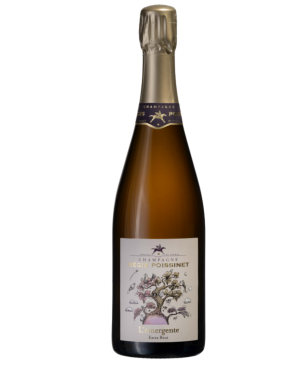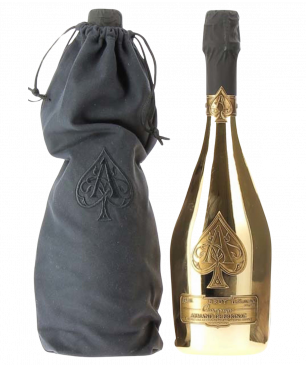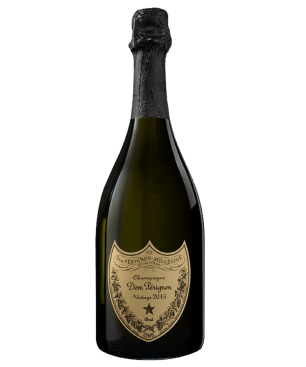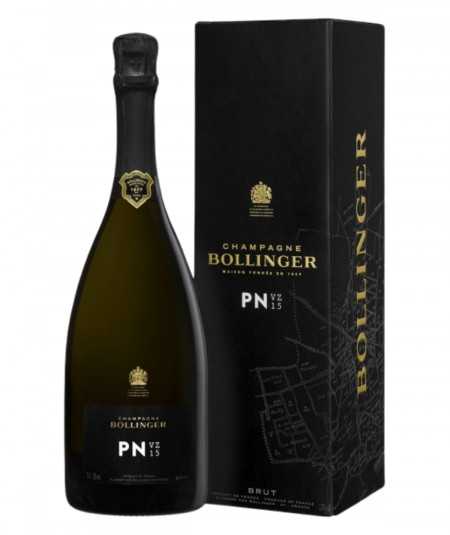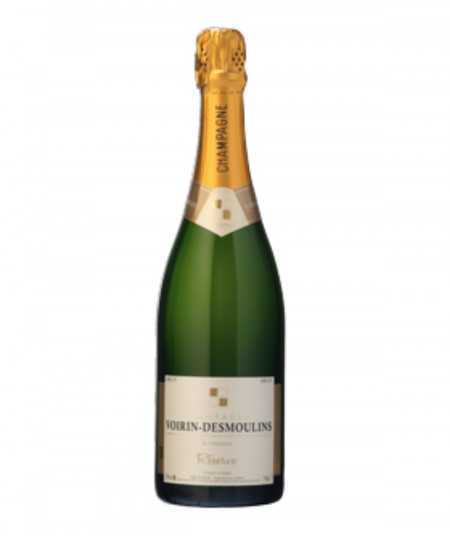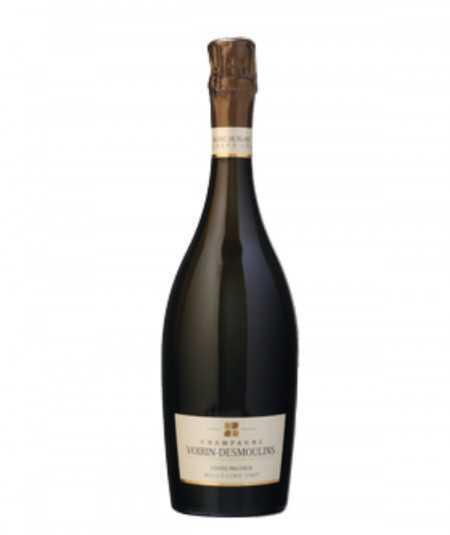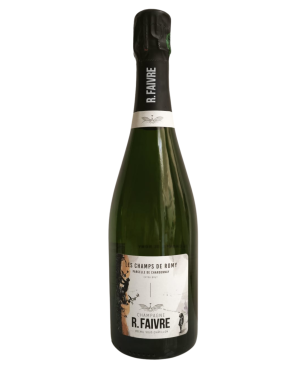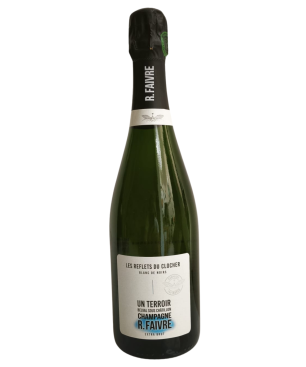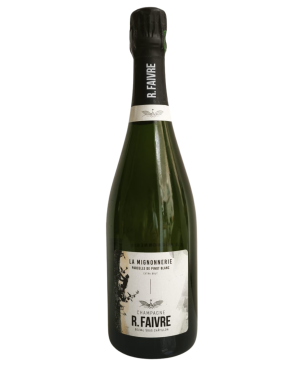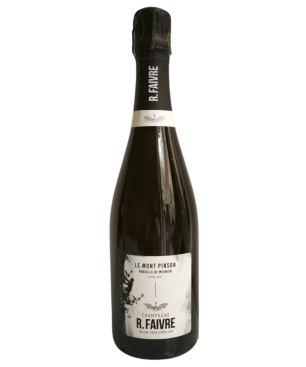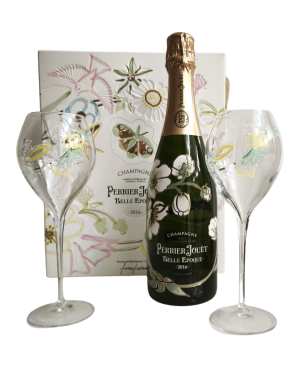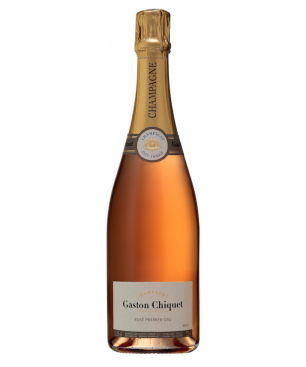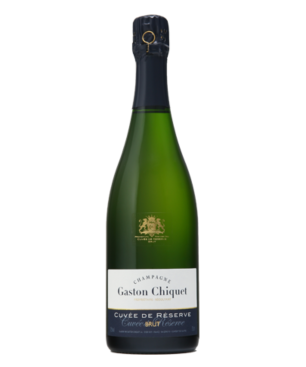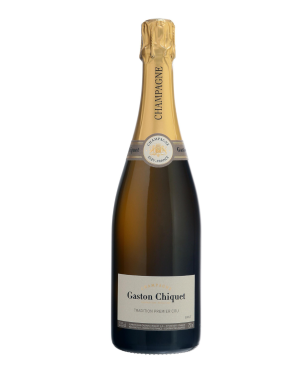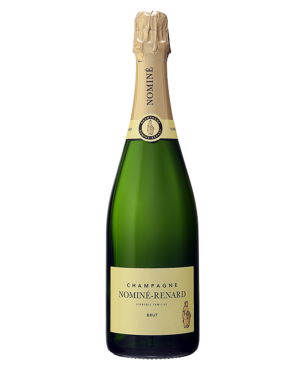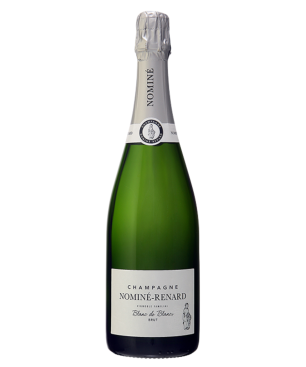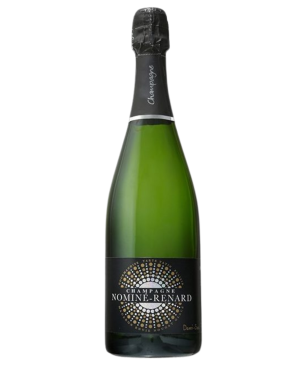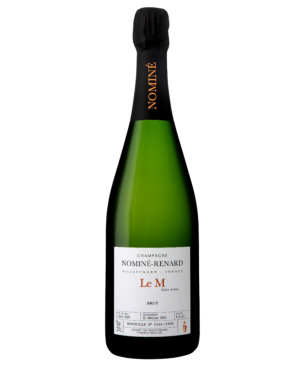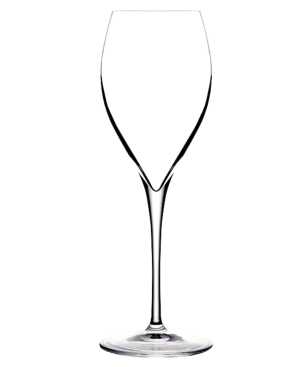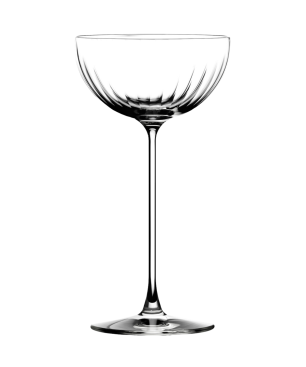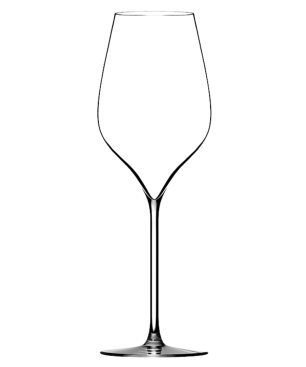The "Champagne Event For Girls Only" is a lively annual celebration tailored exclusively for women, offering the...
Free deliveries in EU for orders over €180
Harvesting grapes for making champagne : all you need to know
The quality of the grapes is essential to produce a high quality champagne.
The grapes used to make champagne generally come from vineyards in the Champagne region of France, and the specific varietals used are strictly controlled by appellation rules. The most commonly used varieties are Chardonnay, Pinot Noir and Pinot Meunier. These grape varieties have been carefully chosen for their ability to produce good sparkling wines when transformed into champagne.
The grapes chosen must be of very high quality
This helps ensure that only the best grapes end up in the bottle. The winemaking process is carefully monitored to ensure the end product is balanced and of a consistently high standard.
The way champagne is produced also influences its flavor and quality. Traditional method champagnes undergo a second fermentation in the bottle, resulting in a more complex and intense flavor profile than tank method sparkling wines. This contributes to their reputation for luxurious sparkling wines, with an unrivaled range of flavors and aromas.
Ultimately, great champagne starts with great grapes, so it's important to use only the highest quality fruit for production.
The different varieties of grapes used for the production of champagne
To guarantee the quality of the grapes destined for the production of champagne, producers must carefully select and harvest their harvest. They will look for bunches of grapes that are uniform in size and color, with firm berries that have a balance of sweetness and acidity. Vines should also be carefully pruned during the growing season to help create ideal growing conditions and yield better quality fruit. Once selected, grapes should be harvested as quickly as possible, usually within 24 hours of picking. Also, harvesting machines must be properly calibrated to ensure that only ripe fruit is harvested, as unripe or overripe grapes can negatively affect the flavor and structure of the finished champagne.
Finally, the grapes must be sorted and pressed to eliminate any imperfections before being fermented. This ensures that only perfectly ripe fruit ends up in the bottle. The careful selection of quality grapes is essential to the production of high quality champagne, and is one of the key factors in creating a great sparkling wine.
By adhering to these strict grape selection and harvesting standards, winemakers can ensure that their Champagne exhibits the complexity, finesse and flavor profile needed to craft a world-class sparkling wine.
The process of selecting and harvesting grapes for the production of champagne
To assess whether or not a grape variety is suitable for making champagne, winemakers must consider a number of important factors. These include climatic adaptation (to ensure optimal ripening), aroma and flavor development (to enhance bouquet), acidity levels (to balance sweetness and bite), tannins (for structure) and malolactic fermentation capacity (for complexity). Grape growers can also assess visual indicators such as berry size and hue to determine if there are issues with ripeness or health of the fruit before harvest. If any of these criteria fail to meet expectations, it may be necessary to reject the grapes before they can be used in the champagne making process.
Quality criteria for selecting grapes for the production of champagne
At every stage of grape selection and harvesting - from choosing grape varieties to selecting individual berries and finally picking - winemakers take great care to ensure that only high quality grapes go into the production of Champagne. This process helps ensure that each bottle is made with the finest ingredients, resulting in exceptional champagne that consumers can enjoy again and again !
Related products
DELAMOTTE Champagne Brut Tradition
MOET & CHANDON Champagne Reserve Imperiale
VEUVE CLICQUOT Champagne rosé with Case
VEUVE CLICQUOT Yellow label
MERCIER Champagne Blanc De Noirs
LALLIER Champagne Grande Reserve
MERCIER Champagne Brut Réserve
RUINART The Cuvee R by Ruinart
MOET & CHANDON Champagne Rosé Impérial
RUINART Champagne Blanc De Blancs
RUINART Champagne Brut Rose
TAITTINGER Champagne Brut Prestige
TAITTINGER Champagne Prestige Rosé
TAITTINGER Champagne Folies de la Marquetterie
TAITTINGER Champagne Nocturne
TAITTINGER Champagne Prélude Grands Crus
MOET & CHANDON Champagne Ice Impérial
MOET & CHANDON Champagne Ice Impérial Rosé
MOET et CHANDON Champagne Grand Vintage 2013
MOET et CHANDON champagne Grand Vintage Rosé 2012
BILLECART SALMON champagne Blanc De Blancs Grands Crus
BILLECART SALMON Champagne Brut Réserve
BILLECART SALMON Champagne Extra Brut Nature
BILLECART SALMON Champagne Brut Rose
BILLECART SALMON Champagne Sous-Bois
BILLECART SALMON Champagne Vintage 2008
Bollinger Champagne Special Cuvee
BOLLINGER La Grande Annee 2012 vintage
BOLLINGER Champagne Rose
CHARLES HEIDSIECK Champagne Blanc De Blancs
CHARLES HEIDSIECK Champagne Des Millenaires 2006 vintage
Charles Heidsieck Millésime 2012
CHARLES HEIDSIECK Champagne Reserve
Deutz Champagne Amour de Deutz 2010 Vintage
Deutz Champagne Blanc de Blancs 2014 Vintage
DEUTZ Champagne Brut Rose
DEUTZ Champagne Brut Classic with Case
Dom Perignon 2008 vintage
DOM PERIGNON Champagne Vintage 2010
Gosset Champagne Grand Vintage 2012
GOSSET Champagne Grand Blanc De Blancs Brut
HENRI GIRAUD Champagne Fût MV15
HENRI GIRAUD Champagne Argonne 2012 Vintage
HENRI GIRAUD Champagne Esprit De Giraud Brut
GOSSET Champagne Petite Douceur Rose
HENRIOT Champagne Brut Rose
HENRIOT Champagne Brut Souverain
HENRIOT Champagne Blanc De Blancs
KRUG Champagne Grande Cuvee
KRUG Champagne Cuvee Rose
Charles Heidsieck Pink Reserve
LAURENT-PERRIER Champagne Ultra Brut
HENRI GIRAUD Champagne Blanc De Craie
AGATHE DE LADUTRIE champagne Chaleureuse Brut
AGATHE DE LADUTRIE Champagne Seductrice Brut Rose
BARON DAUVERGNE Champagne Fleur Blanc de Noirs
BARON DAUVERGNE Champagne Oeil De Perdrix
Besserat de Bellefon Champagne Blanc de blancs grand cru
Besserat de Bellefon Champagne Bleu Brut
Besserat de Bellefon Champagne cuvee Organic
BONNAIRE Champagne Tradition Esprit Du Temps
Bonnaire Champagne Tradition Blanc de blancs - Cuvee Variance
BONNAIRE Champagne Ver Sacrum Blanc De Blancs
BONNAIRE Champagne Cramant Blanc De Blancs 2013 vintage
BONNAIRE Champagne Terroirs Grands Crus Blanc De Blancs
CLAUDE CAZALS Champagne Carte d’Or Grand Cru
CLAUDE CAZALS Champagne Vive Grand Cru
CLAUDE CAZALS Champagne Clos De La Chapelle 2014 vintage
CLAUDE CAZALS Champagne Bulles de Craie
LUCIE CHEURLIN Champagne Brut Lucie Cheurlin
Organic Champagne CHEURLIN Brut Rosé Pluie D’Eté
Organic Champagne LUCIE CHEURLIN Brut Coccinelle & Papillon
RUINART Champagne Dom Ruinart Rosé 2007 vintage
DELAMOTTE Champagne Blanc De Blancs Grand Cru
FRANCK BONVILLE Champagne Prestige Grand Cru Blanc de Blancs
FRANCK BONVILLE Champagne Extra-Brut Grand Cru Blanc de Blancs
FRANCK BONVILLE Champagne Brut Grand Cru Blanc de Blancs
FRANCK BONVILLE Champagne Pur Avize Grand Cru Blanc de Blancs
FRANCK BONVILLE Champagne Pur Oger Grand Cru Blanc de Blancs
FRANCK BONVILLE Champagne Pur Mesnil Grand Cru Blanc de Blancs
GATINOIS Champagne Brut Tradition Grand Cru
GATINOIS Champagne Brut Reserve Grand Cru
MAILLY GRAND CRU Champagne Blanc De Pinot Noir
MAILLY GRAND CRU Champagne Extra Brut 2014 vintage
MAILLY GRAND CRU Champagne Brut Réserve
MAILLY GRAND CRU Champagne L’Intemporelle Brut 2012 vintage
MAILLY GRAND CRU Champagne Rosé De Mailly
MOET et CHANDON Nectar Impérial
PHILIPPE GONET Champagne Signature Brut Blanc de Blancs
PHILIPPE GONET Champagne Extra Brut 3210
PHILIPPE GONET Champagne Roy Soleil Blanc de Blancs Grand Cru
PHILIPPE GONET Champagne TER Blanc Brut
LOMBARD Champagne Cuvee Signature Extra Brut Premier Cru
LANSON Champagne Black Label Brut
LANSON Gold Label 2009 Vintage
LANSON White Label Dry
LANSON Green Label Organic
DEUTZ Champagne Brut Rose Sakura
LUCIE CHEURLIN L’Elégante Organic
GOSSET Grande Reserve Brut Gift set with 2 glasses
PERRIER-JOUËT Belle Epoque 2012 Vintage
LAURENT-PERRIER Pink champagne Zebra edition
MALARD Brut pink Excellence
Champagne PERRIER-JOUËT Blason Rose
GOSSET Champagne pink Grand Brut
VEUVE CLICQUOT La Grande Dame 2006 vintage
Champagne Gift Set CHARLES HEIDSIECK 2 Bottles Brut Reserve
Champagne Gift set CHARLES HEIDSIECK Brut + Pink
AGATHE DE LADUTRIE Cuvée Blanc De Blancs Extra Brut Premier Cru Champagne
AGATHE DE LADUTRIE Champagne Brut Nature
AGATHE DE LADUTRIE Charmeuse Brut Premier Cru Champagne
BARON DAUVERGNE Champagne Sweet Vintage Rose
BARON DAUVERGNE Champagne Prestige
BARON DAUVERGNE Champagne Parisienne Blanc De Noirs Limited Edition
BEAUMONT DES CRAYERES Champagne Expression Brut
BESSERAT DE BELLEFON Champagne Blanc De Noirs
BILLECART SALMON Champagne Demi-Sec
BILLECART SALMON Champagne Nicolas Francois 2006
BOLLINGER R.D. Champagne Extra Brut 2002
BOLLINGER Champagne Annee Rose 2012 Vintage
CARBON Champagne Les “110 Ans De Bugatti”
CARBON Champagne Luminous
CHARLES HEIDSIECK Champagne 2005 Vintage
CLAUDE CAZALS Champagne Clos Cazals 2008 Vintage
CLAUDE CAZALS Champagne Clos Cazals 2006 Vintage
DEUTZ Champagne Brut 2014 vintage
DEUTZ Champagne William Deutz 2009 vintage
GOSSET Champagne Grande Reserve Brut
GOSSET Champagne 12 years in cellar
J. DE TELMONT Champagne Blanc De Blancs 2008 vintage
J. DE TELMONT Champagne Blanc de Noirs Brut 2013 vintage
J. DE TELMONT Champagne O.R 1735 Brut 2004 vintage
J. DE TELMONT Champagne Grande Réserve Brut
JACQUESSON Champagne 737 D.T.
JACQUESSON Champagne 738 D.T.
JACQUESSON Champagne 743
JACQUESSON Champagne Champ Caïn Avize 2009 vintage
JACQUESSON Champagne Corne Bautray Dizy 2009
LALLIER Champagne Blanc de Blancs
LALLIER Champagne Brut Nature
LALLIER Champagne Grand Rose
LALLIER Champagne Les Sous Grand Cru Blanc De Noirs
LALLIER Champagne Loridon Grand Cru Blanc De Blancs
LALLIER Champagne Ouvrage Grand Cru “élevé sous liège”
LALLIER Champagne R015 Brut
LALLIER Champagne R016 Brut
LAURENT-PERRIER Champagne 2008 vintage
LAURENT-PERRIER Champagne La Cuvée
LAURENT-PERRIER Champagne Grand Siecle
Champagne Gift Set LAURENT-PERRIER pink with 2 flutes
LAURENT-PERRIER Champagne pink
LAURENT-PERRIER Champagne Blanc De Blancs Nature
Champagne Gift set LAURENT-PERRIER with 2 glasses
LOMBARD Champagne Terroir Grand Cru Mono Cru Brut Nature Blanc De Blancs Chouilly
LOMBARD Champagne Brut Nature Grand Cru 2008 vintage
LOMBARD Champagne Brut Nature Grand Cru
LOMBARD Champagne Brut Nature Blanc De Noirs Verzenay Grand Cru Lieu-Dit Les Corettes
Champagne LOMBARD Grand Cru Avize Blanc De Blancs
MALARD Champagne Blanc De Blancs Excellence
MALARD Champagne Blanc De Noirs Excellence
MALARD Champagne Brut Excellence
MOET CHANDON Champagne Brut Impérial
PERRIER-JOUËT Champagne Blanc De Blancs
PERRIER-JOUET Champagne Grand Brut
PETIT BAJAN Champagne Brut Assemblage Grand Cru Ambrosie
PETIT BAJANC champagne Rosé Grand Cru Nymphéa
PINOT CHEVAUCHET Champagne Blanc De Noirs Vieilles Vignes Extra-Brut
PINOT CHEVAUCHET Champagne Joyeuse Brut
POISSINET Champagne Terre d’Irizée Extra-Brut
POL ROGER Champagne Réserve Brut
POL ROGER Champagne Rosé Vintage 2012
POL ROGER Champagne Sir Winston Churchill 2012 vintage
POL ROGER Champagne Brut Vintage 2012
RUINART Champagne R de Ruinart 2011 vintage
TAITTINGER Champagne Brut 2008 vintage Salgado
VEUVE CLICQUOT Champagne Rich
VEUVE CLICQUOT champagne Rich Rosé
VEUVE CLICQUOT Champagne Ice Yellow Jacket Brut
VEUVE CLICQUOT Champagne Ice Rosé Jacket
VEUVE CLICQUOT Champagne Vintage Brut 2012
VEUVE CLICQUOT Champagne Extra Brut Extra Old
Champagne Magnum BILLECART SALMON Brut Reserve
Jeroboam Champagne of BILLECART SALMON Brut Réserve
Champagne Mathusalema BILLECART SALMON Brut Reserve
Champagne Magnum BILLECART SALMON Brut Rose
Half-bottle of Champagne BILLECART SALMON Brut Rose
Champagne Magnum of BILLECART SALMON Vintage 2008
Champagne Magnum BOLLINGER Rose
Champagne Magnum of Bollinger Special Cuvee
Half-bottle Champagne of Bollinger Special Cuvee
Champagne Jeroboam of Bollinger Special Cuvee
Champagne Magnum CHARLES HEIDSIECK Blanc De Blancs
Champagne Magnum of CHARLES HEIDSIECK Reserve
Champagne Jeroboam of CHARLES HEIDSIECK Reserve
Magnum of CLAUDE CAZALS Champagne Carte d’Or Grand Cru
Magnum of CLAUDE CAZALS Champagne Clos Cazals 2008 Vintage
Magnum of DELAMOTTE Champagne Brut Tradition
Magnum of Champagne DELAMOTTE Blanc De Blancs Grand Cru
Magnum of DEUTZ Champagne Brut Rose
Magnum of DEUTZ Champagne Brut Classic
Jeroboam of DEUTZ Champagne Brut Classic
Mathulasema of DEUTZ Champagne Brut Classic
Magnum of FRANCK BONVILLE Champagne Brut Grand Cru Blanc de Blancs
GOSSET Champagne pink Grand Brut with packaging
Magnum of GOSSET Champagne pink Grand Brut with packaging
GOSSET Champagne Grande Reserve Brut with packaging
Magnum of GOSSET Champagne Grande Reserve Brut
Jeroboam of GOSSET Champagne Grande Reserve Brut
Champagne FLEURY Rosé De Saignée Brut
Champagne FLEURY Blanc De Noirs Brut
Champagne FLEURY Fleur de L’Europe Brut Nature
Champagne FLEURY Boléro Extra-Brut 2009 Vintage
Champagne FLEURY Robert Fleury Extra Brut 2008 vintage
Magnum of JACQUESSON Champagne 743
Magnum of JACQUESSON Champagne 742
Magnum of LALLIER Champagne Blanc de Blancs Grand Cru
Magnum of of LAURENT-PERRIER Champagne pink
Magnum of LAURENT-PERRIER Champagne La Cuvée
Jeroboam of LAURENT-PERRIER Champagne La Cuvee
Magnum of LAURENT-PERRIER Champagne 2008 vintage
Magnum of MOET CHANDON Champagne Brut Imperial
Jeroboam of MOET CHANDON Champagne Brut Imperial
Magnum of PERRIER-JOUET Champagne Grand Brut
Jeroboam of PERRIER-JOUET Champagne Grand Brut
Magnum of POL ROGER Champagne Brut Vintage 2012
Magnum of POL ROGER Champagne Réserve Brut
Jeroboam of POL ROGER Champagne Réserve Brut
Mathusalema of POL ROGER Champagne Réserve Brut
Magnum of TAITTINGER Champagne Brut Prestige
Jeroboam of TAITTINGER Champagne Brut Prestige
Quarter bottle MOET CHANDON Champagne Brut Imperial
Quarter bottle MOET & CHANDON Champagne Rose Imperial
Quarter bottle LANSON Black Label Brut
Quarter bottle LAURENT-PERRIER Champagne La Cuvée
Half Bottle of Champagne DELAMOTTE Blanc De Blancs Grand Cru
Half Bottle of Champagne CHARLES HEIDSIECK Champagne Reserve
Half Bottle of Champagne DEUTZ Champagne Brut Classic
Half Bottle of DEUTZ Champagne Brut Rose
Demi bouteille de Champagne LANSON Black Label Brut Pack of 3
Half Bottle of GOSSET Champagne Grande Reserve Brut
Half Bottle of MOET CHANDON Champagne Brut Imperial
Half Bottle of MOET & CHANDON Champagne Rosé Impérial
Half Bottle of POL ROGER Champagne Reserve Brut
Half Bottle of TAITTINGER Champagne Brut Prestige
Half Bottle of champagne RUINART The Cuvee R by Ruinart
POL ROGER Champagne Rich Demi-Sec
POL ROGER Champagne Pure Extra Brut
POL ROGER Champagne Blanc De Blancs Vintage 2012
Eden Park Brut Champagne
EXCEPTION Blanche Blanc de Blancs Grand Cru 2009 Vintage Champagne
FLEUR DE MIRAVAL Rosé Champagne
JEAN MICHEL CEP Extra Brut (Zero Sulphur)
JEAN MICHEL Blanc De Meunier 2015 Vintage Champagne
MOUSSE Fils “Les Vignes de mon Village” Champagne
MOUSSE Fils Anecdote Champagne
MOUSSE Fils l’Or Eugène Champagne
MOUSSE Fils Extra Or d’Eugène Extra-Brut D.T Champagne
MOUSSE Fils Rosé Effusion champagne
MOUSSE Fils Spécial Club Terre Forte 2015 vintage champagne
ROBERT MONCUIT Réserve Perpétuelle Champagne
ROBERT MONCUIT Blanc De Blancs Champagne
MOUTARD Brut Grande Cuvée Champagne
MOUTARD Champ Persin Champagne
MOUTARD Rosé Brut Nature Champagne
HENRIOT Champagne Brut 2008 vintage
Champagne VEUVE CLICQUOT Audio Tape
Magnum of Champagne BARON DAUVERGNE Fleur Blanc de Noirs
Half Bottle of BARON DAUVERGNE Champagne Fleur Blanc de Noirs
HENRI GIRAUD Hommage Au Pinot Noir Champagne
DE SOUSA Brut Réserve Blanc De Blancs Grand Cru Organic Champagne
DE SOUSA Brut Rosé Grand Cru BIO Champagne
DE SOUSA Brut Tradition Organic champagne
DE SOUSA Cuvée Des Caudalies Blanc de Blancs Grand Cru Organic Champagne
CLAUDE CAZALS Cuvée Rosé Champagne
LE MESNIL Brut Blanc De Blancs Grand Cru Champagne
LE MESNIL Sublime Brut Blanc De Blancs Grand Cru 2012 Vintage Champagne
LE MESNIL Extra-Brut Blanc De Blancs Grand Cru Champagne
EDEN PARK Rosé De Saignée Champagne
JEAN MICHEL Carte Blanche Brut Champagne
JEAN MICHEL La Petite Mulotte Blanc De Blancs Champagne
JEAN MICHEL Les Neuf Arpents Extra-Brut 2016 vintage Champagne
DE VENOGE Cordon Bleu Blanc De Noirs Champagne
DE VENOGE Cordon Bleu Brut Champagne
Half Bottle of Champagne DE VENOGE Cordon Bleu Brut
DE VENOGE Cordon Bleu Rosé Champagne
DE VENOGE Cuvée Louis XV Grand Cru Vintage 2008
DE VENOGE Princes Blanc De Blancs Champagne
DE VENOGE Princes Blanc De Noirs Champagne
ARMAND DE BRIGNAC Brut Gold Champagne
Champagne Magnum ARMAND DE BRIGNAC Brut Gold
MICHEL ARNOULD Blanc de Noirs Grand Cru Champagne
MICHEL ARNOULD Réserve Grand Cru Brut Champagne
MICHEL ARNOULD La grande Cuvée Grand Cru Champagne
MICHEL ARNOULD Fleur de Rosé Grand Cru Champagne
MICHEL ARNOULD Rosé Blanc de Noirs Grand Cru Champagne
MICHEL ARNOULD Carte d’Or Grand Cru Champagne Vintage
MICHEL ARNOULD Mémoire de vignes Grand Cru Champagne Vintage
MICHEL ARNOULD B.50 Grand Cru Champagne Vintage
LEBEAU-BATISTE Brut Tradition Champagne
LEBEAU-BATISTE Cuvée Selection Grande Réserve
LEBEAU-BATISTE Champagne Vintage
LEBEAU-BATISTE Cuvée Selection Champagne
HUBERT PAULET champagne Brut Tradition Premier Cru
Jeroboam Champagne of VEUVE CLICQUOT Brut Carte Jaune
Champagne Magnum VEUVE CLICQUOT Brut Carte Jaune
VEUVE CLICQUOT 2008 Vintage
VEUVE CLICQUOT La Grande Dame Champagne Vintage 2008
VEUVE CLICQUOT Rosé Champagne Vintage 2008
RUINART Blanc De Blancs seconde peau Champagne
RUINART Dom Ruinart 2007 vintage
Champagne TAITTINGER Brut 2014 Vintage
TAITTINGER Comtes de Champagne 2008 vintage
Champagne Magnum MOET & CHANDON Ice Impérial Brut
Champagne Magnum MOET & CHANDON Ice Impérial Rosé
MOET & CHANDON champagne N.I.R. Nectar Impérial Dry Rosé
Champagne Magnum DOM PERIGNON Champagne 2008 Vintage
DELAMOTTE Brut Rosé de Saignée Champagne
DELAMOTTE Blanc De Blancs Champagne Vintage 2012 Grand Cru
DOM PERIGNON Champagne 2008 Vintage Lenny Kravitz
BOLLINGER PN VZ 15 Champagne Vintage
GOSSET Grand Blanc De Noirs Extra-Brut Champagne
KRUG Champagne 2002 Vintage
LOUIS ROEDERER Blanc De Blancs Grand Cru Champagne Vintage 2013
LOUIS ROEDERER Brut Premier Champagne
Champagne Magnum LOUIS ROEDERER Brut Premier
LOUIS ROEDERER Brut Champagne Vintage 2012
LOUIS ROEDERER Cristal Champagne Vintage 2012 Grand Cru
PIPER-HEIDSIECK champagne Brut
PIPER-HEIDSIECK champagne Cuvée Essentiel Extra-Brut
PIPER-HEIDSIECK Champagne Vintage 2012
PIPER-HEIDSIECK champagne Rosé Sauvage
HUBERT PAULET champagne Brut Rose Premier Cru vintage
HUBERT PAULET champagne Extra-Brut Tradition Premier Cru
JACQUART champagne Brut Rosé Mosaïque
JACQUART champagne Brut Mosaïque
JEAN VESSELLE champagne Brut Réserve
JEAN VESSELLE champagne Extra-Brut
JEAN VESSELLE champagne Oeil de Perdrix Blanc de Noirs
JEAN VESSELLE champagne Ratafia
BILLECART-SALMON Champagne Cuvée Louis Blanc De Blancs Vintage 2007
BOLLINGER Champagne Vieilles Vignes Françaises Vintage 2004
JACQUESSON Champagne Cuvée Vauzelle Terme Aÿ Vintage 2009
SALON Champagne Blanc De Blancs Vintage 2007
PERRIER-JOUËT Champagne Belle Epoque Blanc de Blancs Vintage 2006
PERRIER-JOUËT Champagne Belle Epoque Rosé Vintage 2006
PIPER-HEIDSIECK Champagne Rare 2008 Vintage
LAURENT-PERRIER Champagne Cuvée Alexandra Rosé Vintage 2004
BONNET-GILMERT champagne cuvée de Réserve Grand Cru
BONNET-GILMERT champagne Précieuse D’ambroise Grand Cru
TSARINE champagne Cuvée Orium
Champagne Jeroboam ARMAND DE BRIGNAC Brut Gold
Champagne Magnum KRUG Grande Cuvée Brut
Champagne Magnum KRUG Vintage 2002
KRUG Champagne Vintage 2004
KRUG Champagne Vintage 2006
KRUG Champagne Vintage 1988
KRUG Champagne Clos Du Mesnil Vintage 2006
KRUG Champagne Clos Du Mesnil Vintage 2004
CARBON champagne cuvée Rosé Luminous
CARBON champagne Sunset Blanche
CARBON champagne Origine
GIMONNET champagne Cuis 1er Cru
GIMONNET champagne Brut Extra 1er Cru
GIMONNET champagne Oenophile non dose 1er Cru
GIMONNET champagne Special Club
DEVAVRY champagne Brut Premier Cru
DEVAVRY Champagne Blanc de Blancs Premier Cru
DEVAVRY champagne Blanc de Noirs Grand Cru
DEVAVRY Champagne 2013 Vintage
Champagne Magnum RUINART Blanc De Blancs
AYALA champagne Brut Majeur
AYALA champagne Brut Nature
AYALA champagne Blanc de Blancs 2015 vintage
Half-bottle of Champagne BILLECART SALMON Brut Réserve
CLAUDE CAZALS Champagne Clos Cazals 2012 Vintage
VOIRIN-DESMOULINS champagne Brut Tradition
VOIRIN-DESMOULINS champagne Cuvée Réserve
VOIRIN-DESMOULINS champagne Brut Blanc de Blancs Grand Cru
VOIRIN-DESMOULINS champagne Cuvée Prestige Blanc De Blancs 2015 Vintage Grand Cru
Champagne Magnum VOIRIN-DESMOULINS Brut Tradition
PHILIPPONNAT champagne Royale Réserve
PHILIPPONNAT champagne Royale Réserve Non Dosée
PHILIPPONNAT champagne Blanc de Noirs 2014 vintage
DRAPPIER champagne Carte d'Or
DRAPPIER champagne Brut Nature Sans Soufre
DRAPPIER champagne Clarevallis
DRAPPIER champagne Quattuor Blanc de Blancs
DRAPPIER champagne Charles de Gaulle
Half Bottle of Champagne DRAPPIER Carte d'Or
Champagne Magnum DRAPPIER Carte d'Or
Jeroboam Champagne of DRAPPIER Carte d'Or
MUMM champagne Cordon Rouge
PERRIER-JOUËT champagne Gif Set Blanc De Blancs with 2 glasses
NAPOLEON champagne Tradition Brut
Half Bottle of Champagne NAPOLEON Tradition Brut
NAPOLEON champagne Blanc de Blancs
PALMER champagne Brut Réserve
PALMER champagne Blanc de Blancs
PALMER champagne Premier cru 2012 vintage
PALMER champagne Amazone
PERTOIS-MORISET champagne Rosé Blanc Grand Cru
PERTOIS-MORISET champagne Les Quatre Terroirs Brut Blanc De Blancs Grand Cru
LECLERC-BRIANT champagne Réserve Brut
LECLERC-BRIANT champagne Premier Cru Extra Brut
LECLERC-BRIANT champagne Cuvée Divine Extra Brut en Solera
LECLERC-BRIANT champagne La Croisette 2015
LECLERC-BRIANT champagne Les Basses Prières 2015
LECLERC-BRIANT champagne Le Clos des Trois Clochers 2015
LECLERC-BRIANT champagne Cuvée Abyss 2016
BRUNO PAILLARD champagne Brut Réserve
BRUNO PAILLARD champagne Blanc de Blancs Grand Cru
BRUNO PAILLARD champagne Dosage Zéro
BRUNO PAILLARD champagne Assemblage 2012 vintage
Half Bottle of Champagne KRUG Grande Cuvée
Champagne Magnum BRUNO PAILLARD champagne Brut Réserve
CATTIER champagne Brut Icône Tradition
CATTIER champagne Brut Premier Cru
CATTIER champagne Brut Blanc de Blancs Premier Cru
CATTIER champagne Brut Blanc de Noirs Premier Cru
CATTIER champagne Brut Nature Premier Cru
CATTIER champagne Clos du Moulin Brut Premier Cru
Champagne Magnum CATTIER Brut Icône Tradition
CLANDESTIN champagne cuvée BOREAL
LOUIS ROEDERER Cristal Champagne Vintage 2008 Grand Cru
Champagne Magnum LECLERC-BRIANT Réserve Brut
Champagne Magnum LECLERC-BRIANT Premier Cru Extra Brut
VEUVE CLICQUOT champagne La Grande Dame 2012 by Yayoï Kusama
DOM PERIGNON champagne 2000 vintage Plénitude P2
DE VENOGE Tour Eiffel
DE VENOGE champagne Cuvée Louis XV 2012 Grand Cru
ROEDERER champagne 2013 vintage Rosé
TAITTINGER champagne 2008 vintage Comtes de Champagne Rosé
TAITTINGER champagne 2011 vintage Comtes de Champagne
POL ROGER champagne 2013 vintage Blanc de Blancs
CAZALS champagne 2012 vintage Blanc de Blancs Grand Cru
CARBON champagne Grand Cru Bugatti ƎB.02 2006 vintage
CARBON champagne Bugatti ƎB.01 Luminous 2002 vintage
COESSENS champagne Brut Blanc de noirs
COESSENS champagne Brut nature
COESSENS champagne Extra Brut Les Sens Boisés
COESSENS champagne Extra Brut Exogyre
POL ROGER Champagne Blanc De Blancs Vintage 2013
Champagne Magnum DEUTZ Brut 2012 Vintage
Champagne Magnum GOSSET Brut 2012 Vintage
HENRI GIRAUD Champagne Fut MV16
Champagne Magnum MOUTARD Cuvée Champ Persin
Champagne Magnum NAPOLEON Tradition Brut
Champagne Magnum ROBERT MONCUIT Blanc De Blancs Extra-Brut Grand Cru
Champagne Magnum ROBERT MONCUIT Blanc De Blancs Extra-Brut Grand Cru Réserve Perpétuelle
Champagne Magnum RUINART R de Ruinart Brut
Champagne Magnum TAITTINGER Comtes de Champagne 2008
BARON DAUVERGNE champagne Cuvée Saphir Grand Cru
BARON DAUVERGNE champagne Délice De Bouzy Grand Cru
BARON DAUVERGNE champagne L’Or Caché de Bouzy Grand Cru
BONNAIRE champagne Brut Nature Grand Cru Blanc De Blancs
FLEURY champagne Notes Blanches Brut Nature 2014 vintage
GOSSET champagne Excellence Brut
JACQUESSON Champagne 744
Champagne Magnum JACQUESSON Cuvee 744
Half Bottle of Champagne MAILLY GRAND CRU Brut Réserve
PIPER-HEIDSIECK champagne Essentiel Blanc De Blancs Extra-Brut
Half Bottle of Champagne RUINART Blanc De Blancs
Jeroboam Champagne of VEUVE CLICQUOT Brut Rosé
Champagne Magnum VEUVE CLICQUOT Brut 2012 Vintage
VOIRIN-DESMOULINS champagne Tradition Demi-Sec
KRUG Champagne Vintage 2008
Mathulasema of DEUTZ Champagne Brut Rosé
Half Bottle of Champagne GOSSET Grand Blanc De Blancs Brut
Half Bottle of Champagne GOSSET Grand Rosé Brut
GOSSET champagne Célébris Rosé Extra-Brut 2008 vintage
BONNAIRE champagne Grand Cru Prestige Blanc De Blancs
CLAUDE CAZALS Rosé XV 2015 vintage
PERTOIS-MORISET champagne Assemblage Brut
RENE GEOFFROY champagne Premier Cru Pureté Extra-Brut Zéro Dosage
RENE GEOFFROY champagne Premier Cru Rosé De Saignée
RENE GEOFFROY champagne Premier Cru Expression Brut
OURIET-PATURE champagne Grand Cru 2012 vintage
OURIET-PATURE champagne Grand Cru Blanc de Noirs Immersion
OURIET-PATURE champagne Tradition Grand Cru
BARON DAUVERGNE champagne Grand Cru Elégance Rosé
BARON DAUVERGNE champagne Grand Cru Blanc De Blancs
Magnum of DEUTZ Champagne Brut Classic Wooden box
DEUTZ Champagne William Deutz 2008 vintage
Deutz Champagne Amour de Deutz 2011 Vintage
PERRIER-JOUËT champagne Belle Epoque 2013 vintage
DEUTZ champagne La Côte Glacière 2015 vintage
DEUTZ champagne Meurtet 2015 vintage
DEUTZ champagne Gif Set Amour de Deutz 2011 with 2 glasses
Champagne Magnum Amour de Deutz 2009 vintage
DEUTZ champagne Amour de Deutz rosé 2009 vintage
GOSSET champagne Extra-Brut
HUGUES GODME champagne Extra-Brut Premier Cru Blanc De Blancs BIO
HUGUES GODME champagne Extra-Brut Premier Cru Réserve BIO
VEUVE CLICQUOT La Grande Dame Champagne Vintage 2012
POL ROGER Champagne Rose Vintage 2015
DOM PERIGNON Champagne Vintage 2012
Champagne FLEURY Boléro Extra-Brut 2006 Vintage
Half Bottle of Champagne FLEURY Rosé De Saignée Brut
Half Bottle of Champagne FLEURY Blanc De Noirs Brut
NICOLAS FEUILLATTE champagne Réserve Exclusive Brut
NICOLAS FEUILLATTE champagne Blanc De Blancs 2015 vintage
NICOLAS FEUILLATTE champagne Palme d’Or 2008
TSARINE champagne Blanc De Blancs
MOUTARD champagne Richardot Pinot Noir Vieilles Vignes
MOUTARD champagne Cuvée des 6 Cépages 2011 vintage
AYALA champagne N°14 Rosé 2014 vintage
A. BERGERE champagne Soléra Blanc De Blancs Brut
A. BERGERE champagne Cuvée Origine Brut
ABELE champagne Cuvée 1757 Brut 2012 vintage
ABELE champagne Cuvée 1757 Blanc De Blancs Brut
TSARINE champagne LUX rosé
HENRI GIRAUD Champagne Fut MV17
LOUIS ROEDERER champagne Collection 242
Magnum of LOUIS ROEDERER champagne Collection 242
LOUIS ROEDERER Brut 2014 vintage
LOUIS ROEDERER Rosé 2015 vintage
FLEURY Sonate Extra-Brut sans soufre ajouté 2012 vintage
POL ROGER champagne Brut 2015 vintage
Magnum of POL ROGER champagne Brut 2015 vintage
BOLLINGER champagne Grande Année 2014 vintage
BOLLINGER champagne Grande Année Rosé 2014 vintage
POISSINET champagne Cuvée Irizée Chardonnay 2014 vintage
PERTOIS-MORISET champagne Spécial Club 2015 vintage
ABELE champagne Cuvée 1757 Brut
VILMART champagne Grande Réserve Premier Cru
VILMART champagne Grand Cellier Premier Cru
VILMART champagne Grand Cellier Or 2016 vintage
PERRIER-JOUËT Champagne Belle Epoque Rosé Vintage 2010
BILLECART-SALMON champagne Clos Saint Hilaire 1999 vintage
Magnum of GOSSET champagne Brut Grand Blanc De Blancs
ARMAND DE BRIGNAC champagne Brut Gold with bag
BESSERAT DE BELLEFON champagne Brut 2008 vintage
BESSERAT DE BELLEFON champagne Brut Rosé
BRUNO PAILLARD champagne N.P.U. 2008 vintage
BRUNO PAILLARD champagne Extra brut 72 Months
DOM PERIGNON champagne 2012 vintage With box
LANSON champagne Blanc De Blancs with Packaging
LANSON champagne Gif Set Blanc De Blancs with 2 glasses
FRANCK BONVILLE champagne 2014 vintage
LALLIER champagne Brut R018
JEAN MICHEL champagne Blanc De Meunier 2016 vintage
HUGUES GODME champagne Brut Reserve
CARBON champagne cuvée Pink Fever Rosé
LARMANDIER-BERNIER champagne Latitude
LARMANDIER-BERNIER champagne Longitude
A. BERGERE champagne Rosé De Saignée
Half Bottle of Champagne VEUVE CLICQUOT Yellow label
BARON DAUVERGNE Champagne Marguerite
POL ROGER Champagne Sir Winston Churchill 2013 vintage
Magnum of PERRIER-JOUËT Champagne Belle Epoque Vintage 2008
Magnum of PERRIER-JOUËT Champagne Belle Epoque Vintage 2008
TAITTINGER champagne 2009 vintage Comtes de Champagne Rosé
Champagne TAITTINGER Brut 2015 Vintage
Magnum of BONNAIRE champagne Terroirs
Magnum of CLAUDE CAZALS Champagne Clos Cazals Vintage 2012
Jeroboam Champagne of HENRI GIRAUD Esprit De Giraud
Magnum of champagne LUCIE CHEURLIN Brut Lucie
Magnum of Champagne MOET & CHANDON Grand Vintage 2013
Champagne DE SOUSA Umami BIO 2012 Vintage
JACQUESSON Champagne 745
ABELE champagne Cuvée 1757 Brut 2014 vintage
BOLLINGER PN TX 17 Champagne Vintage
TAITTINGER Champagne Nocturne Rosé
Champagne Magnum DOM PERIGNON Champagne 2010 Vintage
DOM PERIGNON Champagne P2 Vintage 2003
CHARLES HEIDSIECK Champagne Reserve Collector 200 Years
BOLLINGER R.D. Champagne 2007
Champagne Magnum AYALA Brut Nature
DUVAL-LEROY champagne Fleur De Champagne
DUVAL-LEROY champagne Femme De Champagne
DUVAL-LEROY Petit Meslier 2006
DUVAL-LEROY champagne Cumières BIO 2005 vintage
Magnum of PERRIER-JOUET Champagne Blanc De Blancs
MAILLY GRAND CRU champagne Extra-Brut 2015 vintage
MAILLY GRAND CRU champagne Nature 2013 vintage
Magnum of TAITTINGER Champagne Prélude
MOET & CHANDON champagne Brut Impérial 6 bottles
MOET & CHANDON champagne Customize your packaging
GOSSET champagne Célébris 2008 Vintage Brut
CHAVOST champagne Blanc D’Assemblage
Magnum of CHAVOST Champagne Blanc D’Assemblage
CHAVOST champagne Blanc De Chardonnay
CHAVOST champagne Euréka
CHAVOST champagne Blanc De Meunier
PHILIPPONNAT champagne Blanc de Noirs 2016 vintage
TAITTINGER Comtes de Champagne 2012 vintage
LALLIER Blanc de Noirs champagne
LALLIER Champagne 2012 vintage
Champagne Magnum LALLIER R016
RUINART Champagne 2015 vintage
Champagne Magnum MOET & CHANDON Grand Vintage 2012
Champagne CHARLES HEIDSIECK Charlie
Magnum of Champagne MOUSSE l’Or Eugène
PHILIPPONNAT Clos des Goisses Champagne 2012 vintage
LANSON Rosé champagne
LANSON champagne Gif Set Black Label with 2 glasses
LANSON champagne Gif Set Black Réserve with 2 glasses
ARMAND DE BRIGNAC champagne Green
ARMAND DE BRIGNAC champagne Blanc de Blancs
ARMAND DE BRIGNAC champagne Brut Rosée
ARMAND DE BRIGNAC champagne Demi- Sec
MAILLY GRAND CRU Champagne L’Intemporelle Brut 2014 vintage
Champagne Mathusalema MOET & CHANDON Brut Impérial
Champagne Magnum of BOLLINGER Grande Année 2014 Vintage
MOET & CHANDON champagne Grand Vintage Rosé 2015
NICOLAS FEUILLATTE champagne 2012 Vintage Brut
KRUG Champagne Grande Cuvee with Packaging
Half Bottle of champagne RUINART Rosé
Champagne Magnum of RUINART Brut Rosé
BONNAIRE Champagne Cramant Blanc De Blancs 2015 vintage
CHASSENAY D’ARCE champagne Brut Cuvée Première
CHASSENAY D’ARCE champagne Extra Brut Cuvée Origine
CHASSENAY D’ARCE champagne Cuvée Audace 2014 vintage
MOET et CHANDON Champagne Grand Vintage 2015
VEUVE CLICQUOT Rosé 2012 Vintage
Champagne Magnum of LE MESNIL Brut Blanc De Blancs Grand Cru
SALON Champagne Blanc De Blancs Vintage 2012
LAURENT-PERRIER Champagne 2012 vintage
DOM PERIGNON champagne 2013 vintage With box
DEUTZ champagne Amour de Deutz rosé 2013 vintage
RUINART Champagne Brut Rose seconde peau
Champagne Magnum RUINART Blanc De Blancs seconde peau
Champagne Magnum RUINART R de Ruinart Brut seconde peau
RUINART The Cuvee R by Ruinart seconde peau
VEUVE CLICQUOT champagne La Grande Dame 2012 by Yayoï Kusama
VEUVE CLICQUOT Champagne rosé
VEUVE CLICQUOT Yellow label with Case
MOET & CHANDON Champagne Rosé Impérial
MOET et CHANDON Champagne Grand Vintage 2015 with case
DEUTZ Champagne Brut Classic
CHARLES HEIDSIECK Champagne Reserve with Case
Charles Heidsieck Pink Reserve with case
Champagne PERRIER-JOUËT Blason Rose with case
PERRIER-JOUET Champagne Grand Brut with Case
Half bottle of Champagne LANSON Black Label Brut
CLAUDE CAZALS Champagne Clos De La Chapelle 2016 vintage
Magnum of CLAUDE CAZALS Champagne Clos Cazals 2010 Vintage
Gosset Champagne Grand Vintage 2015
LECLERC-BRIANT champagne Cuvée Abyss 2017
Champagne Magnum of CATTIER Blanc De Blancs
DEUTZ champagne Rosé 2015 vintage
DUVAL-LEROY champagne Clos des Bouveries 2006 vintage
LECLERC-BRIANT Organic Rosé De Saignée champagne
MERCIER Demi-Sec champagne
MERCIER Rosé Brut champagne
MOUSSÉ FILS champagne Terre d'Illite 2017 vintage
Abelé 1757 Brut Rosé champagne
FRANCK BONVILLE champagne Blanc De Blancs 2015 vintage
AYALA champagne Blanc de Blancs 2016 vintage
TAITTINGER champagne 2011 vintage Comtes de Champagne Rosé
MOUTARD champagne Cuvée des 6 Cépages 2012 vintage
Champagne Magnum Amour de Deutz 2010 vintage
JEAN DE LA FONTAINE L’indisciplinée brut blanc de blancs champagne
JEAN DE LA FONTAINE La flatteuse brut rosé champagne
JEAN DE LA FONTAINE L’éloquente Brut champagne
LE MESNIL Sublime Brut Blanc De Blancs Grand Cru 2015 Vintage Champagne
Clandestin champagne Les Revers
Clandestin champagne Les Grandes Lignes R19
MAILLY GRAND CRU Champagne L’Intemporelle Brut 2016 vintage
DOM PERIGNON champagne Rosé 2008 vintage
MICHEL ARNOULD Blanc de Blancs Grand Cru Verzenay Champagne Vintage 2017
CHASSENAY D’ARCE champagne Pinot Blanc 2014 vintage
Blida 9 cl (Set of 6)
JEAN MICHEL champagne Blanc De Meunier 2018 vintage
DEUTZ Champagne Brut 2015 vintage
Deutz Champagne Blanc de Blancs 2017 Vintage
DEUTZ Champagne William Deutz 2013 vintage
SALON Champagne Blanc De Blancs Vintage 2013
Half Bottle of Champagne KRUG Grande Cuvée Without box
DEUTZ Champagne Brut 2016 vintage
A. BERGERE champagne Les Vignes De Nuit 2016 vintage
BOLLINGER R.D. Champagne 2008
CLAUDE CAZALS Champagne Clos Cazals 2013 Vintage
Champagne FLEURY Boléro Extra-Brut 2008 Vintage
FLEURY Sonate Extra-Brut sans soufre ajouté 2013 vintage
BESSERAT DE BELLEFON Champagne Extra-Brut
BRUNO PAILLARD champagne Rosé Première Cuvée
CHASSSENAY D’ARCE champagne Confidences 2009 vintage
DUVAL-LEROY champagne Petit Meslier 2008 vintage
FLEURY champagne Cépages Blancs 2011 vintage
Magnum of FLEURY Champagne Blanc De Noirs Brut
Jeroboam of FLEURY Champagne Blanc De Noirs Brut
PHILIPPE GONET champagne Brut Réserve
LECLERC BRIANT champagne Blanc De Meuniers 2016 vintage
LOMBARD champagne Signature Blanc de Noirs Extra-Brut
LALLIER champagne R019
LOUIS ROEDERER champagne Starck 2015 vintage
LOUIS ROEDERER champagne Starck Rosé 2015 vintage
ERNEST REMY Champagne Brut Blanc de Noirs
ERNEST REMY champagne Blanc de Noirs 2012 vintage
ERNEST REMY Champagne Rosé de Saignée Brut 2016 vintage
Giftbox 6 Flutes Amour de Deutz
Giftbox 2 Flutes Amour de Deutz
BOLLINGER PN AY 18 Champagne Vintage
JACQUESSON Champagne 746
Champagne Magnum JACQUESSON Cuvee 746
GATINOIS Champagne Brut Nature
Champagne Magnum of Bollinger Special Cuvee with Packaging
Bollinger Champagne Special Cuvee with Packaging
POL ROGER Champagne Sir Winston Churchill 2015 vintage
LOUIS ROEDERER Cristal Champagne Vintage 2015 Grand Cru
Champagne Mathusalema CHAVOST Blanc D’Assemblage
Jeroboam Champagne of CHAVOST Blanc D’Assemblage
CLAUDE CAZALS Champagne Clos Cazals 2014 Vintage
CLAUDE CAZALS Champagne Clos De La Chapelle 2017 vintage
Magnum of CLAUDE CAZALS Champagne Clos Cazals 2014 Vintage
Jeroboam of LE MESNIL Brut Blanc De Blancs Grand Crut
LAËTITIA TORCHET Champagne Brut Blanc de Blancs
LAËTITIA TORCHET Champagne Brut Nature
COLLET champagne Premier Cru Esprit Couture 2012 vintage
COLLET champagne Brut Art Déco Premier Cru
COLLET champagne Extra Brut Premier Cru
COLLET champagne Blanc de Noirs Premier Cru
LOUIS ROEDERER champagne Collection 243
Magnum of LOUIS ROEDERER champagne Collection 243
LOUIS ROEDERER Rosé 2016 vintage
LOUIS ROEDERER Brut 2015 vintage
DOM PERIGNON Champagne Vintage 2013
PERRIER-JOUËT Belle Epoque 2014 Vintage
LAËTITIA TORCHET Champagne Brut Tradition
CHASSENAY D’ARCE champagne Blanc de Noirs 2014 vintage
CHASSENAY D’ARCE champagne Blanc de Blancs 2014 vintage
WILLIAM SAINTOT Champagne Blanc de Noirs
WILLIAM SAINTOT Champagne Prestige
Magnum of WILLIAM SAINTOT Champagne Prestige
WILLIAM SAINTOT Champagne Trilogie
WILLIAM SAINTOT Champagne Blanc de blancs
WILLIAM SAINTOT Champagne rosé La Roseraie
WILLIAM SAINTOT champagne 2018 vintage
CHASSSENAY D’ARCE champagne Confidences 2012 vintage
MAILLY GRAND CRU Champagne Extra Brut 2016 vintage
VEUVE CLICQUOT Rosé 2015 Vintage
VEUVE CLICQUOT Champagne Vintage Brut 2015
LAURENT-PERRIER Champagne Cuvée Alexandra Rosé Vintage 2012
DOM PERIGNON Champagne P2 Vintage 2004
MICHEL ARNOULD Carte d’Or Grand Cru Champagne Vintage 2018
Mousse champagne L’Esquisse
Mousse Champagne L'Anecdote Vintage 2019
PHILIPPONNAT champagne Blanc de Noirs 2018 vintage
Canard-Duchêne champagne Léonie Brut
Canard-Duchêne champagne Charles VII - Blanc De Noirs
Canard-Duchêne champagne Charles VII - Brut Rose
Canard-Duchêne champagne Charles VII - Brut
Canard-Duchêne champagne P181 Extra Brut Bio
Canard-Duchêne champagne Charles VII - Blanc De Blancs
Pommery champagne Brut Apanage
Pommery champagne Apanage Blanc De Blancs
Pommery champagne Apanage Blanc de Noirs
LANSON champagne Blanc De Blancs
Lanson champagne Black Creation Brut
Pommery champagne Brut Royal
Jean Michel champagne Rosé de Saignée 2018
POL ROGER Champagne Blanc De Blancs Vintage 2015
VEUVE CLICQUOT Champagne Demi Sec
WILLIAM SAINTOT Rosé de Saignée
WILLIAM SAINTOT La Tortelue
JACQUART Mosaïque Extra-Brut
JACQUART Mosaïque Signature
Half Bottle of champagne LOUIS ROEDERER Collection 243
JACQUART Champagne Blanc De Blancs Vintage 2006
POL ROGER Champagne Rose Vintage 2009
JACQUART Champagne Blanc De Blancs Vintage 2015
JACQUART Champagne Cuvée Mono Cru Chouilly 2014
POL ROGER Champagne Rose Vintage 2008
LALLIER Champagne Reflexion R020
Champagne Magnum De Venoge Brut Cordon Bleu
Champagne Jeroboam of De Venoge Cordon Bleu
DE VENOGE Princes Extra Brut Champagne
De Venoge Champagne Grand vin des princes 2014
De Venoge Champagne Grand vin des princes rose 2014
De Venoge Champagne Grand vin des princes 1990
De Venoge Champagne Princesse Rose Message in a bottle
DE VENOGE champagne Louis d’Or 1995
DE VENOGE champagne Grand vin des princes 1993
DE VENOGE champagne des princes 1989
DE VENOGE champagne Louis XV 2006
DE VENOGE champagne Louis XV 1996
De Venoge Vinotheque Extra Brut 1988 Vintage
De Venoge Vinotheque Extra Brut 1983 Vintage
De Venoge Vinotheque Extra Brut 1993 Vintage
De Venoge Vinotheque Extra Brut 1990 Vintage
De Venoge Vinotheque Extra Brut 1986 Vintage
De Venoge Vinotheque Extra Brut 1979 Vintage
De Venoge Vinotheque Extra Brut 1989 Vintage
De Venoge Vinotheque Extra Brut 1999 Vintage
Collet champagne rose
Collet Champagne 2014 Vintage Premier Cru
Collet Champagne 2008 Vintage Premier Cru
Magnum of COLLET Champagne 2008 Vintage
Magnum of COLLET Champagne Blanc de Blancs
Magnum of COLLET Champagne Blanc de Noirs
Magnum of Champagne COLLET Brut Art Déco
LAURENT-PERRIER Pink champagne Constellation edition
LAETITIA TORCHET Champagne 2014 vintage
Champagne De Venoge Extra Brut
IRROY champagne Brut
Collet champagne Blanc de Blancs Premier Cru
BILLECART SALMON Champagne 2013
BILLECART SALMON Champagne Vintage 2016
Clandestin champagne Les Grandes Lignes
DE VENOGE champagne Louis XV 1995
JACQUESSON Champagne 747
Magnum of JACQUESSON Champagne 747
DEUTZ champagne Gift Set Amour de Deutz 2013 with 2 glasses
Deutz Champagne Amour de Deutz 2013 Vintage
Michel Arnould champagne La Saignée Rosé 2018 vintage
Claude Cazals champagne Soléra Blanc de Blancs
Ernest Remy champagne Blanc de Noirs Nature zéro dosage
Voirin Desmoulins champagne Cuvée Fût de Chêne
Bernard Doyard champagne Brut réserve Blanc de Blancs
Bernard Doyard champagne Brut Tradition Assemblage
Pinot Chevauchet champagne Blanc de Noirs
Paul Bara champagne 2018 vintage
Paul Bara champagne Grand Rosé
Paul Bara champagne Extra Brut
Paul Bara champagne Brut Réserve
Gosset Champagne Grand Vintage 2016
Pinot Chevauchet champagne Précieuse
Moussé Fils champagne L'orage
Magnum of Ernest Remy Champagne 2008 Vintage
Baron Dauvergne champagne Blanc de noirs Les Notre Dames
Chavost champagne Rosé de Saignée Brut Nature
Gosset champagne Célébris 2007 vintage Extra-Brut rosé
Gosset champagne Célébris 2007 Vintage Extra-Brut
Gosset champagne Célébris 2004 Vintage Extra-Brut
Gosset champagne Célébris 2012 Vintage Blanc de Blancs
LOUIS ROEDERER champagne Collection 245
Haton Champagne Cuvée Classic
Haton Champagne Cuvée Réserve
Haton Champagne Cuvée Pure
Haton Champagne Cuvée Héritage
Castelnau Champagne Brut
Castelnau Champagne Extra-Brut
TAITTINGER Comtes de Champagne 2013 vintage
Magnum of A. BERGERE champagne Cuvée Origine Brut
Duval-Leroy champagne Blanc de Blancs Grand cru
Duval-Leroy champagne Brut AB organic
Duval-Leroy champagne Extra-Brut Prestige Premier Cru
Duval-Leroy champagne Brut Rosé Prestige Premier Cru
BOLLINGER champagne Grande Année 2015 vintage
Pinot Chevauchet Blanc de Blancs champagne Sablière
BOLLINGER PN VZ 19 Champagne Vintage
DOM PERIGNON champagne 2015 vintage With box
Champagne Magnum DOM PERIGNON Champagne 2012 Vintage
EPC champagne Premier Cru
EPC champagne Blanc de Noirs
EPC champagne Blanc de Blancs Brut
PIPER-HEIDSIECK Champagne Vintage 2018
A. BERGERE champagne Les Vignes De Nuit 2019 vintage
MOET et CHANDON Champagne Grand Vintage 2016
VILMART champagne Grand Cellier Or 2018 vintage
RENE GEOFFROY champagne Premier Volupté Blanc De Blancs 2017 vintage
Lombard Champagne Cuvee Signature Extra-Brut
Franck Bonville Champagne Unisson Grand Cru Blanc de Blancs
Champagne Clandestin cuvée Boreal 2021 disgorged November 2023
Champagne Clandestin cuvée Boreal 2022 disgorged september 2024
Champagne Lanson 2013 Vintage
DOM PERIGNON Champagne P2 Vintage 2006
VEUVE CLICQUOT La Grande Dame Champagne Vintage 2015
Veuve Clicquot Champagne Cooler
Veuve Clicquot Champagne Puffy Bottle Holder
Moët & Chandon - Pharrell Williams Éd Brut Impérial
Michel Arnould Acuité Champagne
Michel Arnould Genèse extra Rosé Champagne
Michel Arnould Observation Champagne
Champagne Michel Arnould Genèse extra Blanc de Noirs
Champagne Michel Arnould Mémoire extra vintage 2018
Michel Arnould Heuristique Vintage Champagne 2019
Half bottle of Champagne DEUTZ Brut Rosé with case
Half Champagne bottle DEUTZ Brut Classic with case
Moët et Chandon - Pharrell Williams Éd Brut Impérial Gold
Moët et Chandon - Pharrell Williams Éd Brut Impérial Bordeaux
MOET & CHANDON Champagne Reserve Imperiale Extra-Brut
Michel Arnould champagne Saignée Rosé 2018 vintage
AYALA champagne Blanc de Blancs 2018 vintage
FLEURY champagne Notes Blanches Brut Nature 2016 vintage
FLEURY champagne Cépages Blancs 2012 vintage
Patrick Boivin champagne Icone 1er Cru
Patrick Boivin champagne Blanc de Blancs
Patrick Boivin Champagne Vintage 2020 Pierry 1er Cru 100% Pinot Meunier
Patrick Boivin Champagne Le Clos 667 Vintage 2011
JEAN DE LA FONTAINE champagne La majestueuse Brut 2017 vintage
Half Bottle of Jean de la Fontaine L’éloquente Brut champagne
Champagne Clandestin Fiole 2022 disgorged september 2024
Champagne Jacquesson 748 disgorged September 2024
Magnum de Champagne Jacquesson Cuvée 748 disgorged November 2024
Champagne Jacquesson Cuvée 738 D.T. Late disgorgement March 2024
LALLIER Champagne Reflexion R021
Champagne Lallier Réflexion R021Brut Rosé
Champagne Jacquesson 743 Dégorgement Tardif - Extra Brut
Champagne Jacquesson Avize-Champ Caïn 2013
Champagne Jacquesson Ay Vauzelle Terme 2013
Magnum de Champagne Jacquesson Cuvée 748
Jeroboam of Champagne Pol Roger Brut without wooden case
Jéroboam de Champagne Baron Dauvergne Fine Fleur
CLAUDE CAZALS Champagne Clos Cazals 2015 Vintage
LOUIS ROEDERER Cristal Champagne Vintage 2016 Grand Cru
Champagne Crucifix Les craies
Champagne Crucifix Vendemia
Champagne Crucifix Epitre Act 19
Magnum of LOUIS ROEDERER champagne Collection 244
CLAUDE CAZALS Champagne Clos De La Chapelle 2018 vintage
Champagne Poissinet L’Emergente
Magnum de Armand De Brignac Brut Gold with pouch
DOM PERIGNON champagne 2015 vintage
BOLLINGER PN TX 20 Champagne Vintage
Magnum Champagne Voirin-Desmoulins Cuvée Réserve
Champagne Voirin-Desmoulins Prestige Blanc De Blancs Vintage 2019
Champagne R. Faivre Les Champs de Romy
Champagne R. Faivre Les Reflets du Clocher
Champagne R. Faivre la Mignonnerie
Champagne R. Faivre Le Mont Pinson
Champagne Gift set PERRIER JOUET Belle Epoque 2016 with 2 glasses
Champagne Chiquet Rosé Premier Cru
Champagne Chiquet Cuvée de Réserve Premier Cru
Champagne Chiquet Tradition Premier Cru
Champagne Nomine Renard Brut
Champagne Nomine Renard Blanc de Blancs
Champagne Nomine Renard Demi-sec
Champagne Nomine Renard Le M Meunier
6 LEHMANN Champagne Flutes - Opal – 21 CL
6 LEHMANN Champagne Coupes London – 22 CL
6 LEHMANN Champagne flutes - M5 – 30 CL
6 LEHMANN Champagne Flutes - Premium – 28.5 CL
6 LEHMANN Champagne Flutes - GD Champagne – 41 CL
Related posts
 A Story Of Friendship: Champagne Pol Roger and Sir Winston Churchill
A Story Of Friendship: Champagne Pol Roger and Sir Winston Churchill Champagne-based cocktails
Champagne-based cocktails Champagne rosé
Champagne rosé Serve a good champagne
Serve a good champagne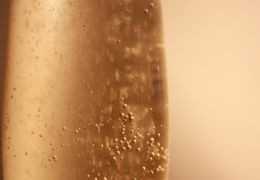 Where to buy Deutz champagne ?
Where to buy Deutz champagne ?

